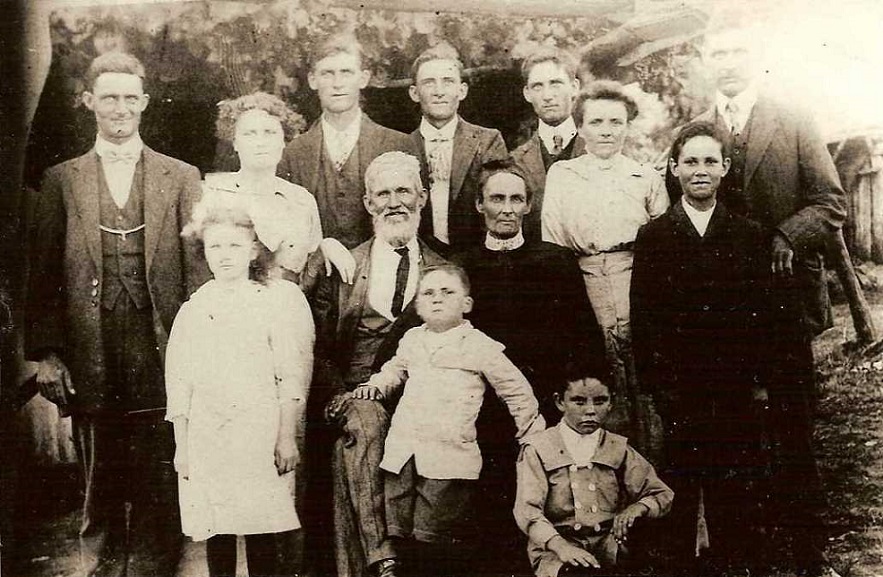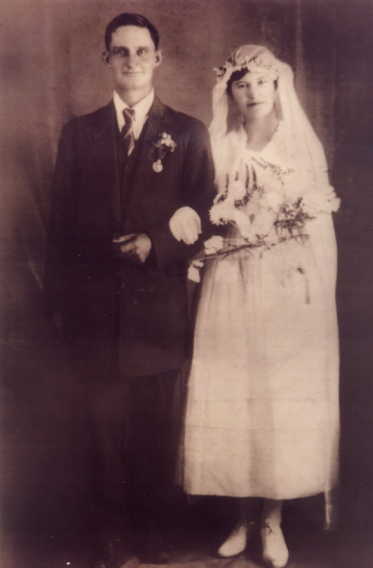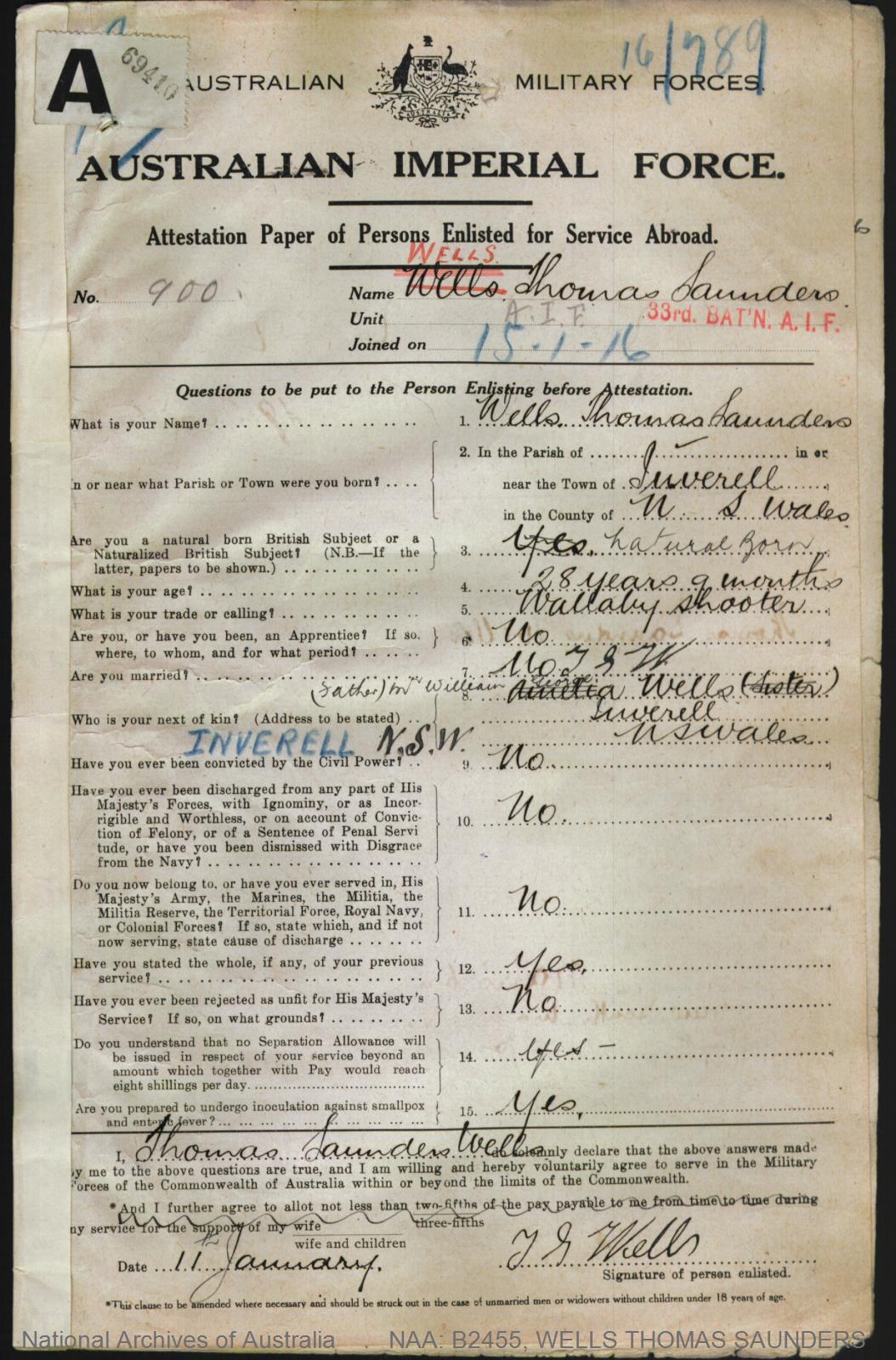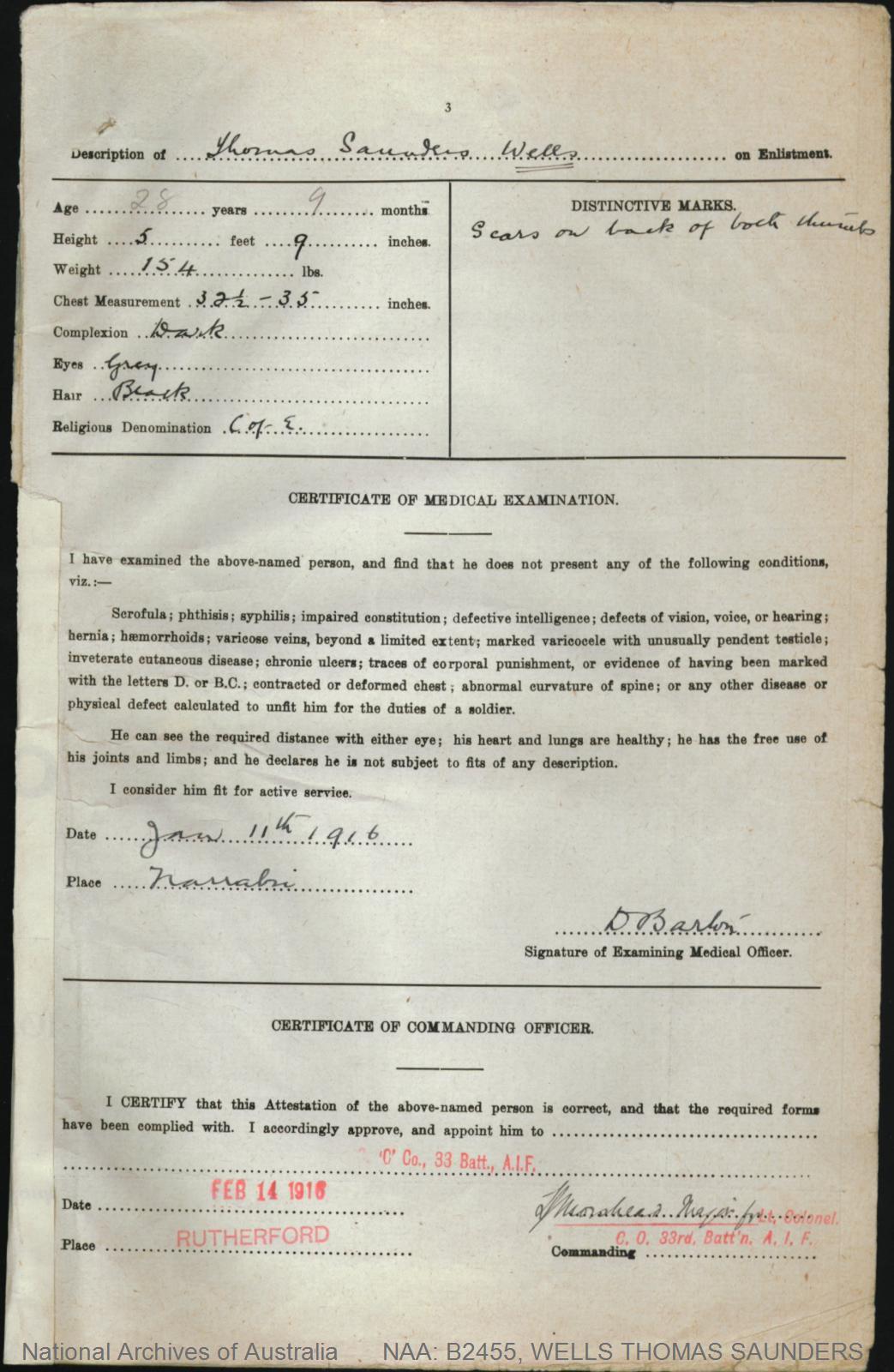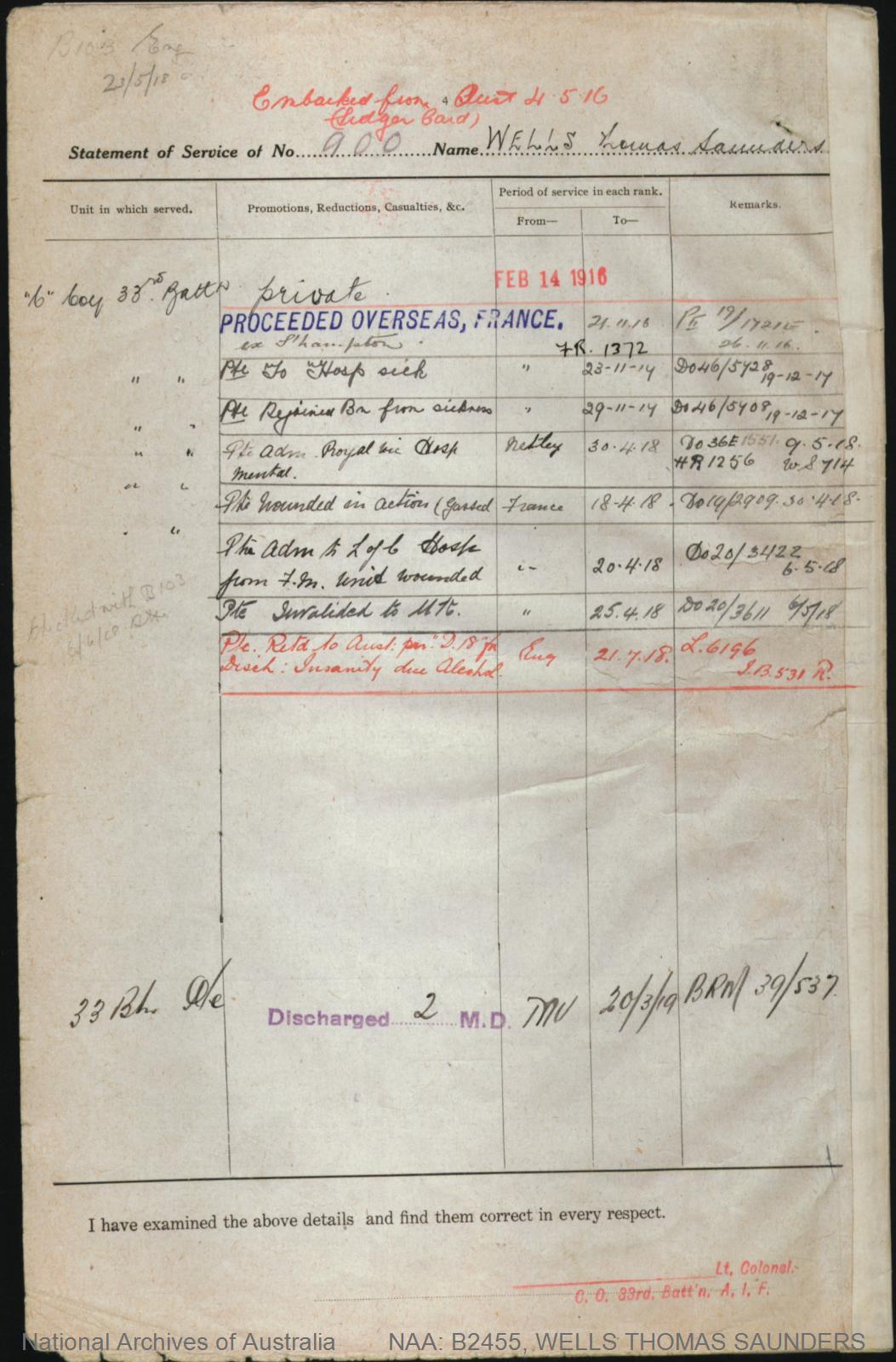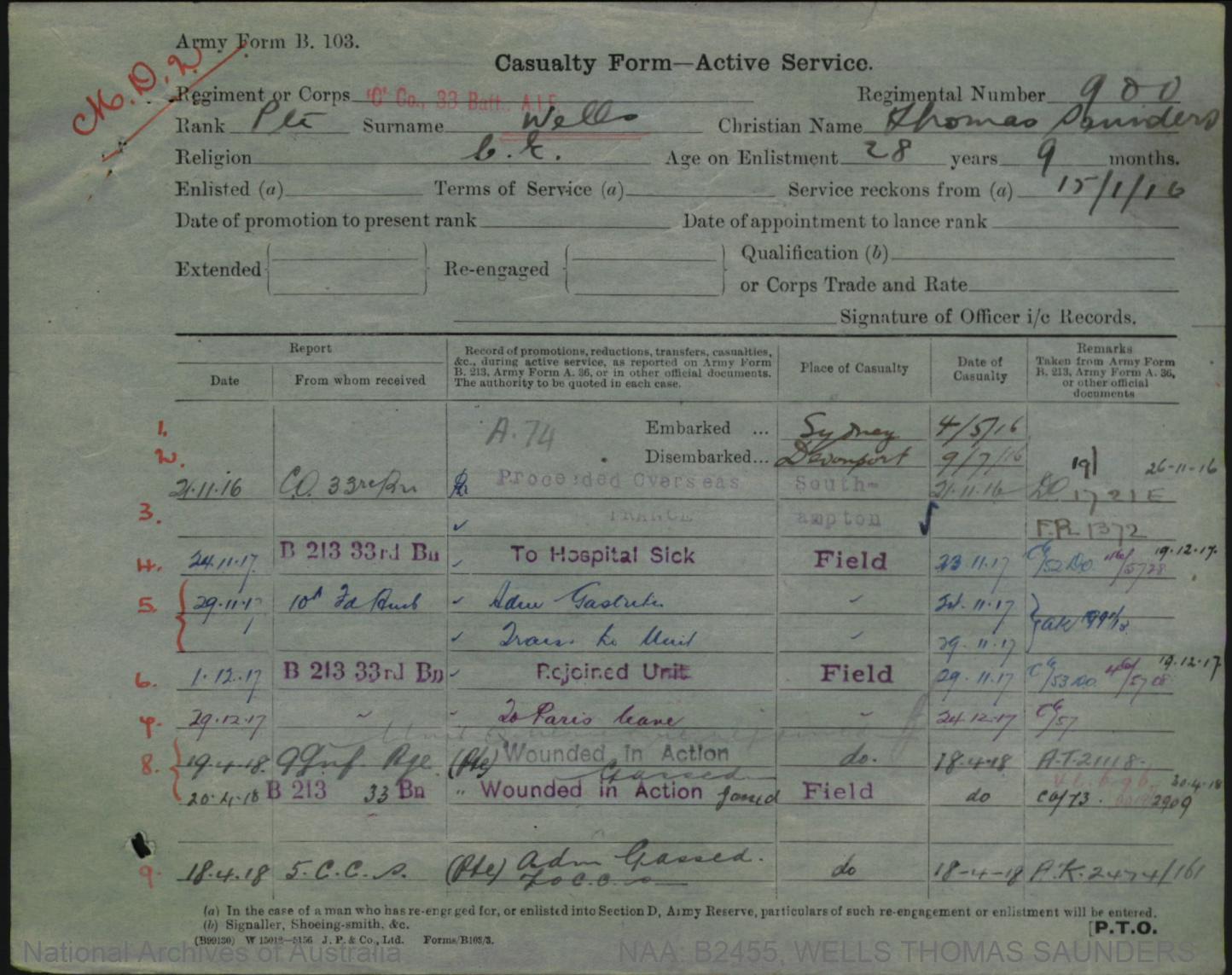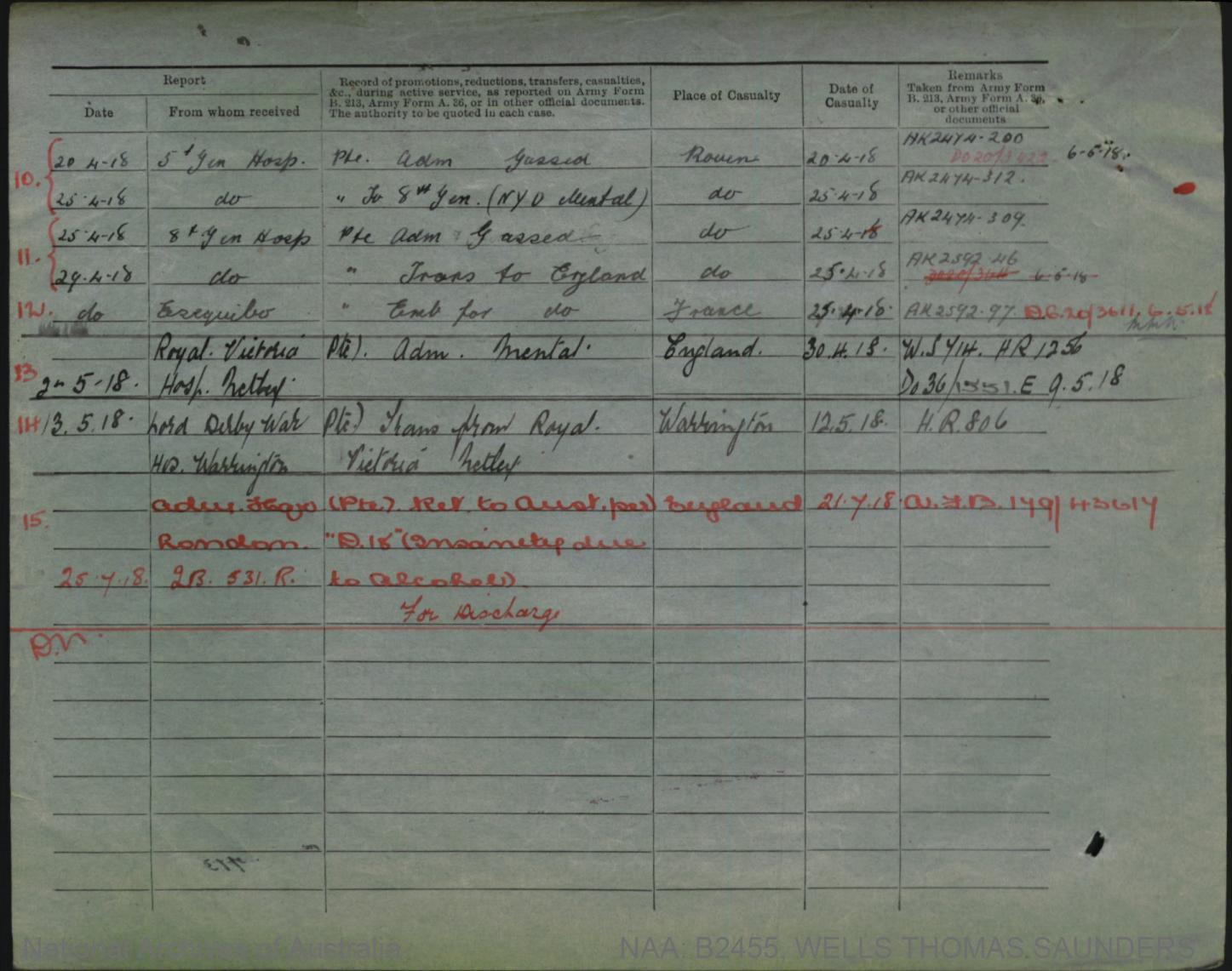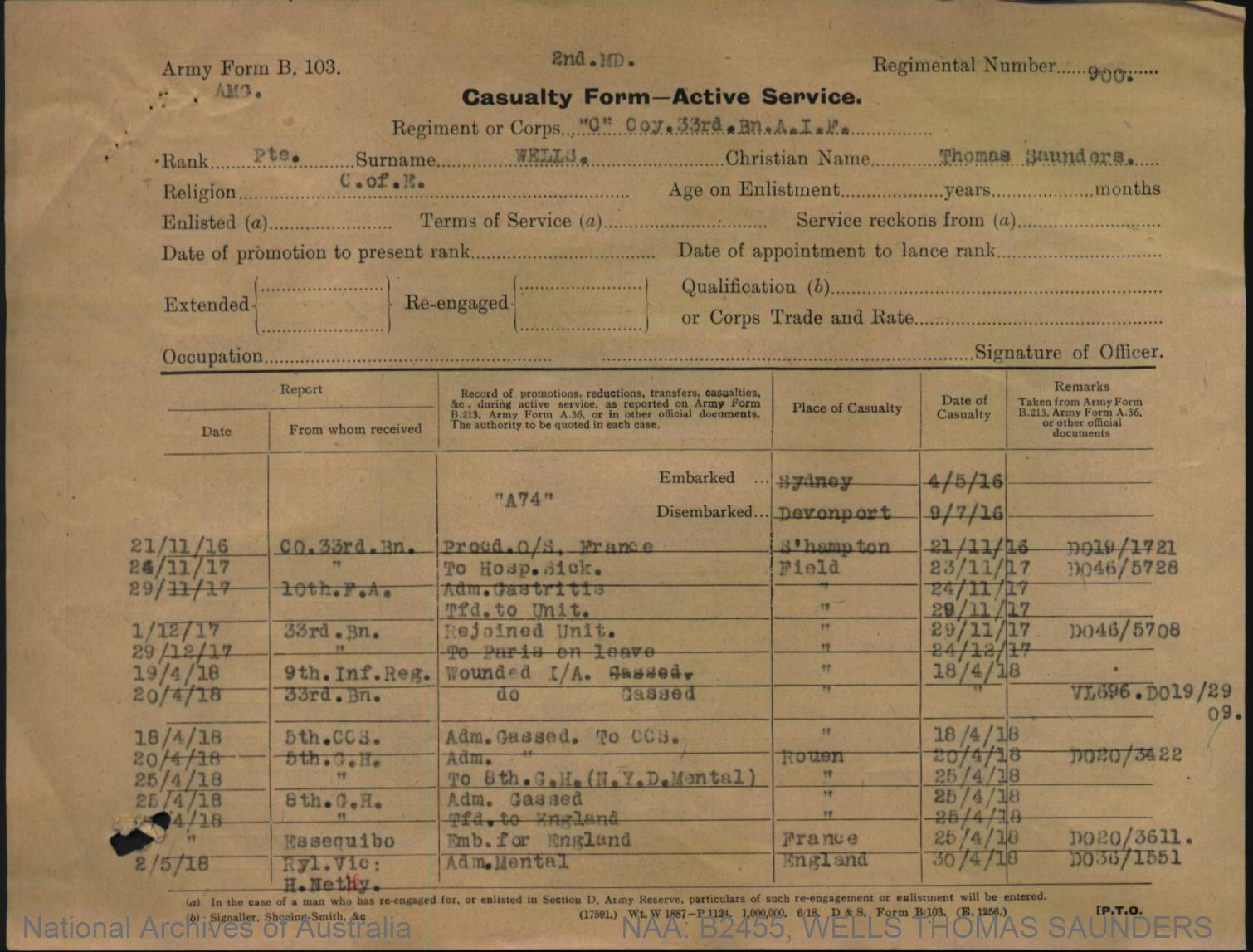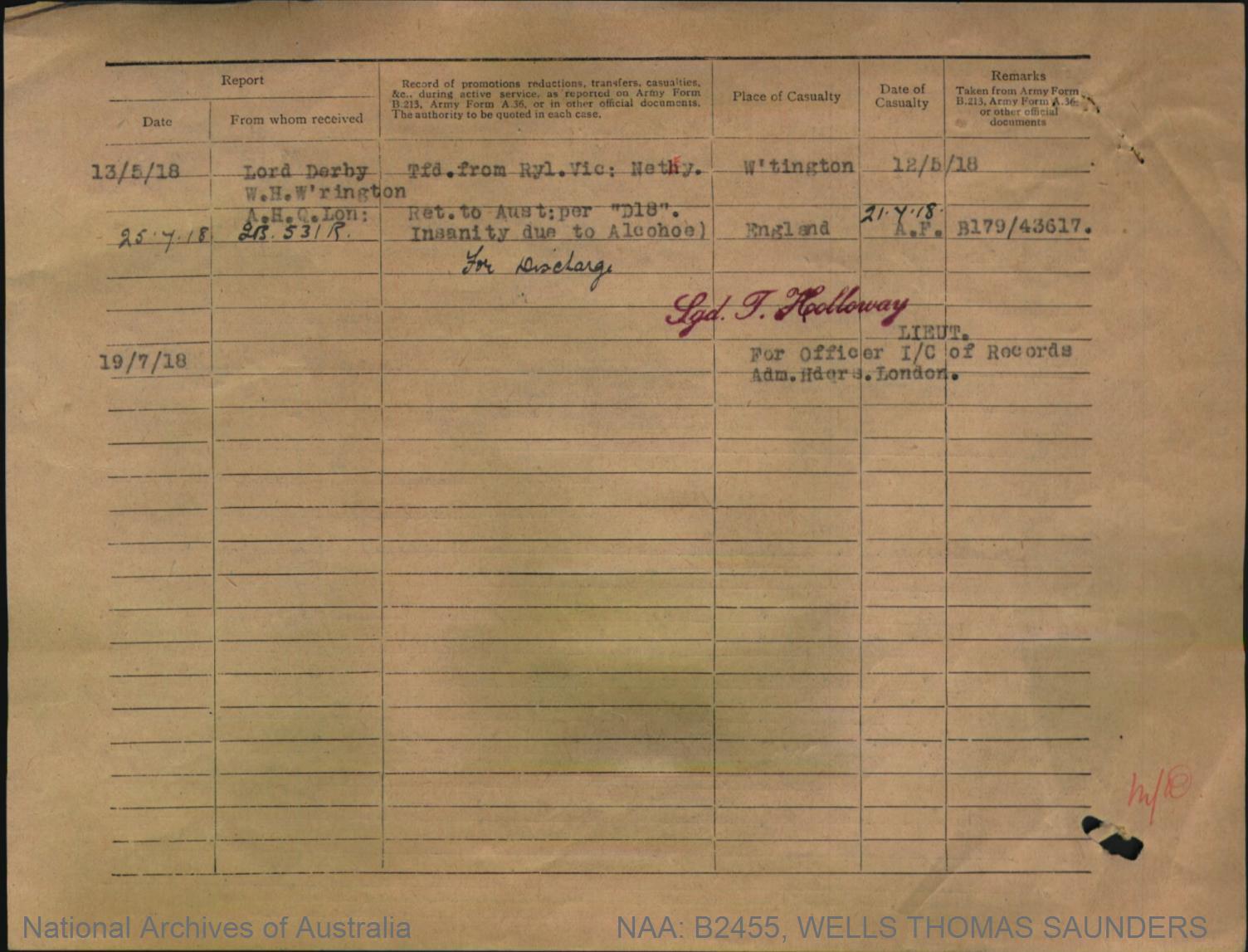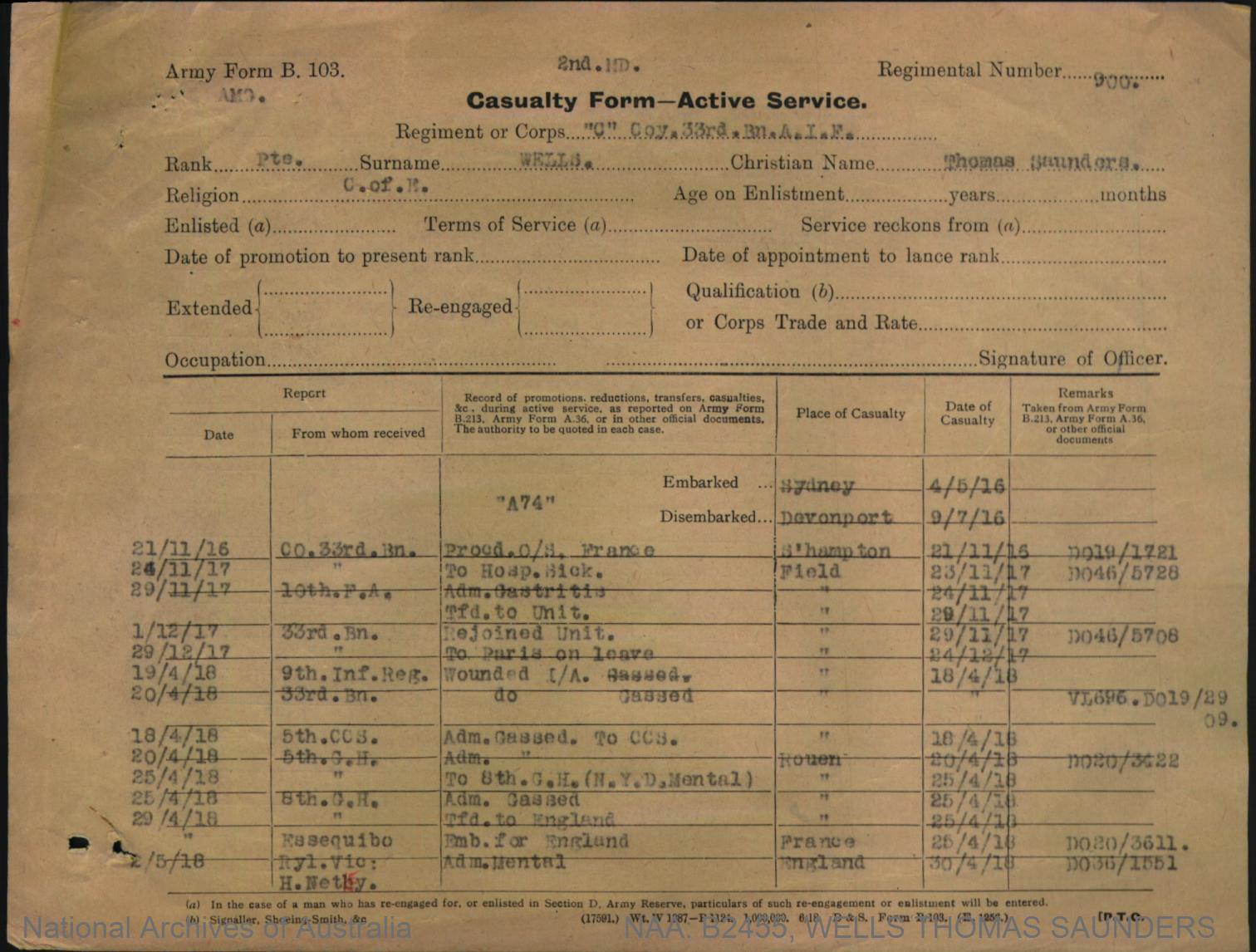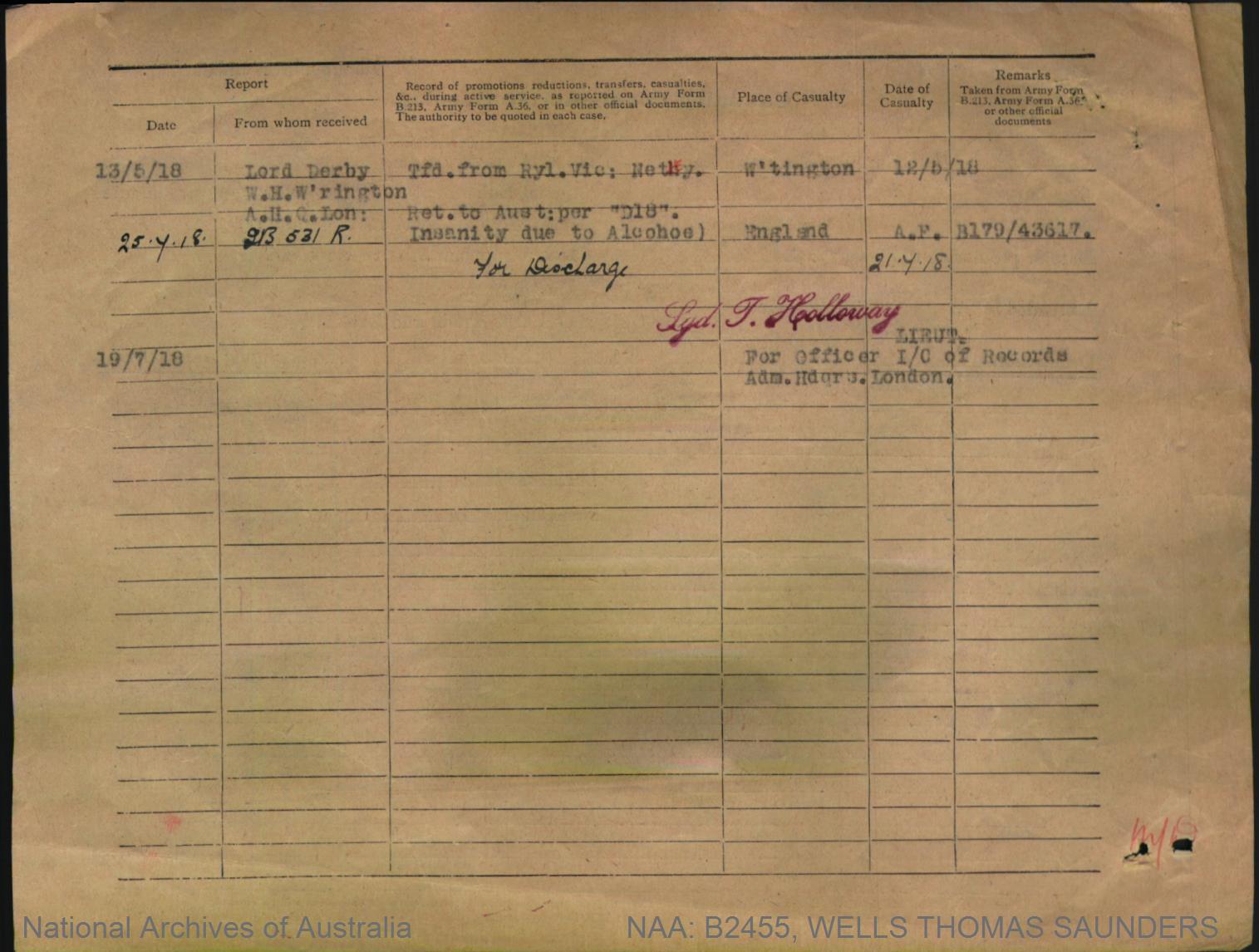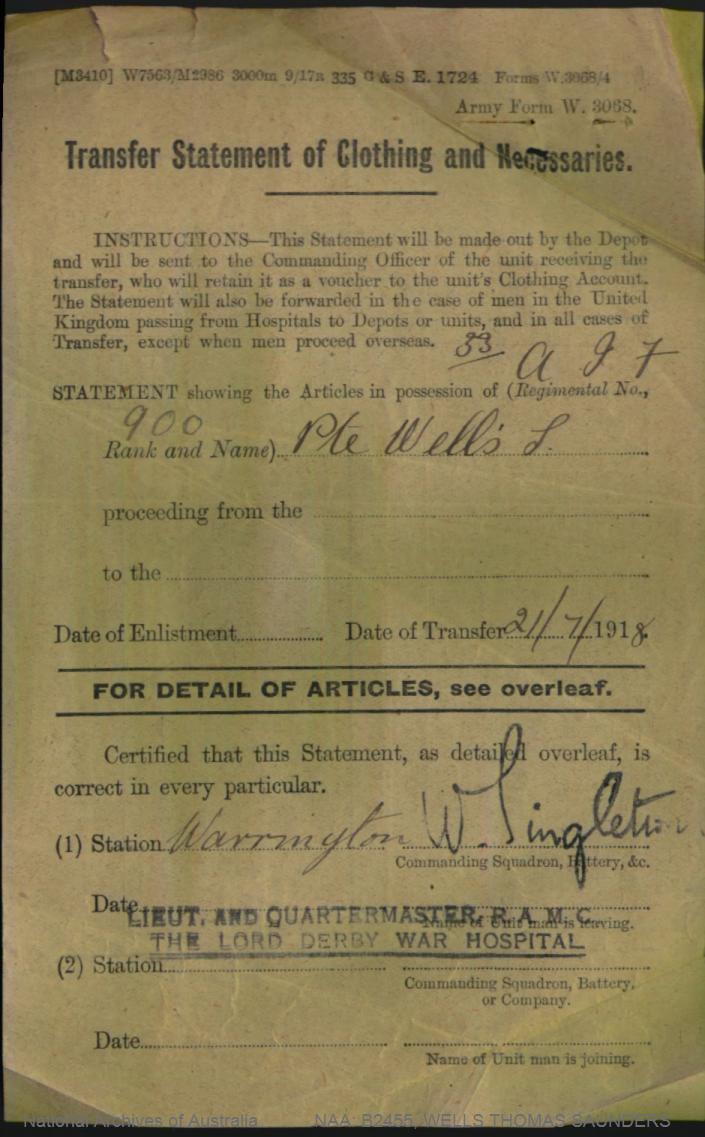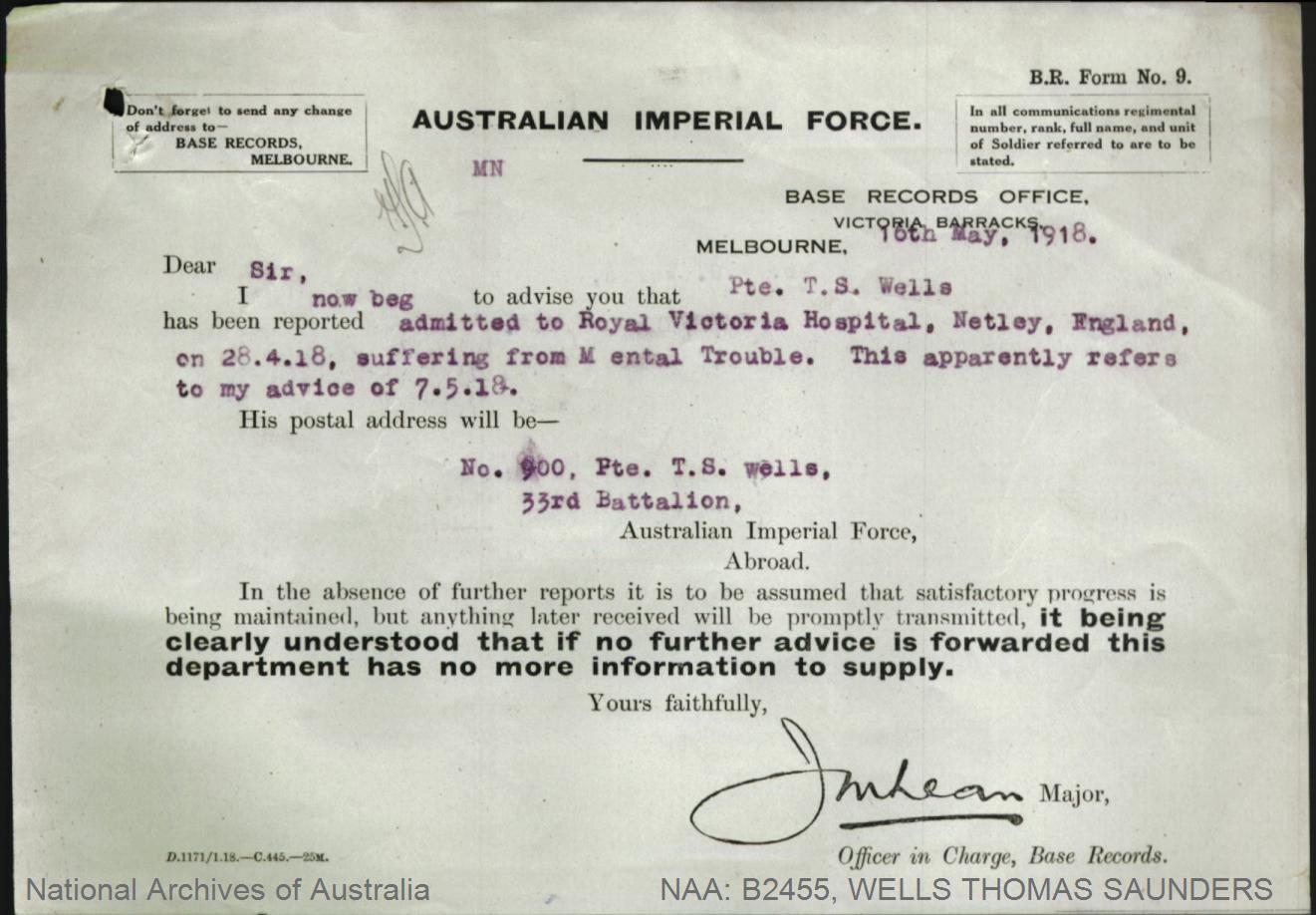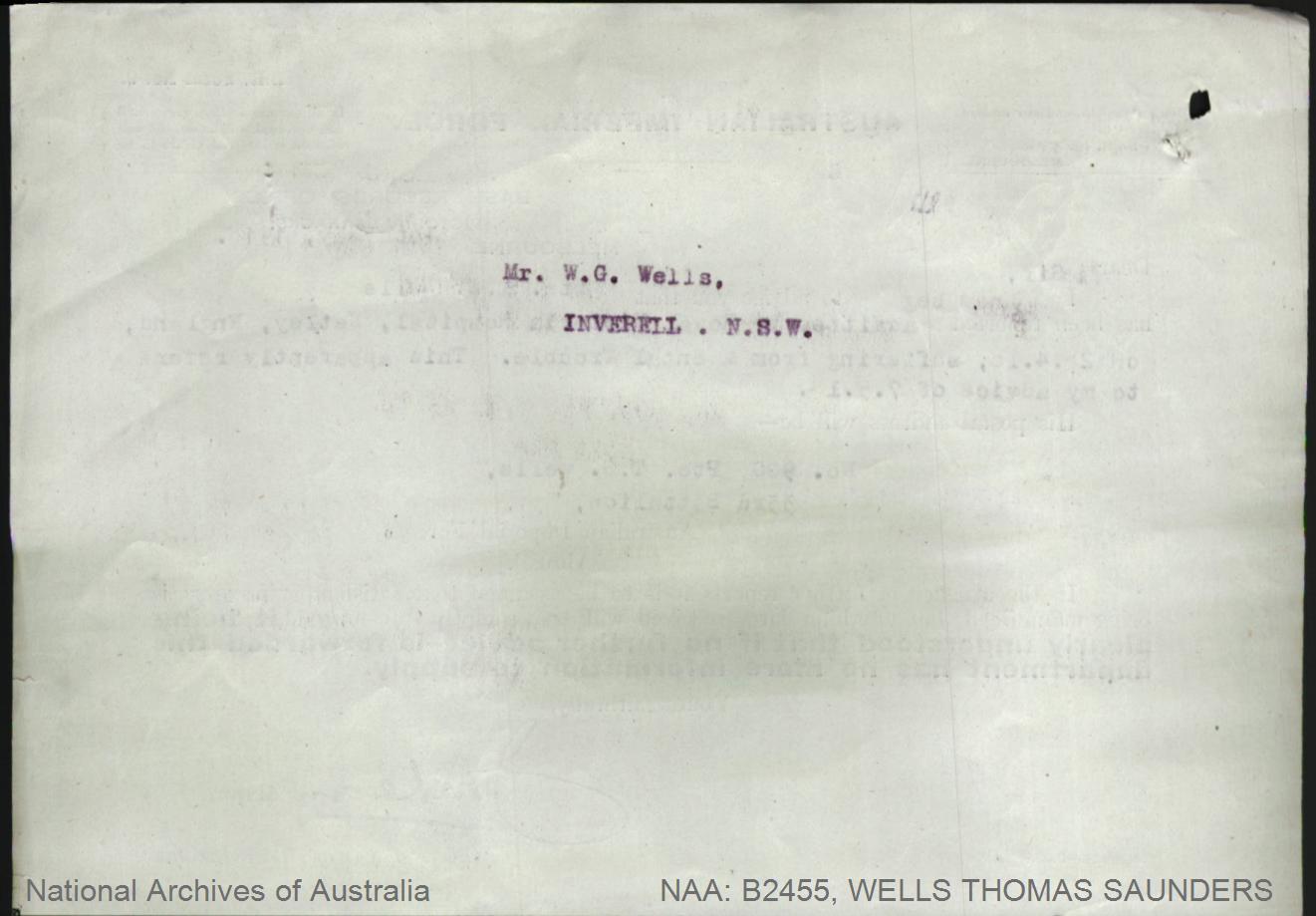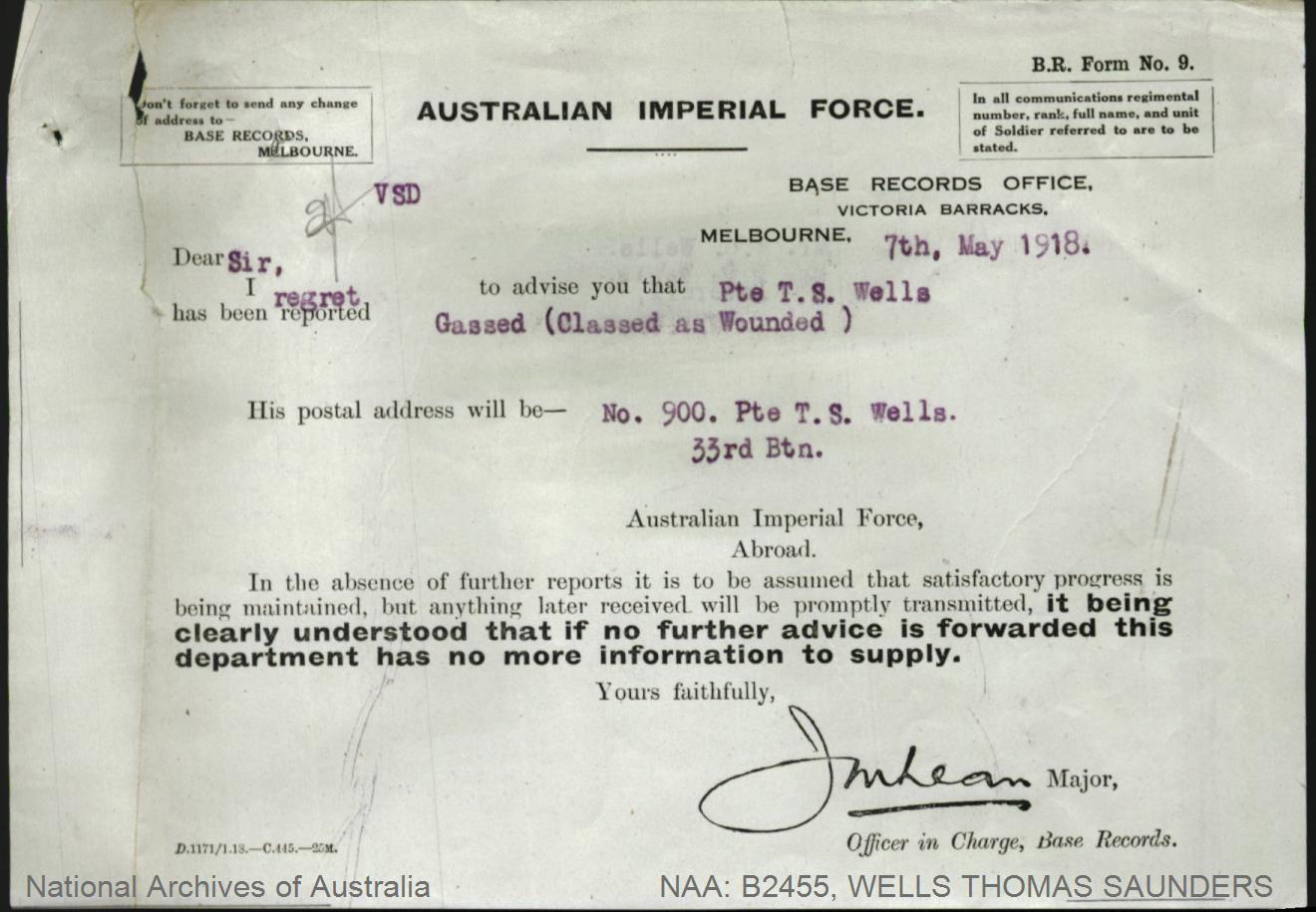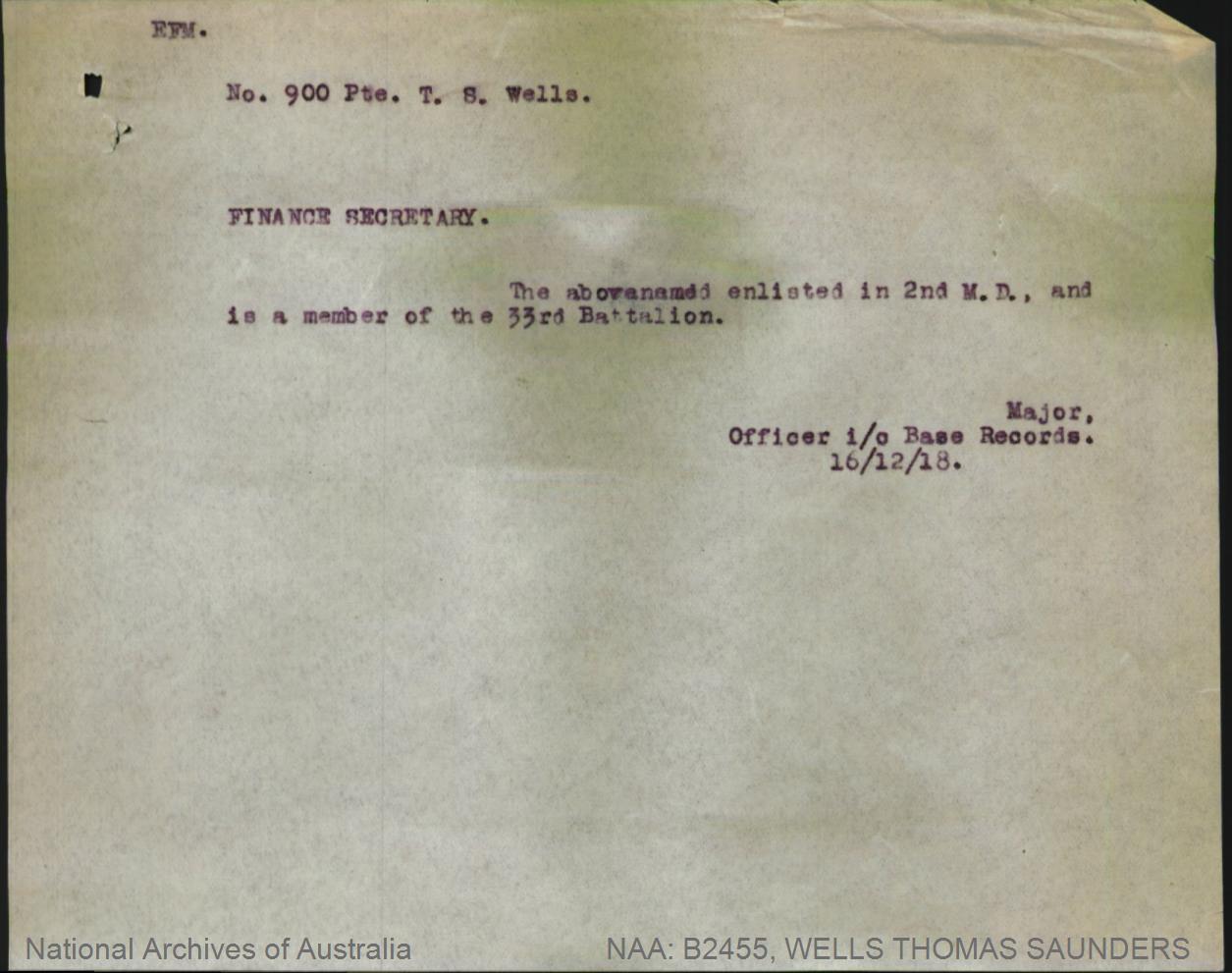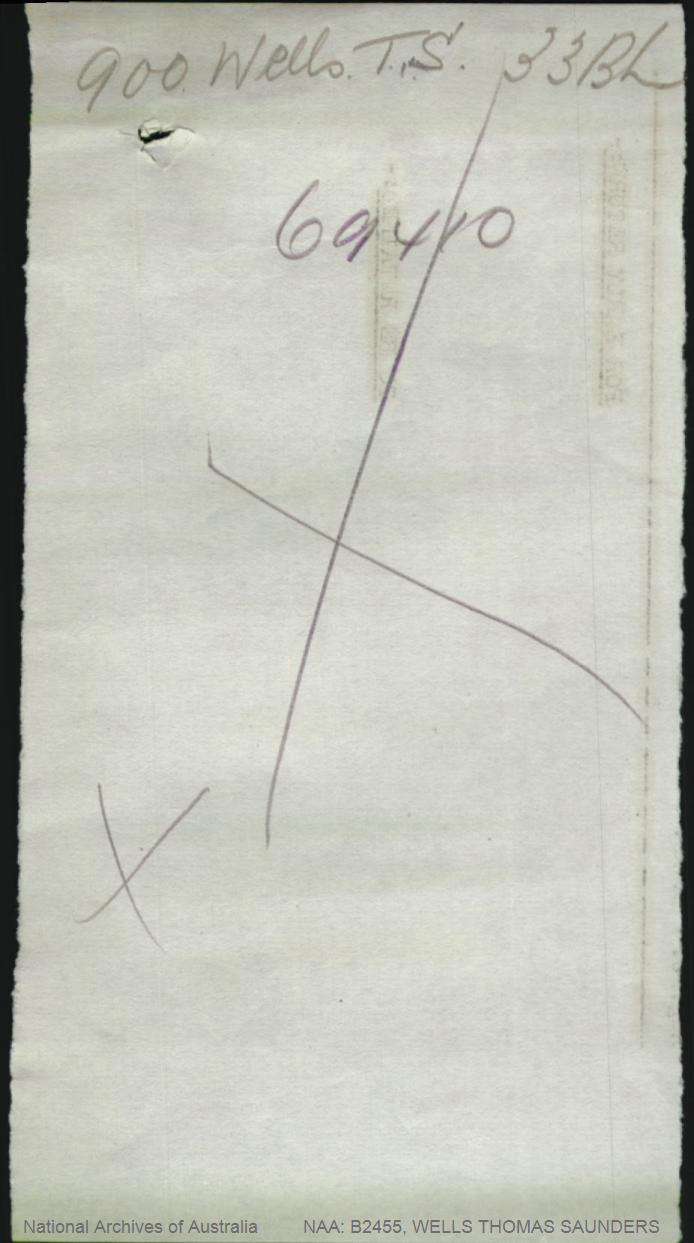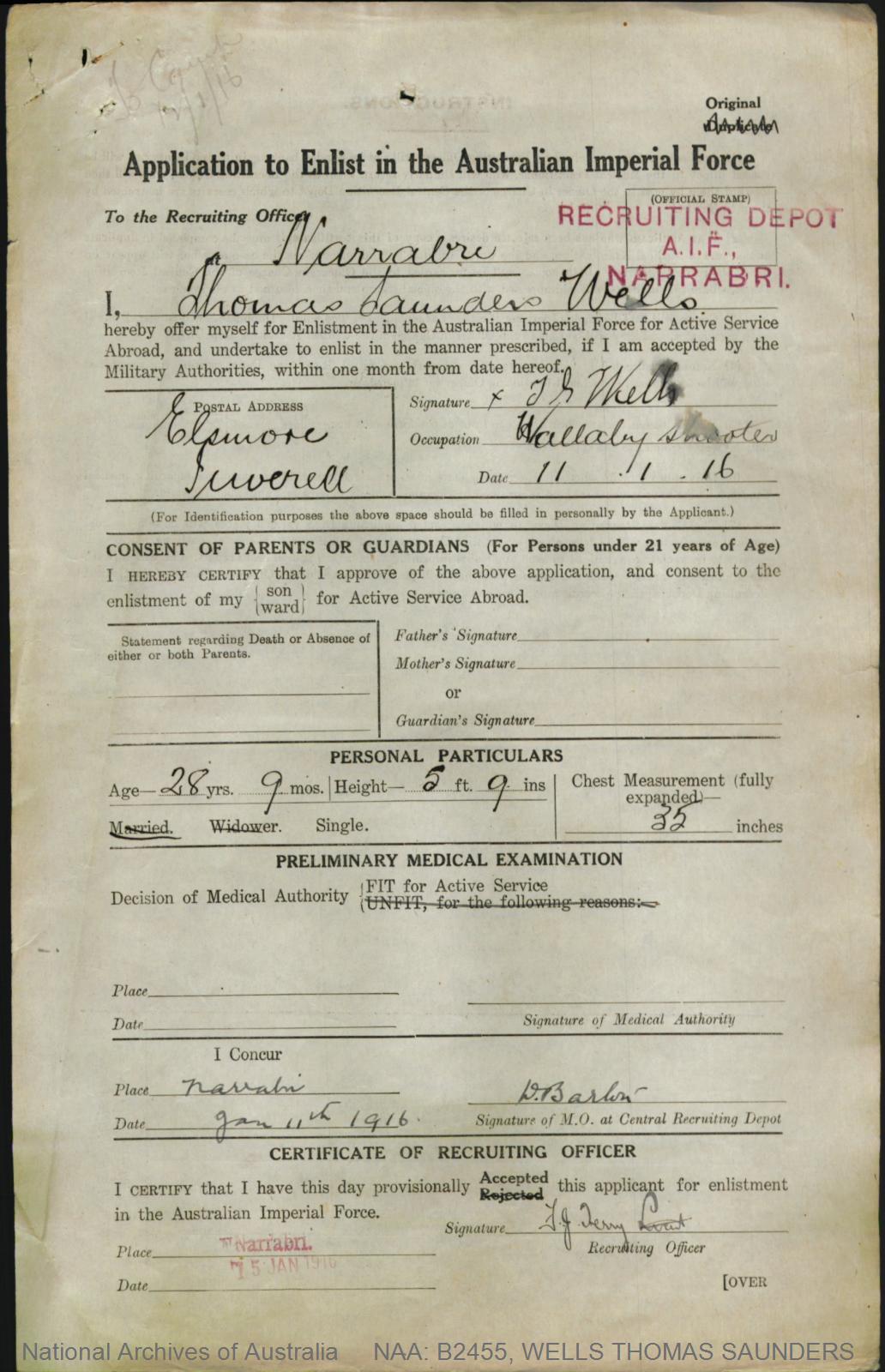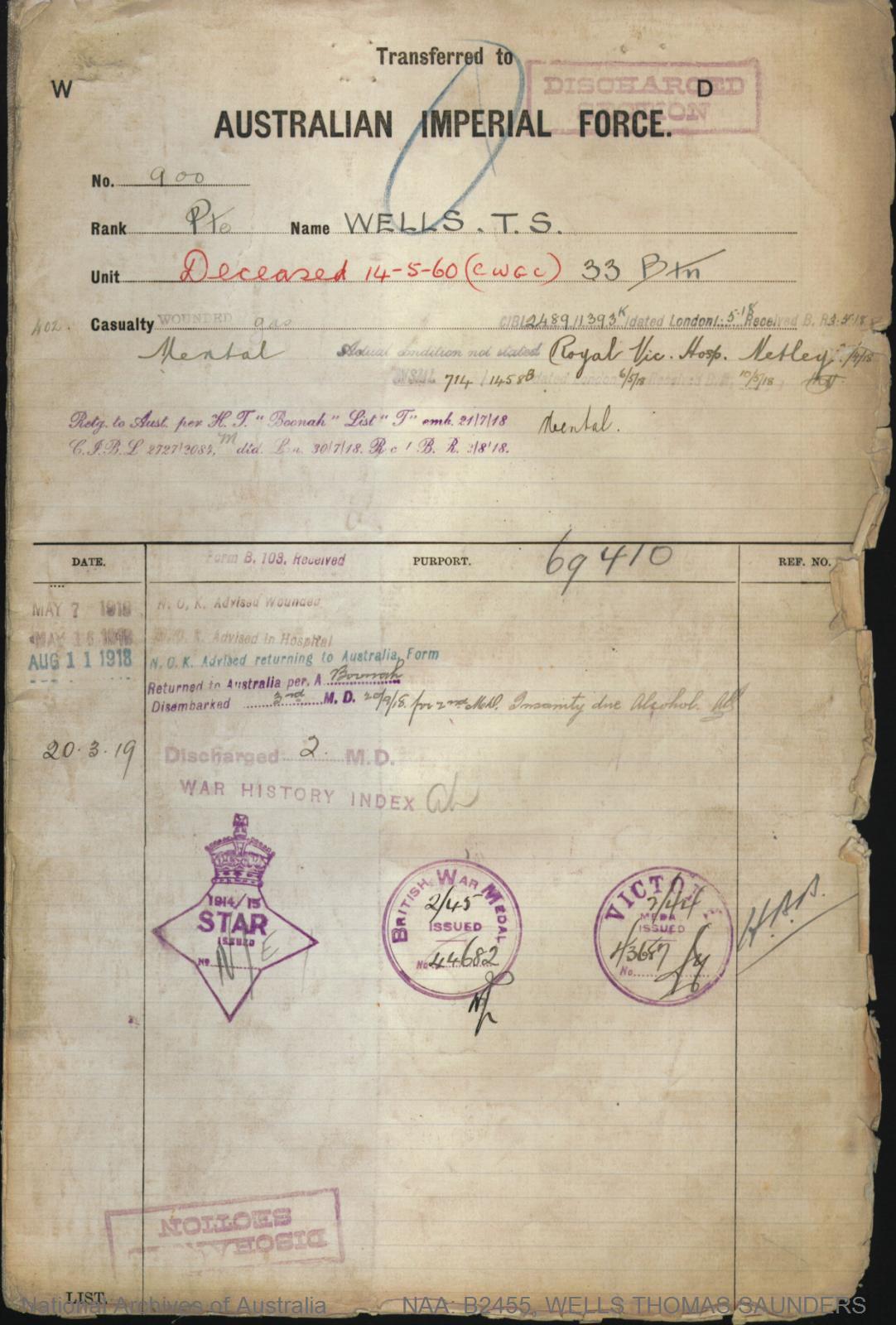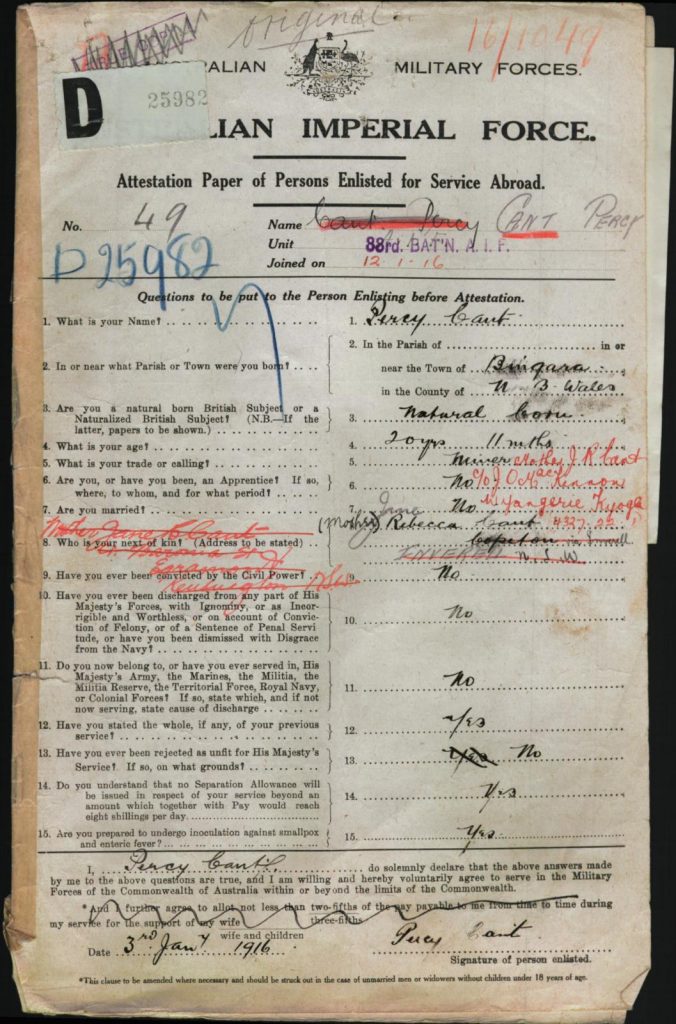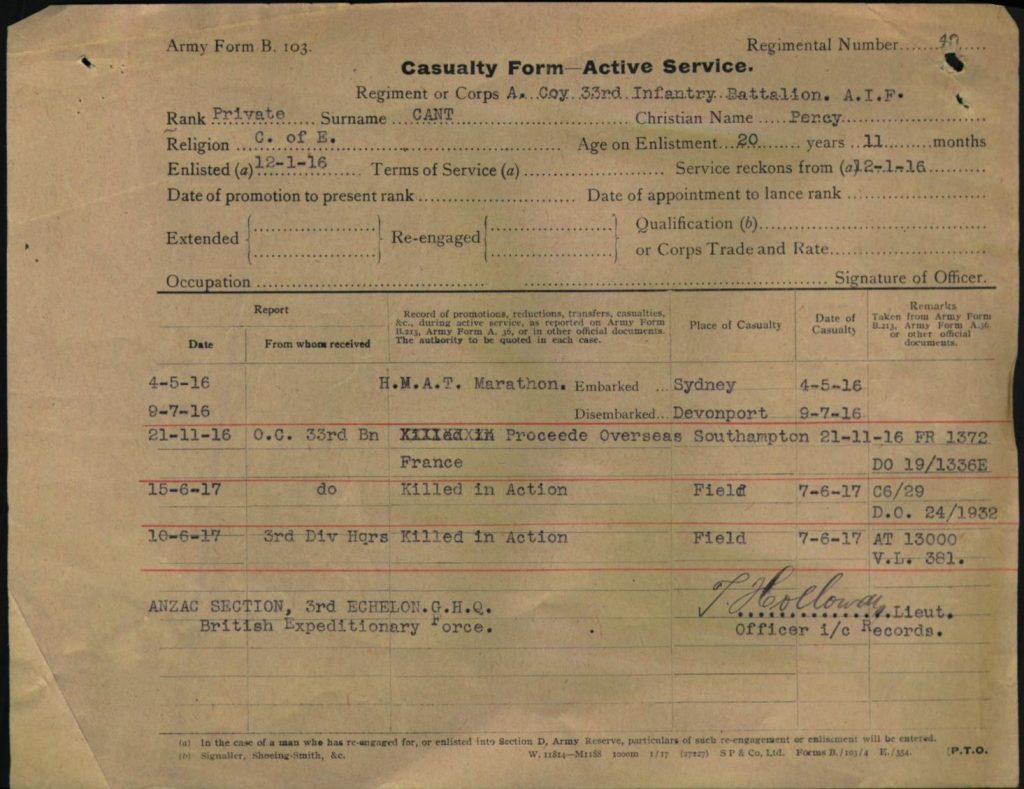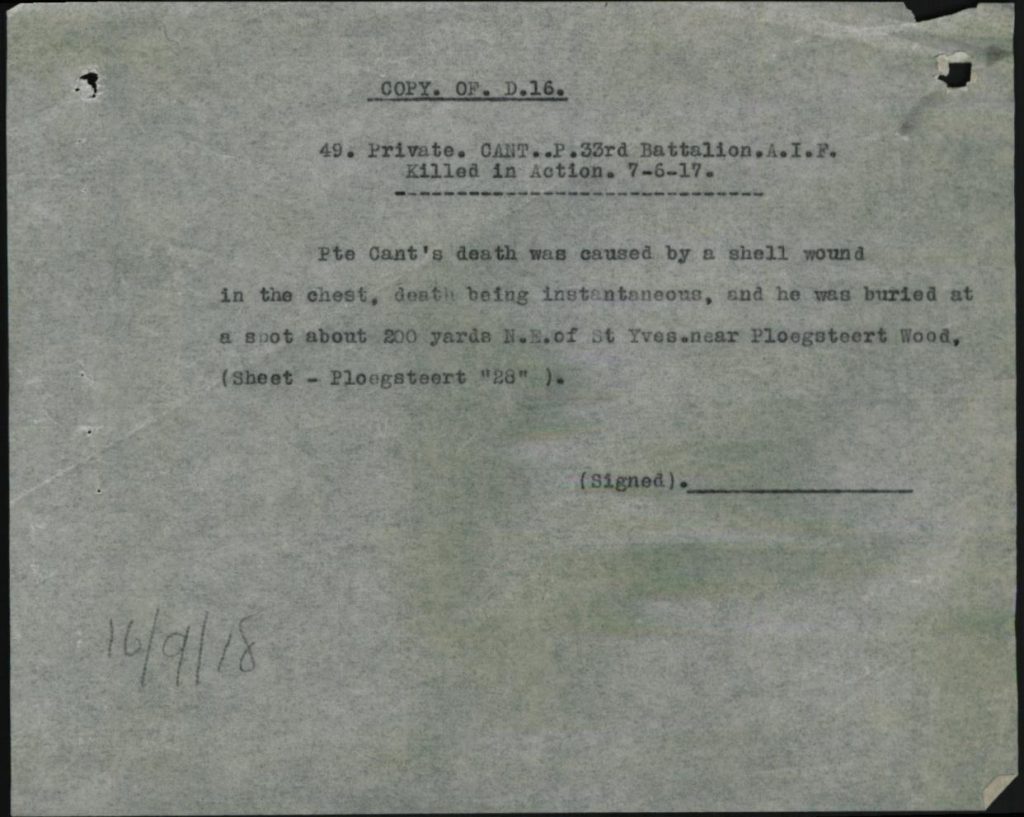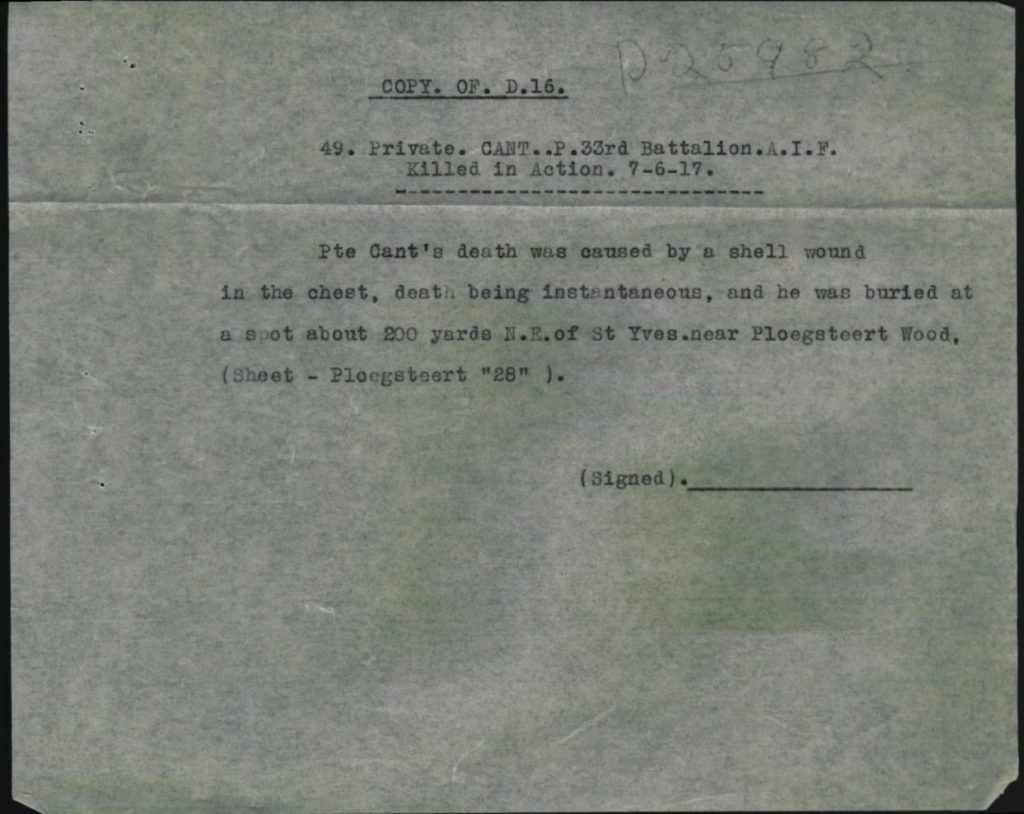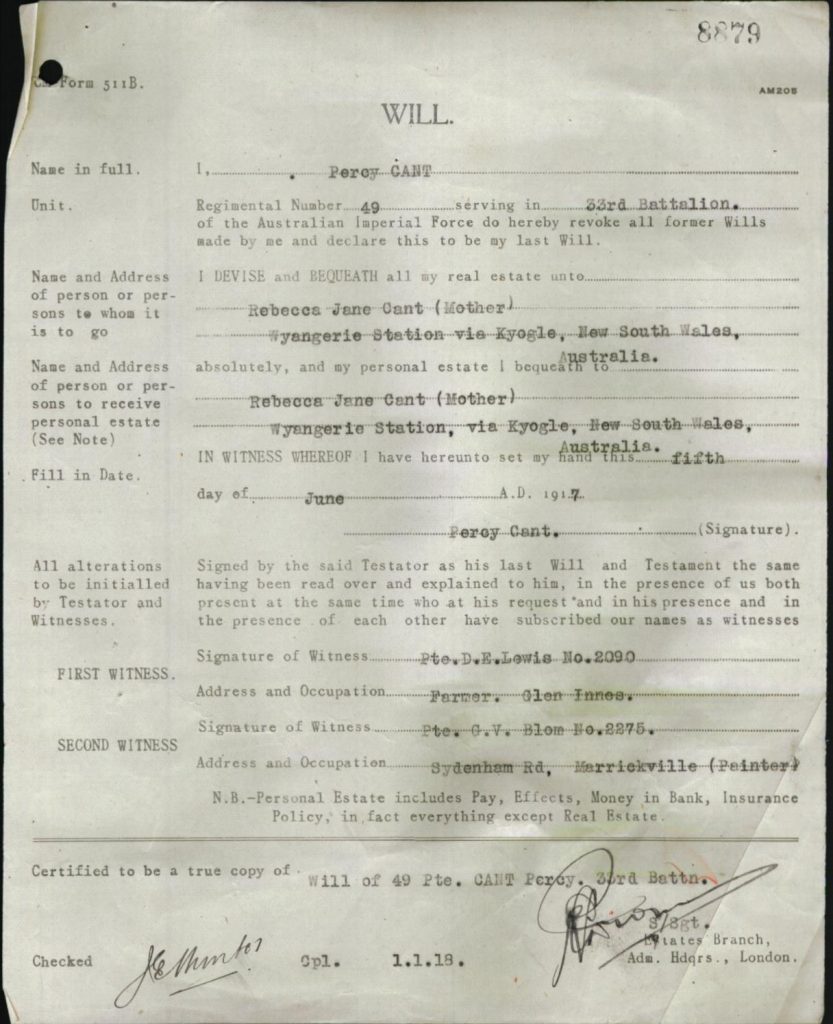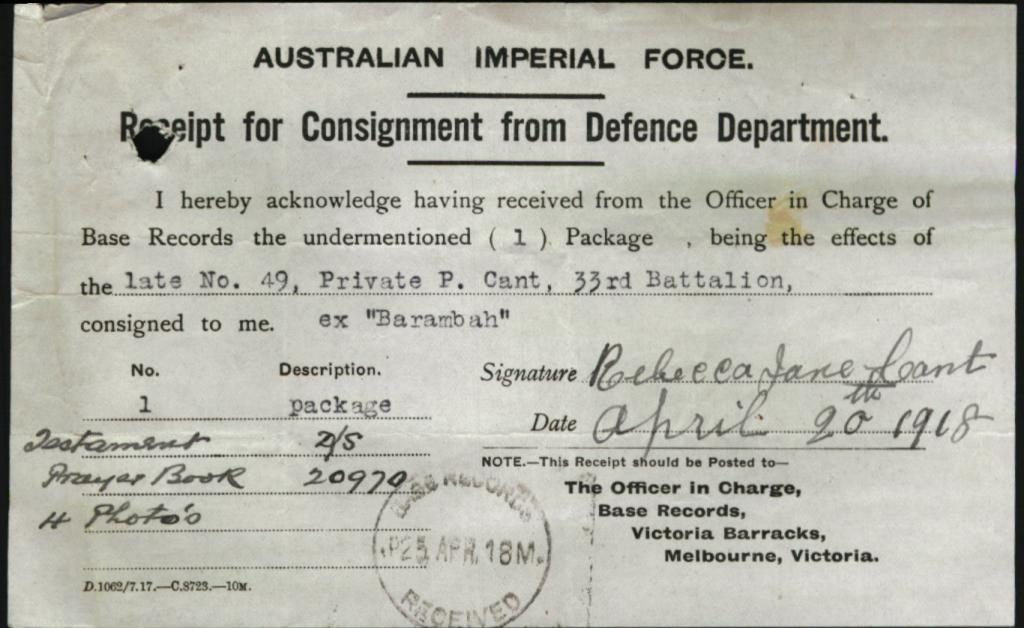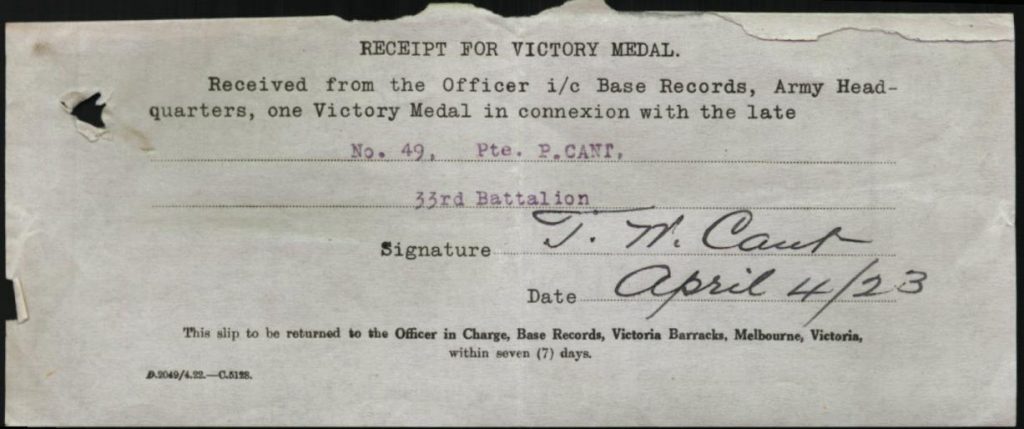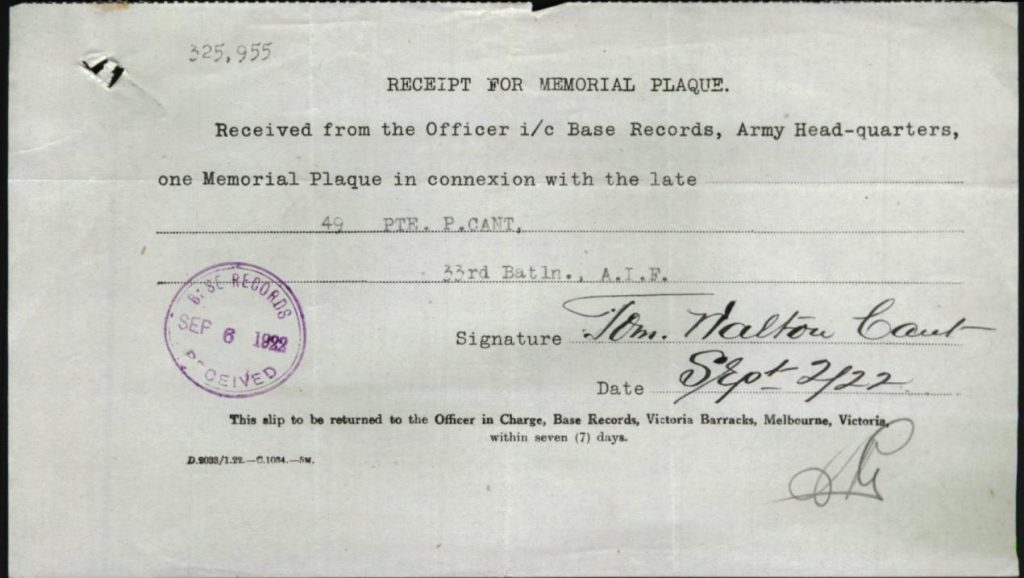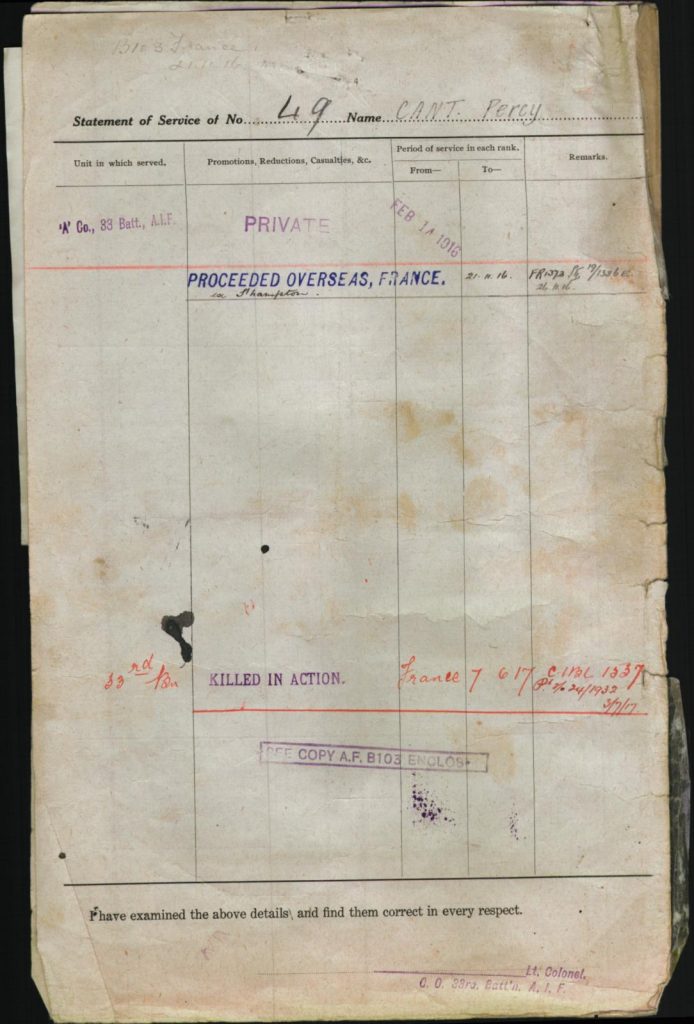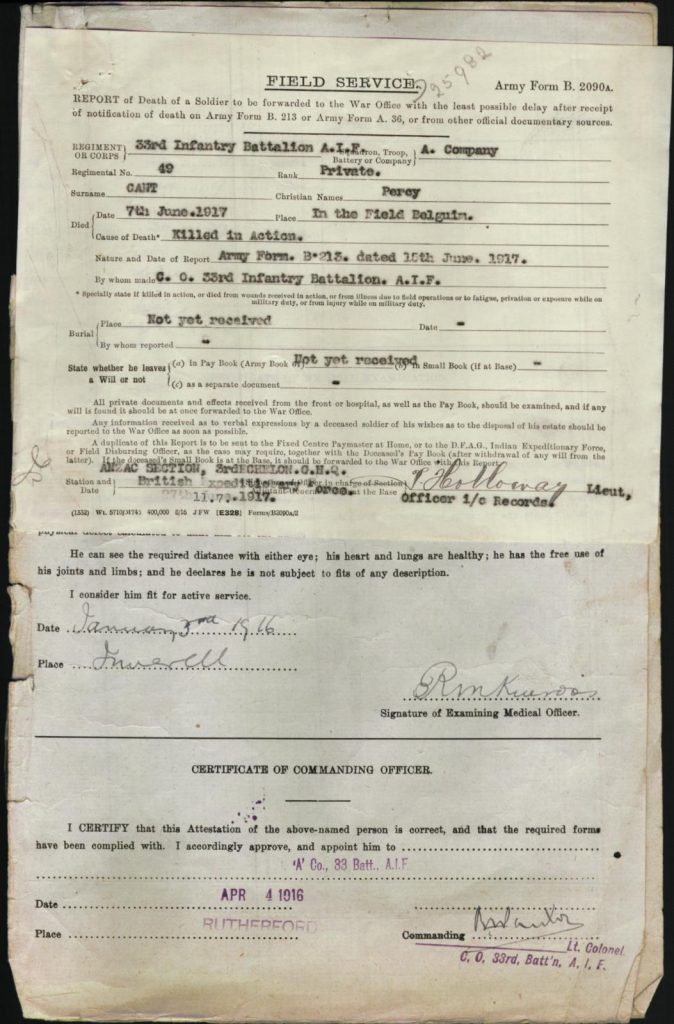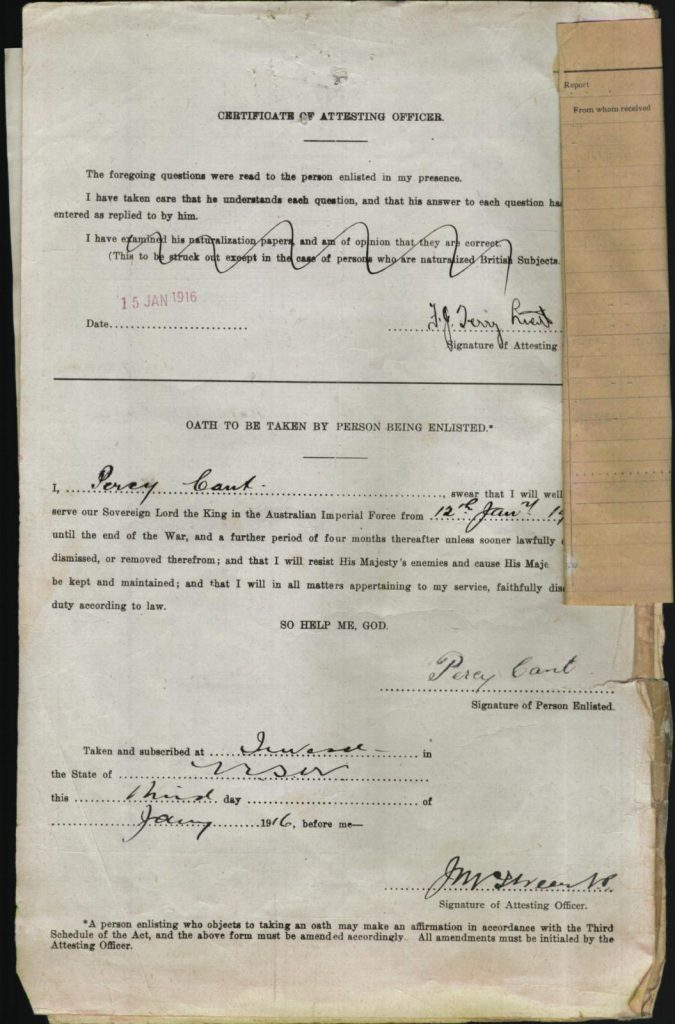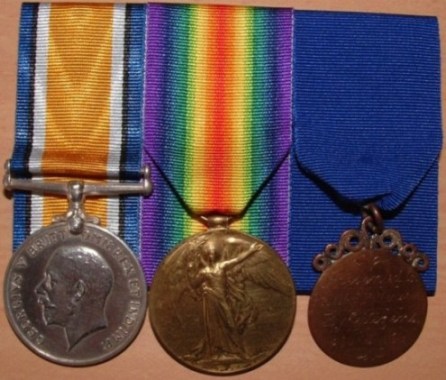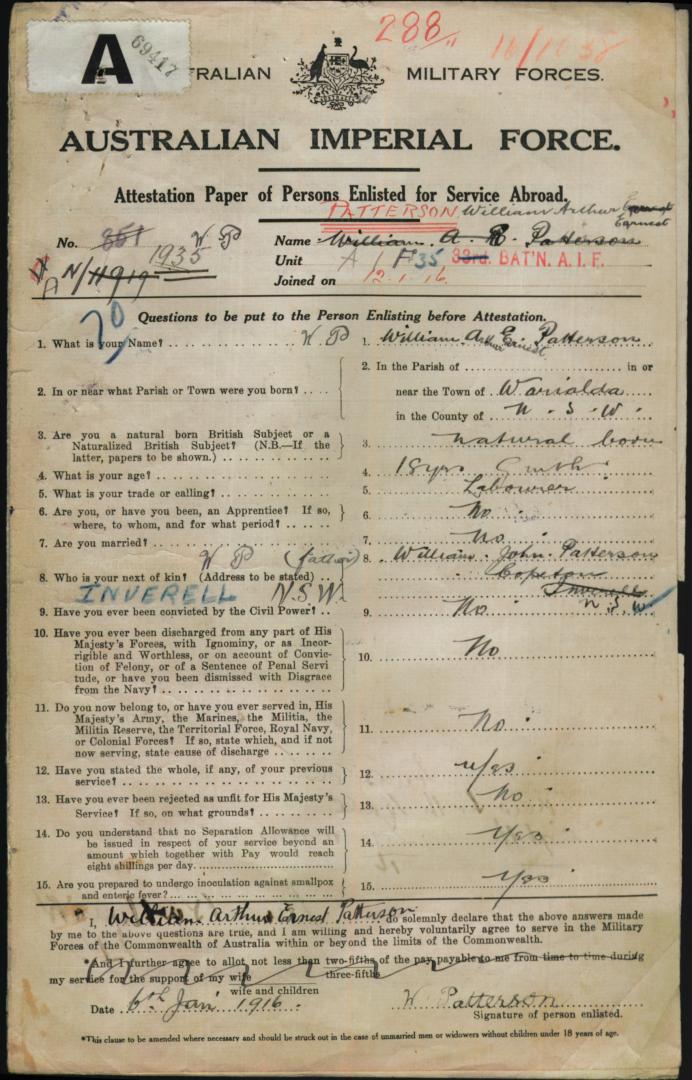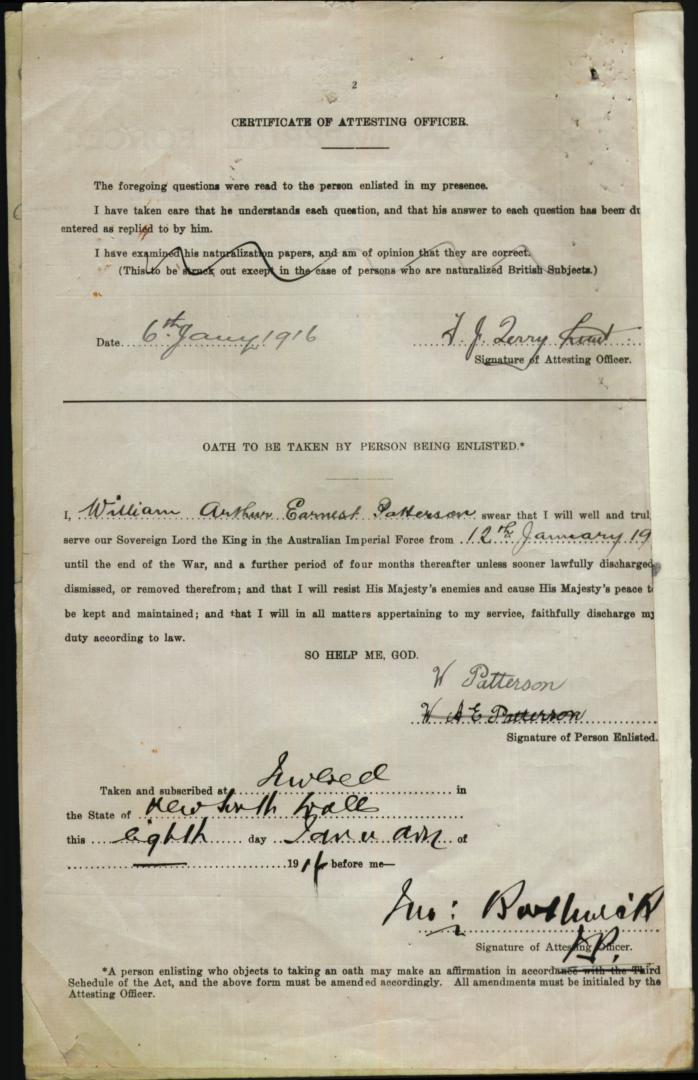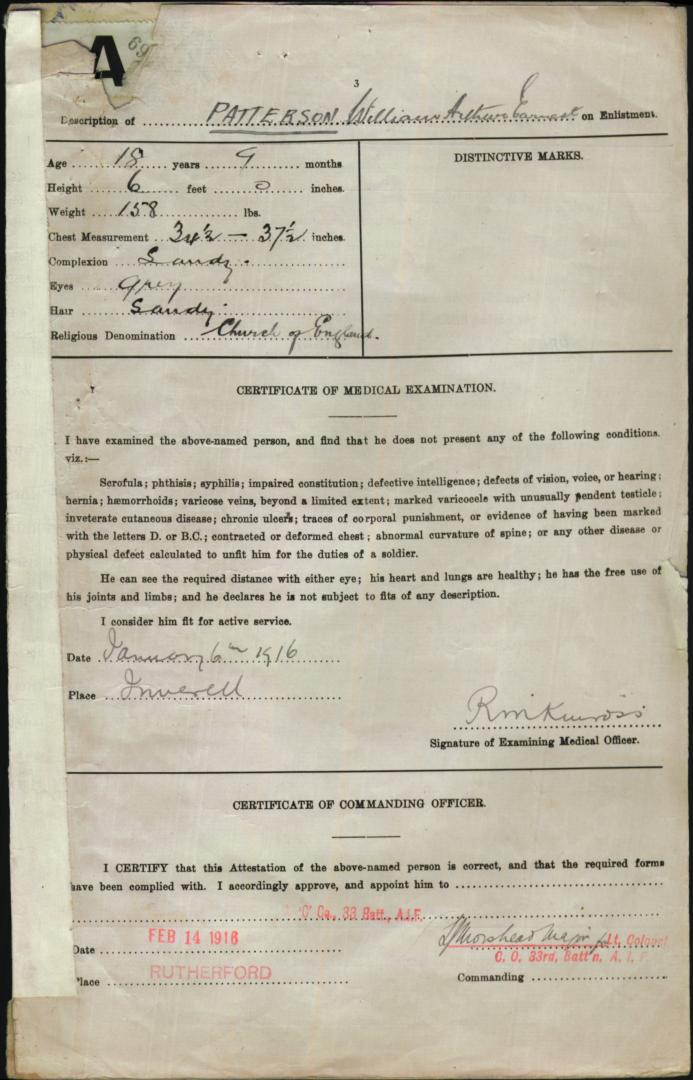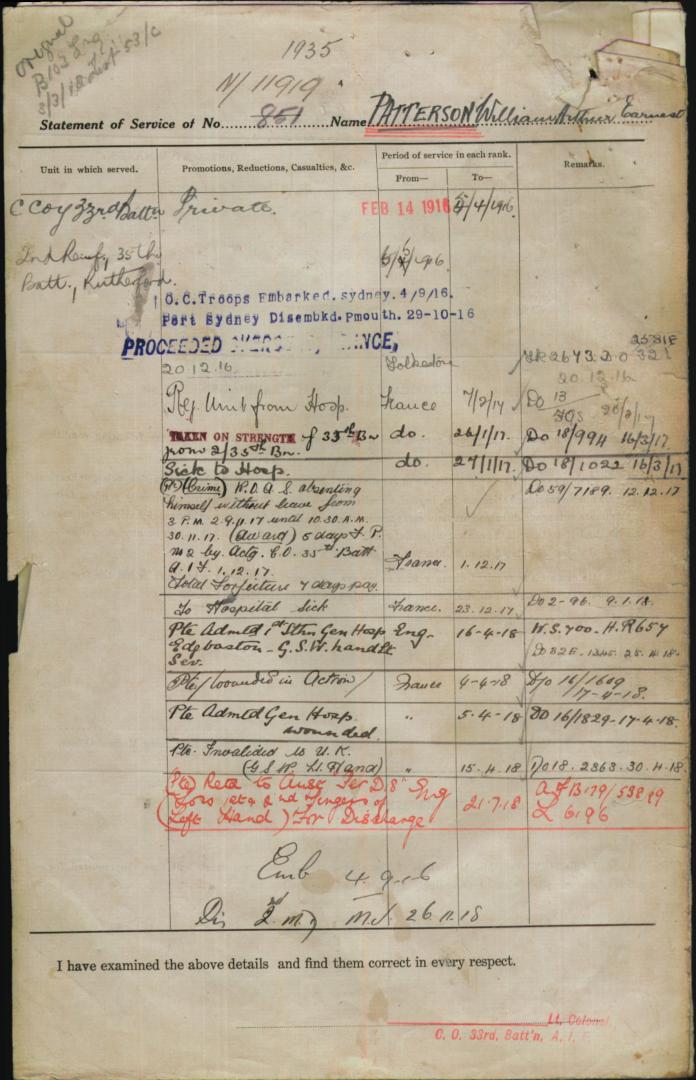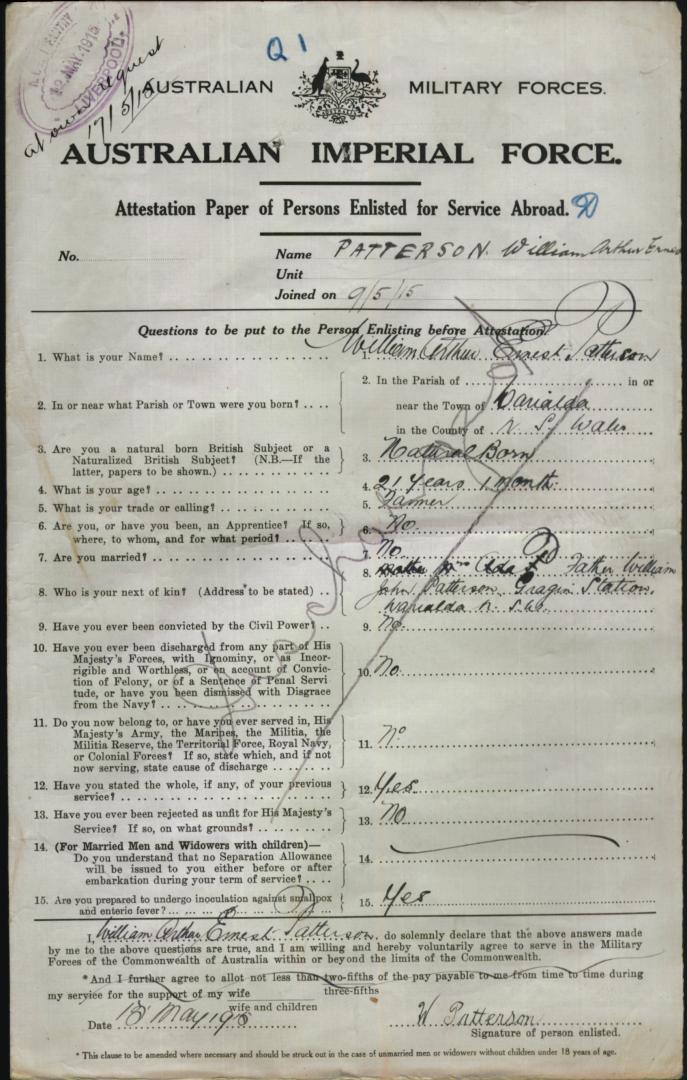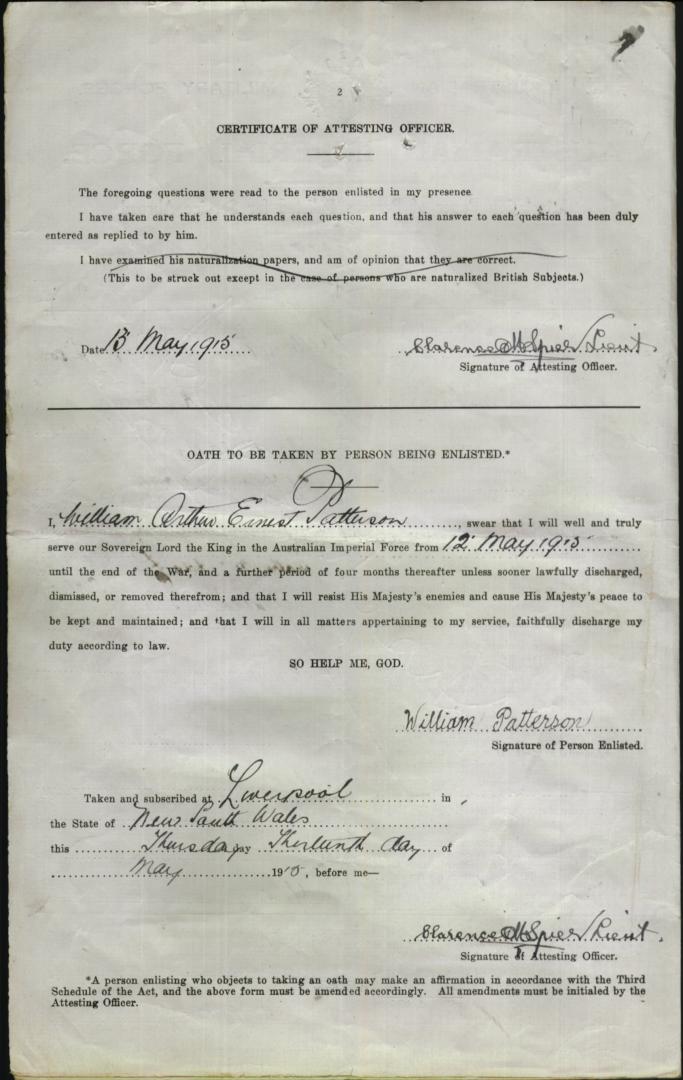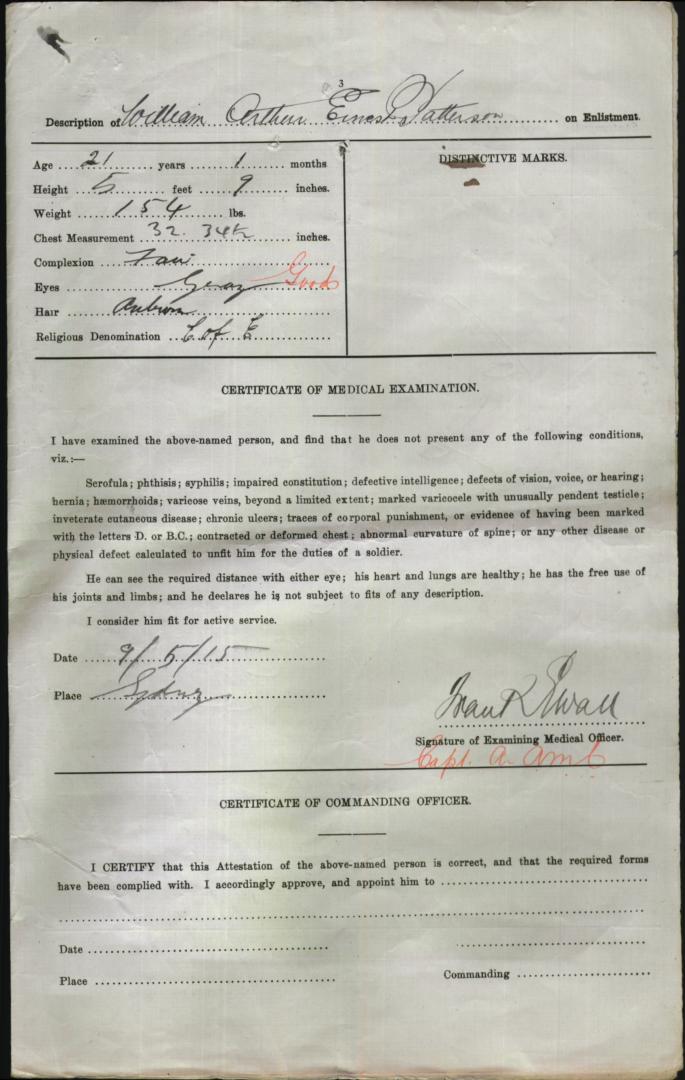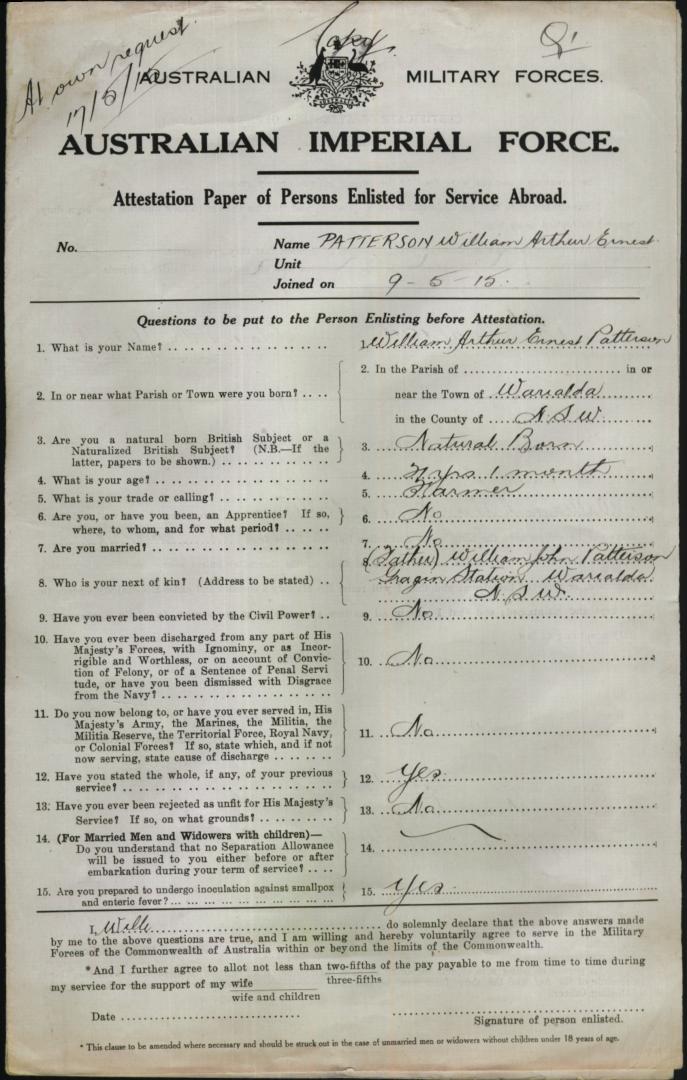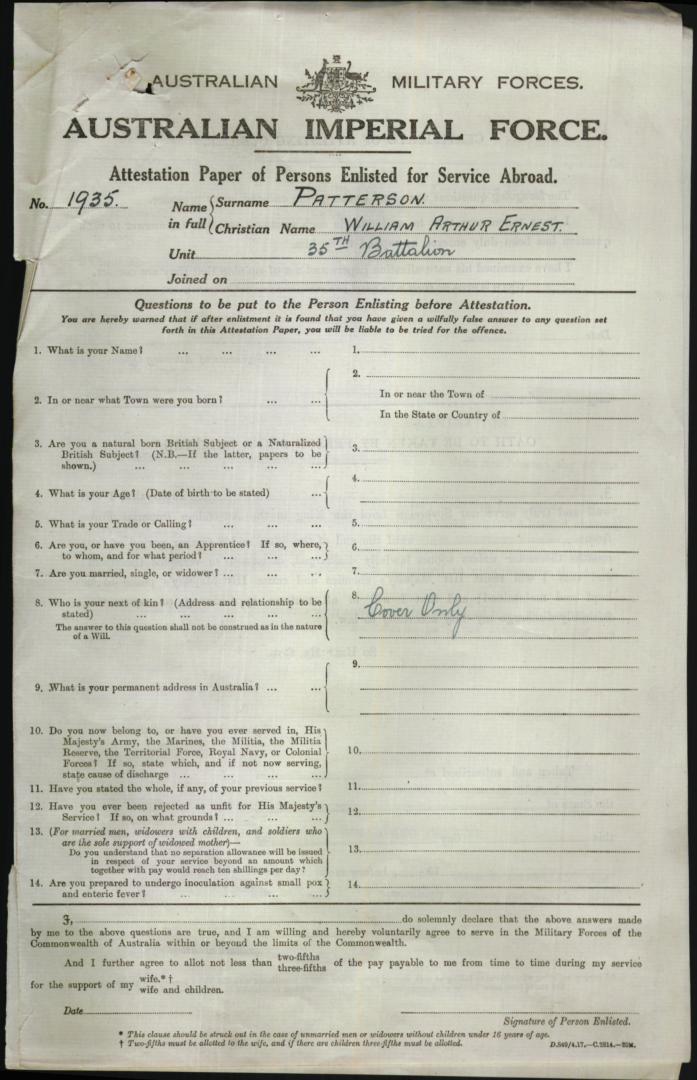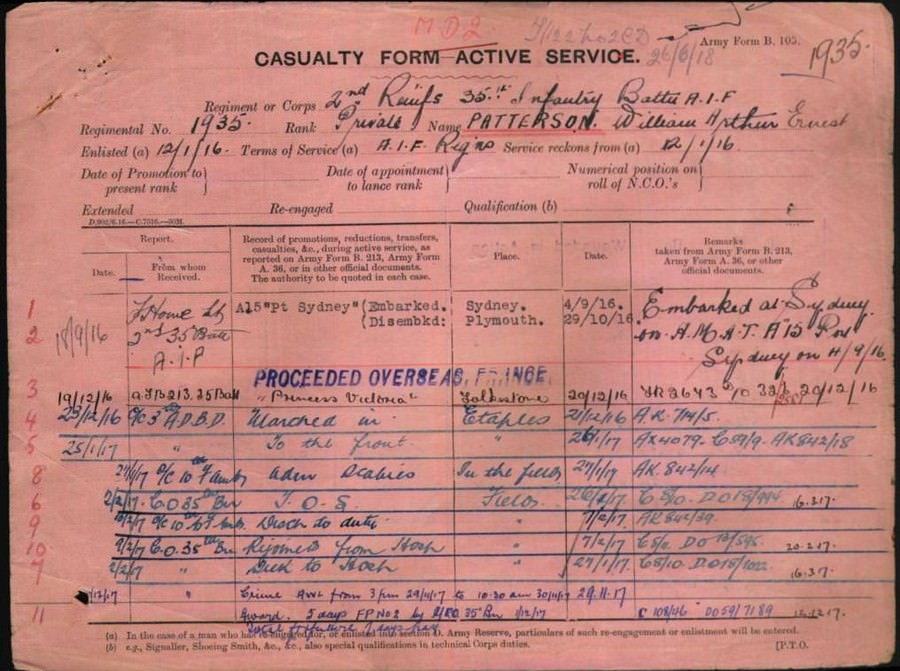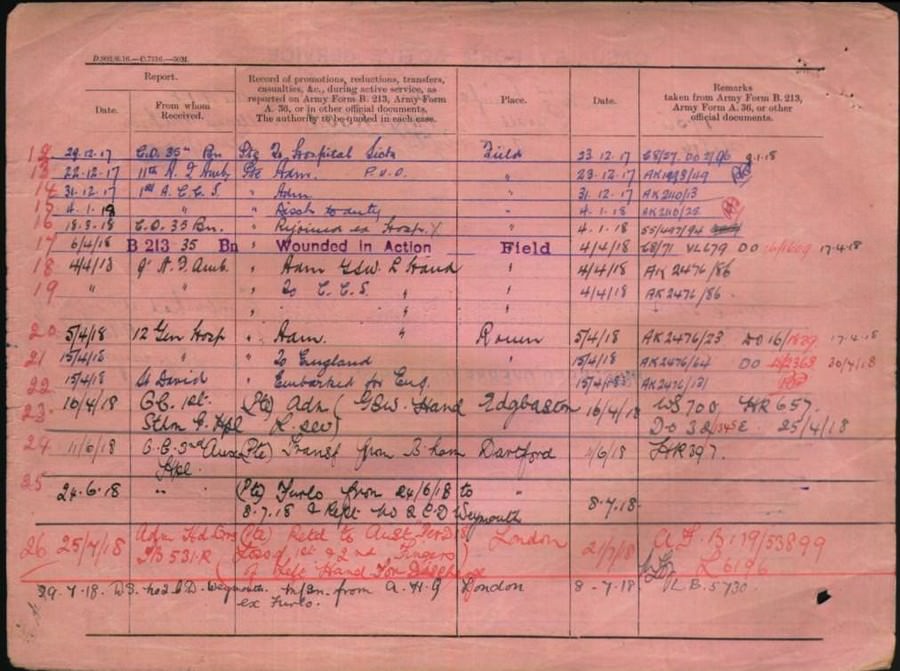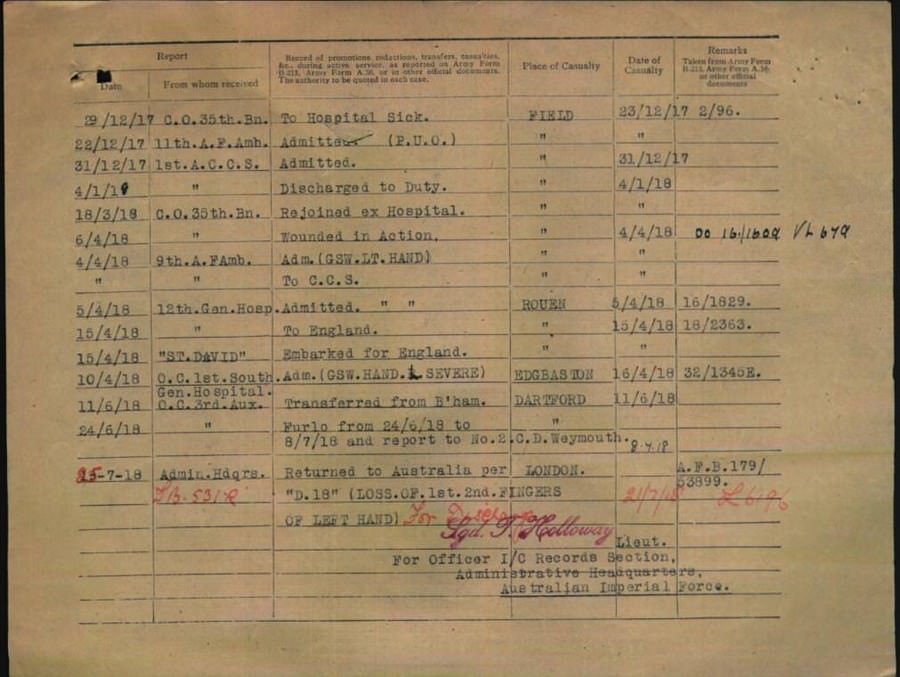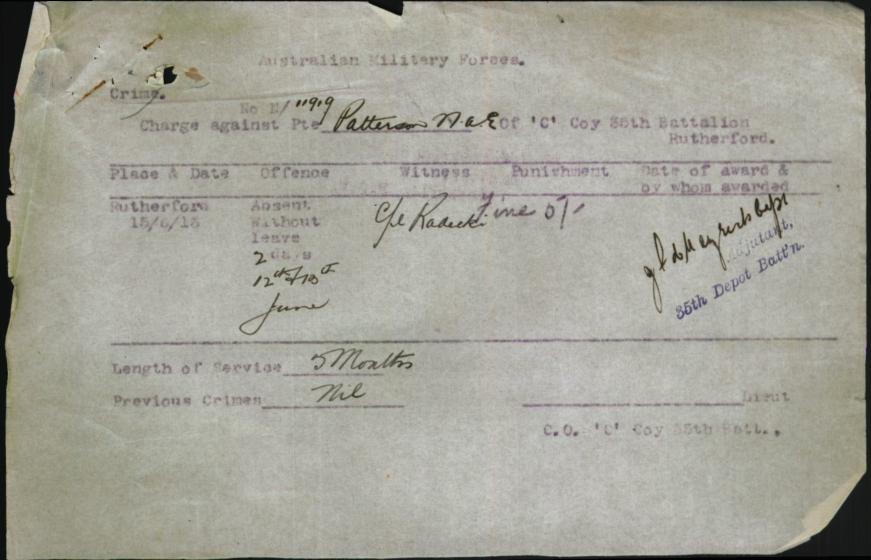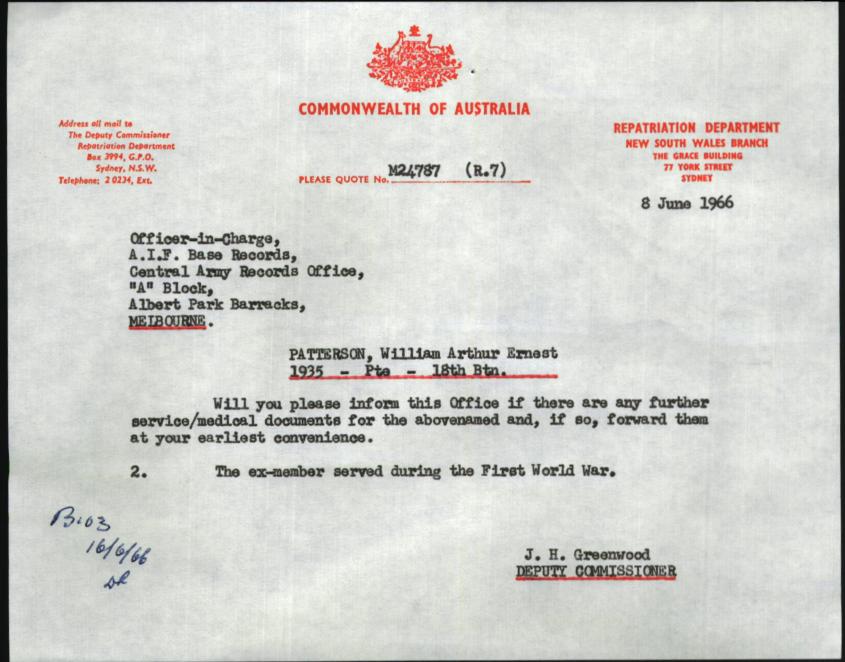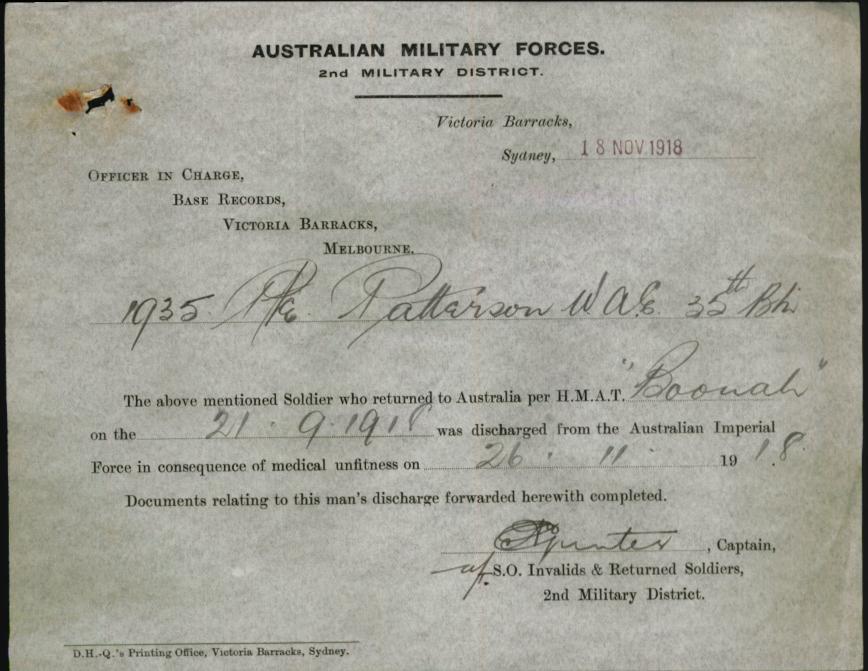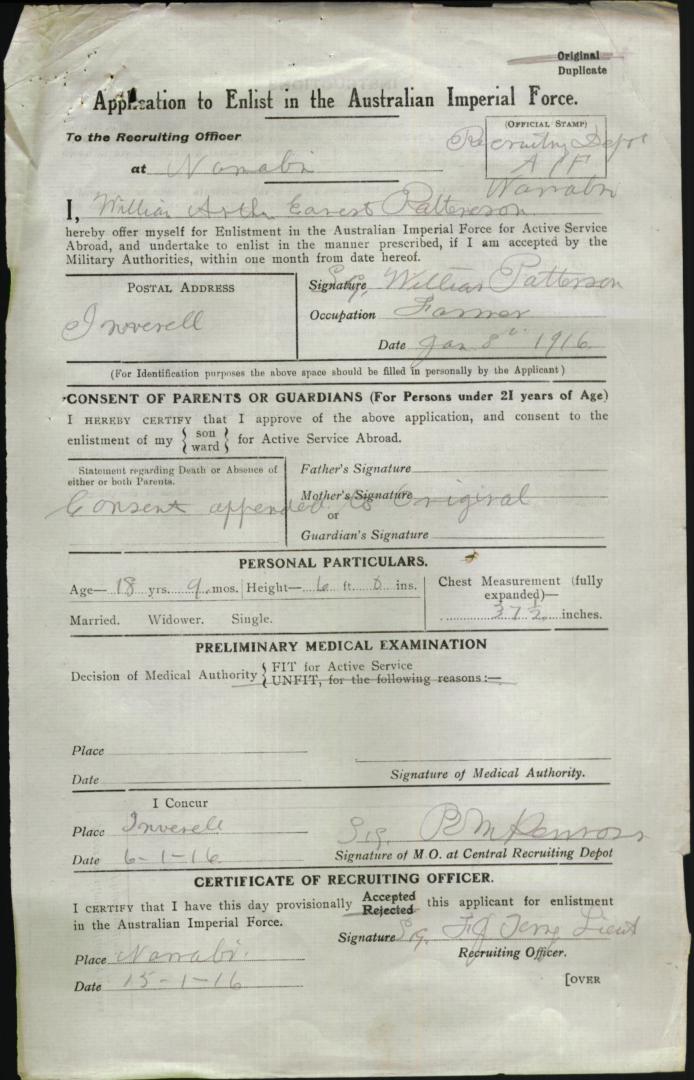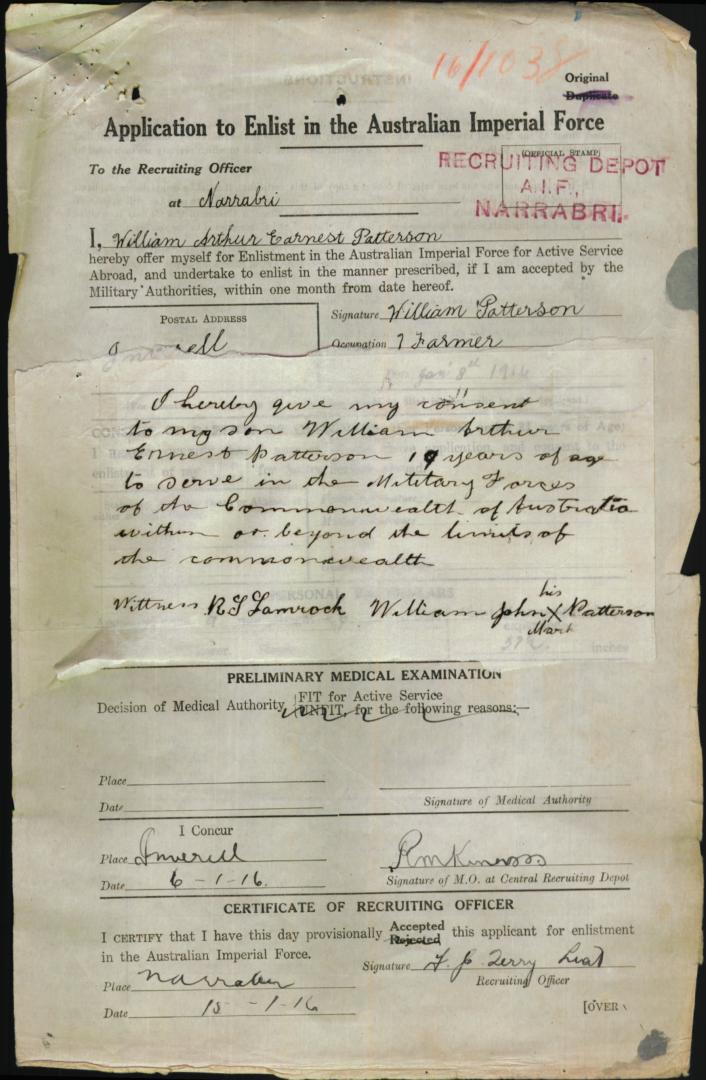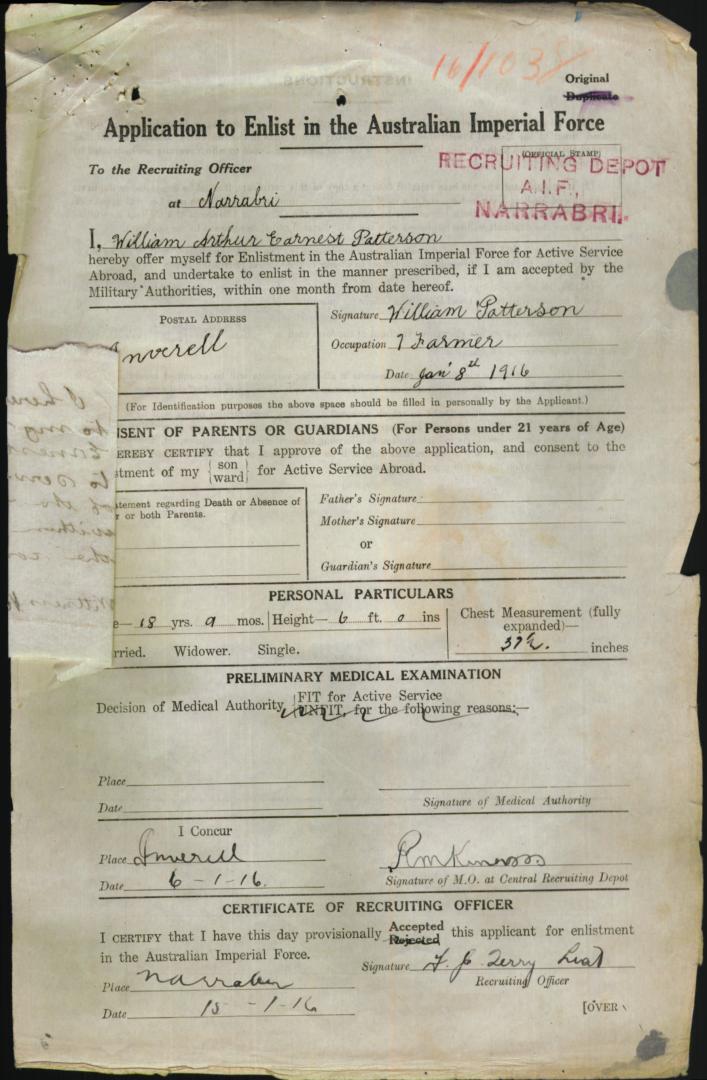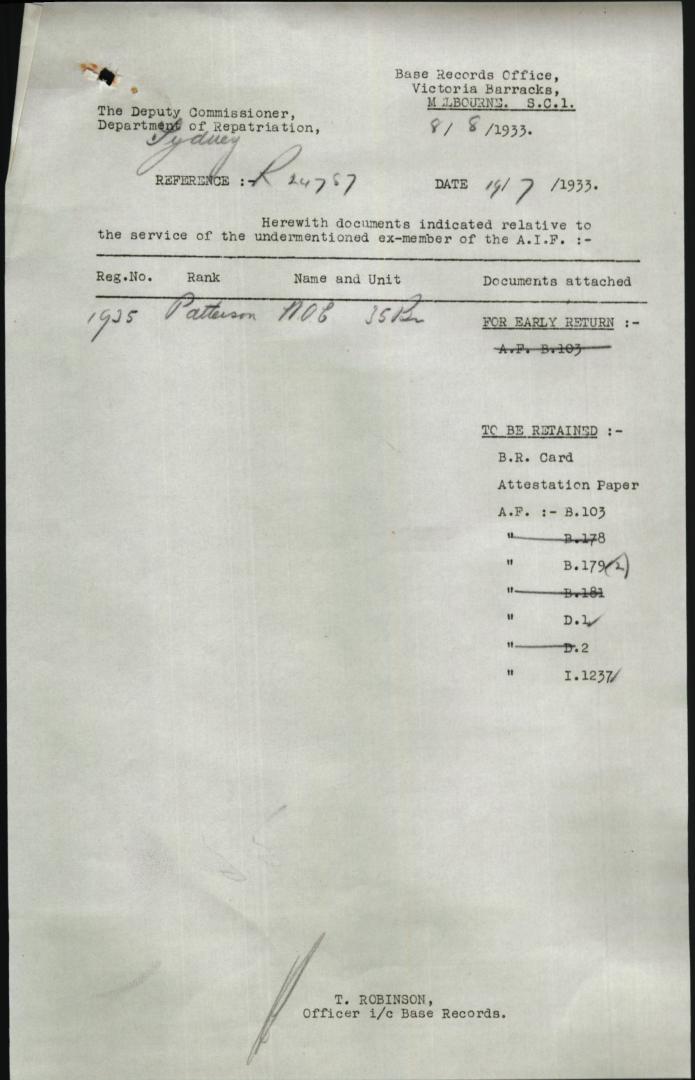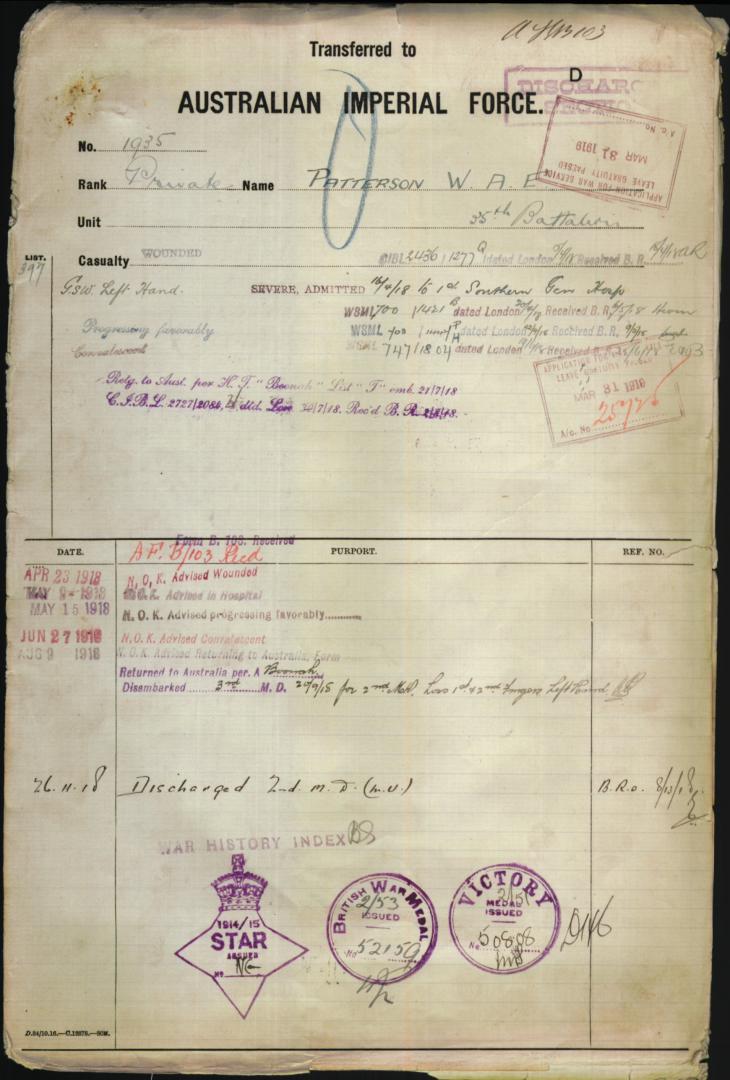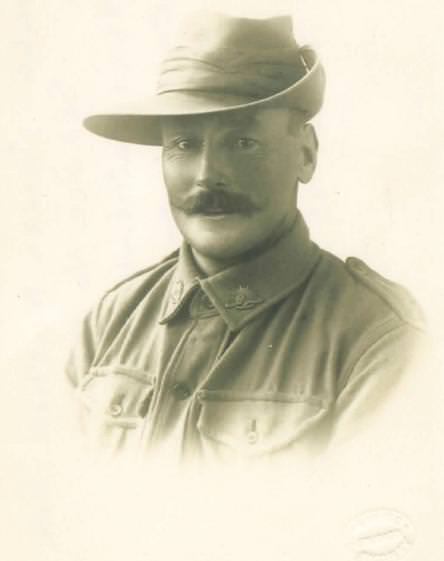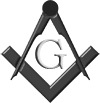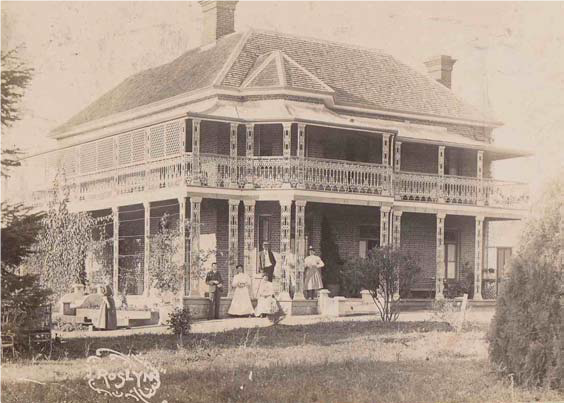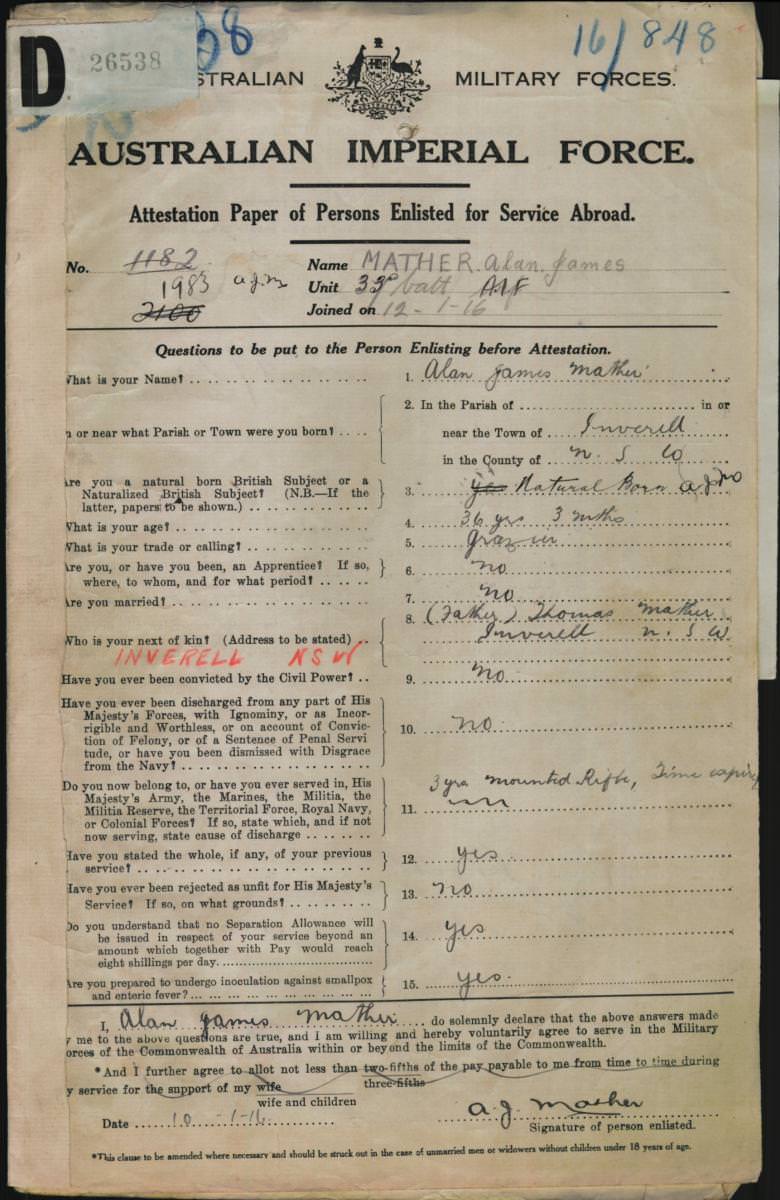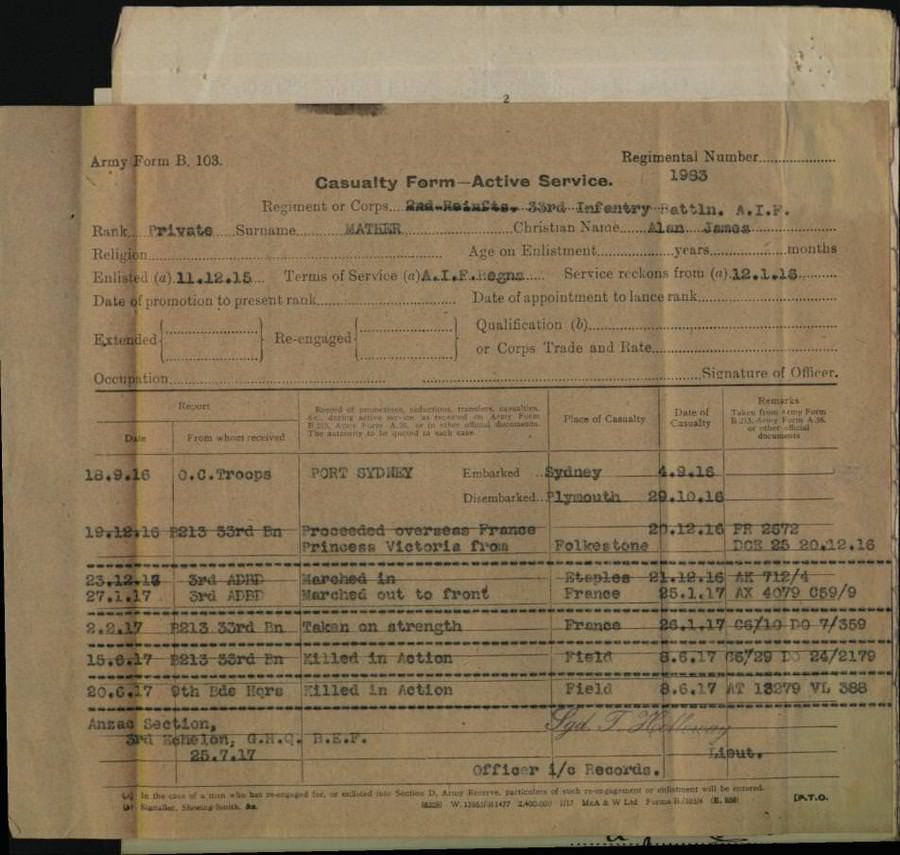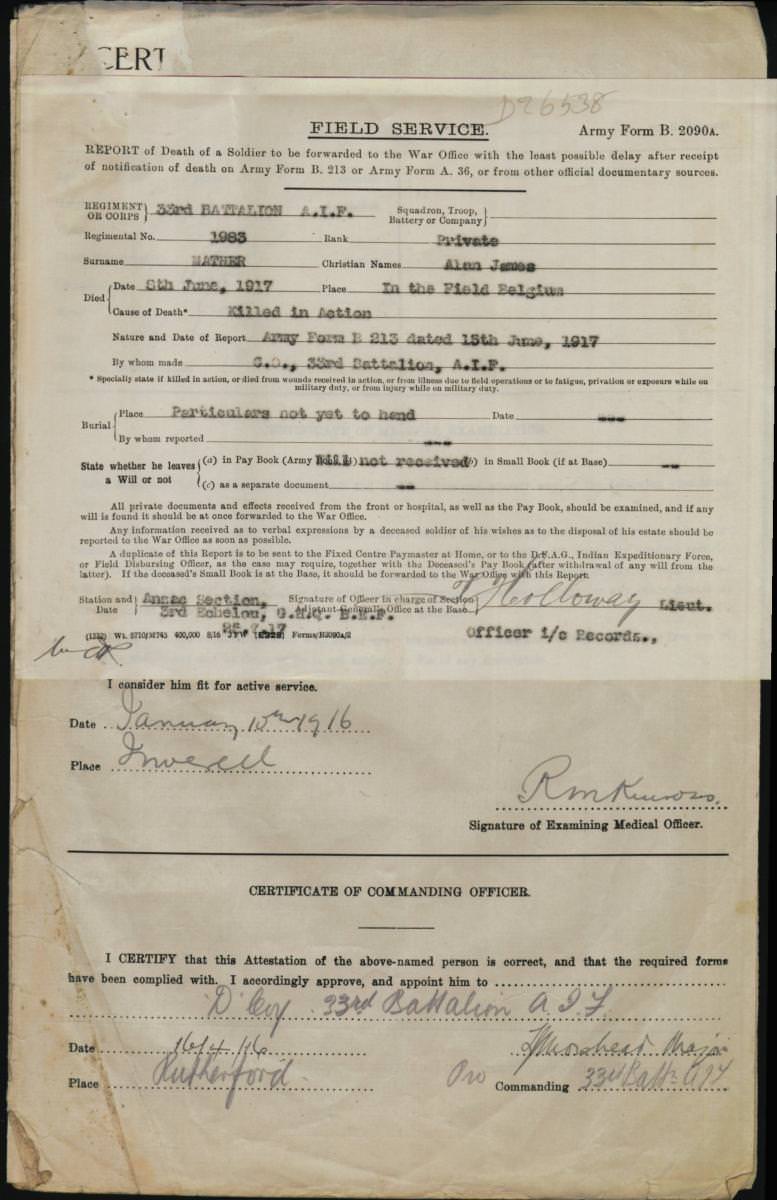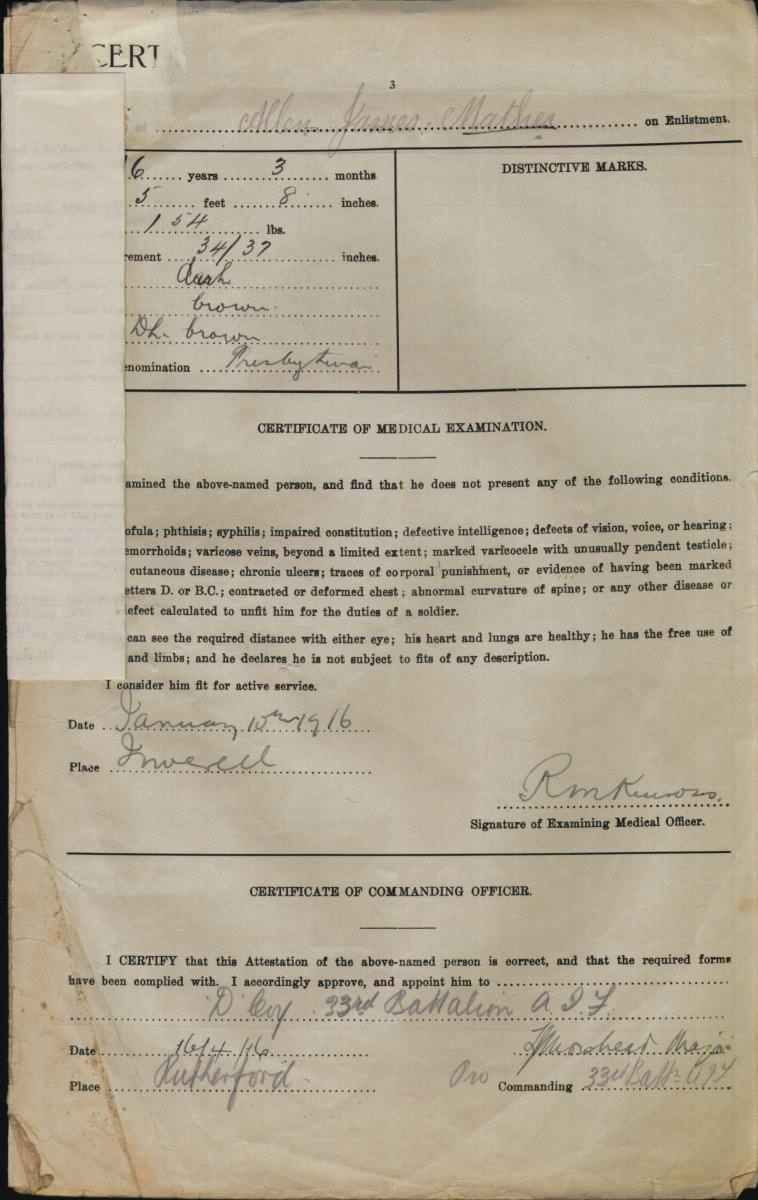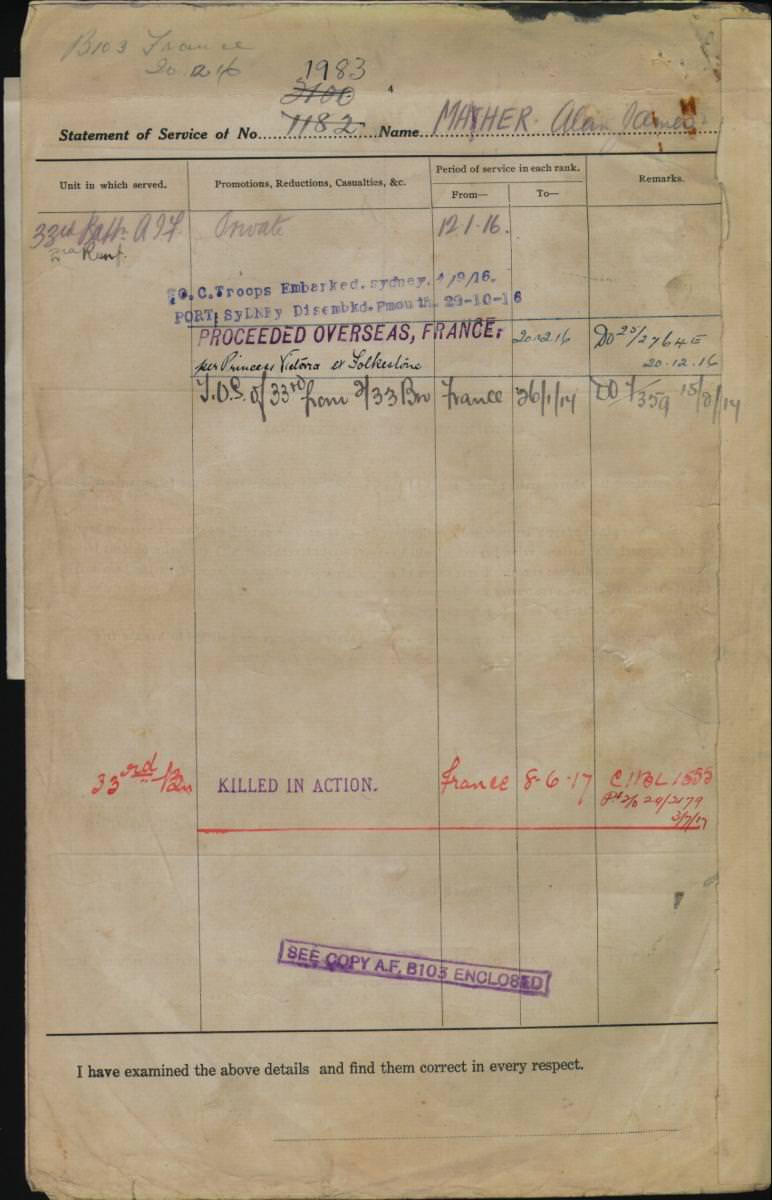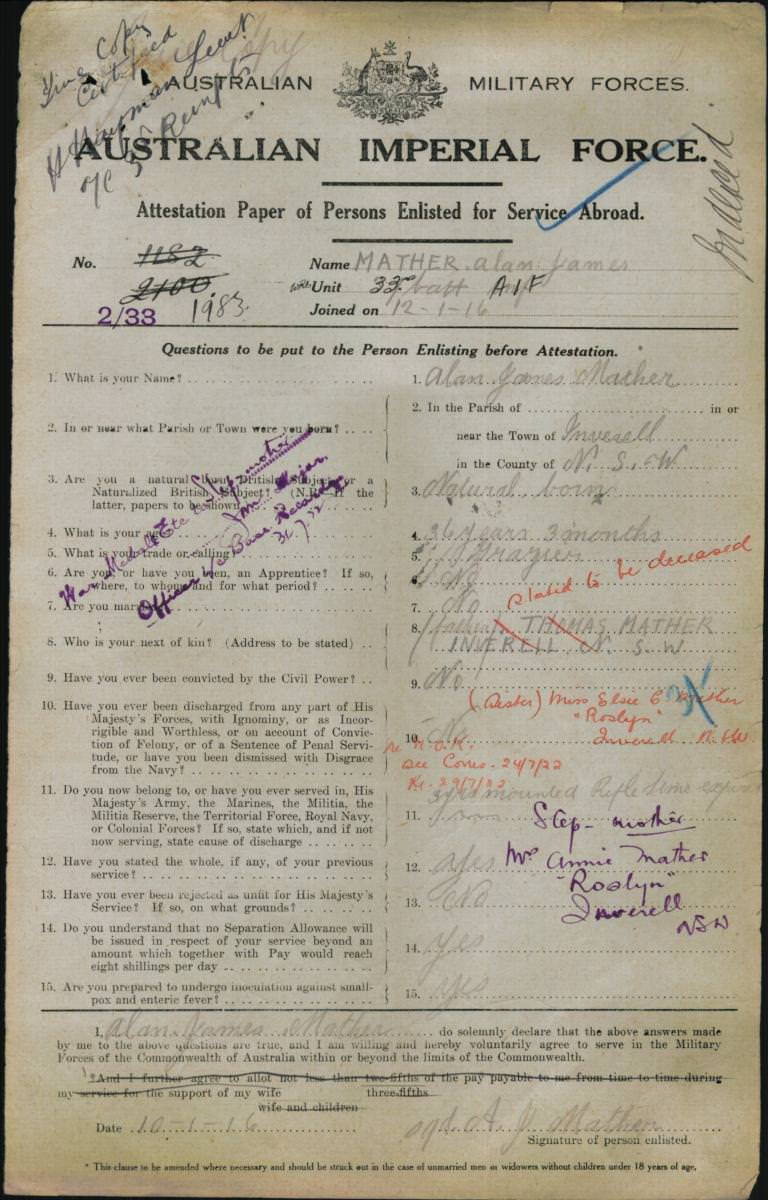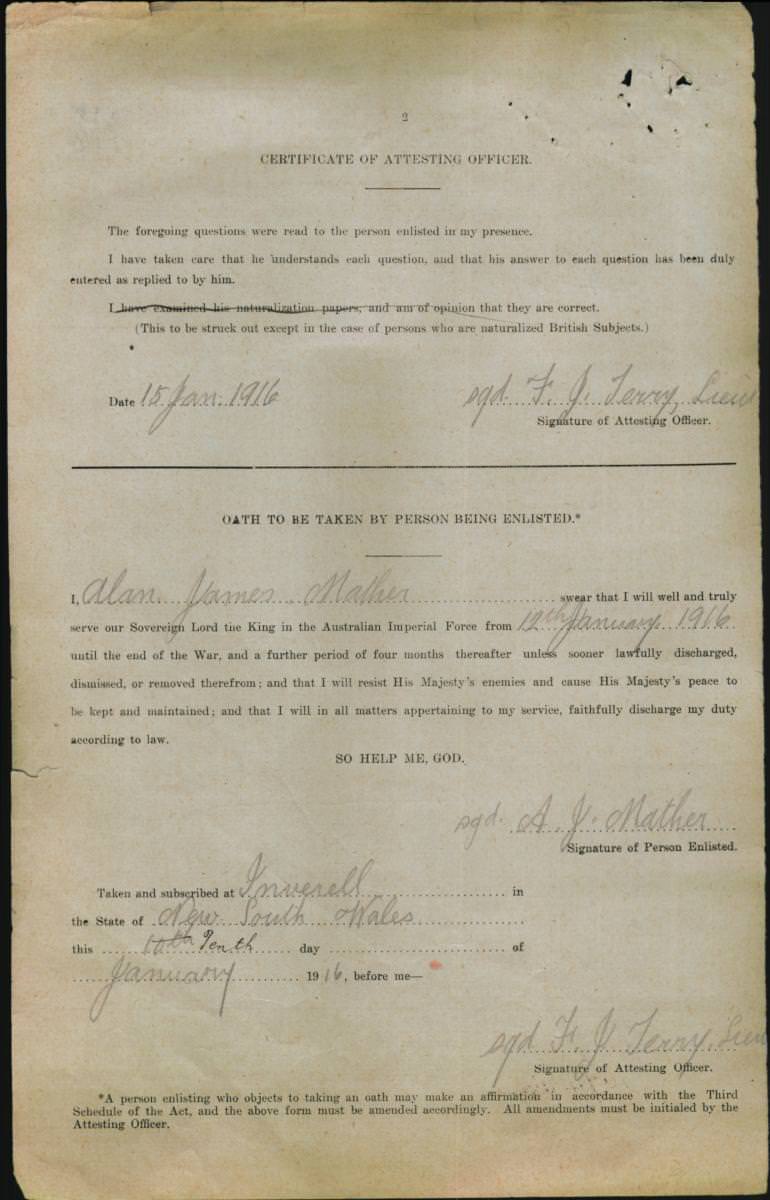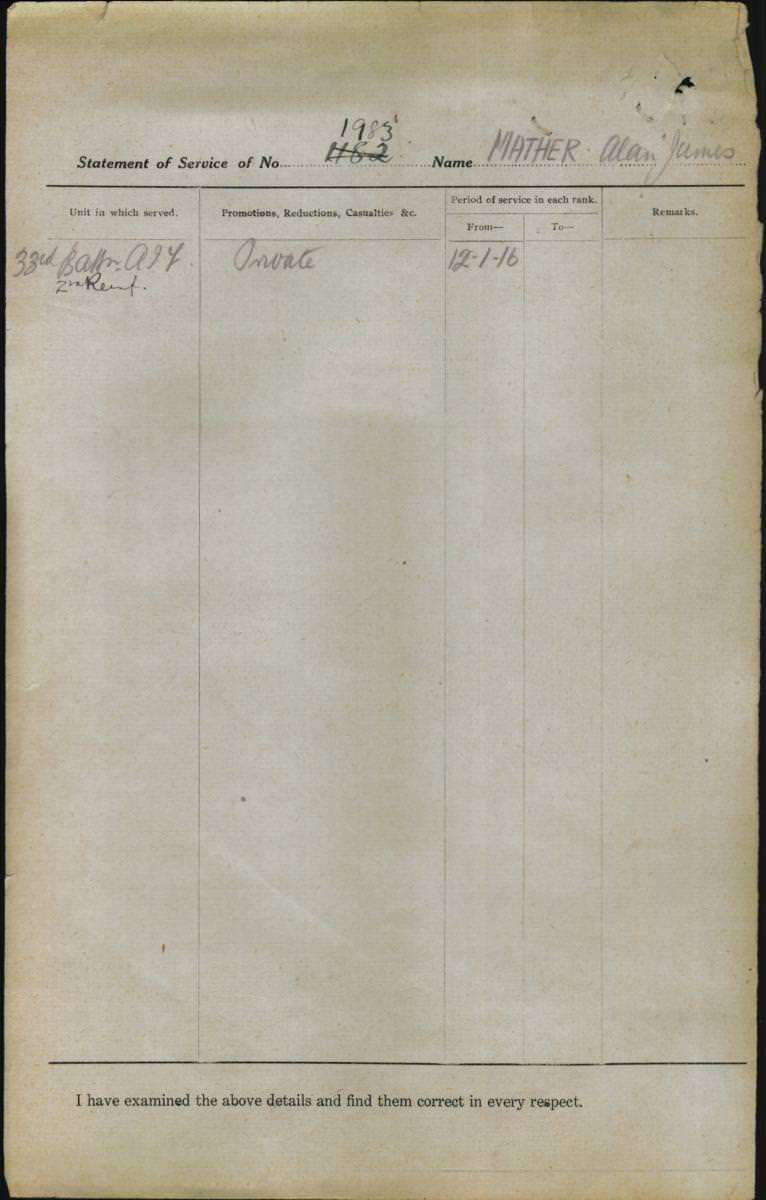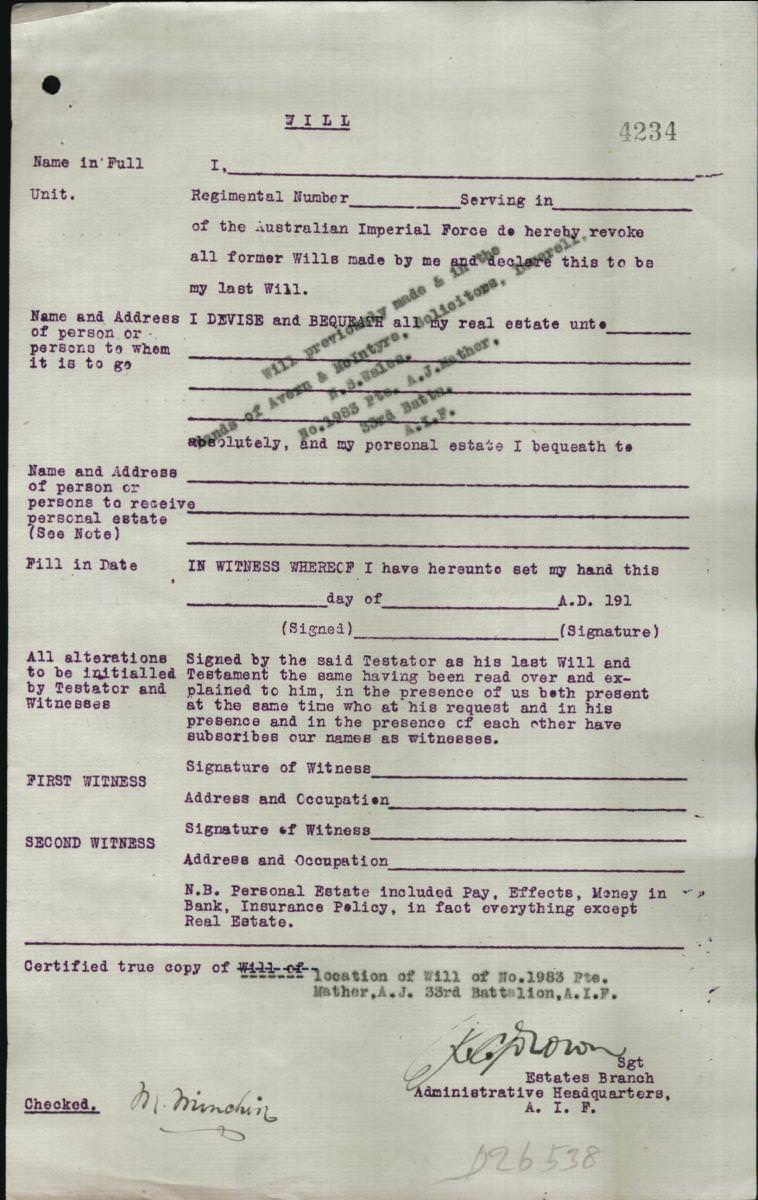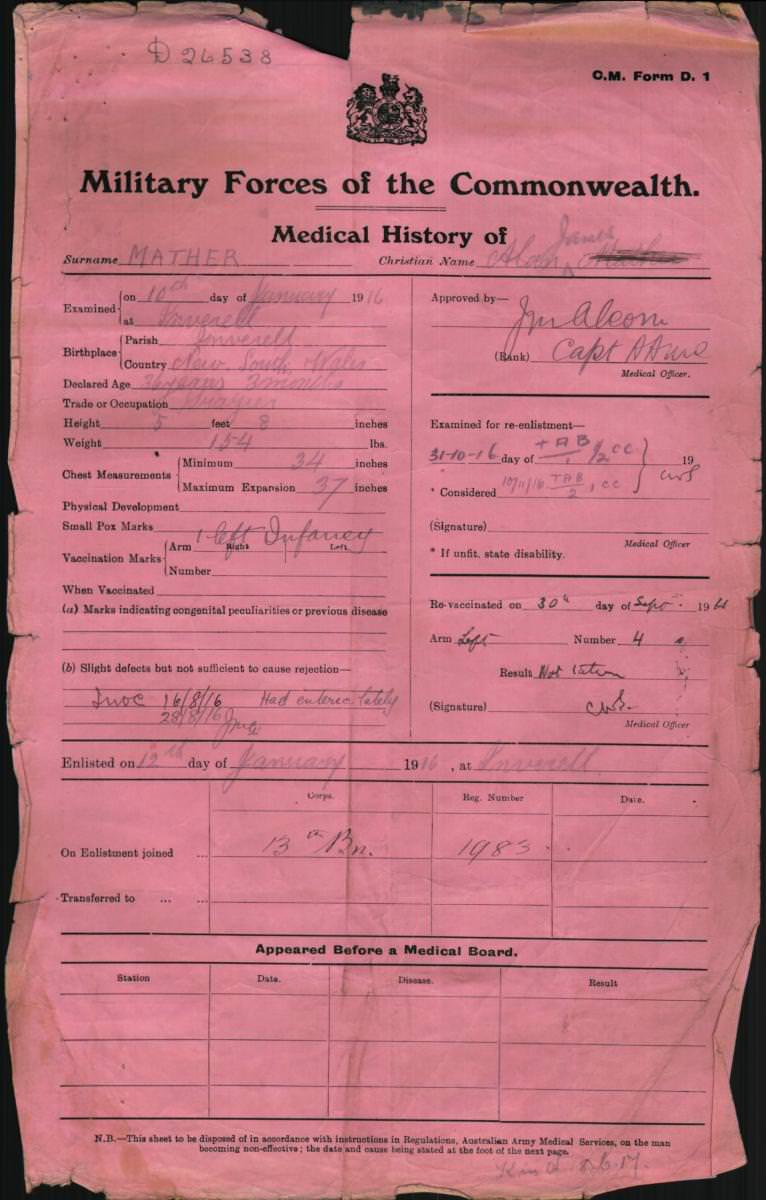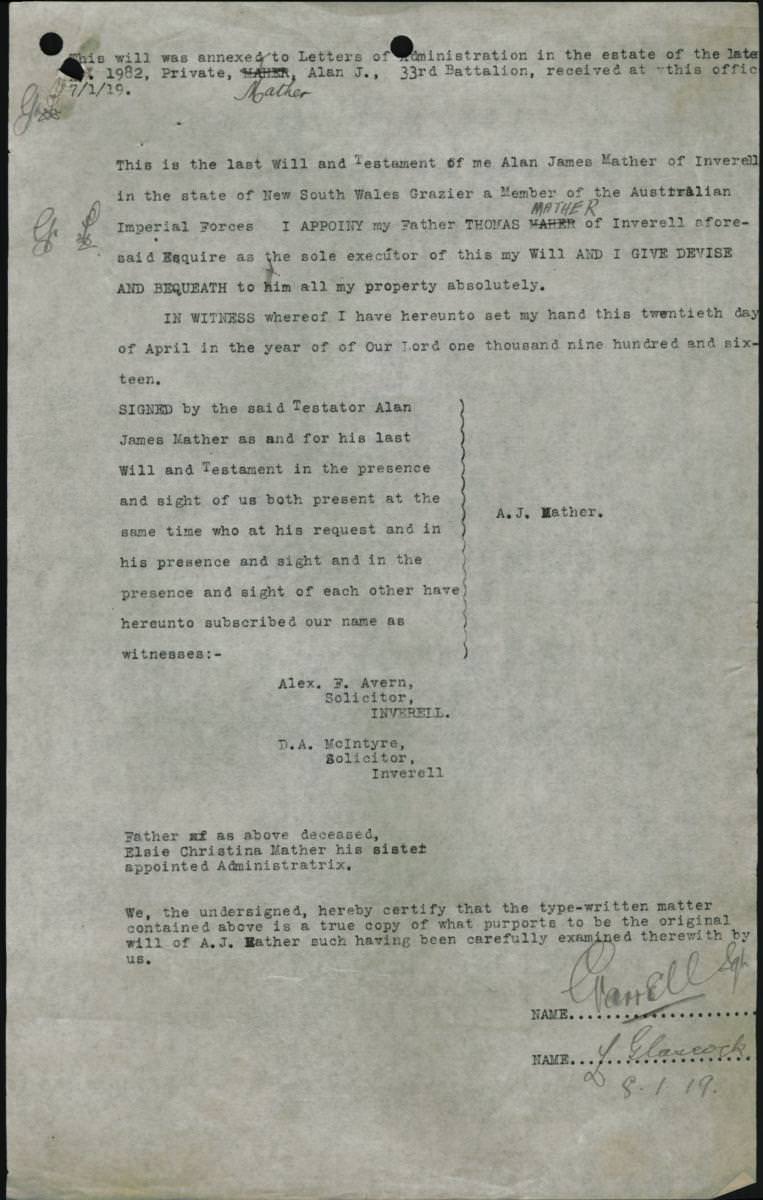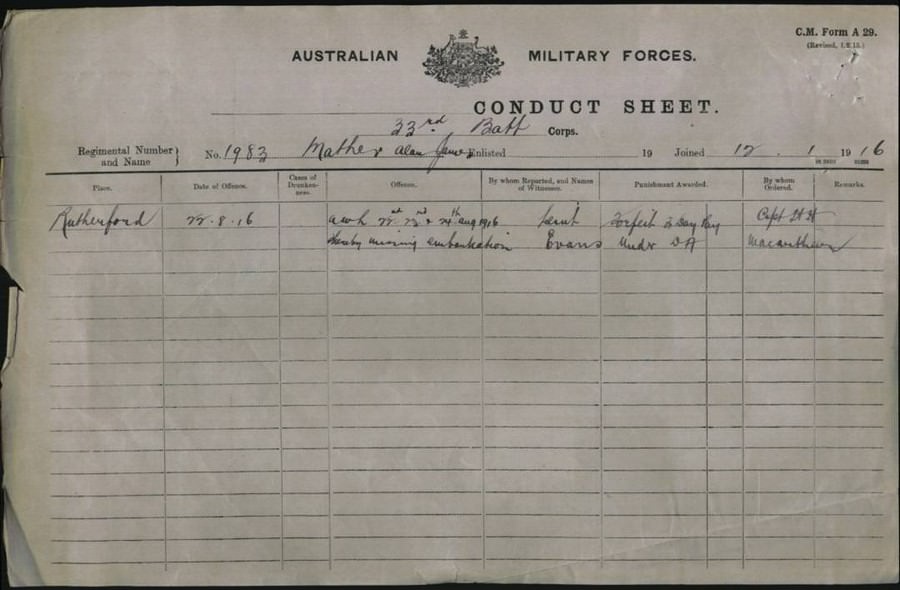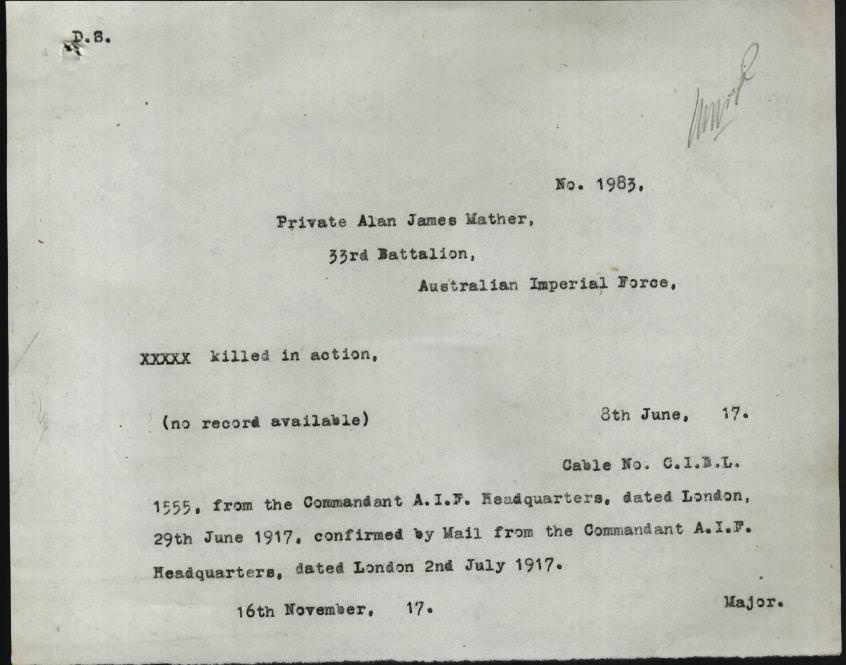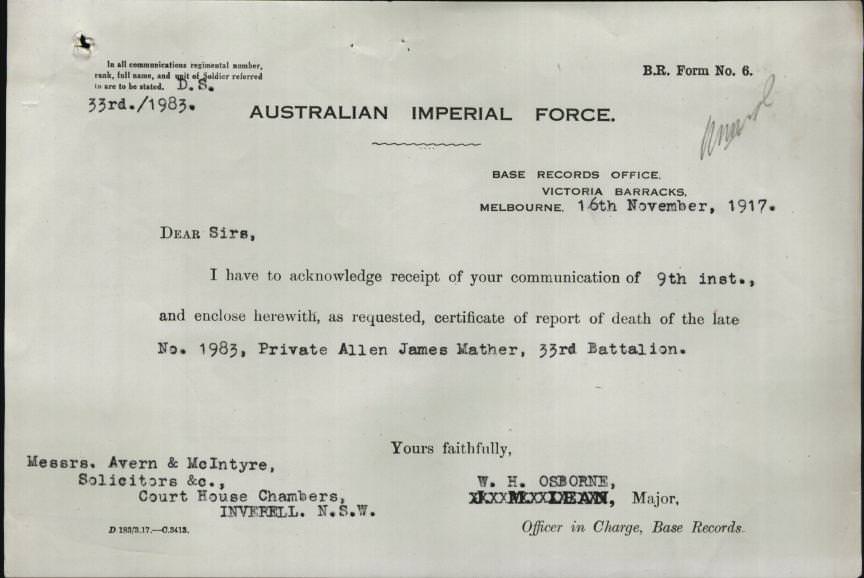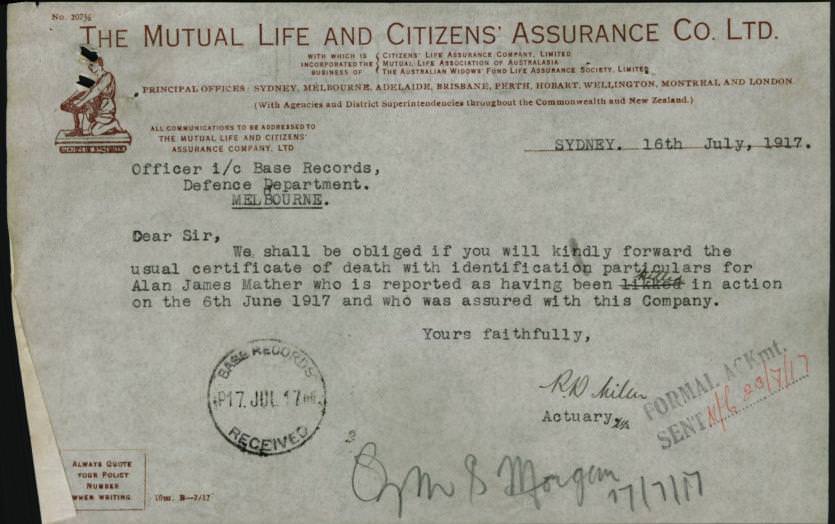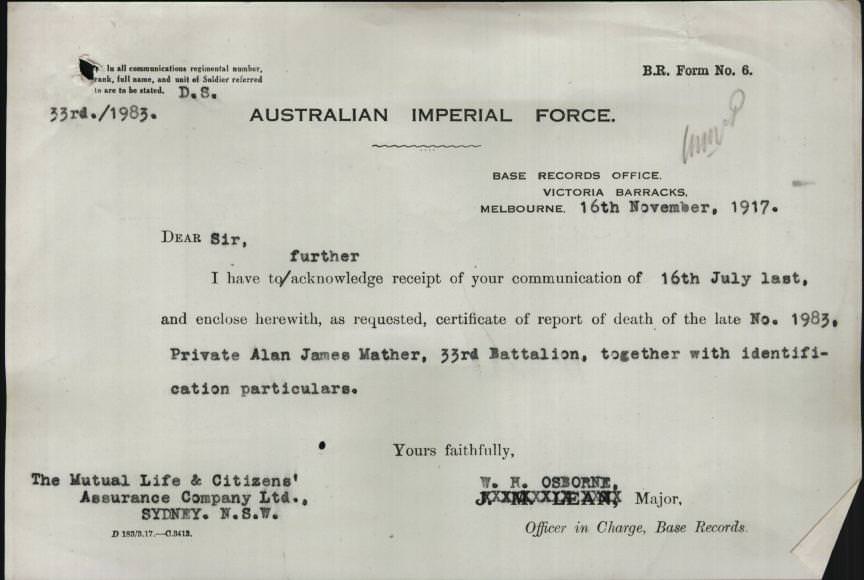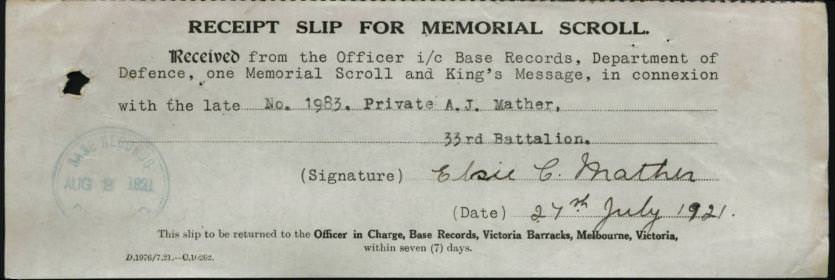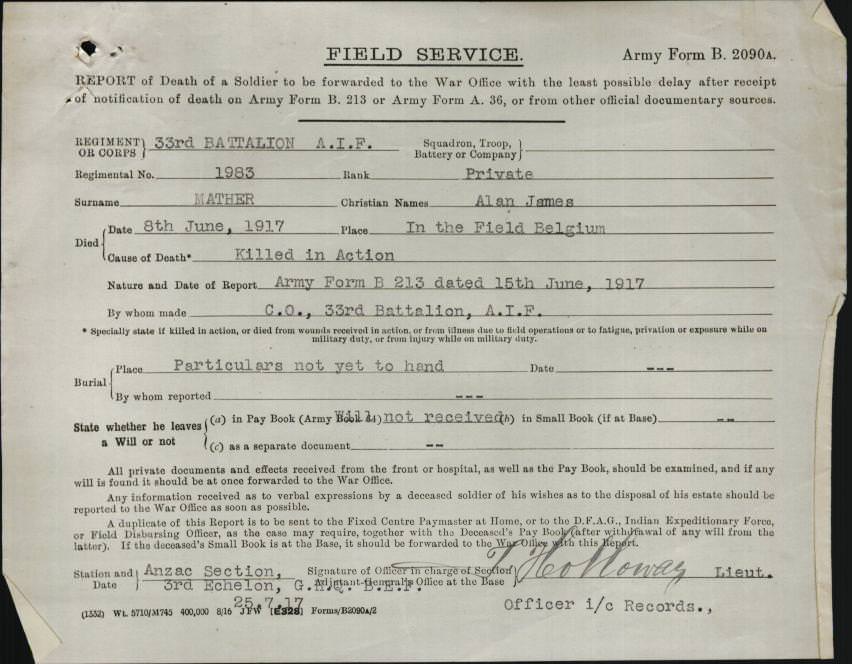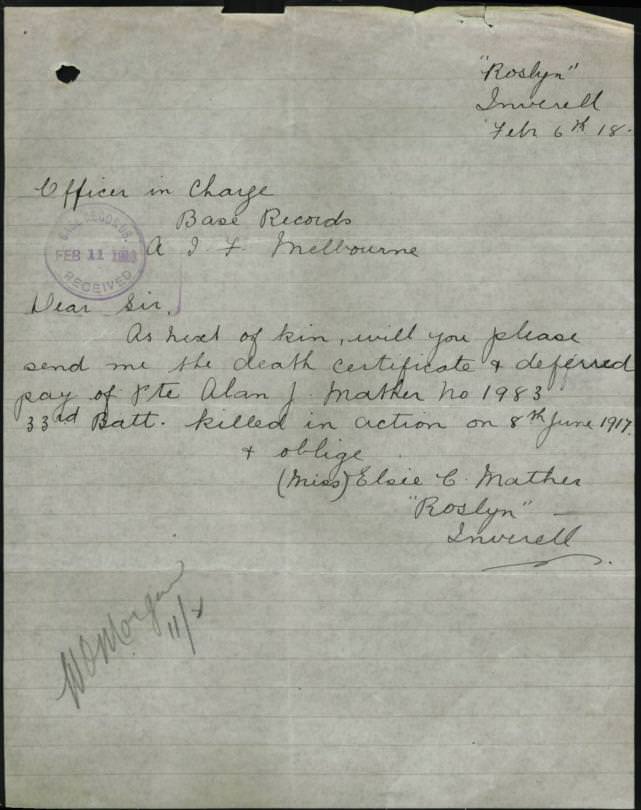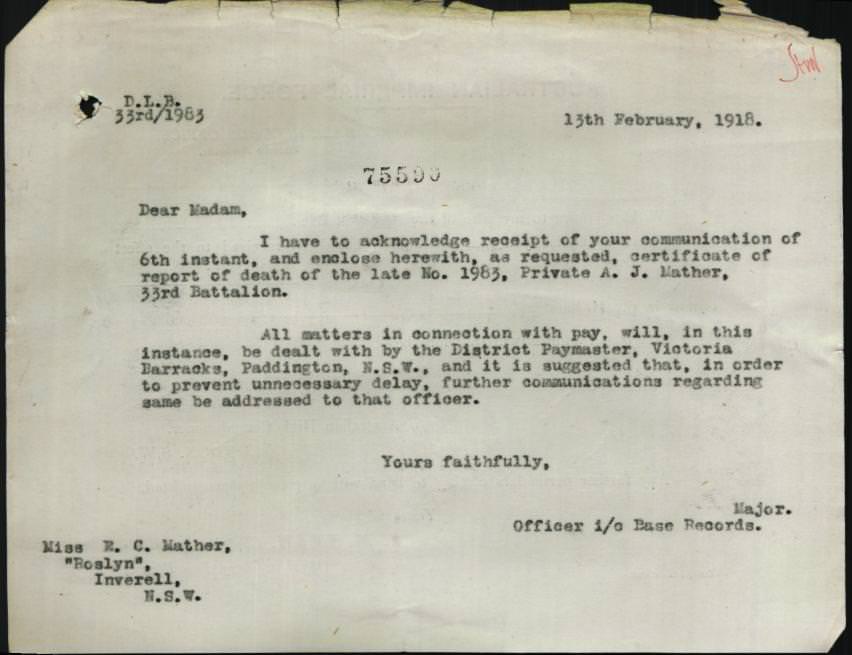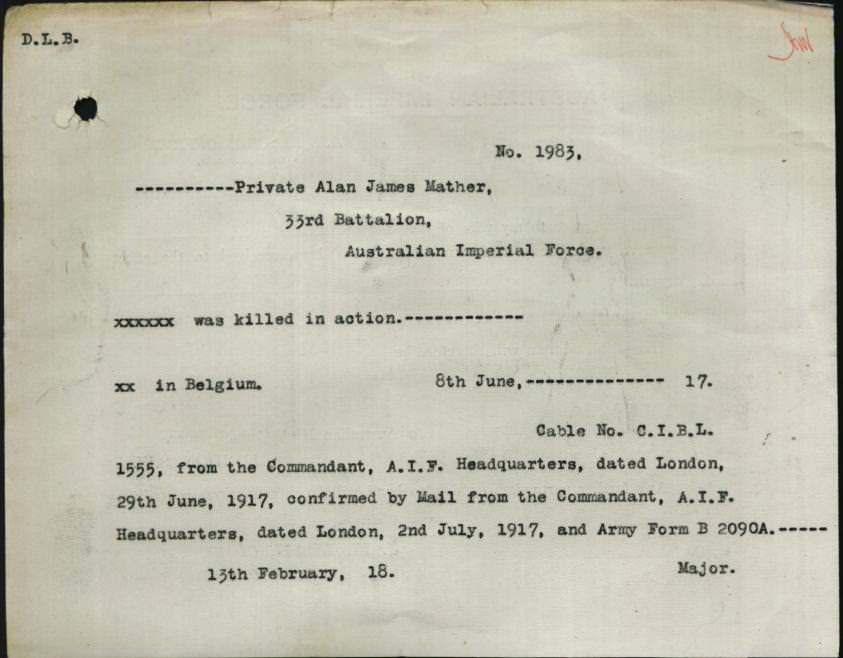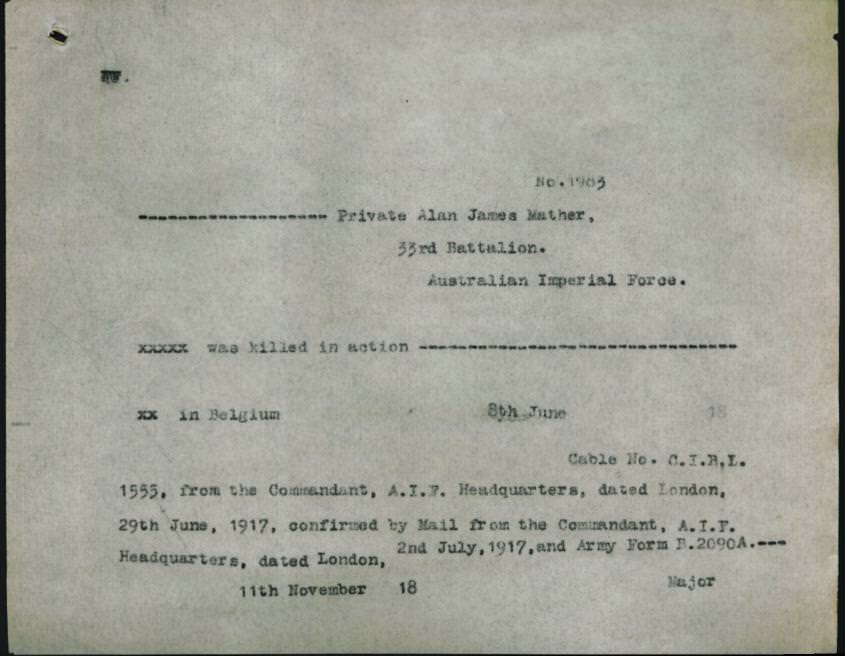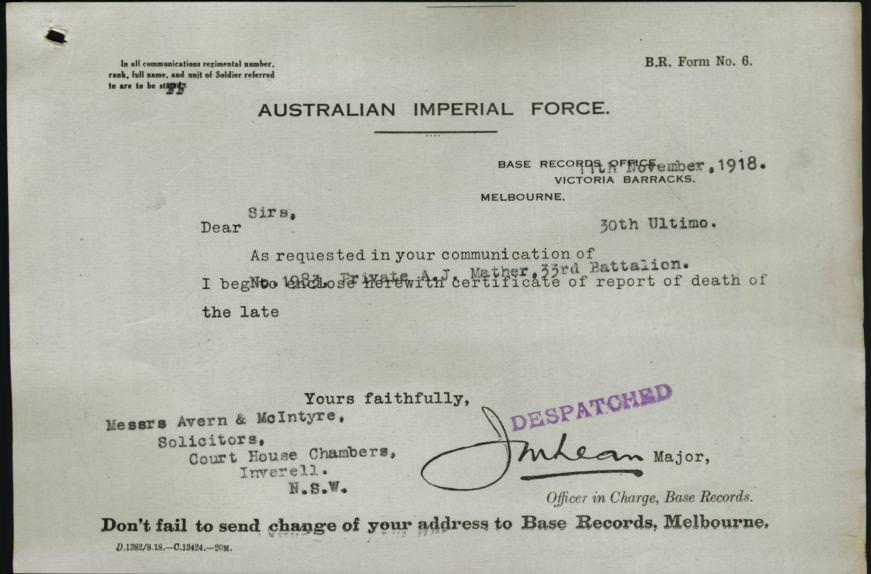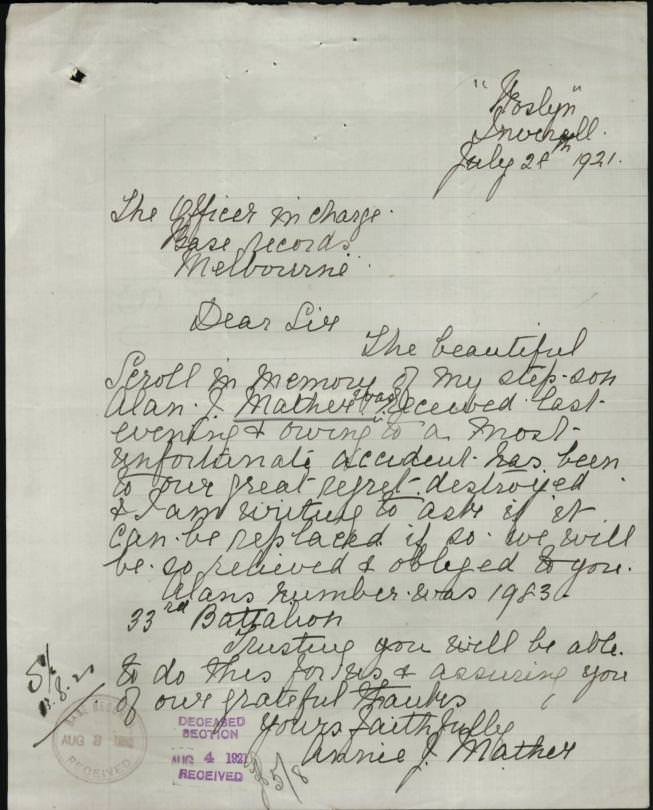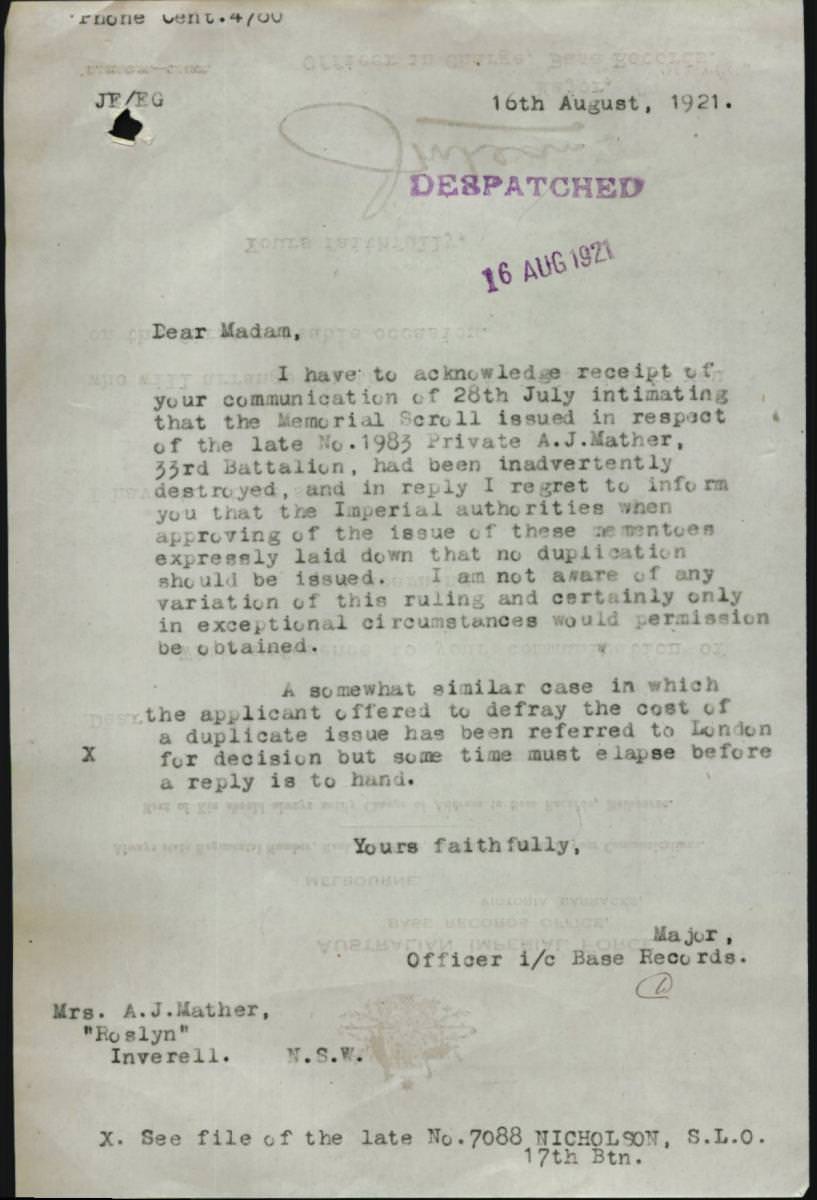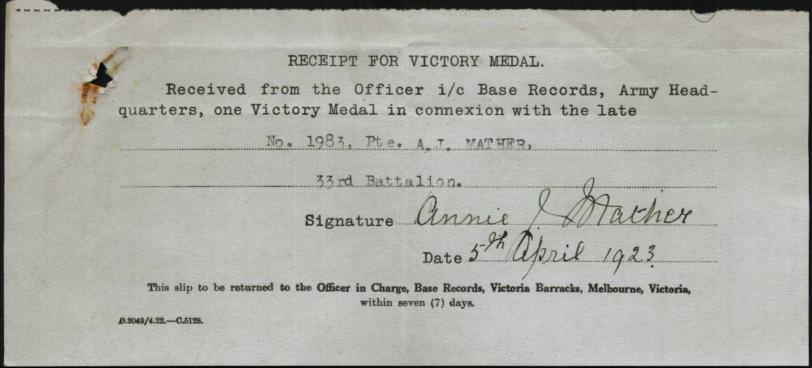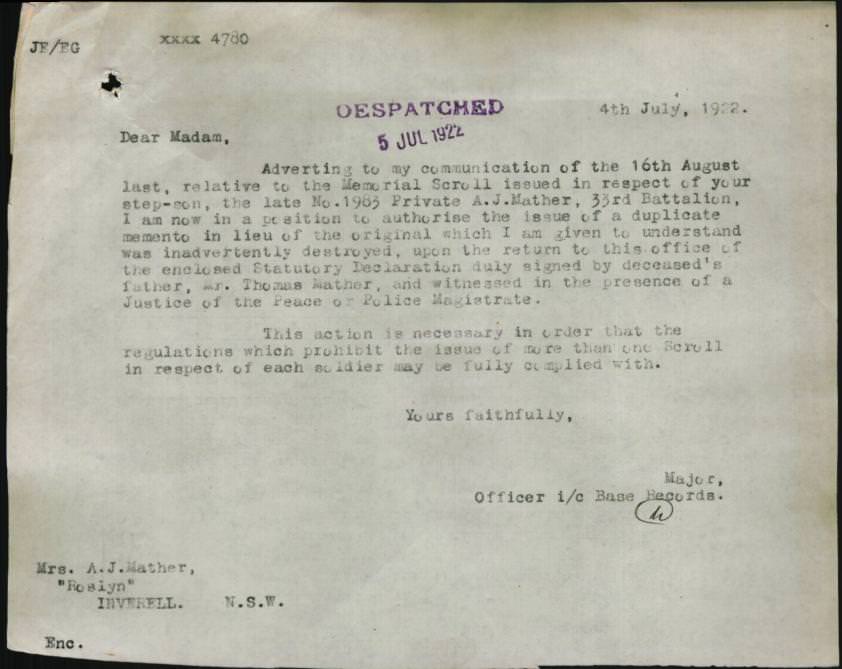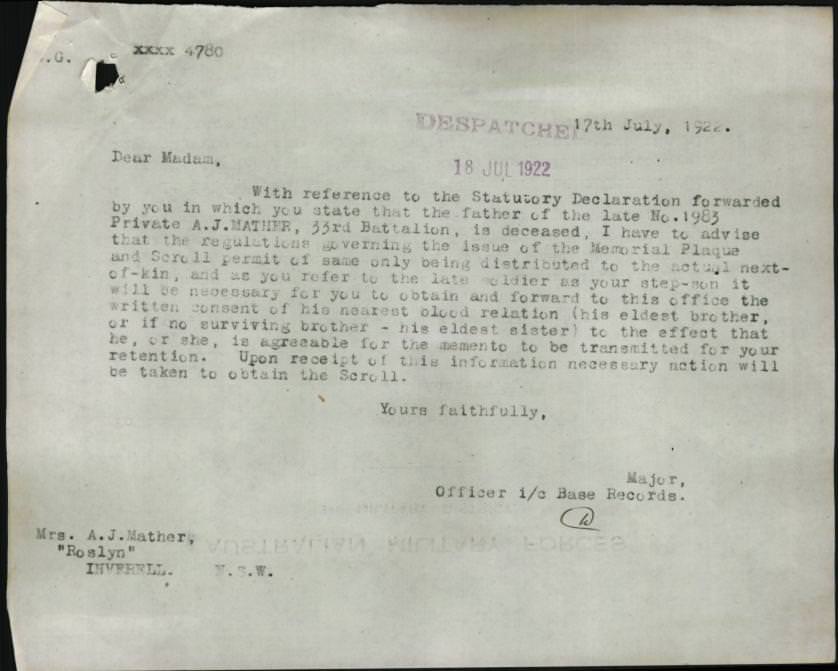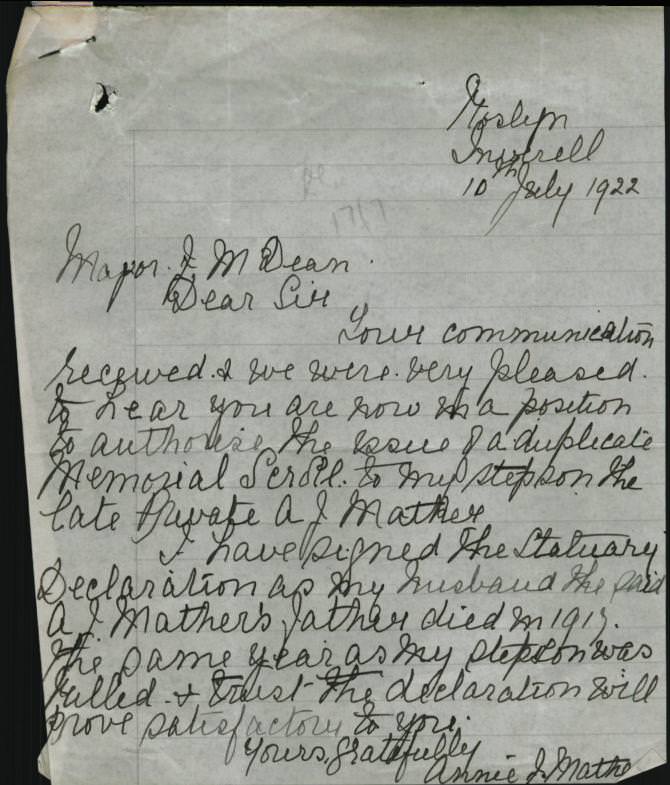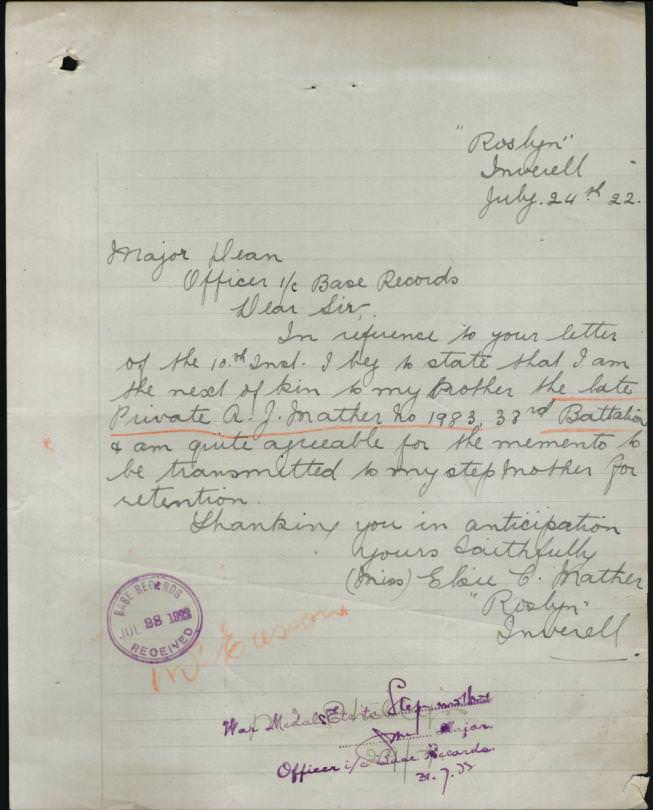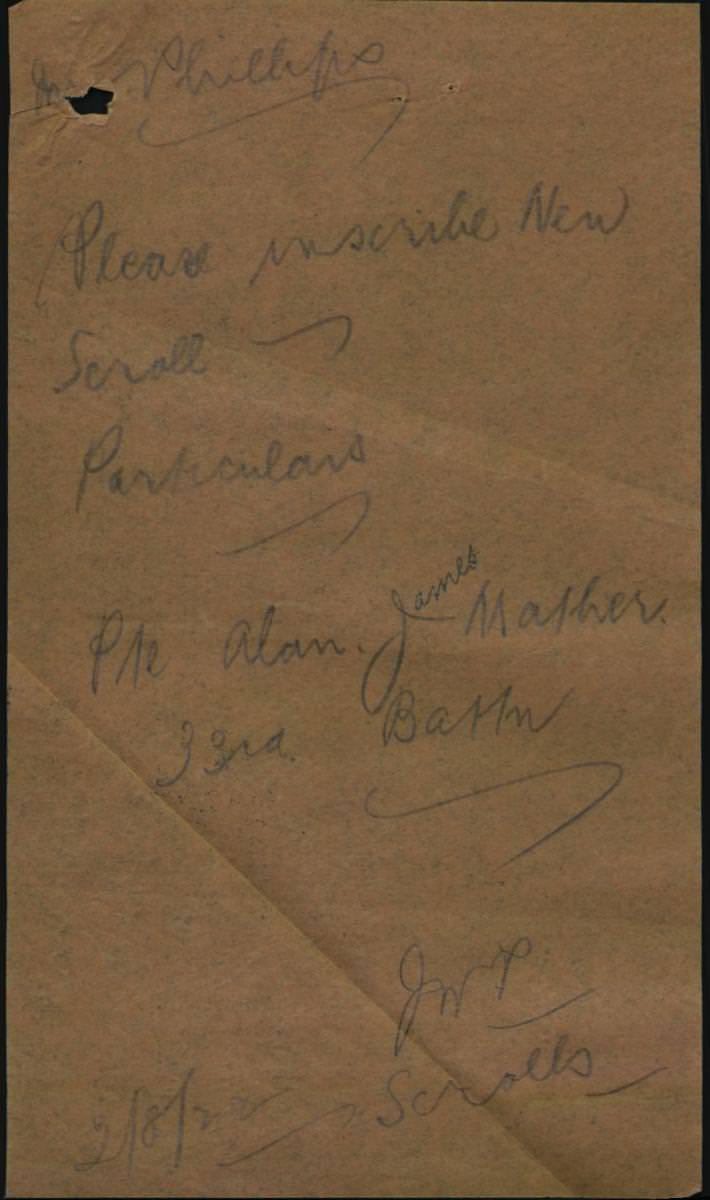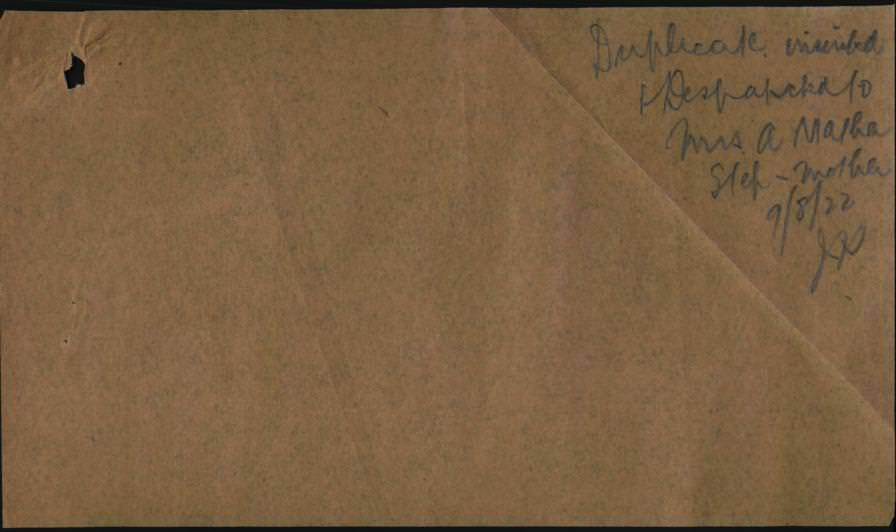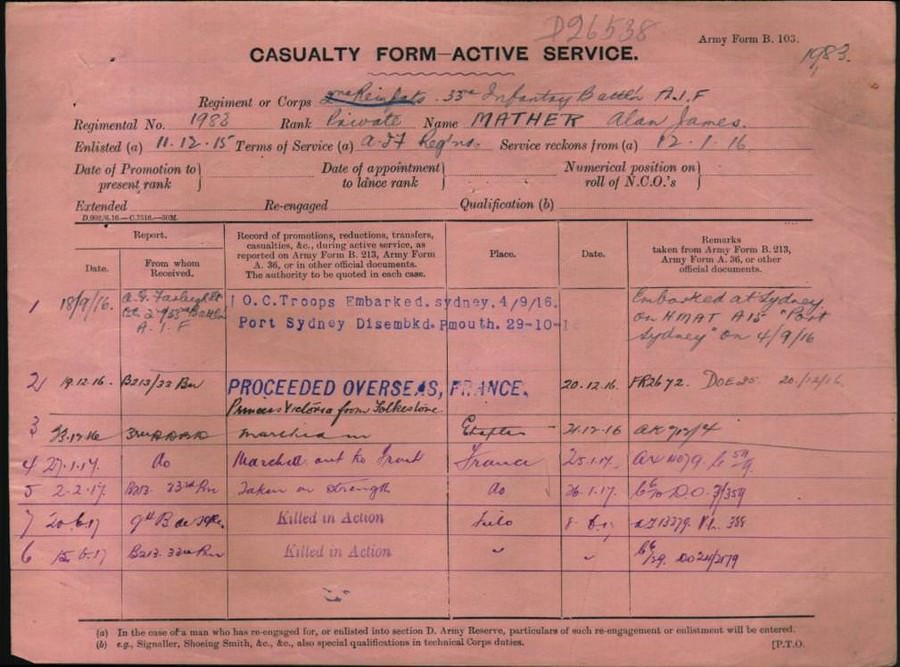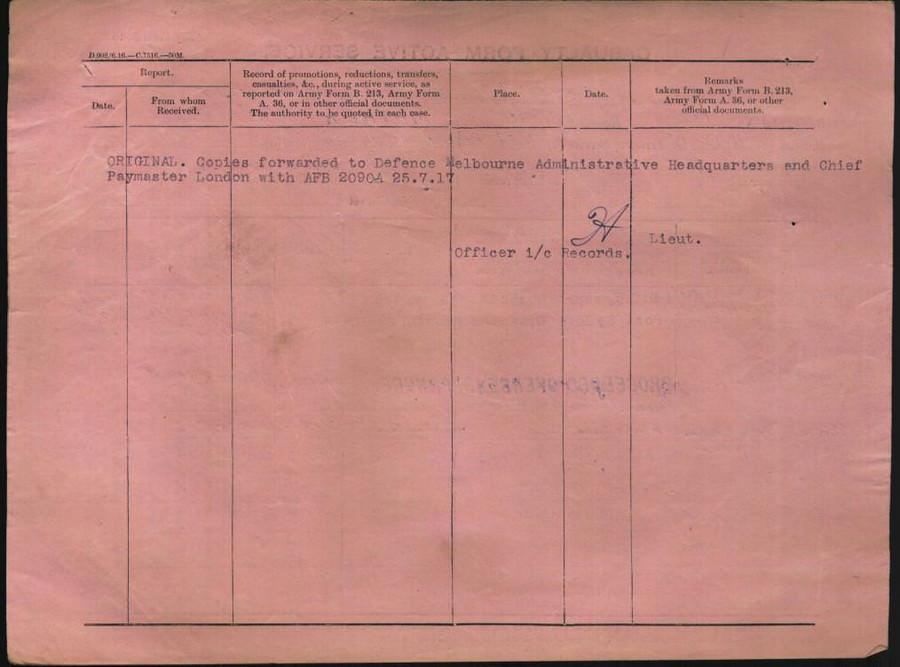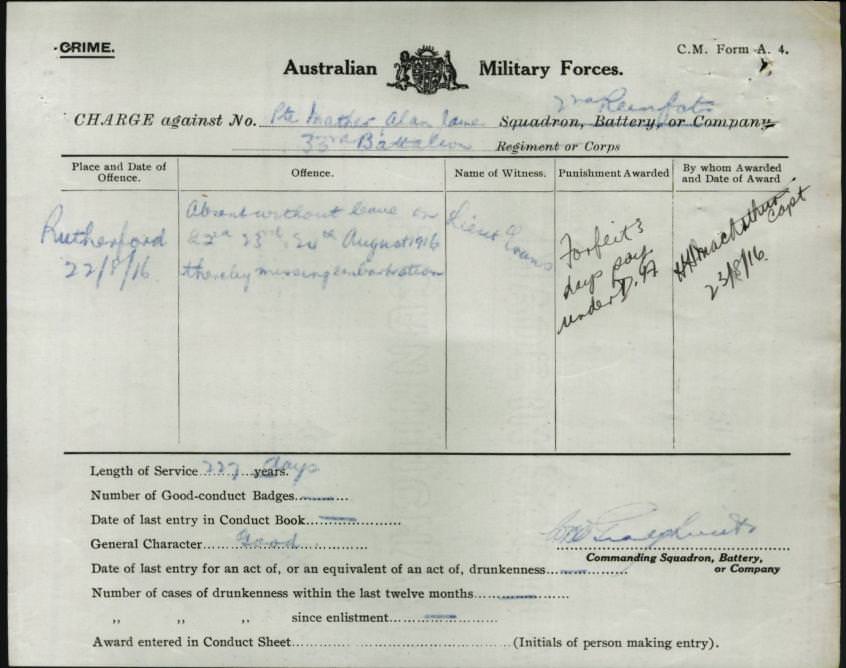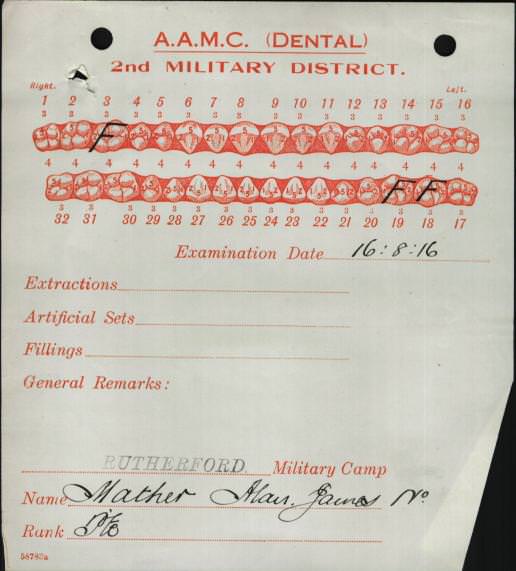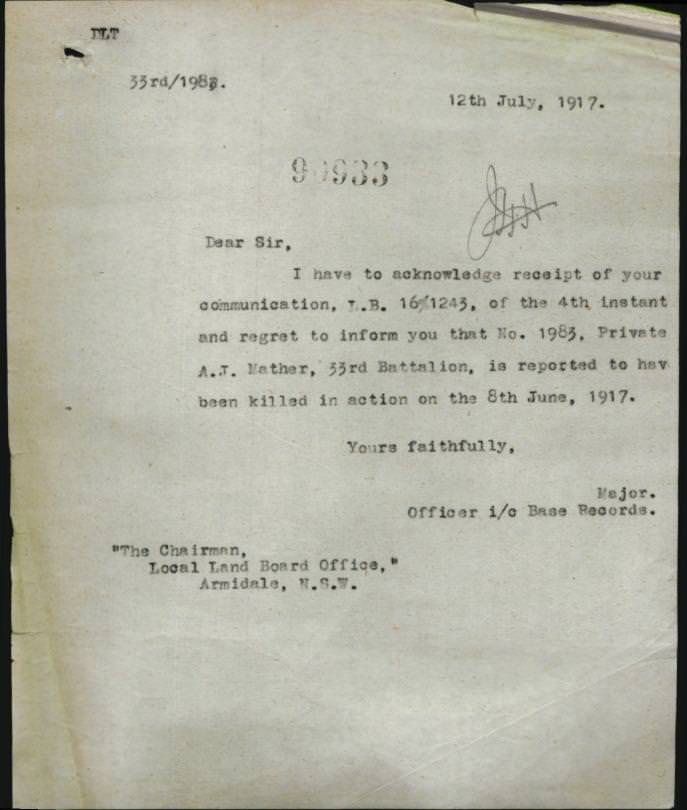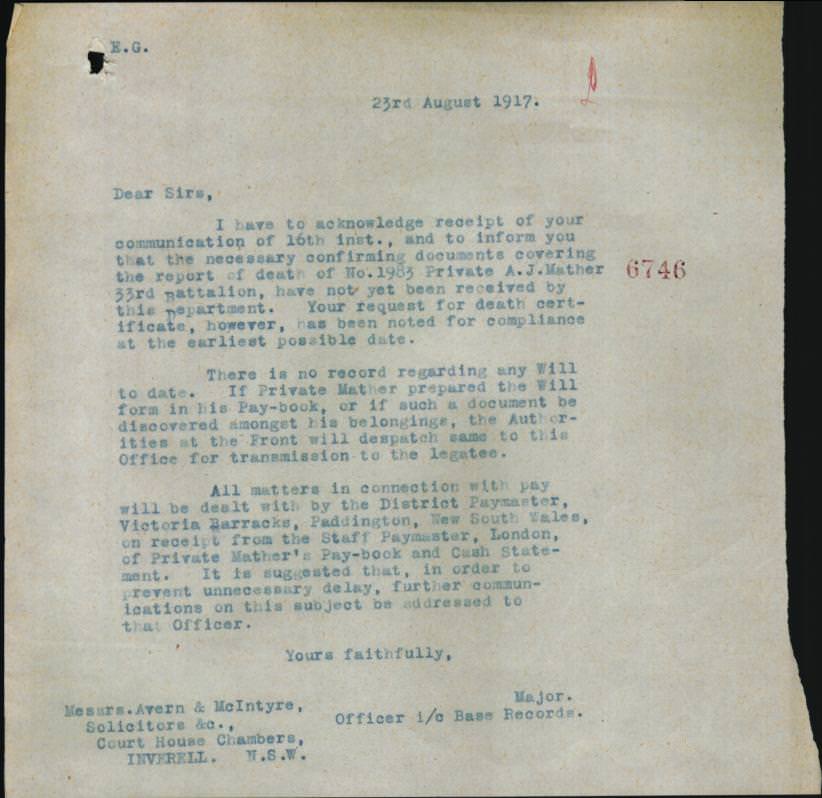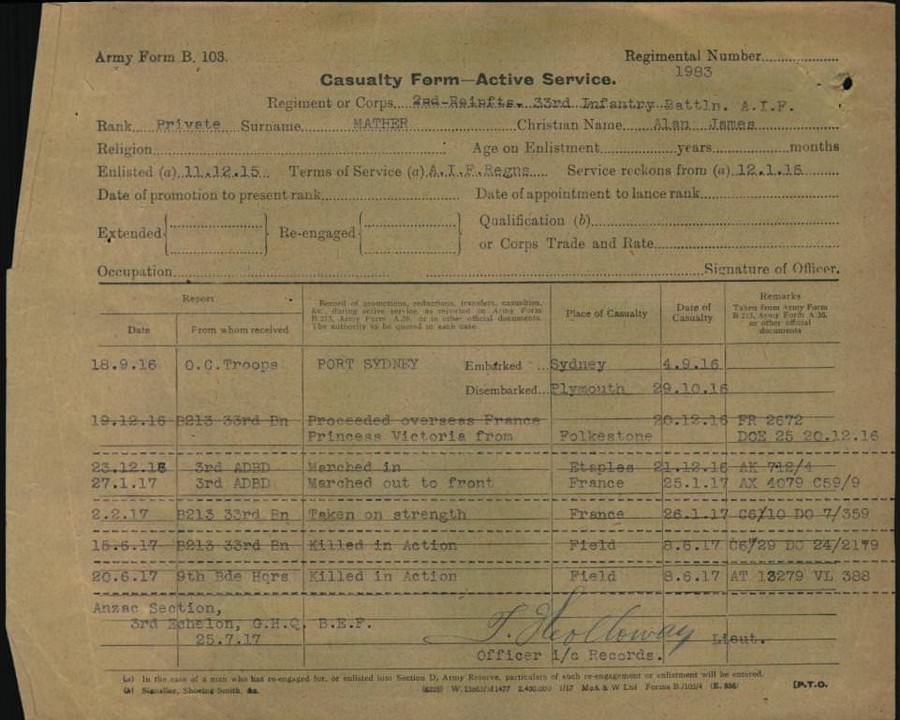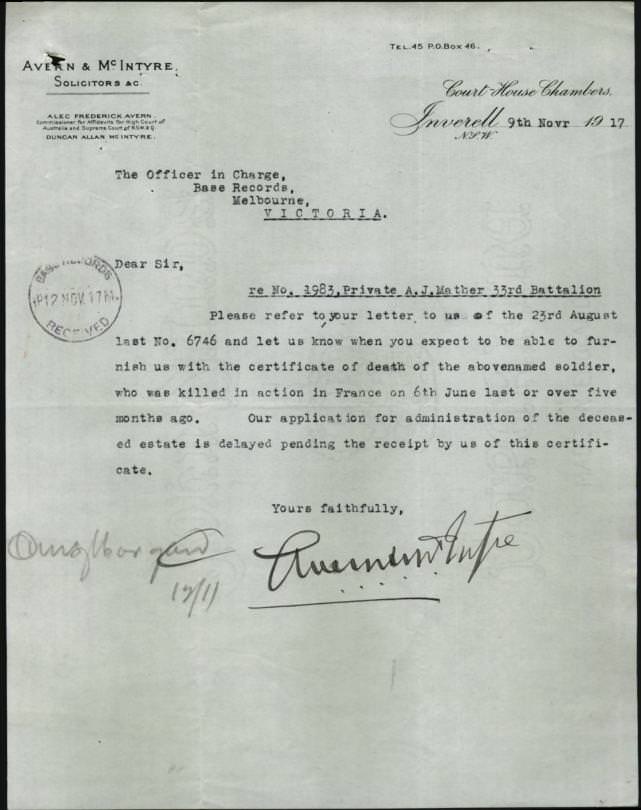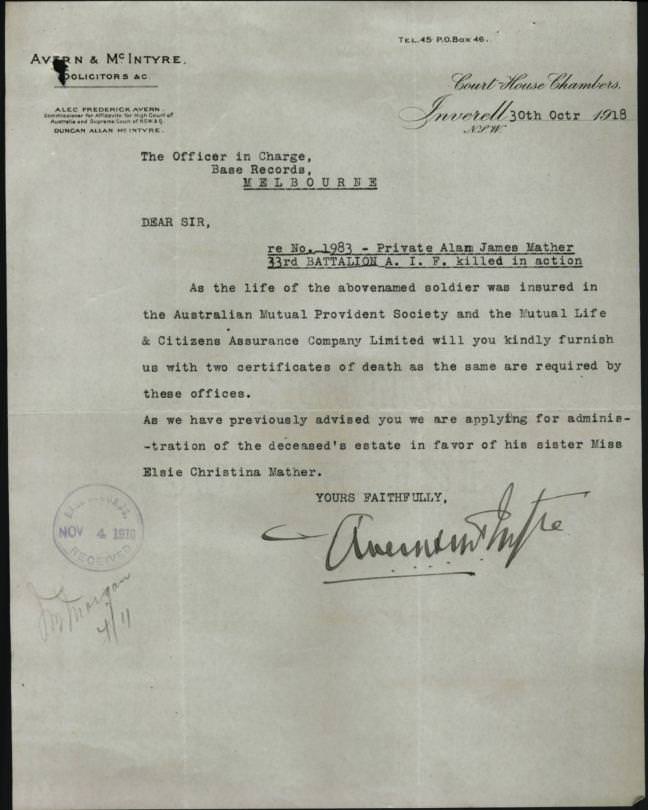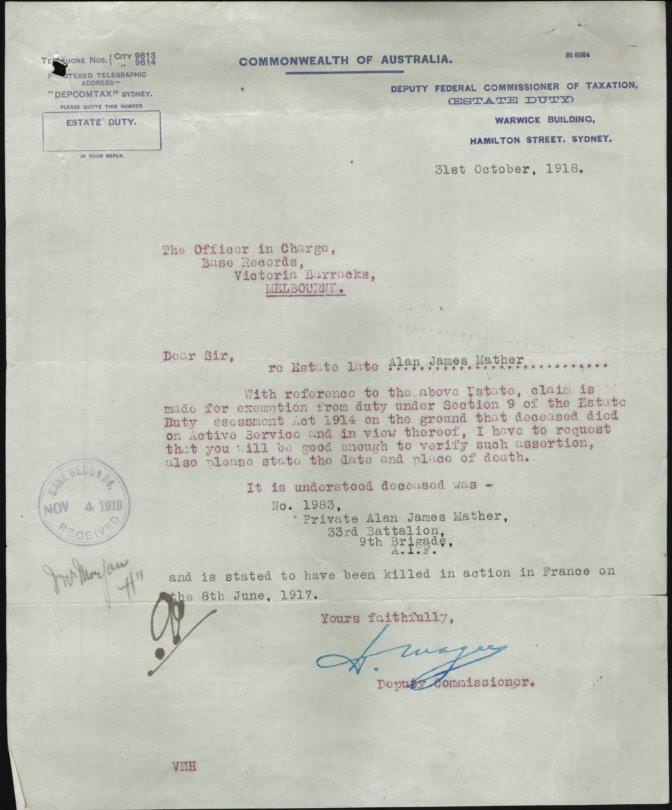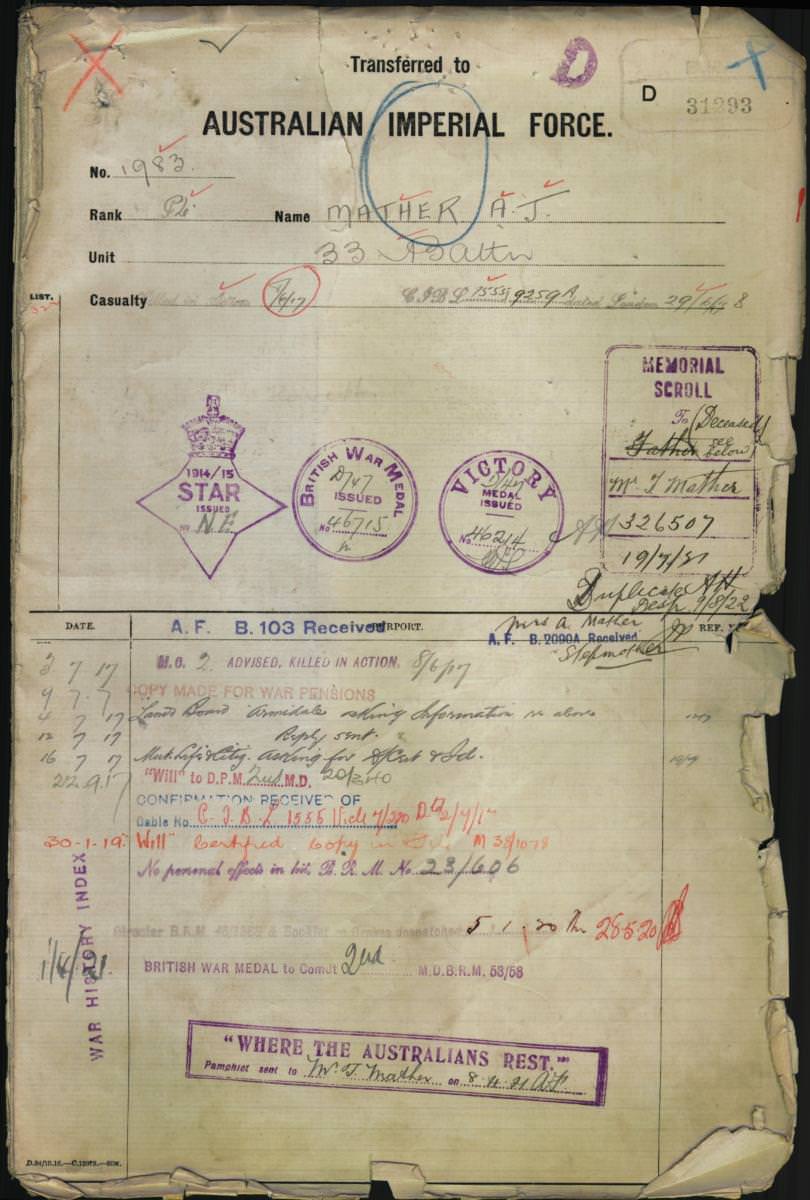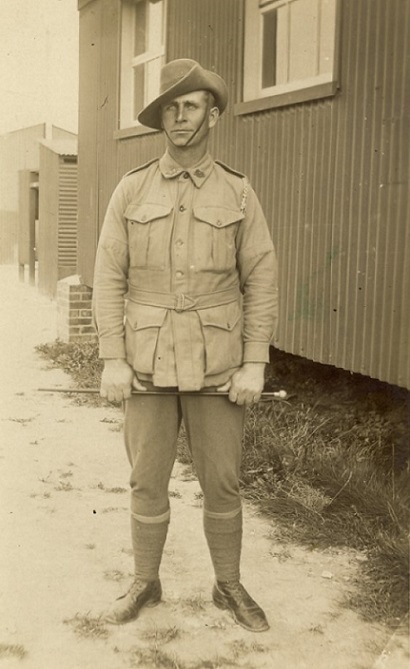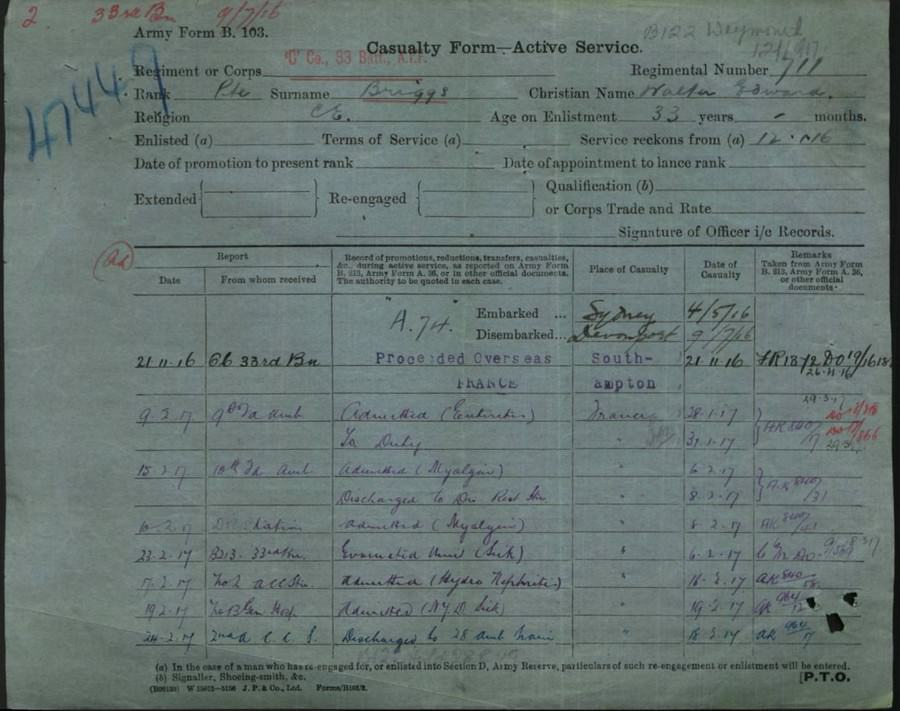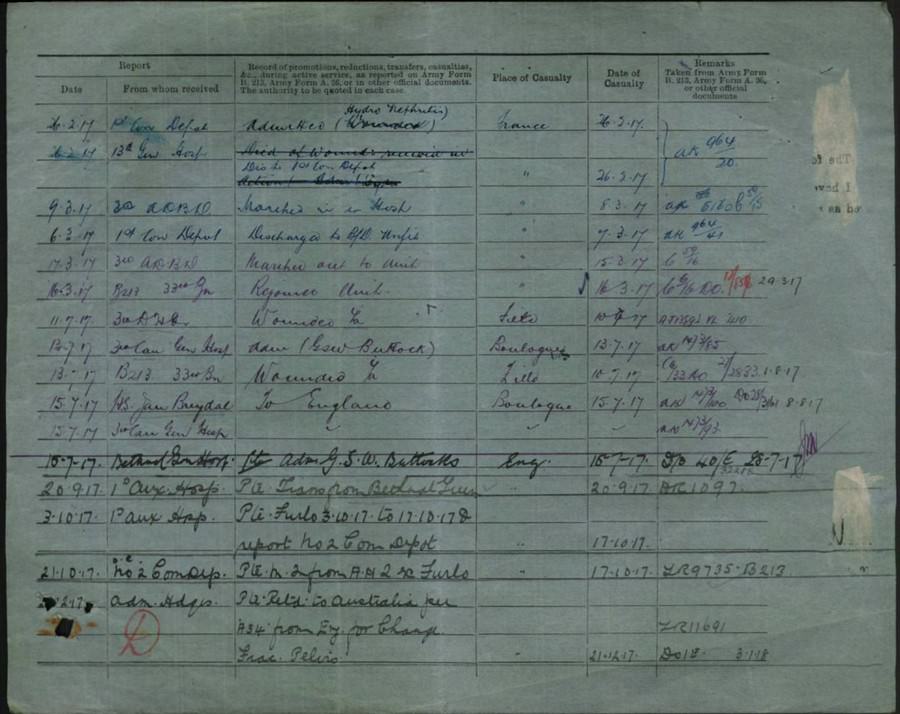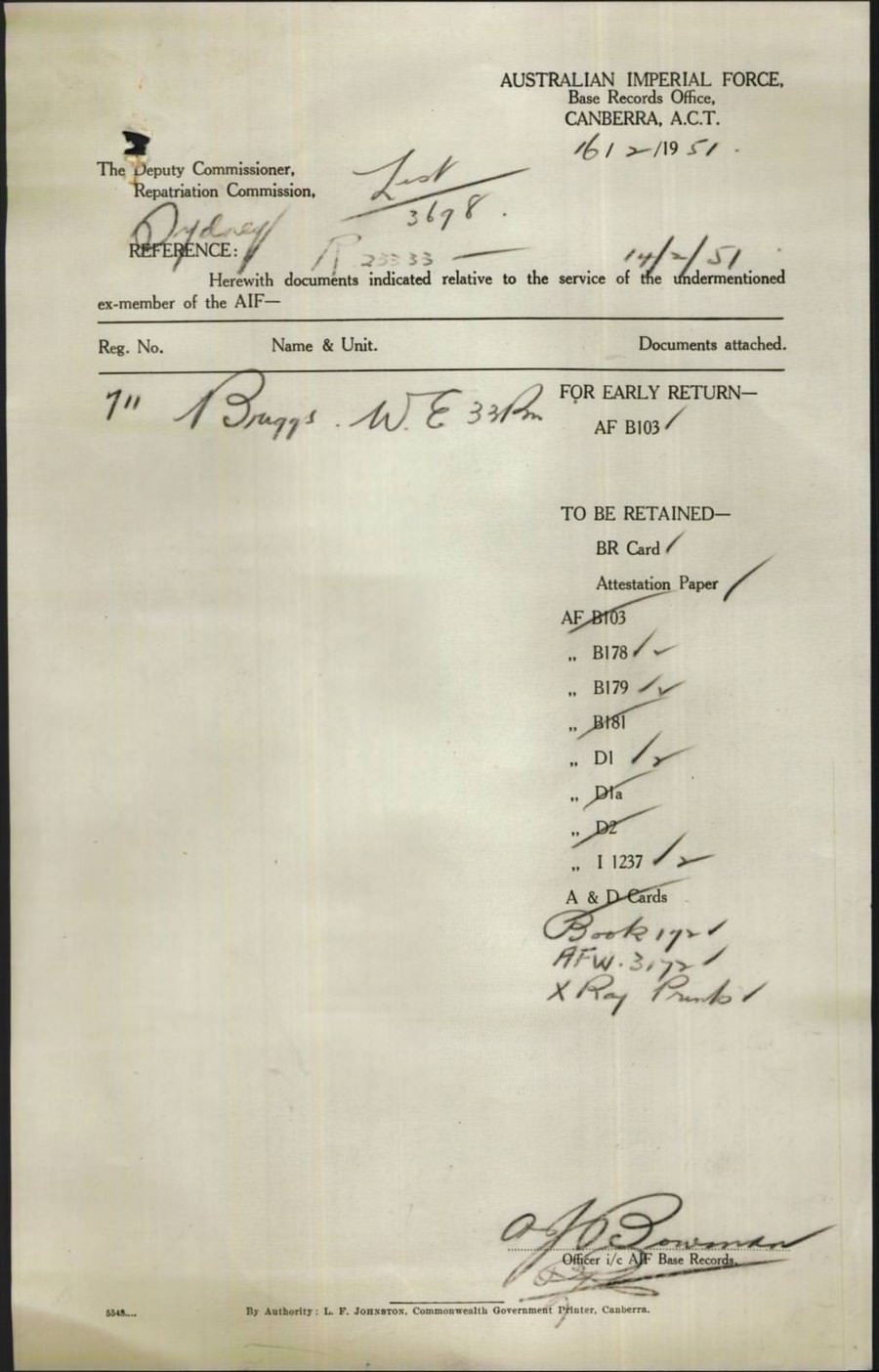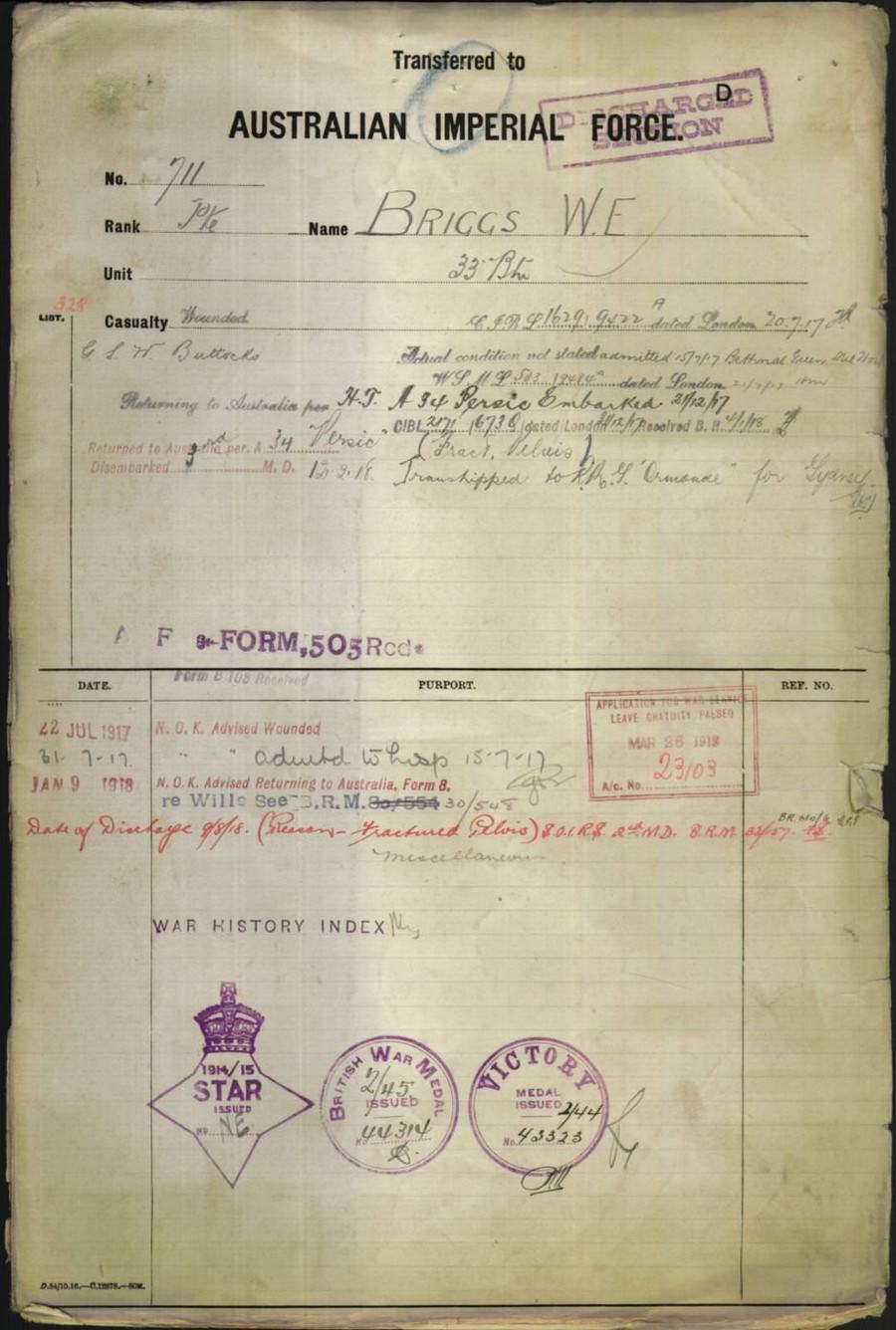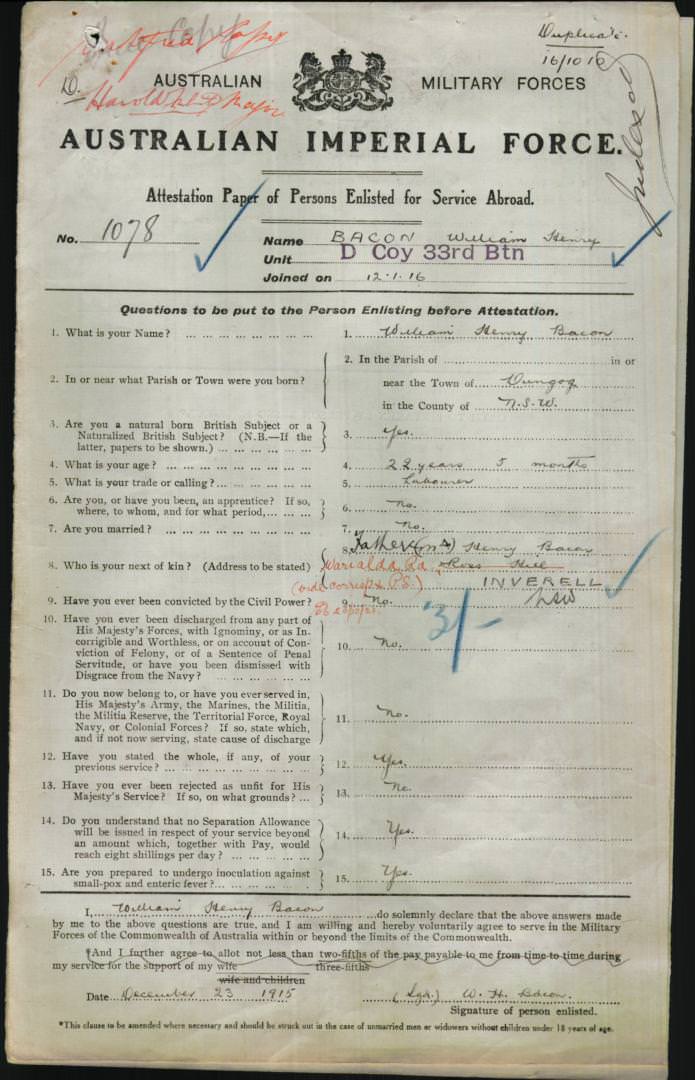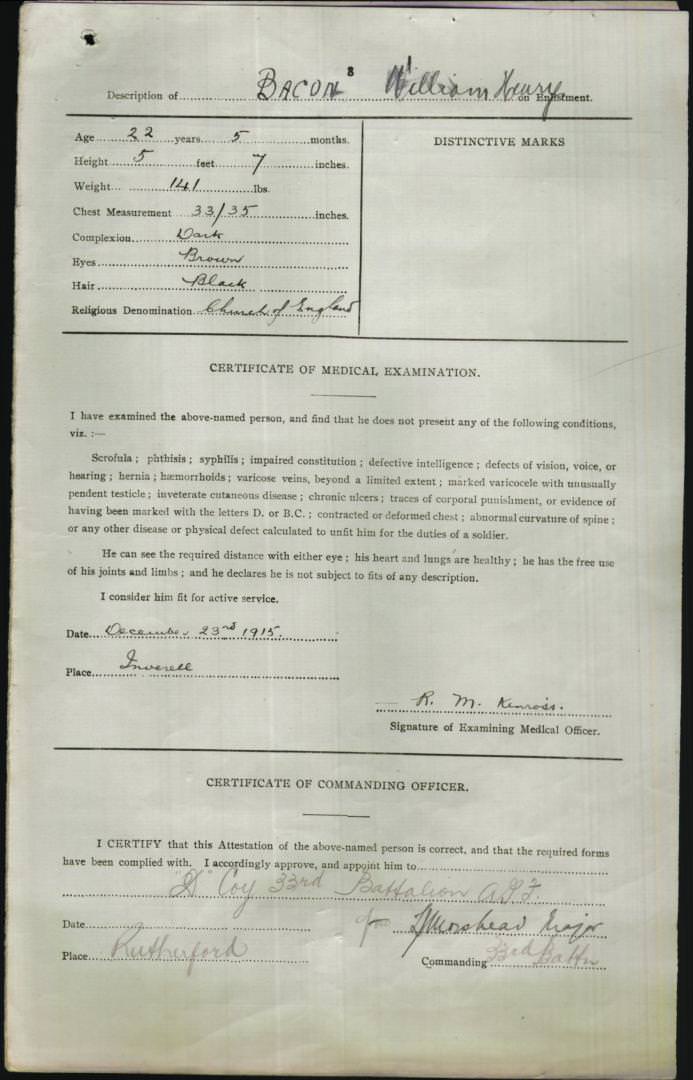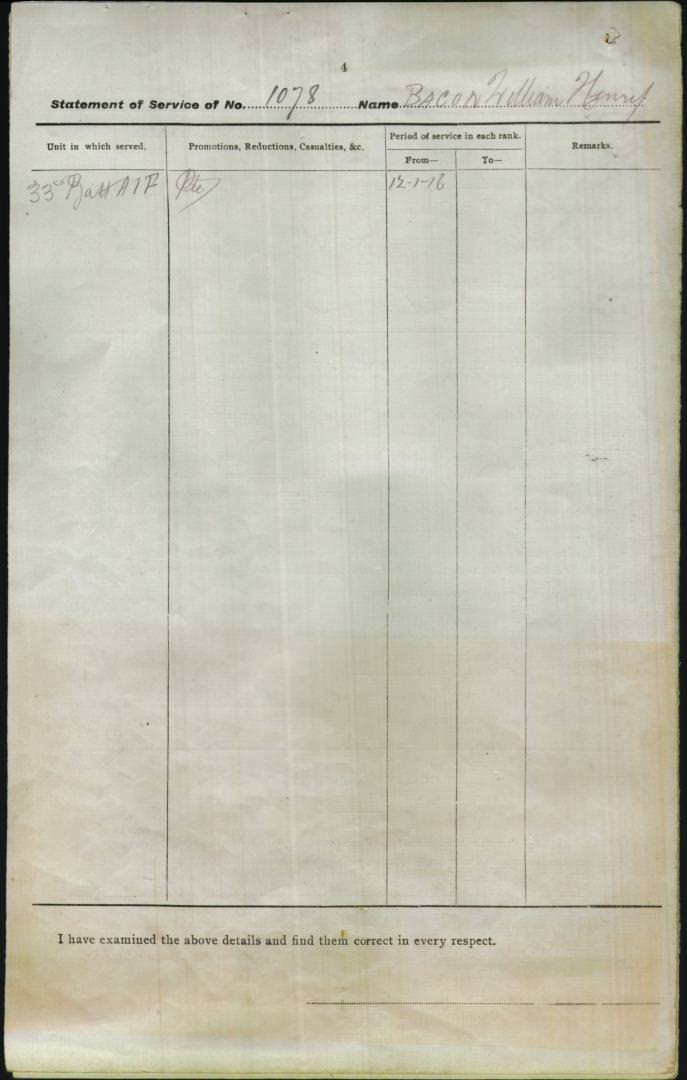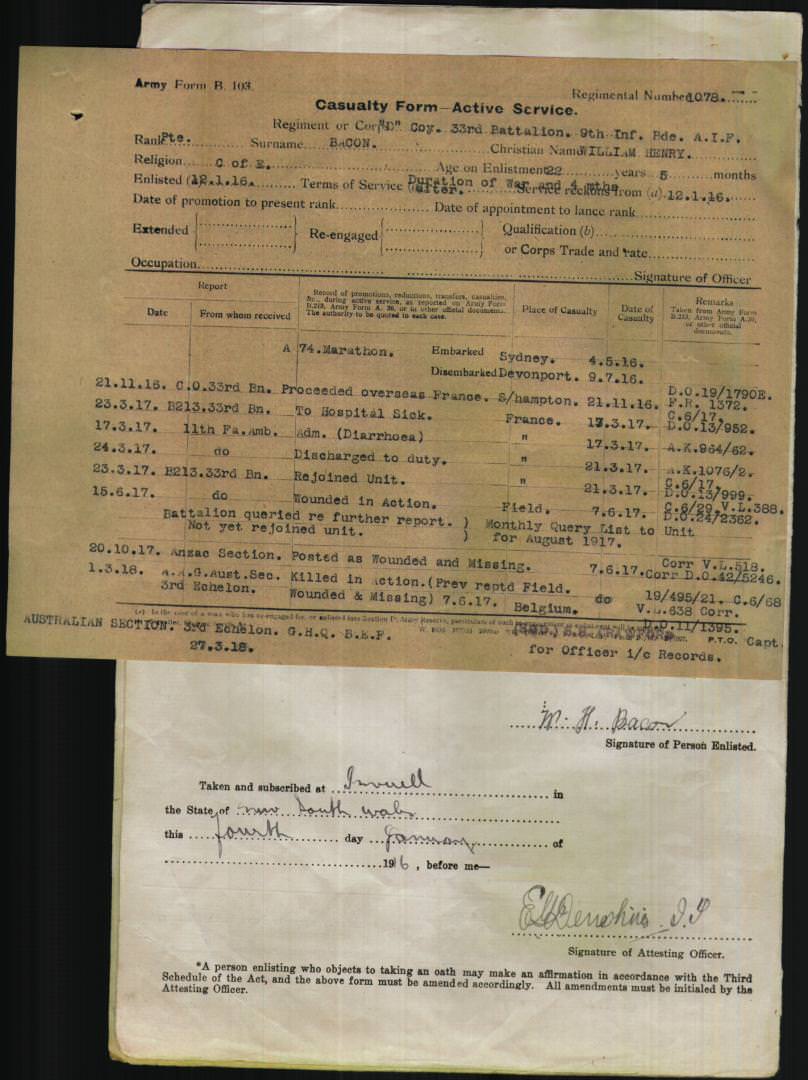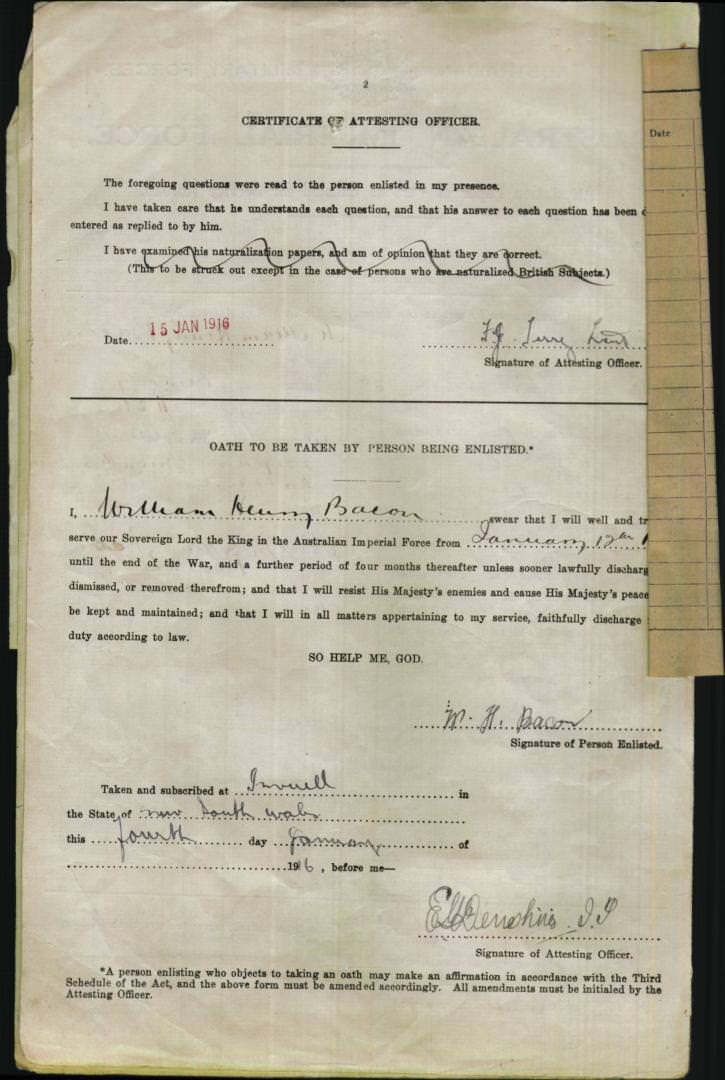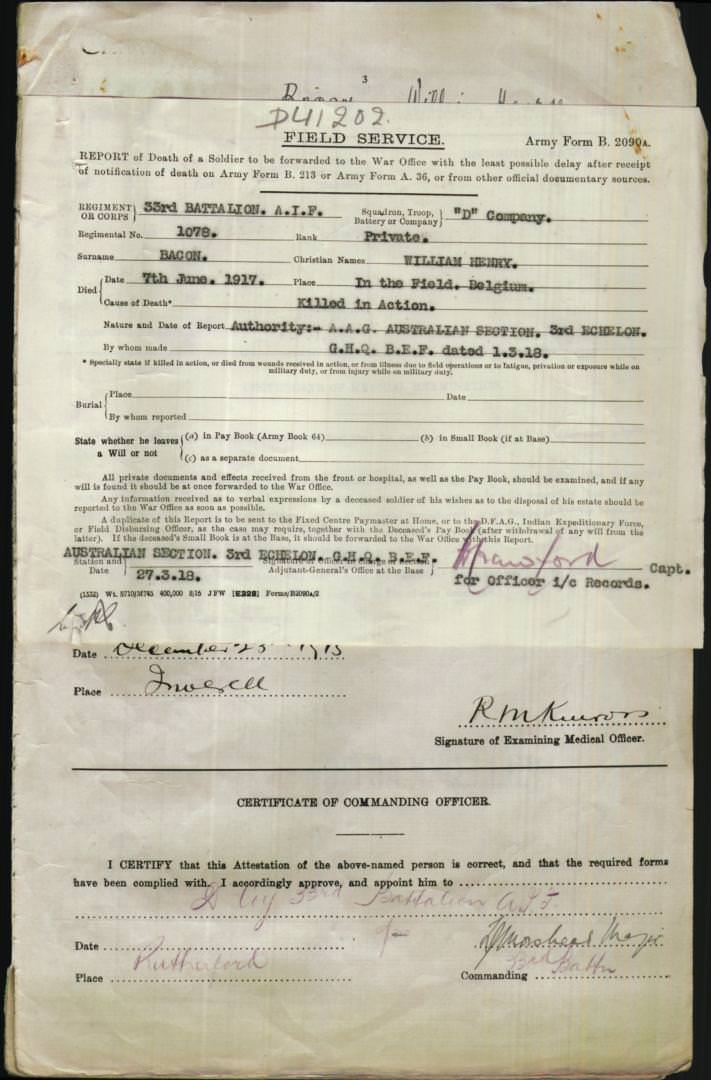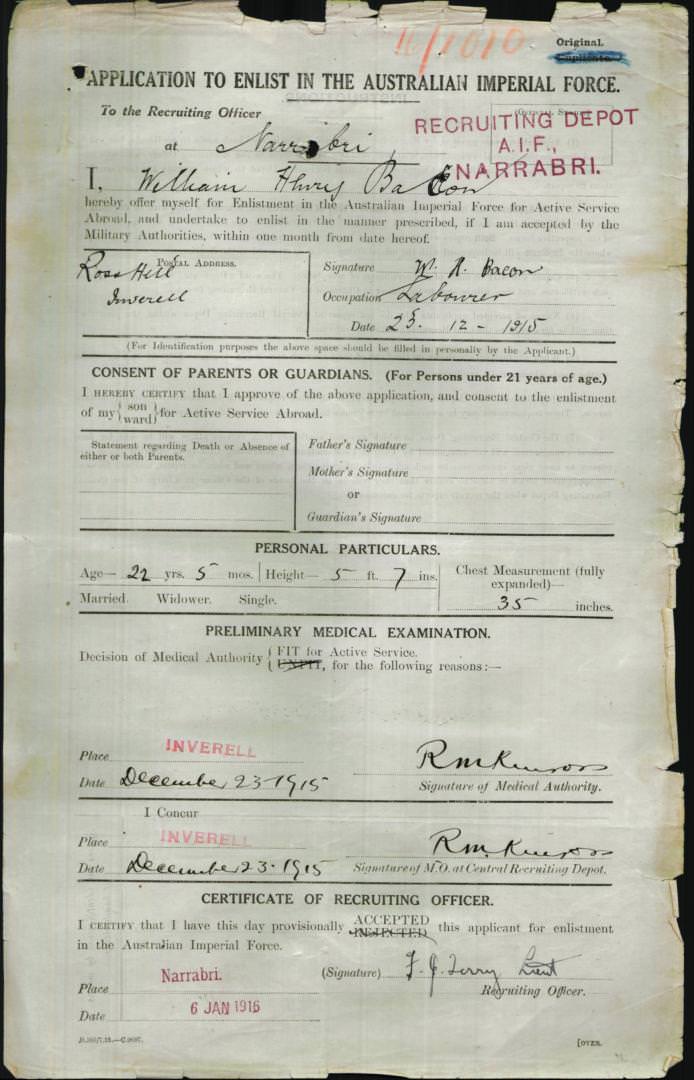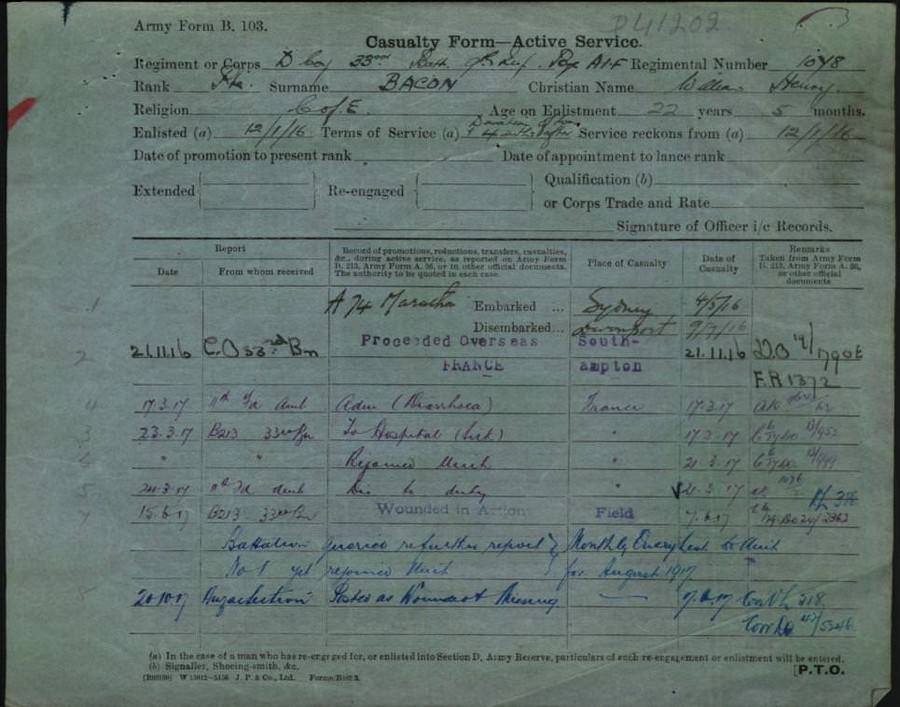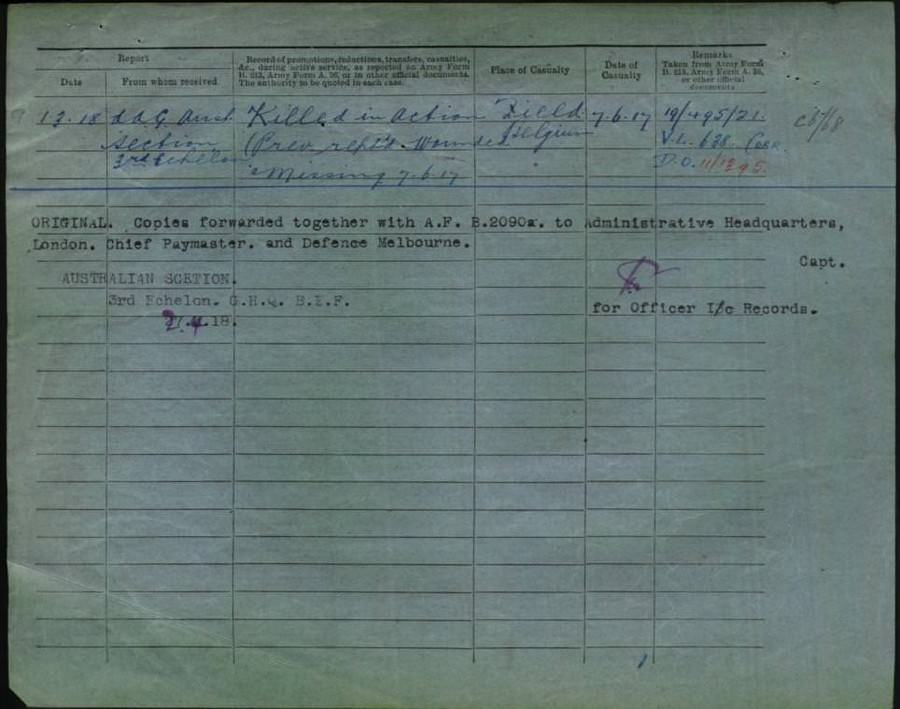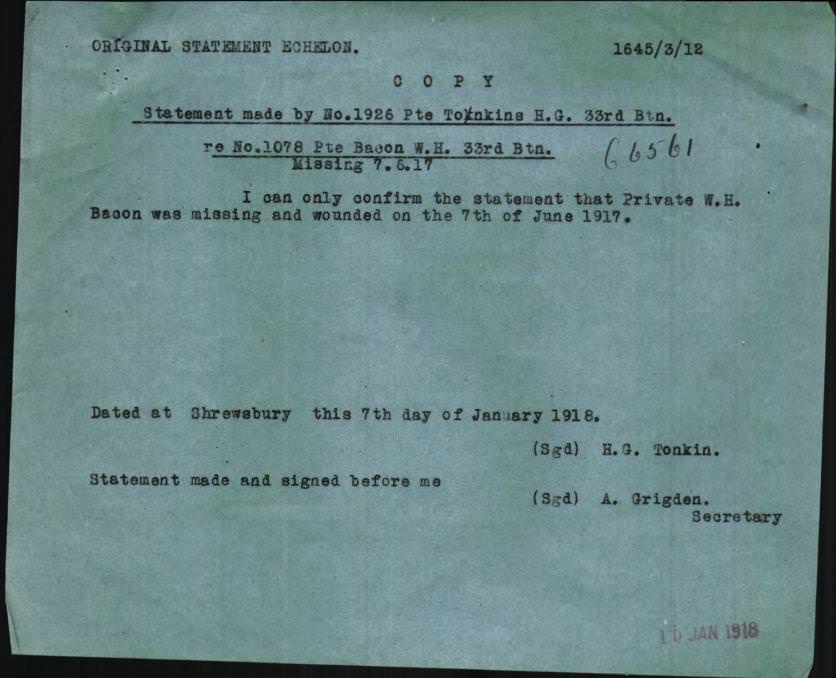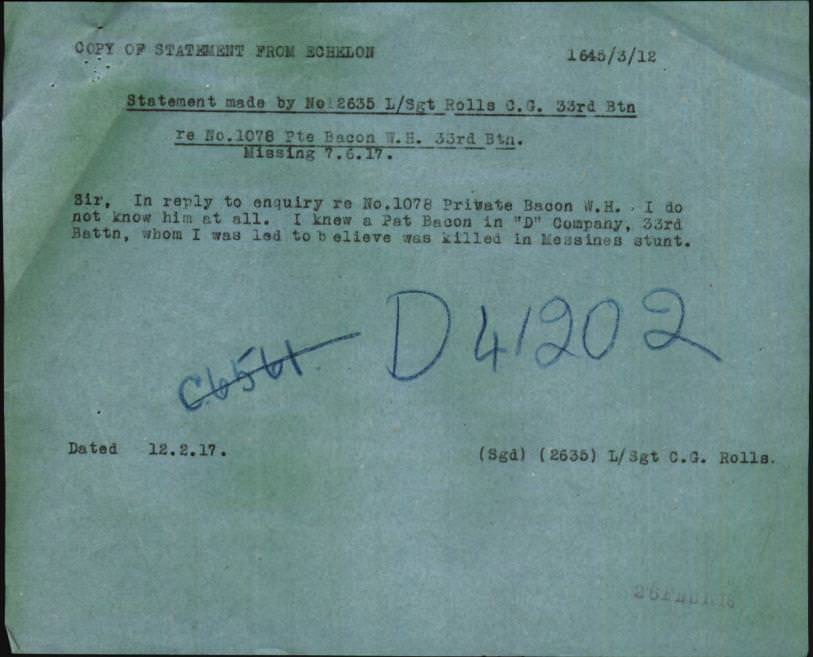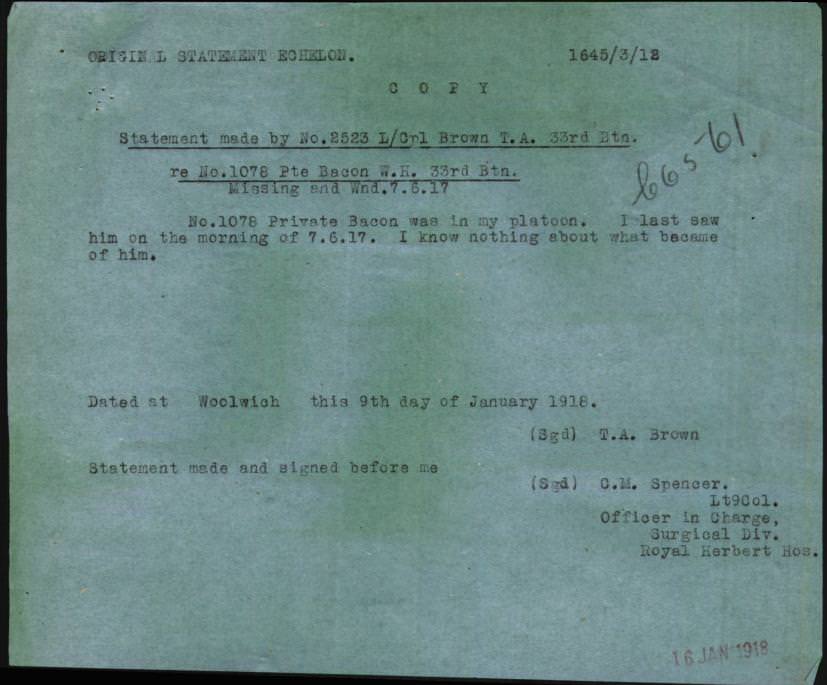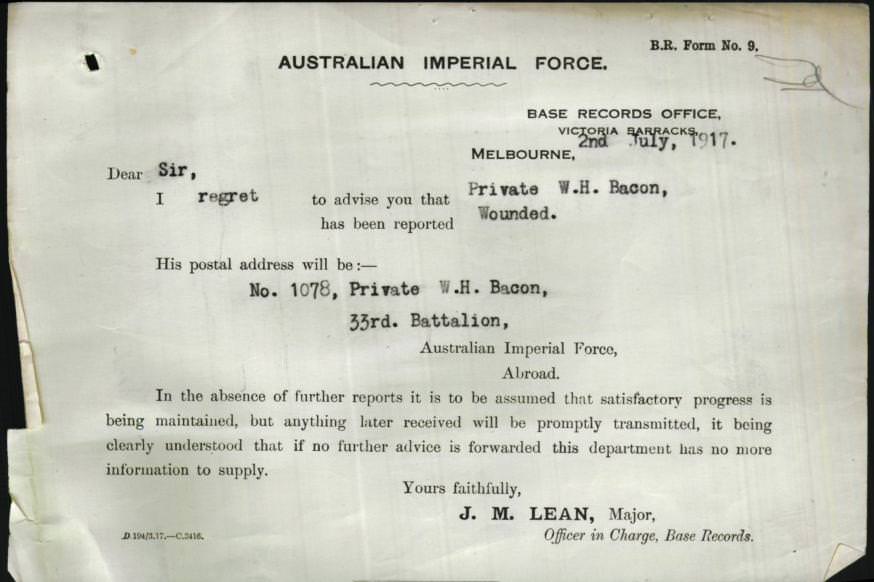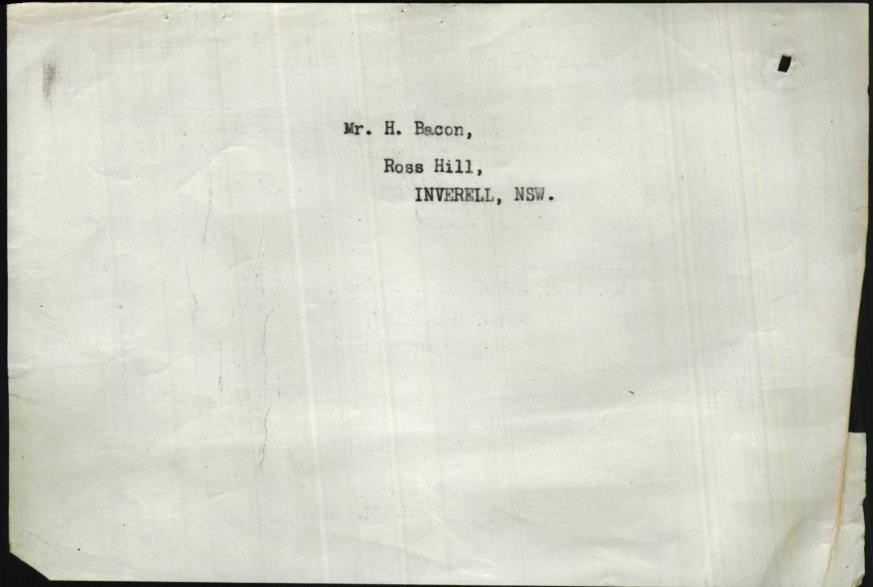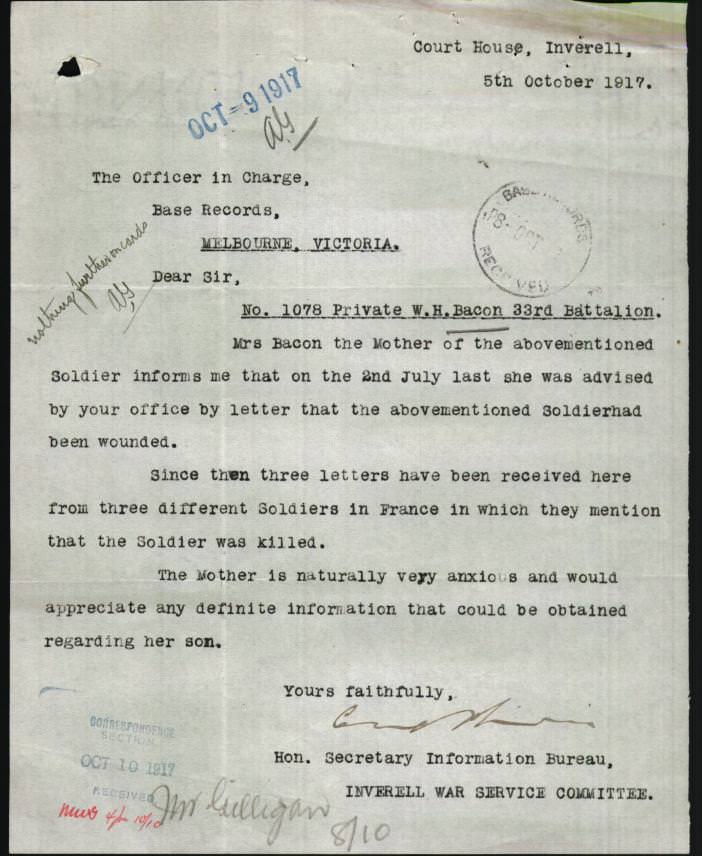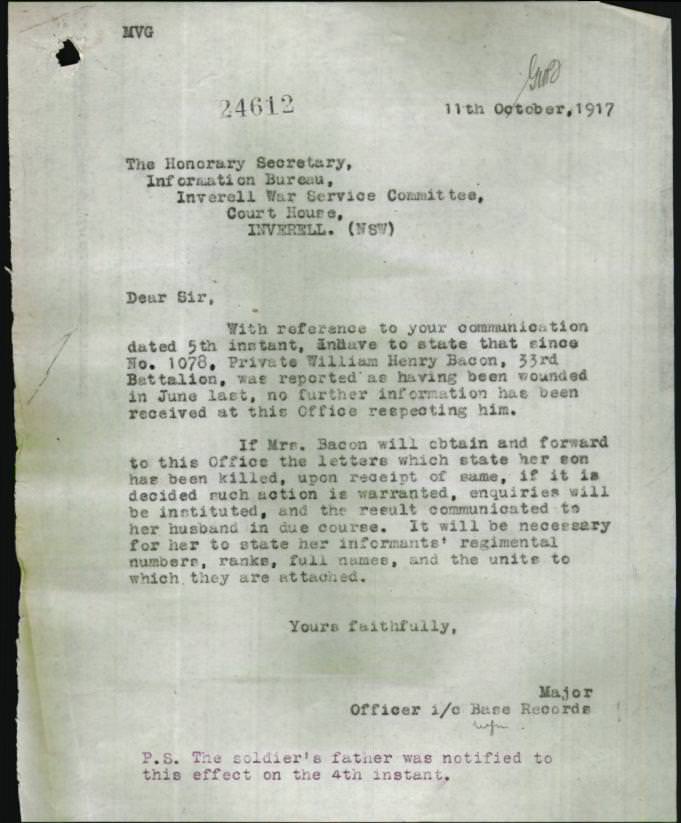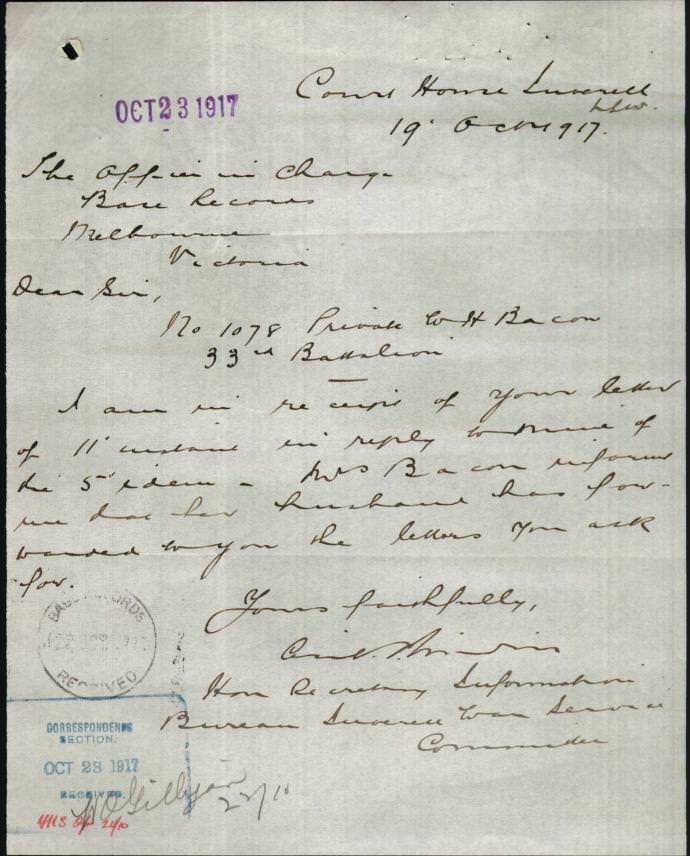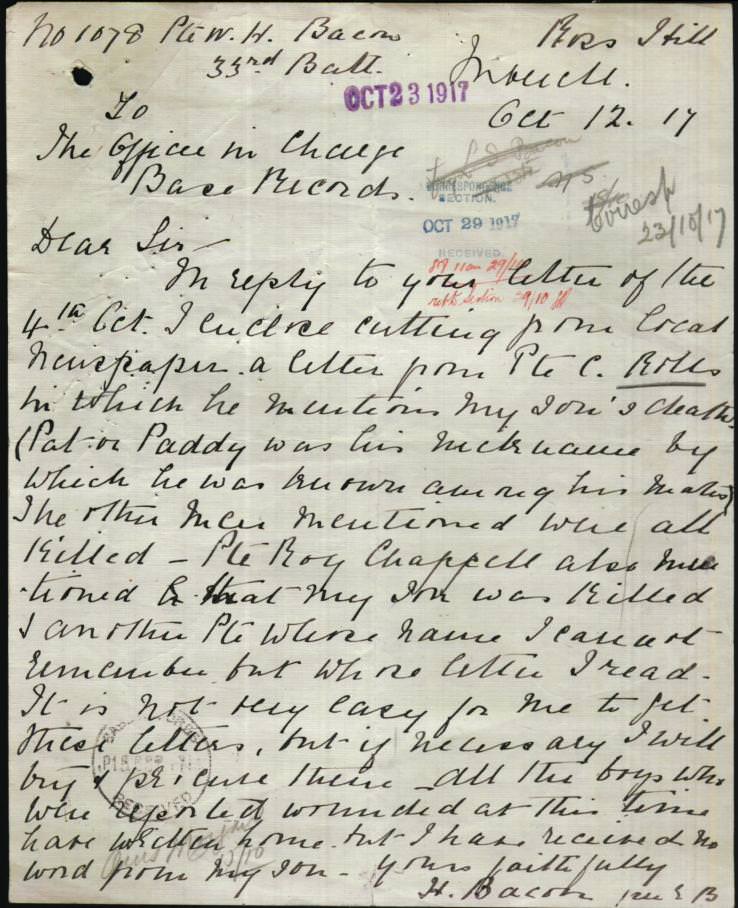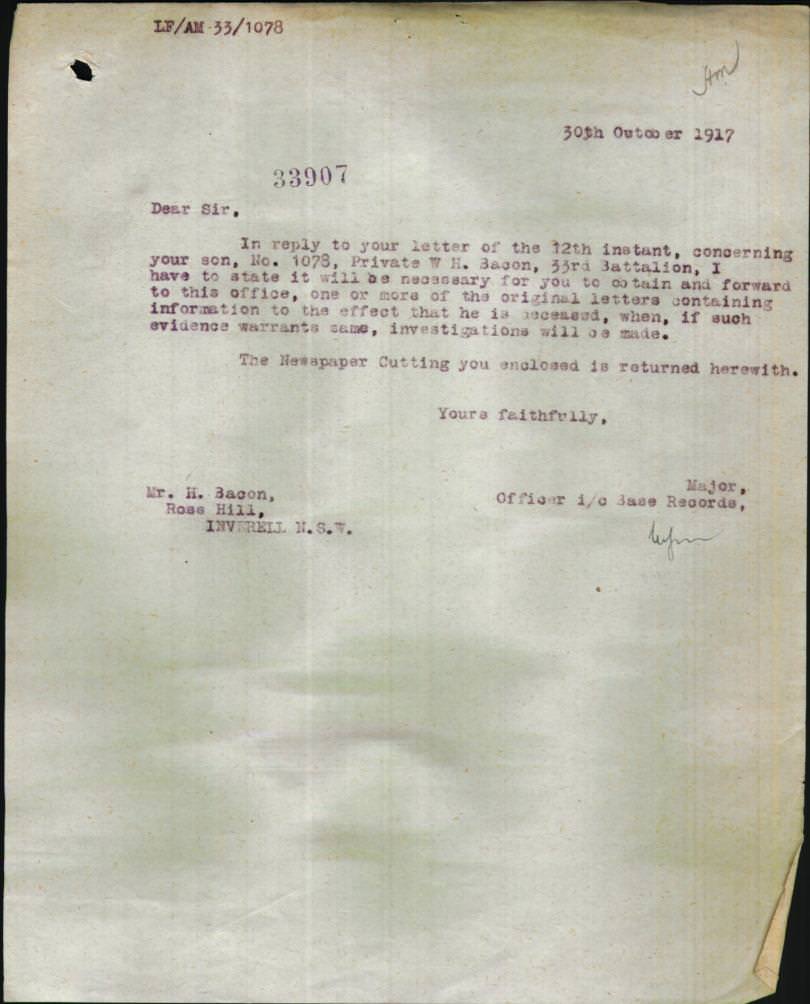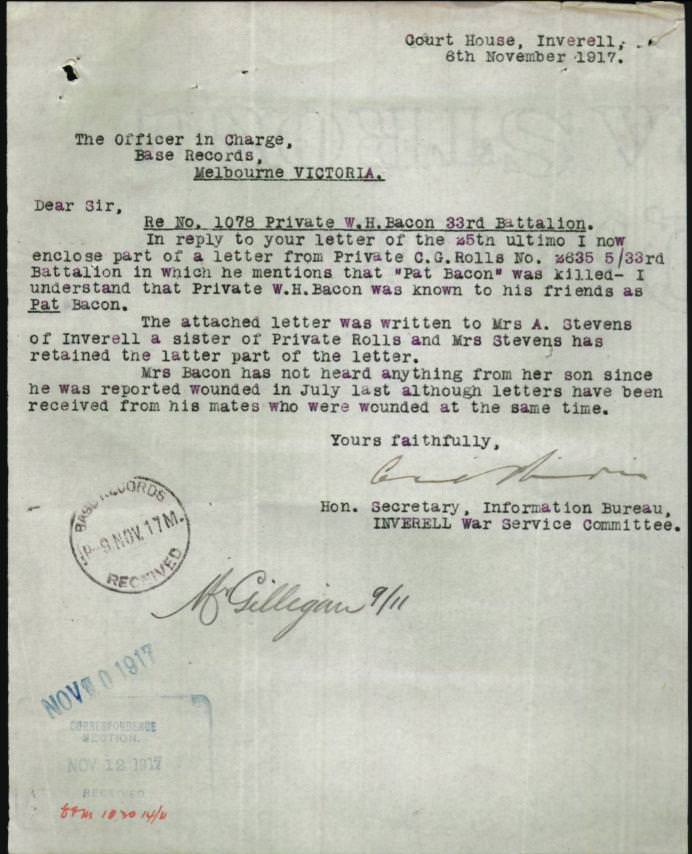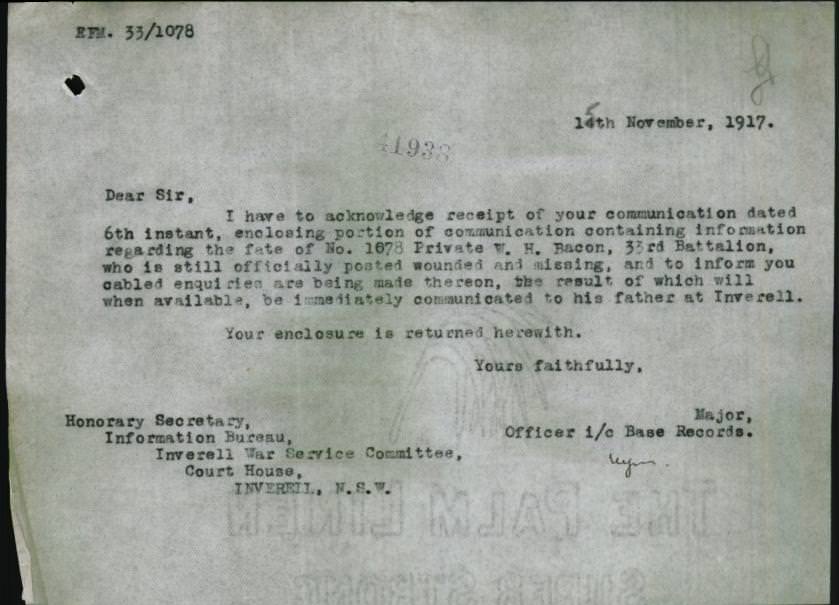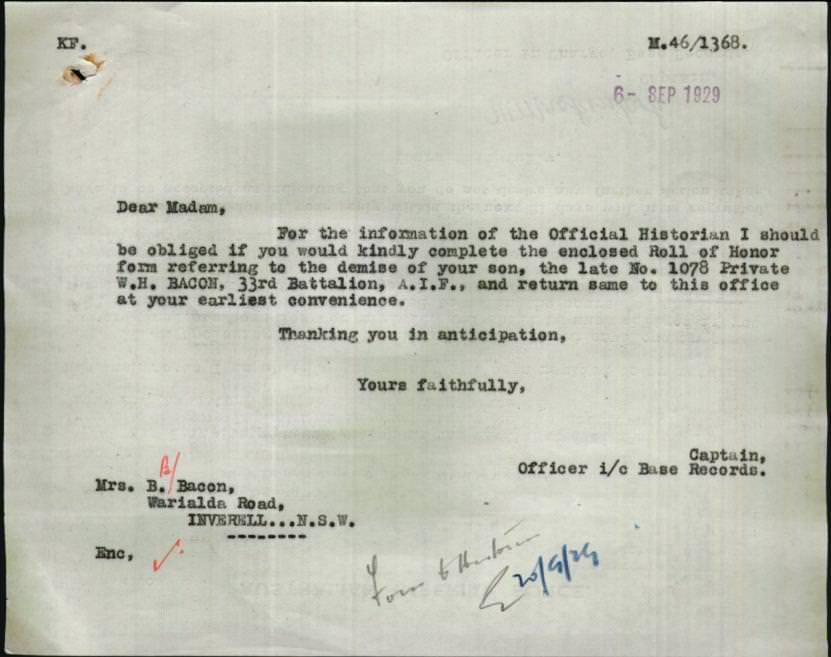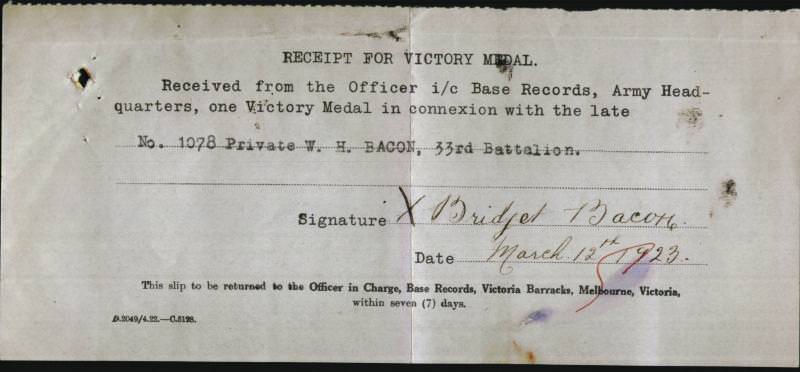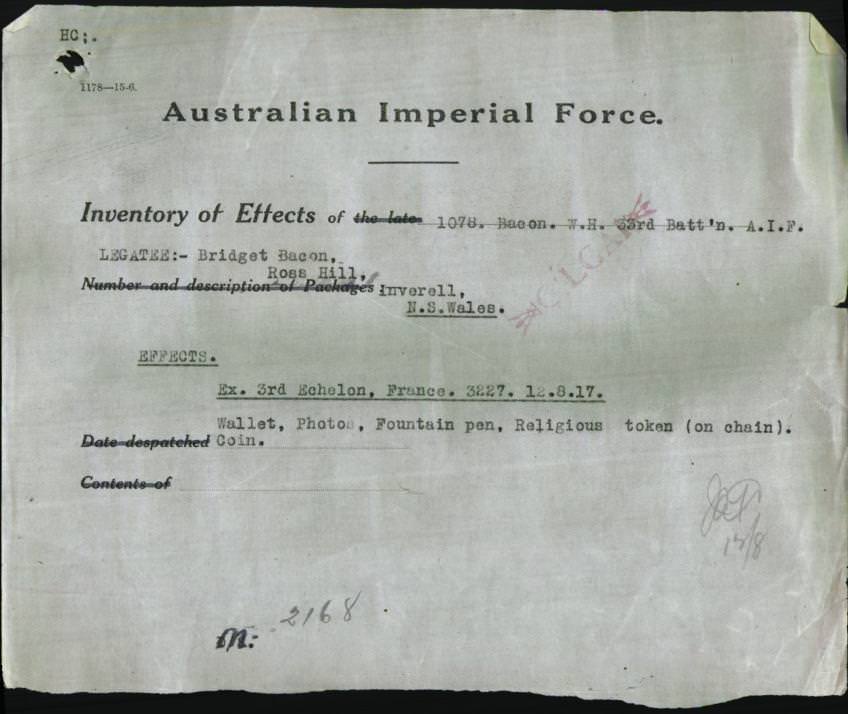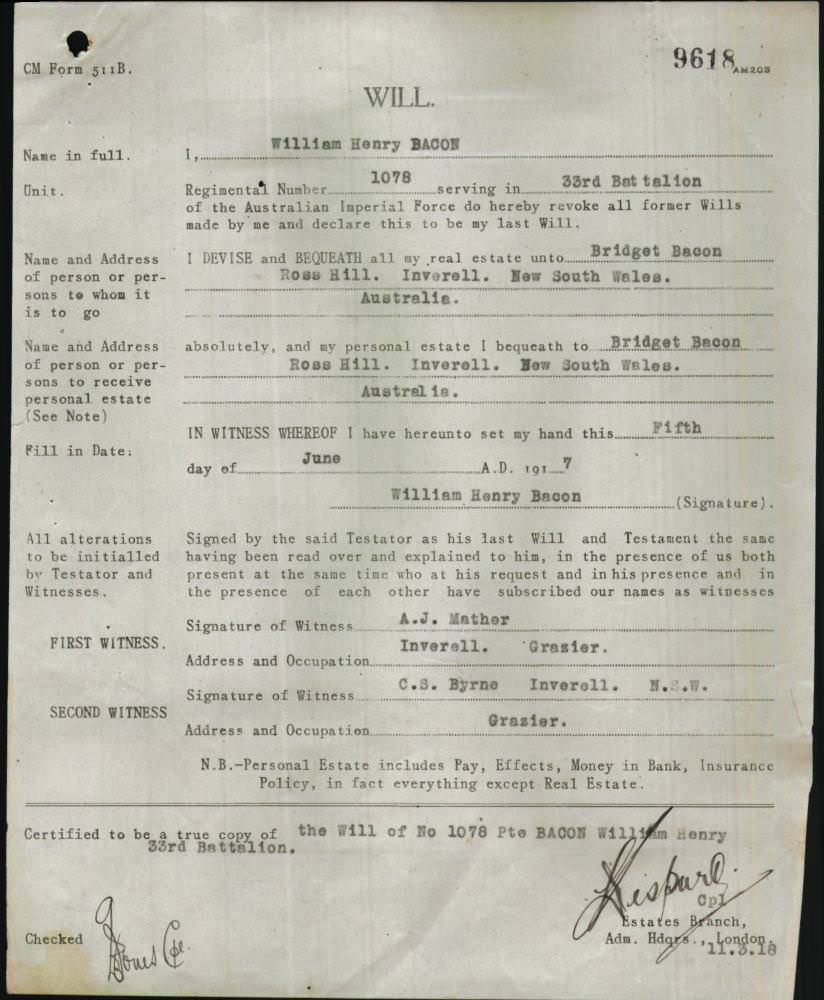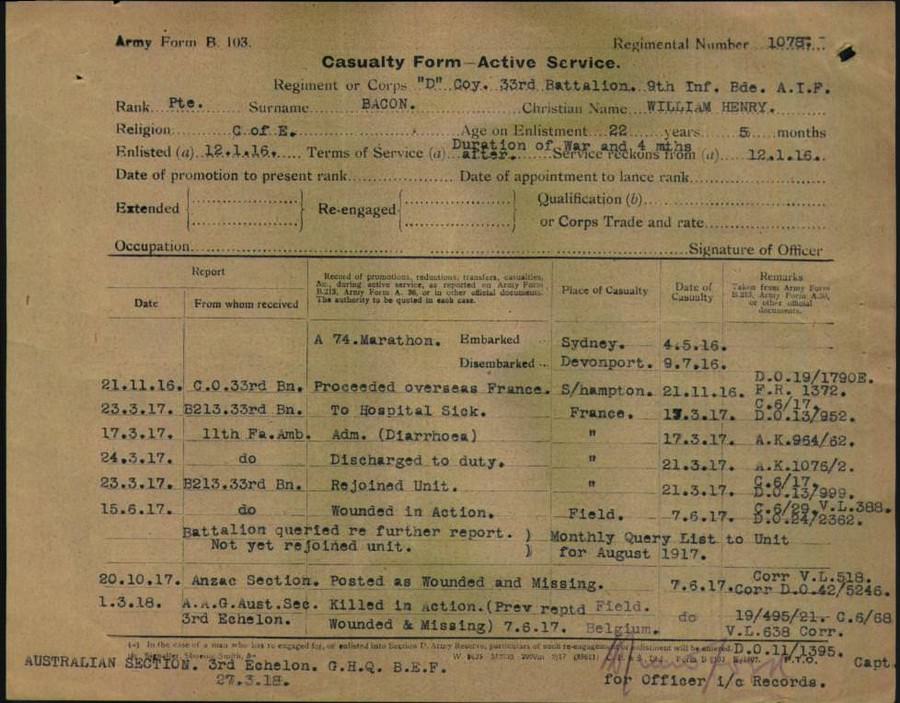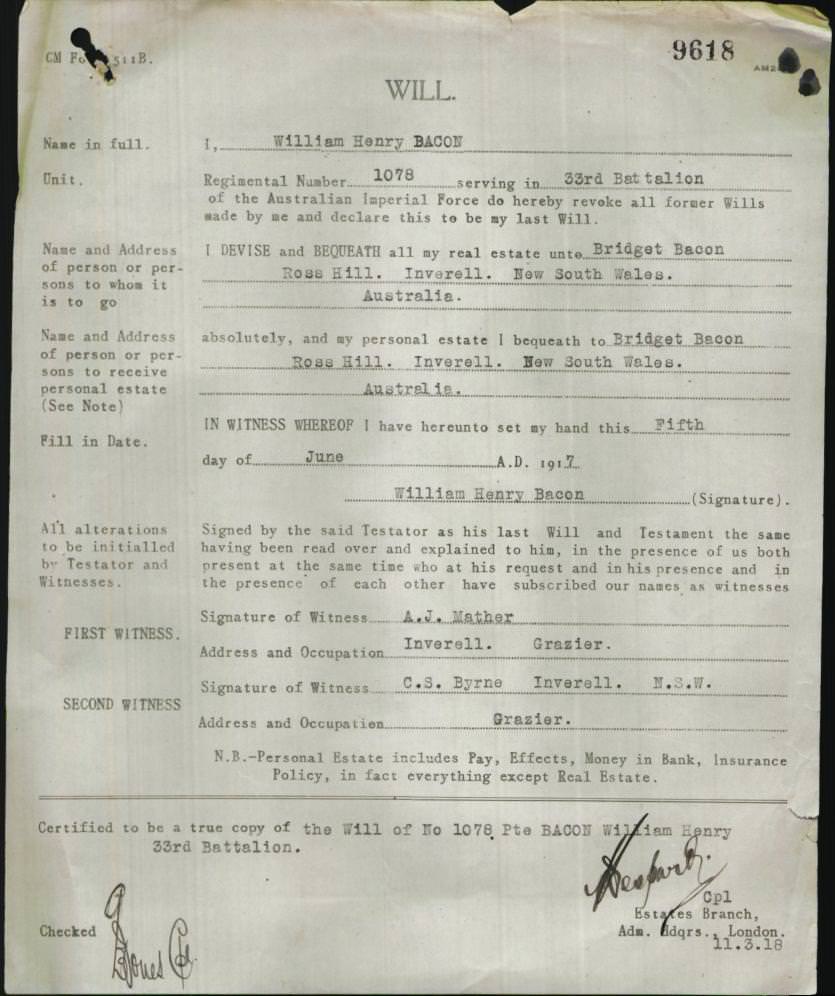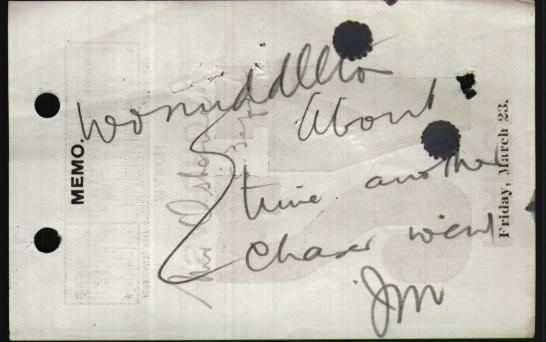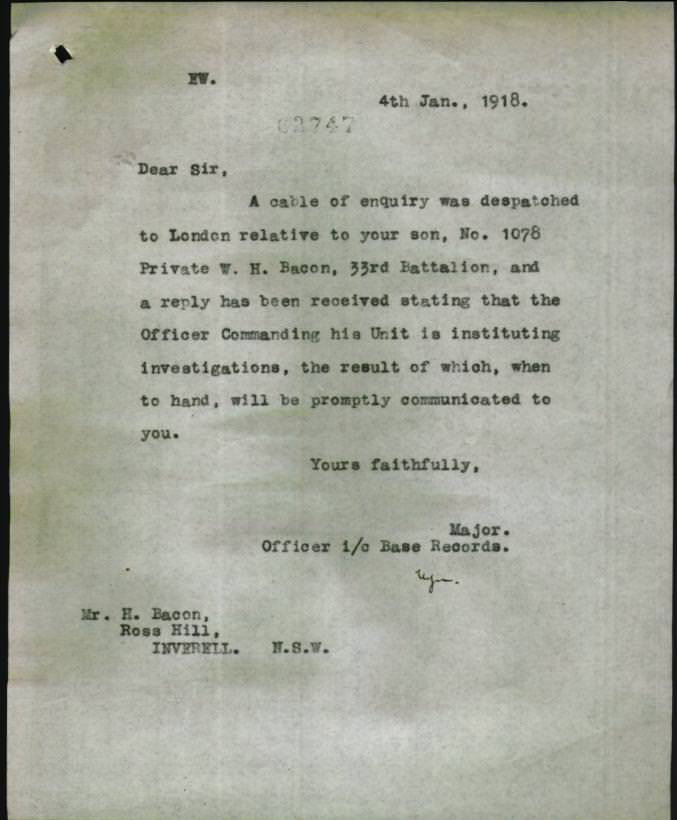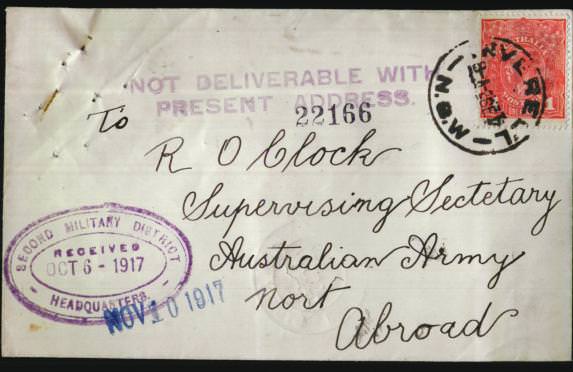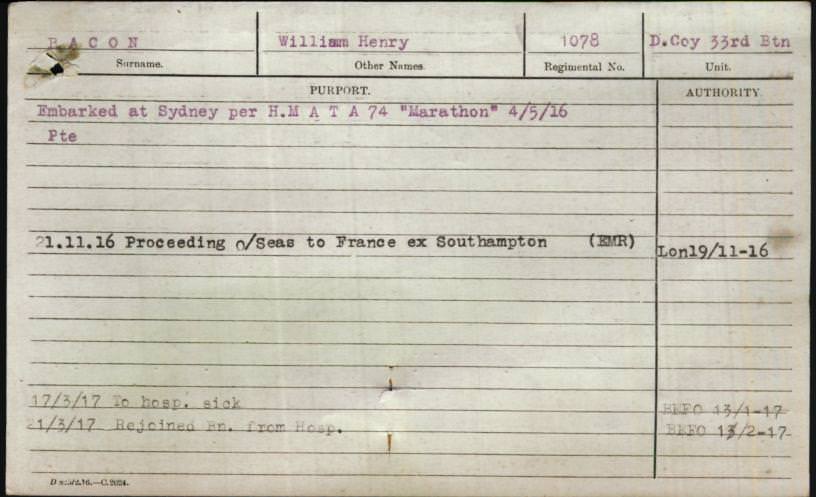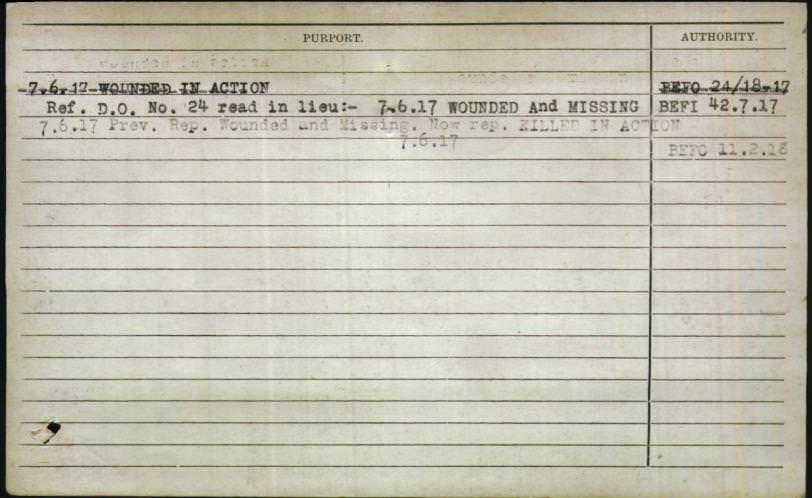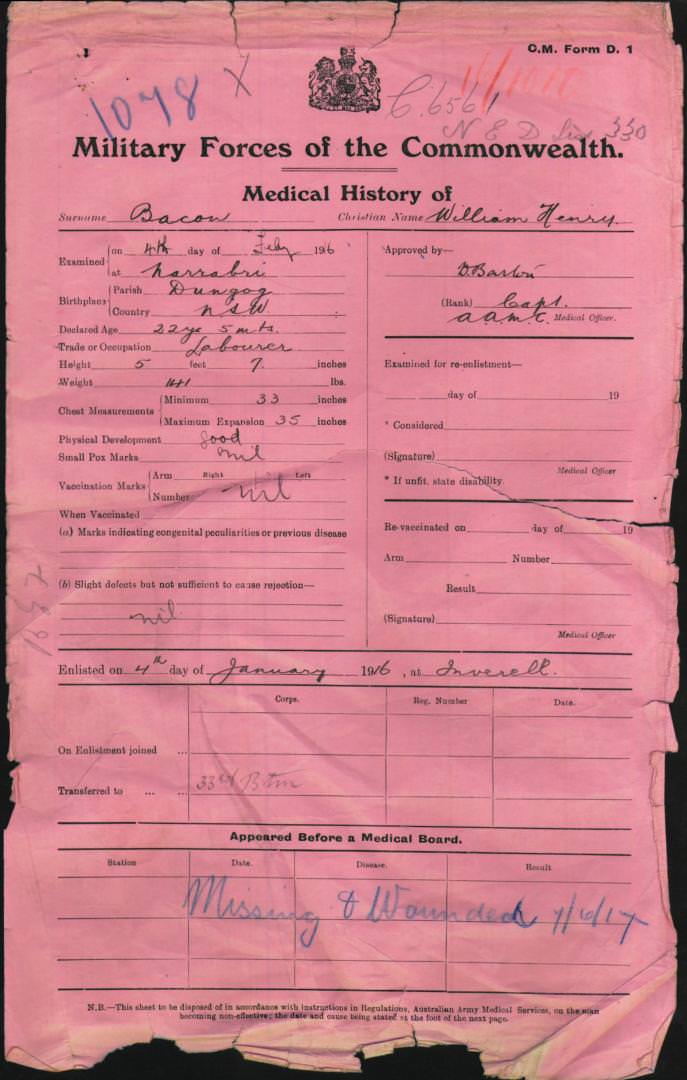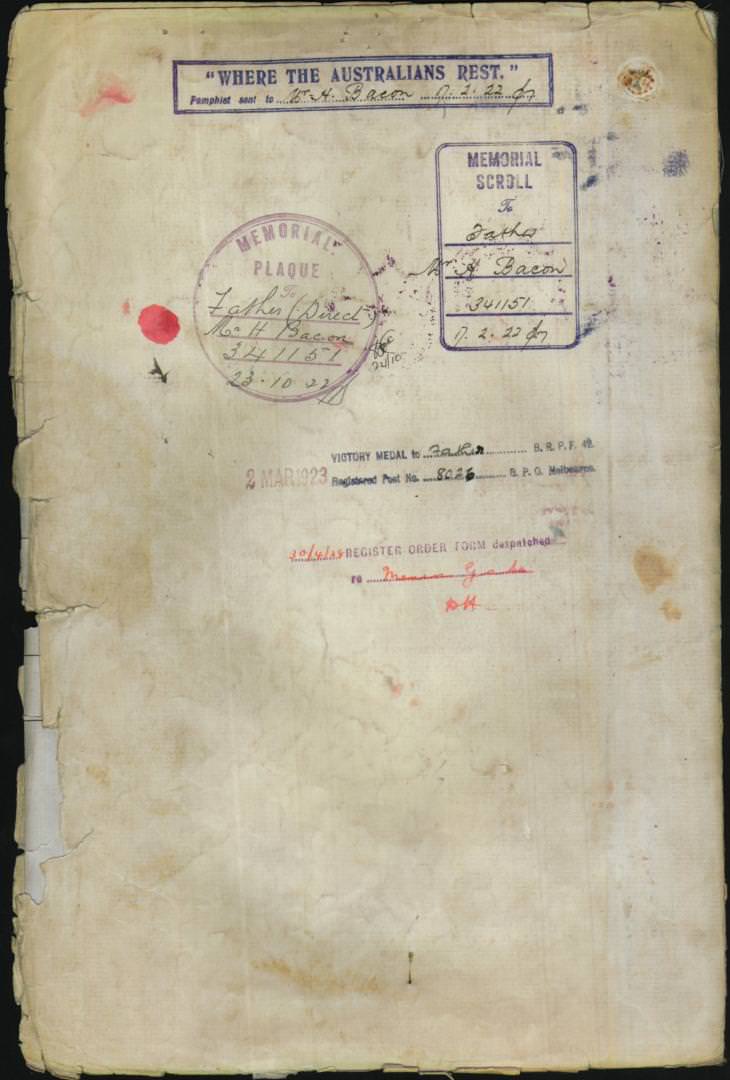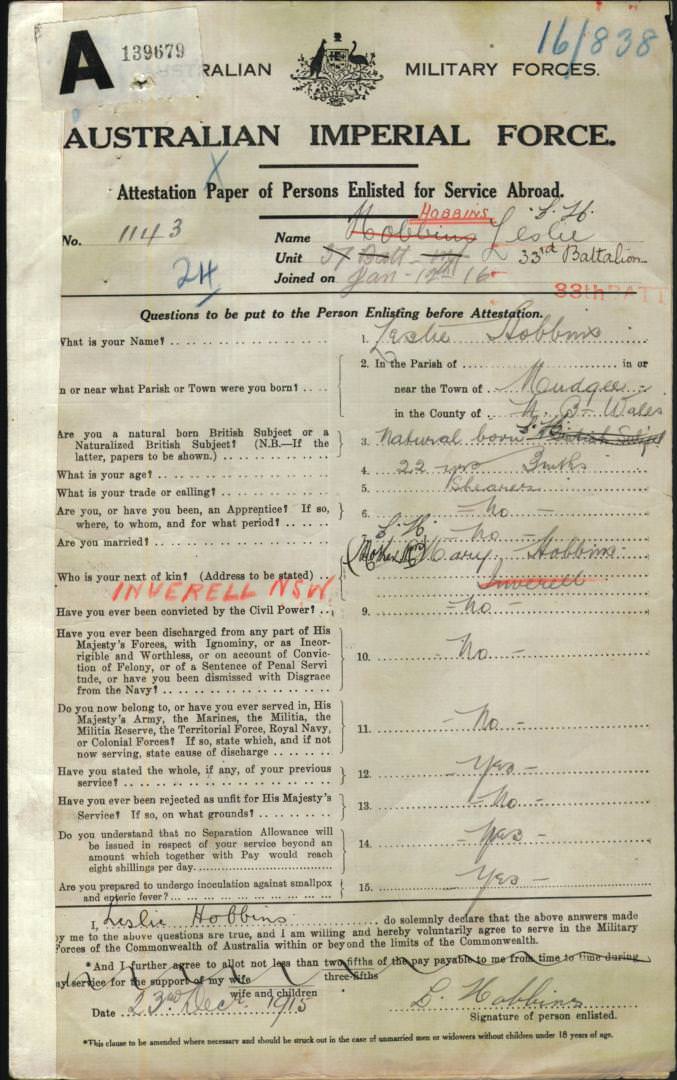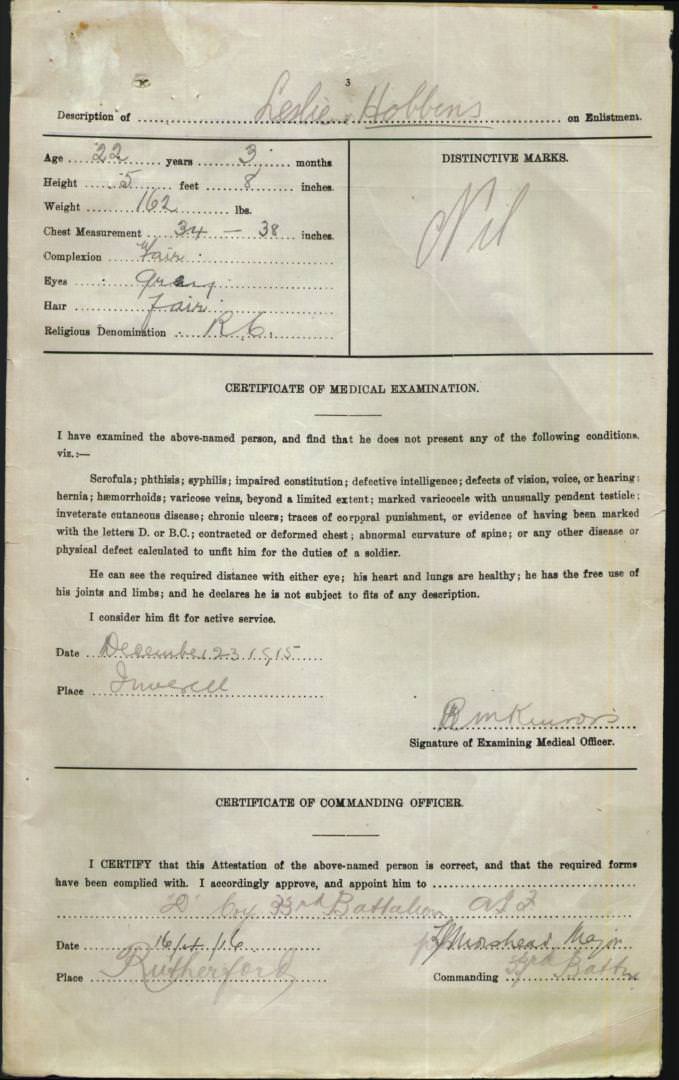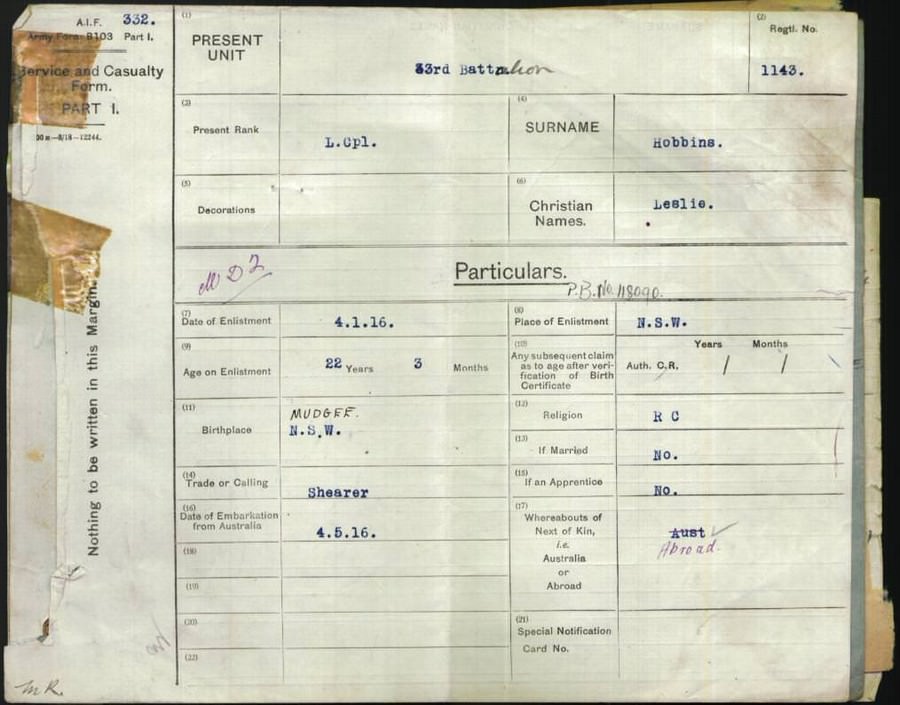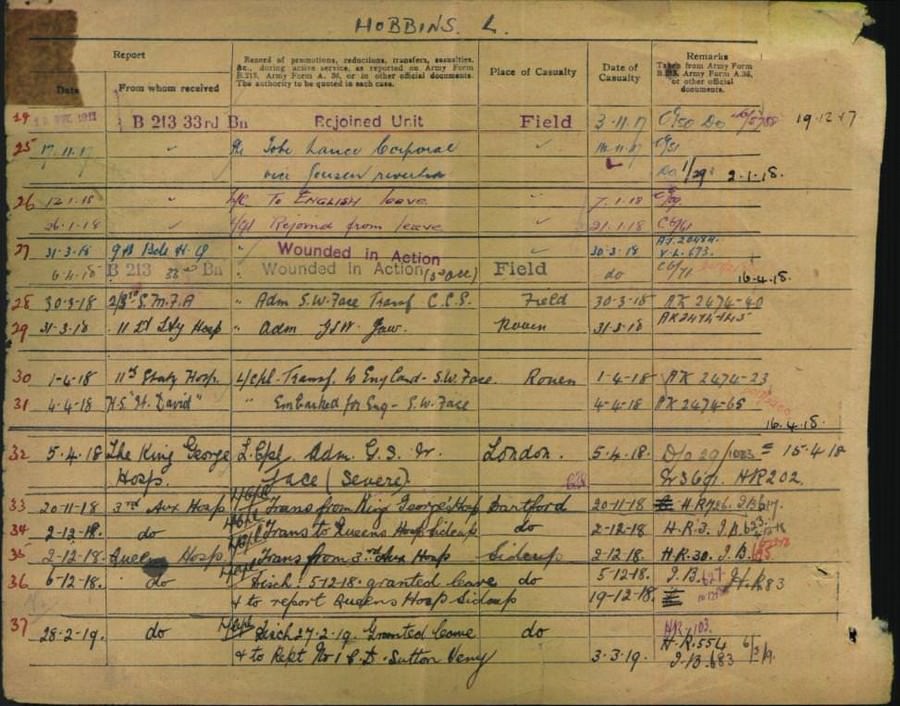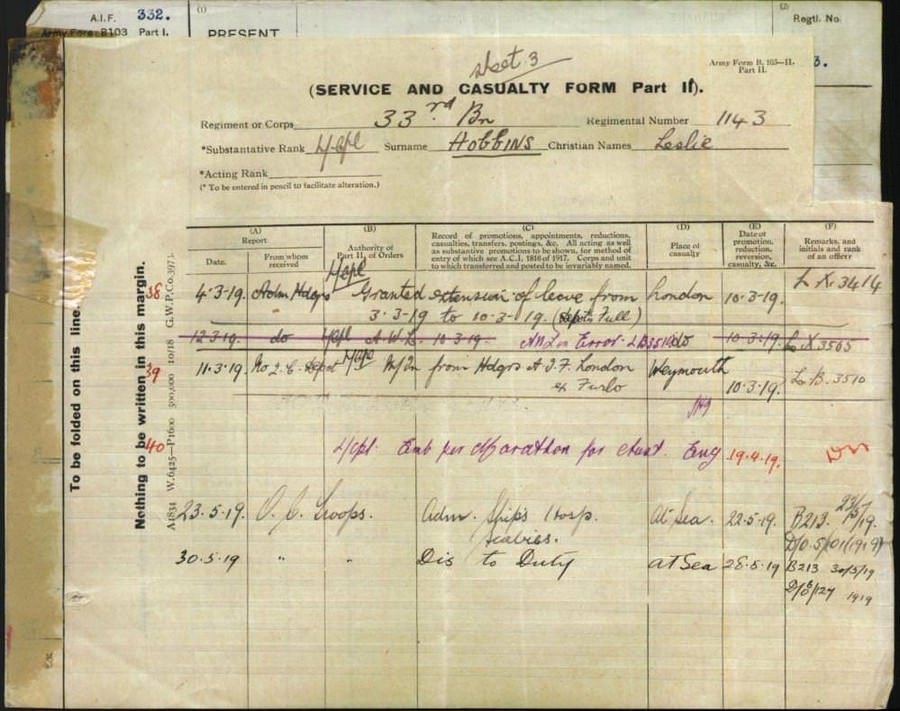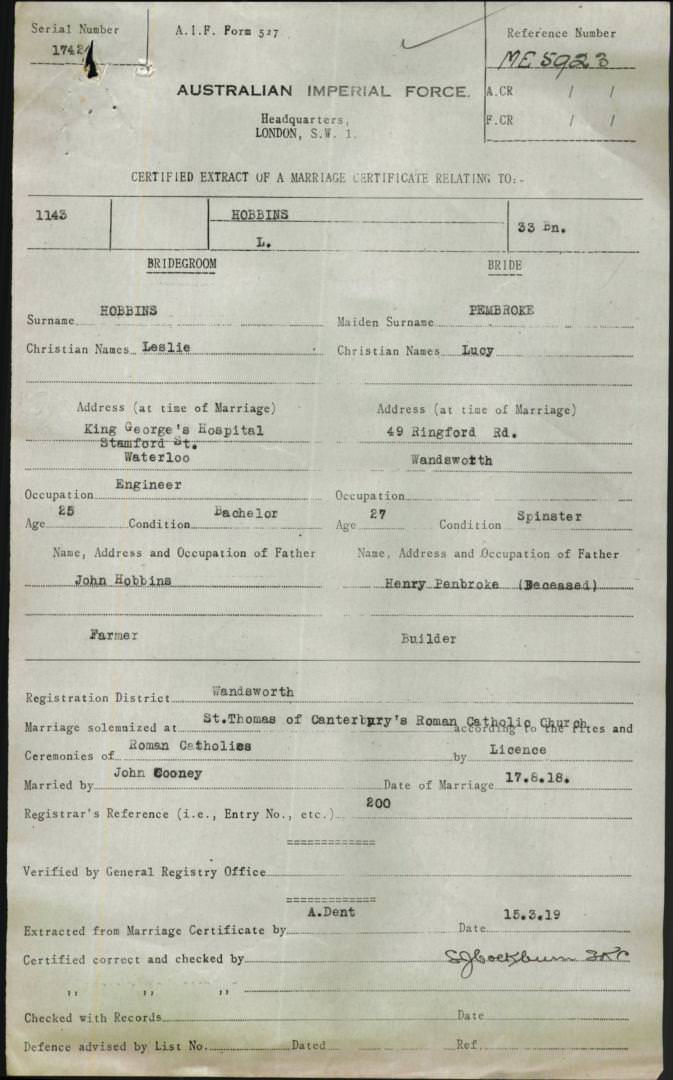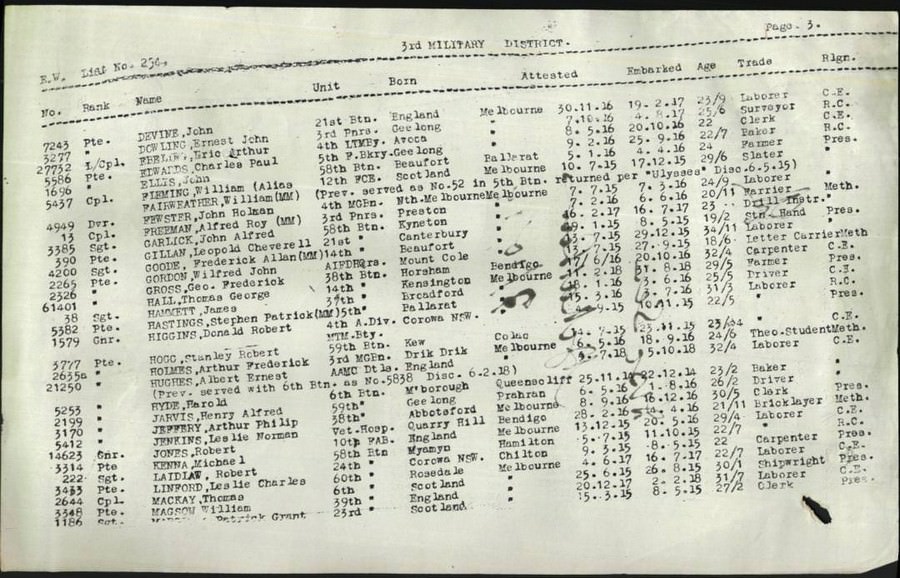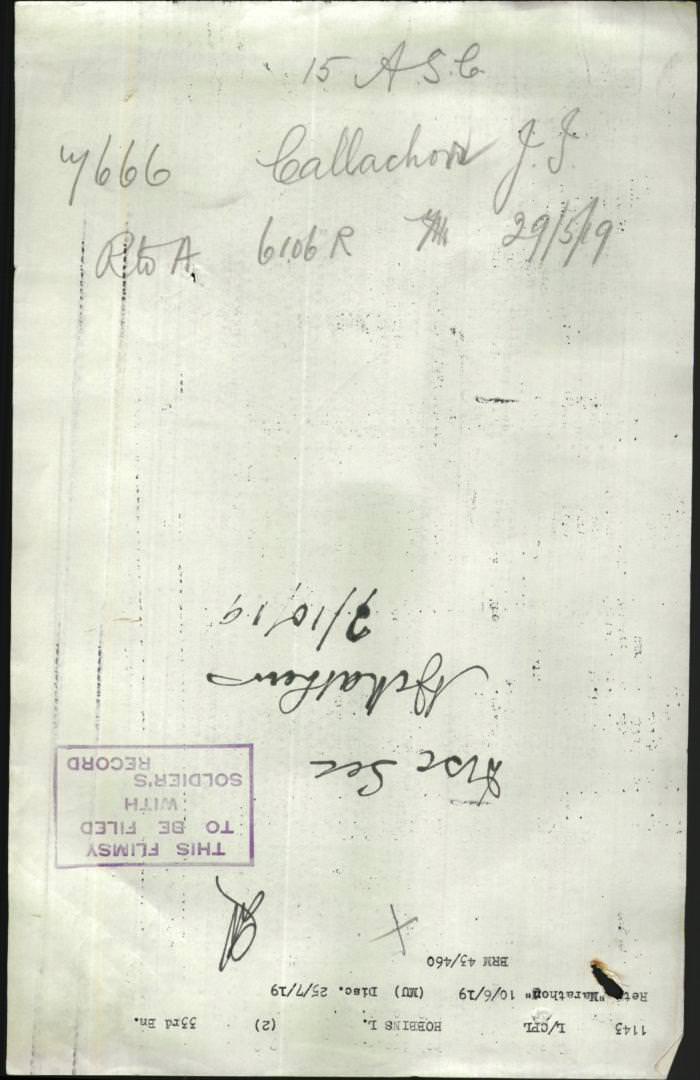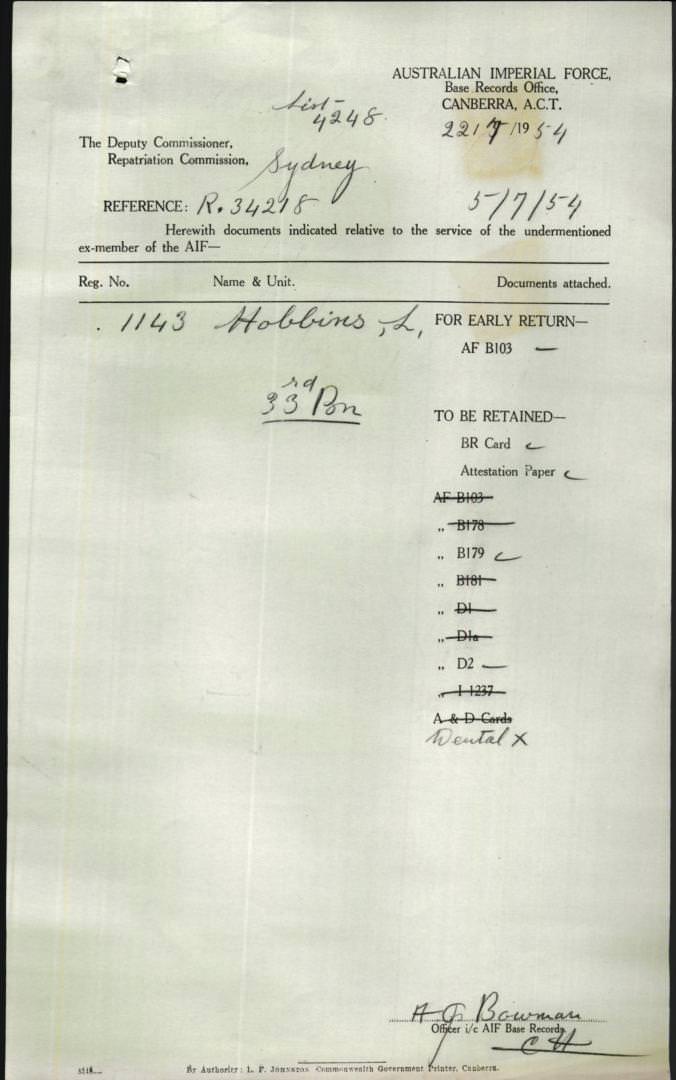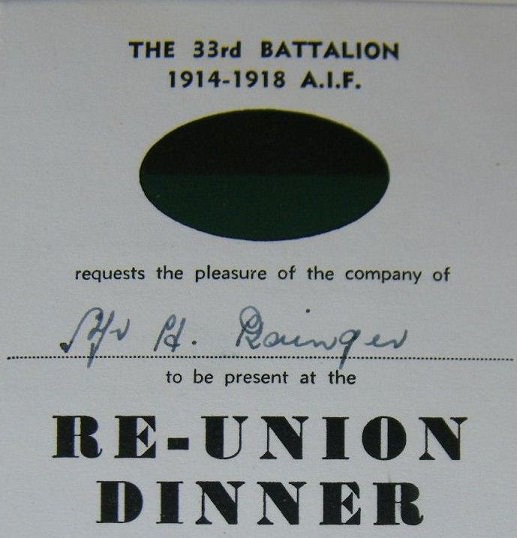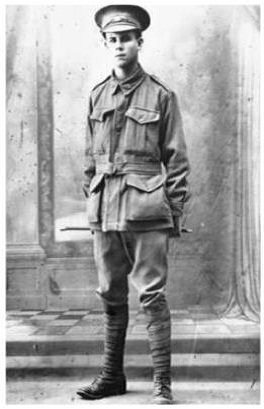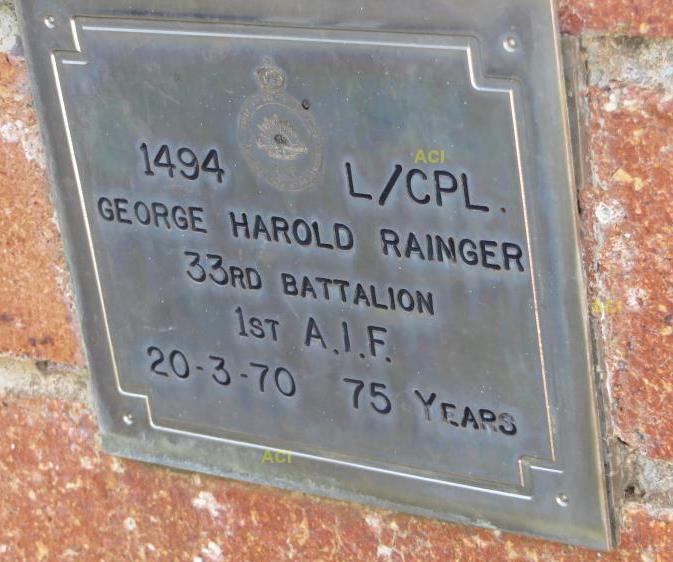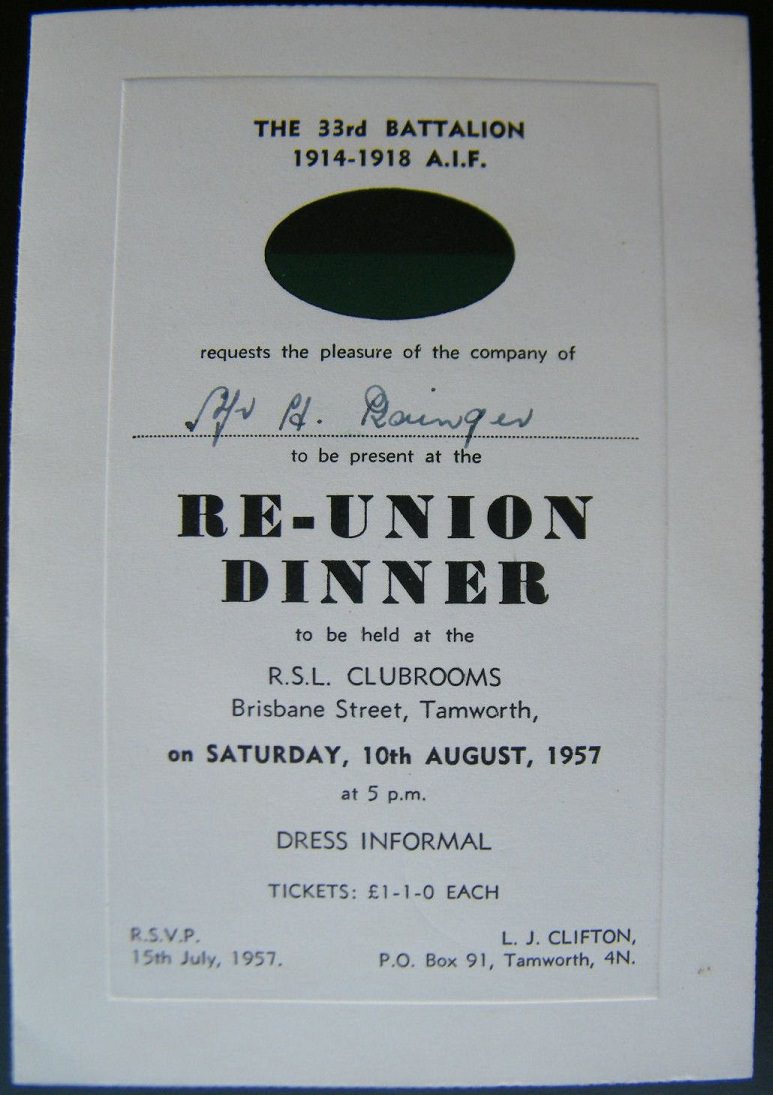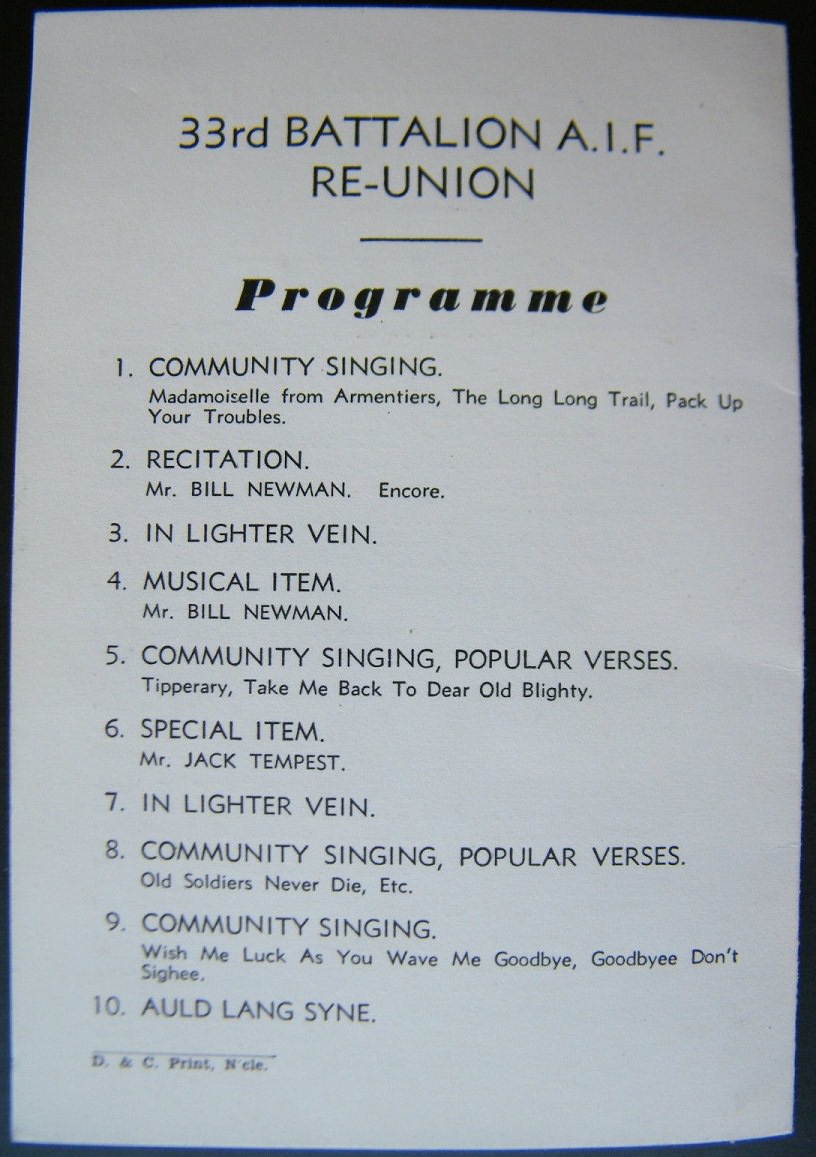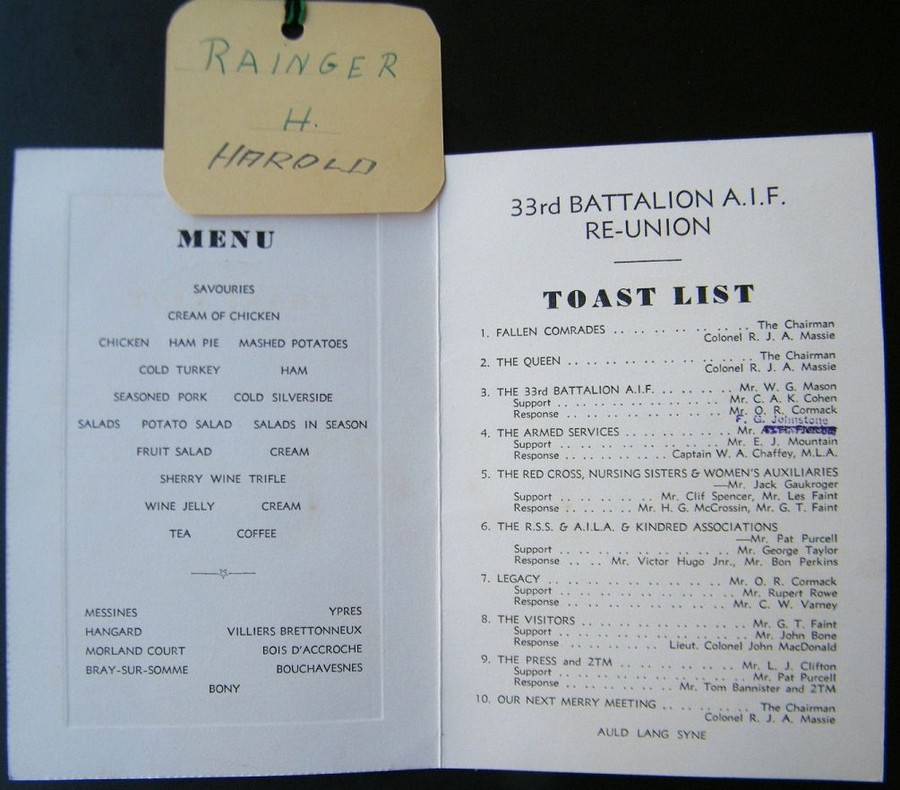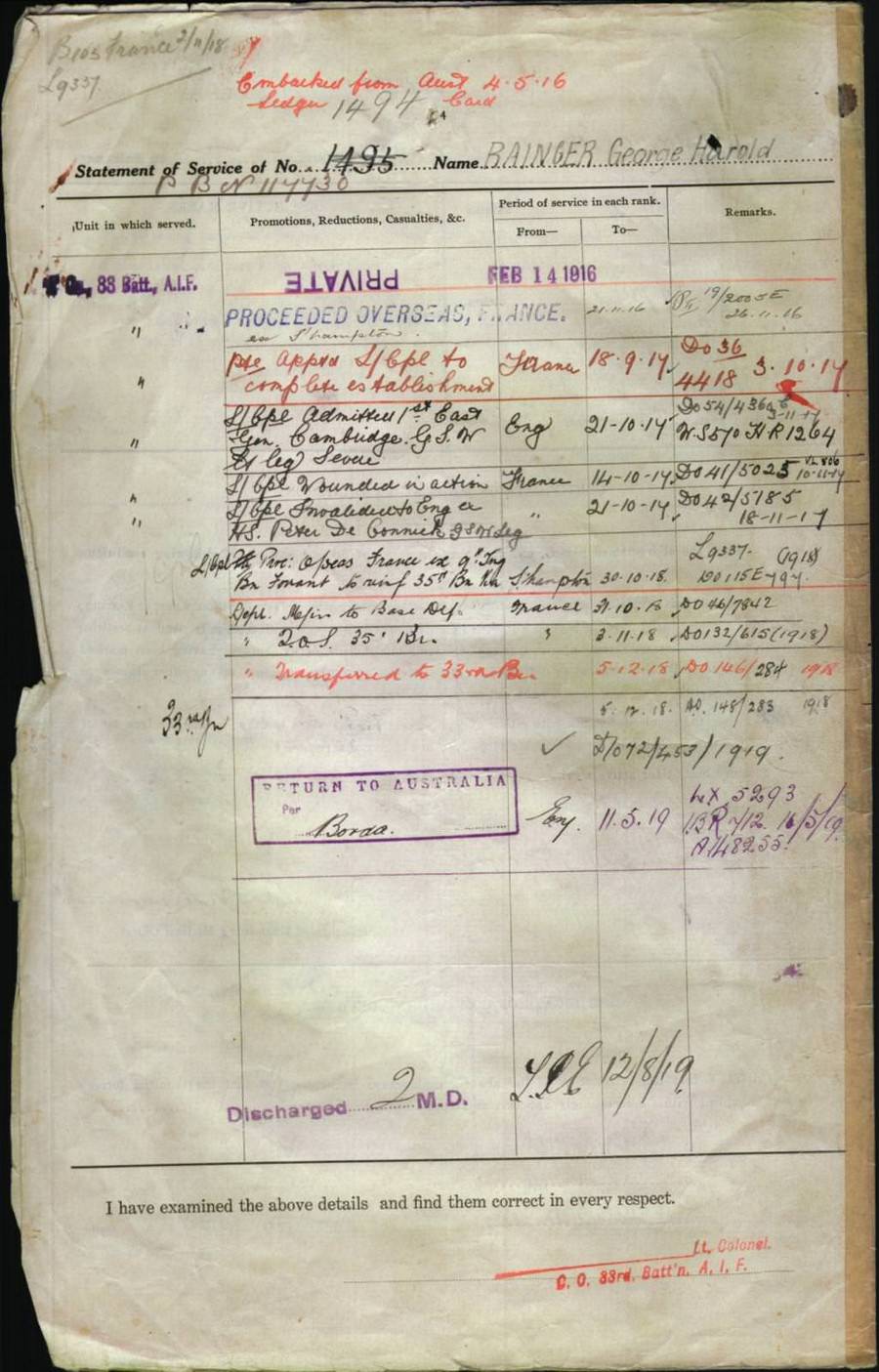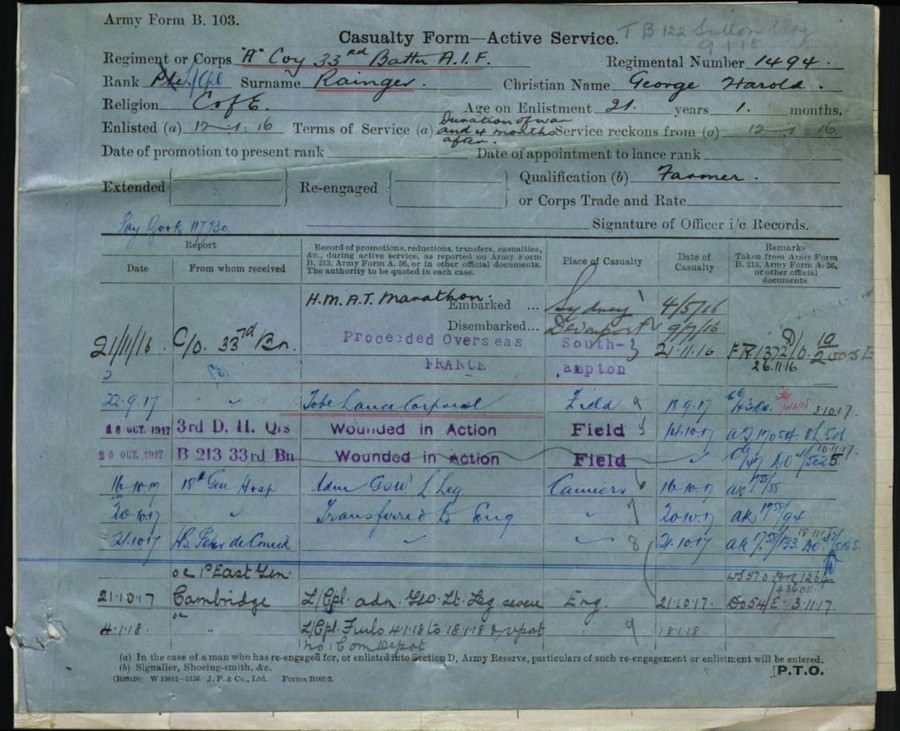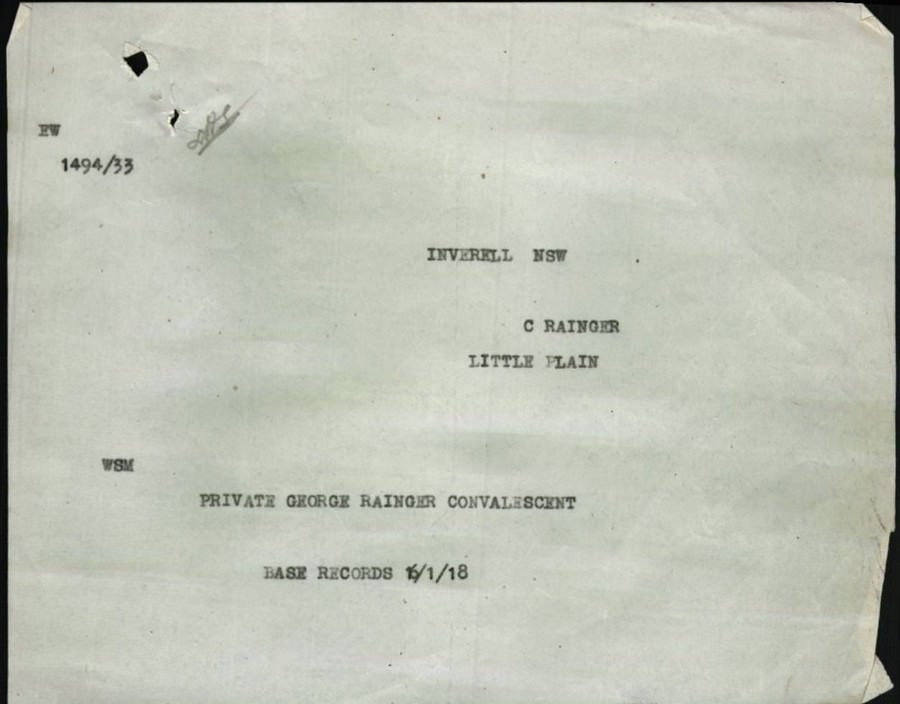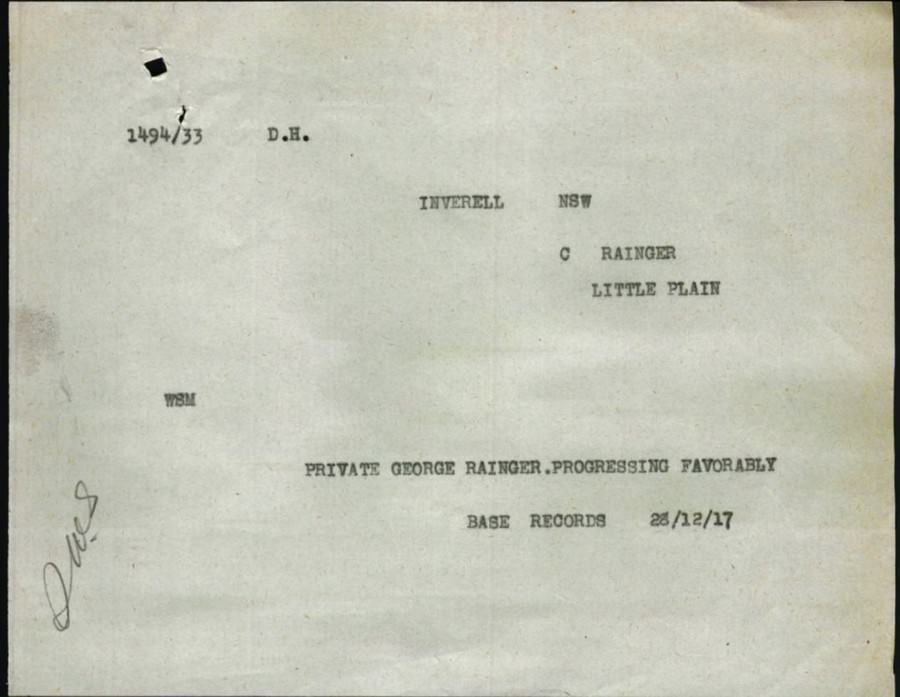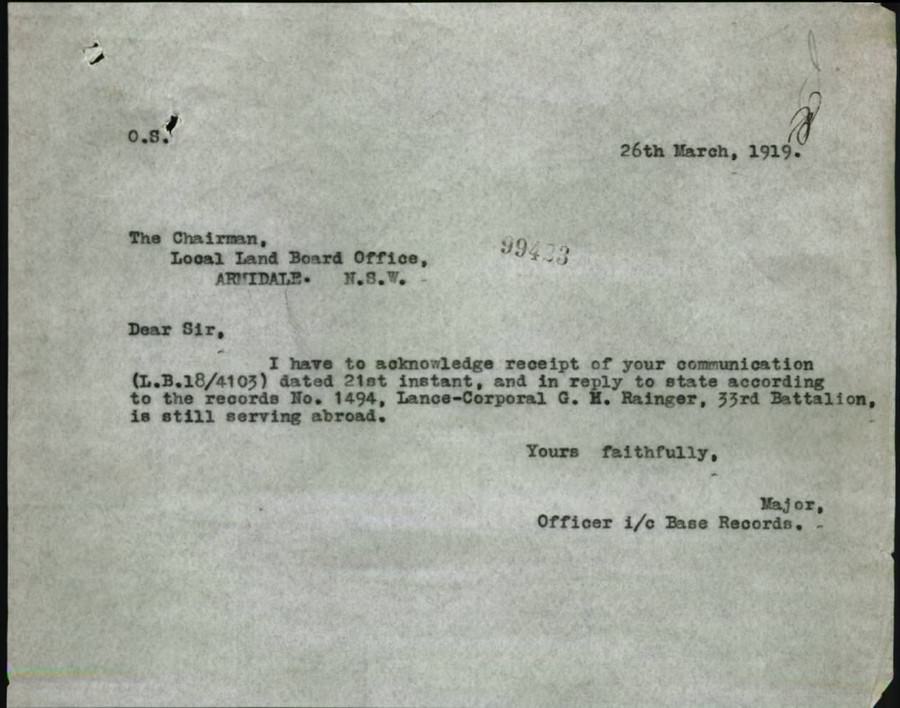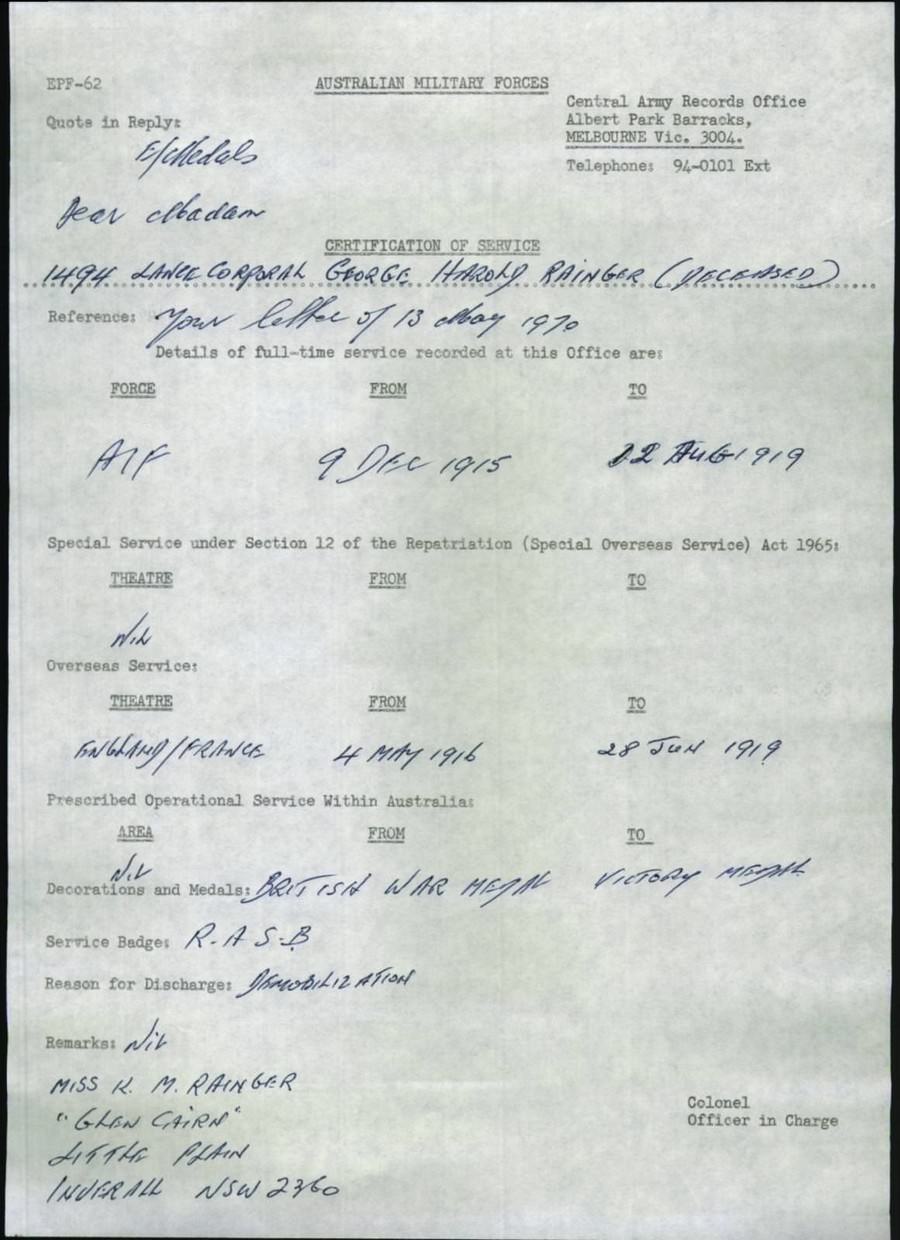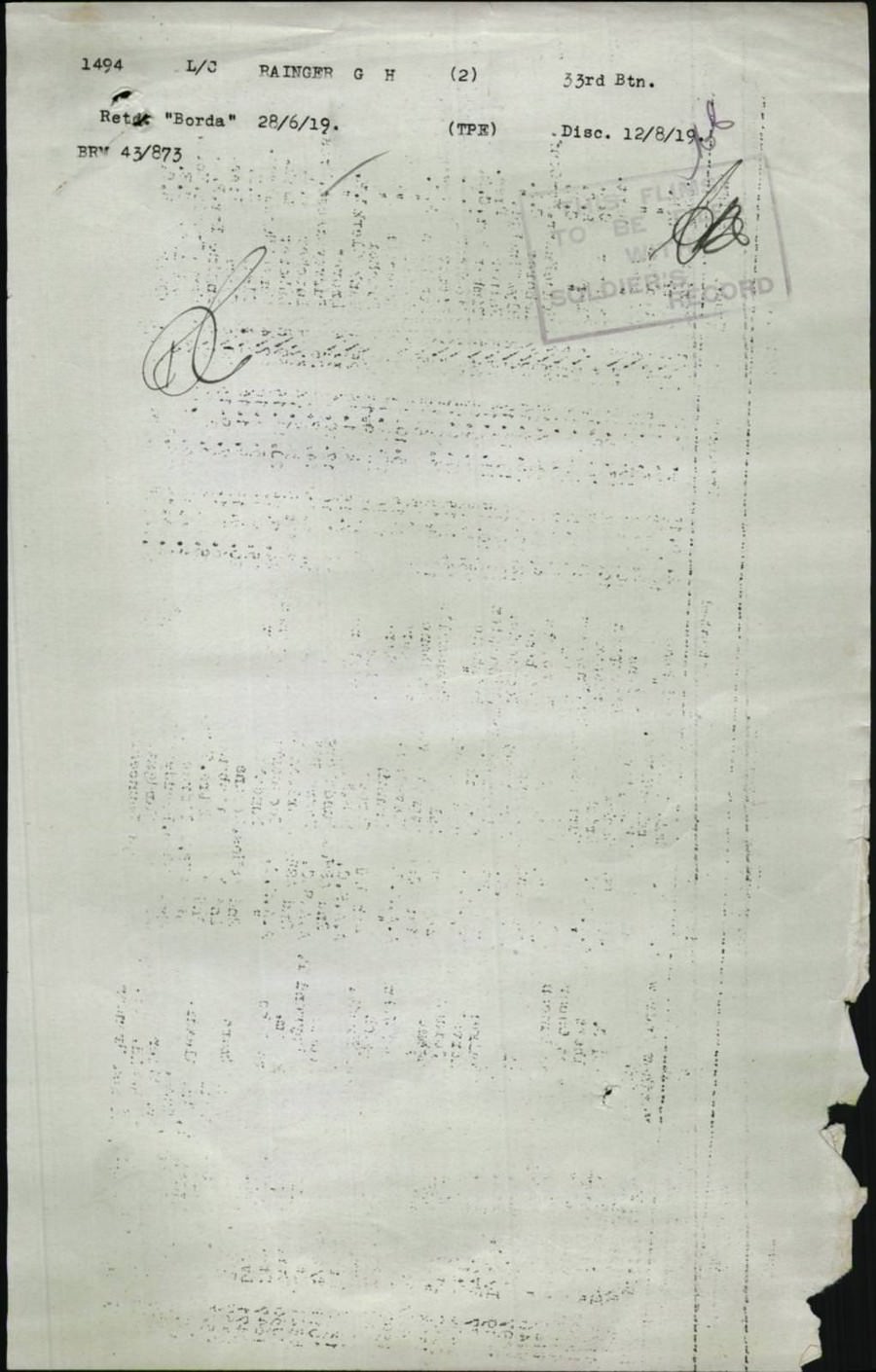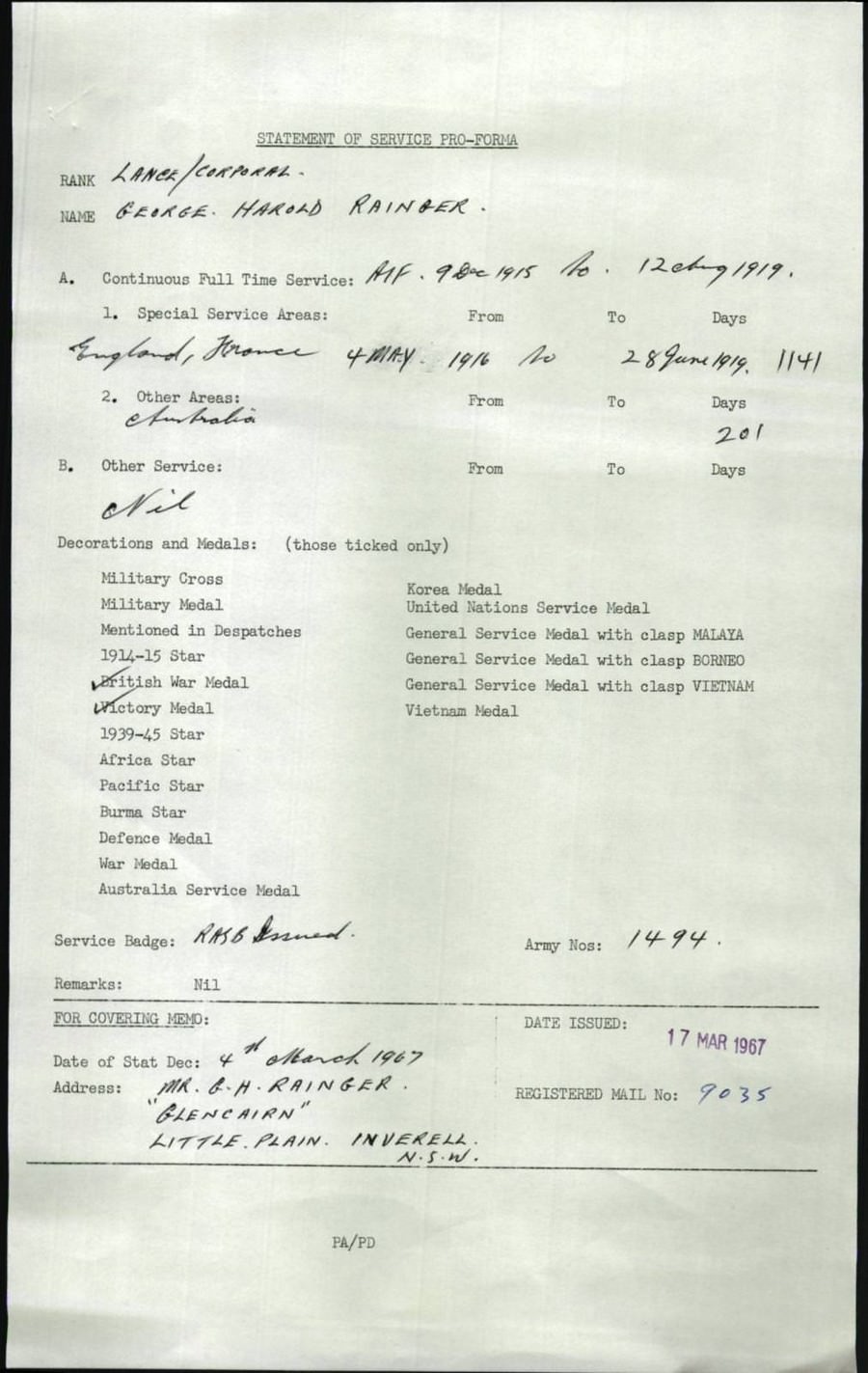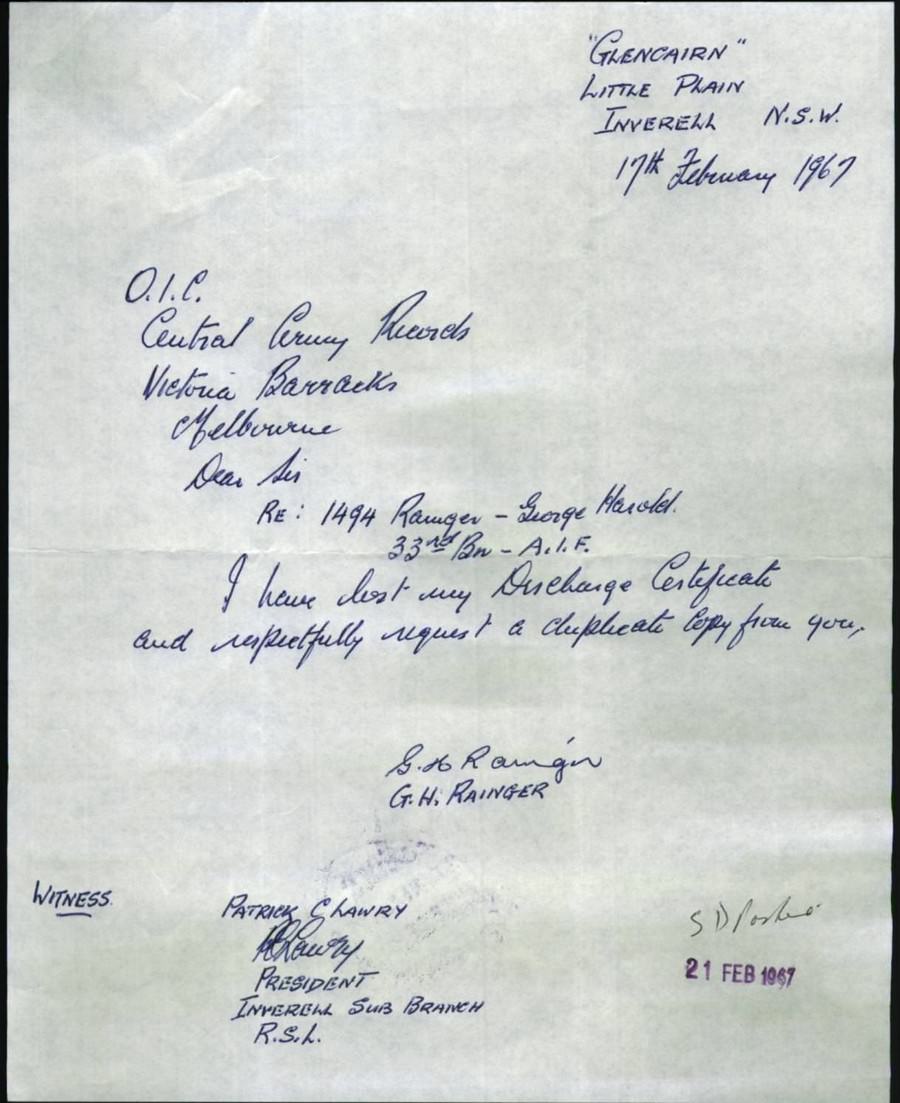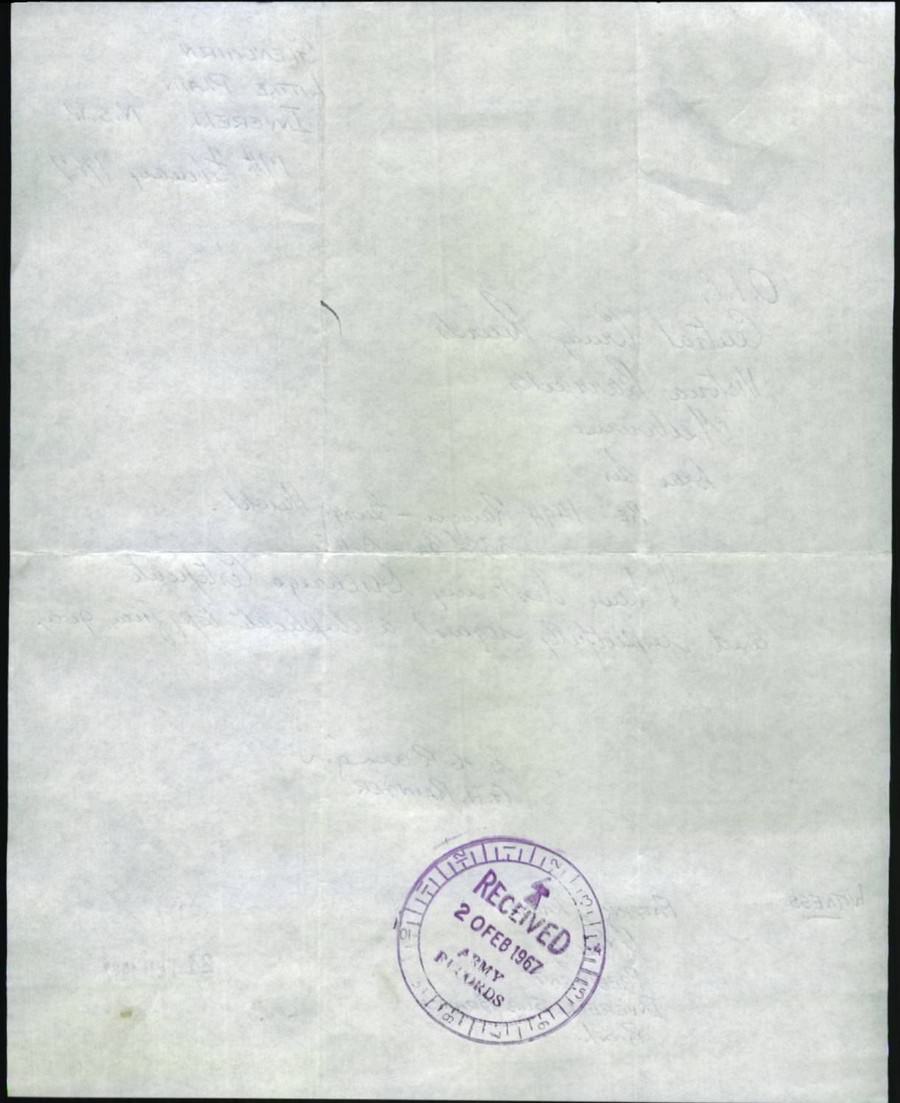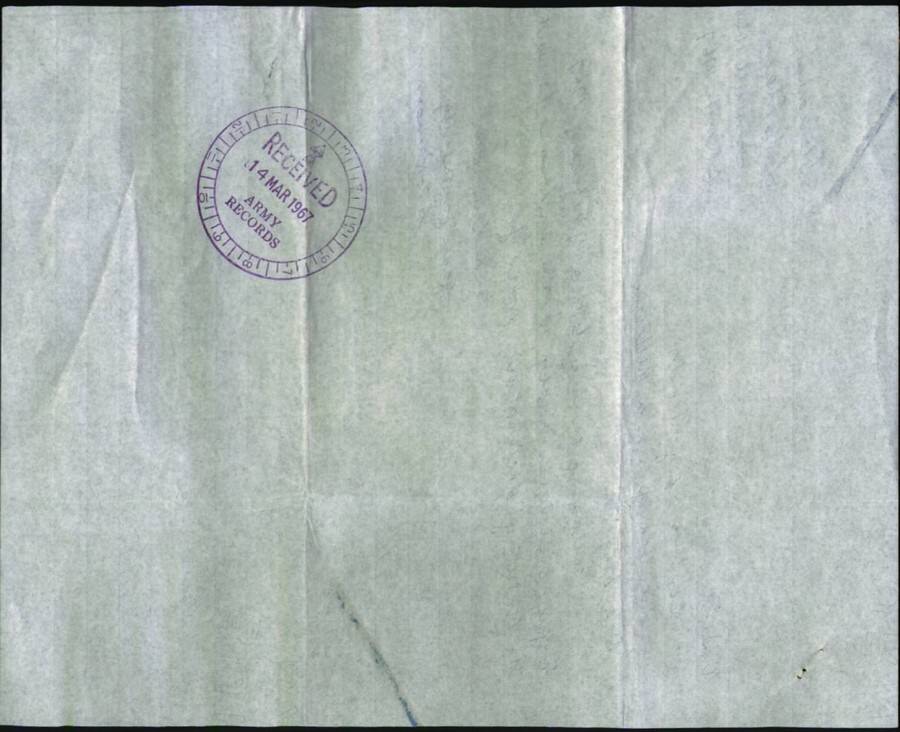
33rd BATTALION AIF
Private: 917 Angus William KENNEDY
Born: 19th February 1897. Inverell, New South Wales, Australia. Birth Cert:12967/1897.
Married: 30th January 1926. Leichardt, New South Wales, Australia. Marriage Cert:
Wife: Edith Alfreda Kennedy. nee: Millwood. (1899-1999)
Died: 10th May 1984. Lindfield, New South Wales, Australia. Death Cert:10080/1984.
Father: Angus John Kennedy. (1870-19..)
Mother: Aga Agnes Kennedy. nee: Cross. (1867-1934)
INFORMATION
Angus William Kennedy enlisted with the AIF on the 3rd January 1916 at Inverell, New South Wales and was an original member of the 33rd Battalion. Angus was also an original member of the first contingent of recipients of the Inverell Recruitment Medal.
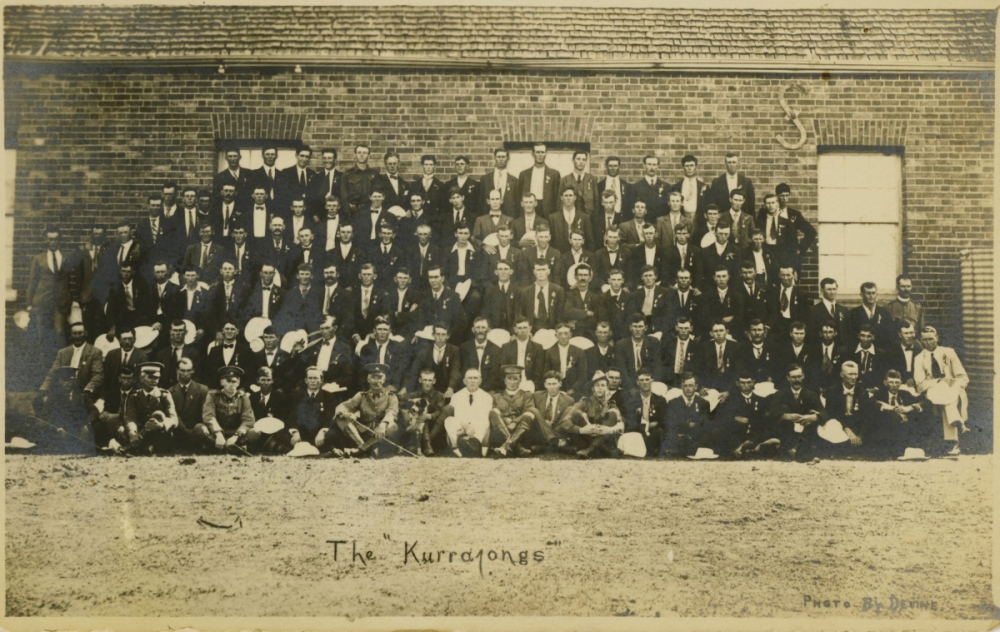
114 Men known as the Kurrajong's lined up against the Drill Hall in Inverell prior to marching to the railway station on the 12th of January 1916. The men all wore a white panama hat and were issued a pair of hand knitted socks and the Inverell Recruitment Medal.
Angus was allocated to C Company 33rd Battalion and travelled to Sydney from Farley Station with the 33rd Battalion before embarking for England on board HMAT A74 "Marathon" on the 4th May 1916 and disembarked at Devonport, England on the 9th July 1916 where they were marched in to the 9th Training Battalion at the Durrington Army Camp, where the Battalion settled down to hard training, which included Route Marching, Trench Digging, Bomb Practice, Musketry and General Camp Routine.
On the 2nd September 1916, Angus was marched in to the Trench Mortar School at Perham Downs and was hospitalised on the 25th of September suffering from Pleurisy and was admitted to the Fargo Military Hospital on the 27th as his condition worsened as he was seriously ill with Pneumonia. Angus remained in Hospital until he was discharged on the 16th October and was marched in the the No:4 Command Depot before proceeding overseas for France on the 10th April 1917.
The 33rd rested in their billets on the 6th June 1917 at Nieppe and marched to StYves on the 7th of June for the Brigades push at Messines.
7th June 1917.
THE BATTLE OF MESSINES
The 3rd Australian Divisions first major offensive was at Messines Ridge on the 7th June 1917. The Australian 3rd Division was a part of the II Anzac Corps which was allotted to the first assault. The 25th New Zealand, 3rd Australian Division with the 4th Australian Division in reserve. The 4th Division were battle hardened troops who had fought many major battles. The 3rd Australian Division were having problems getting to the "jump off" point. The day before the 9th and 10th Infantry Brigades were bombarded by German Gas-Shells around Hill 63 and Ploegsteert Wood. Many of the Aussies were not wearing gas masks, but despite this they pressed on even though they received 500 casualties.
They made it to the "jump off" point but only just with some of the men from the 9th and 10th going straight over the top without stopping. The mines went up and the attack commenced behind a protective barrage. The II Anzac Corps were attacking on the right with their objective being the southern shoulder of the ridge which included Messines, the Dover and St Yves areas as far south to the east of Ploegsteert Wood.
Major General Sir John MONASH's 3rd Division had to contend with a tricky 3 mile approach out of Ploegsteert Wood and after the German gas attack, but they were not deterred. The 9th Infantry Brigade under Brigadier General: Alexander JOBSON and the 10th Infantry Brigade under Brigadier General W R NICHOLL had just made the jumping off point but some of the men did not stop, going straight into the assault from the approach march.
Their objective lay between St Yves and the Douve. The mines at Trench 127 and Trench 12 at Factory Farm were laid to aid this task. The explosions erupted a few seconds before zero hour and created craters of 200 feet in diameter, completely obliterating the German defense line as the 9th and 10th Infantry Brigades went over the top. The mine crates forced the 9th and 10th Brigades to veer to the left and right which caused some confusion with the main assault. It is testimony to the quality of training that every man knew the ground, tasks and objectives so well.
Private: 1804 John CARROLL 33rd Battalion, rushed the enemy's trench and bayoneted four of the German occupants. He then noticed a comrade in difficulties and went to his assistance, killing another German. He then attacked single handed a German Machine Gun Team, killing all three of them and capturing the gun. He later rescued two of his comrades who had been buried alive by German Shell Fire, and in spite of heavy shelling and machine gun fire he dug them out alive and saved them from certain death. John was awarded the Victoria Cross.
The German forward zone was completely engulfed and taken by the main assault. The two supporting battalions of each brigade then passed the leading battalion to continue the advance. The men were constantly re-supplied and the ridge was taken. There were many German prisoners taken during the offensive. The 3rd Division was well ahead with the 9th Infantry Brigade pushing on beyond Grey Farm, and on the right the 10th Infantry Brigade were veering left towards Septieme Barn north of Douve.
The German resistance was heavy but was generally brushed aside by tanks and artillery before the infantry had to become too involved.The 4th Bavarian Divisions Artillery had made little impact, but as the day wore on the 3rd Division and later the 4th Australian Division received many casualties from German artillery. (70% of all casualties during WW1 were from artillery).
By 9:00am nearly 6 hours after the assault began the Germans were in disarray, but there was a major problem as the Australians received less casualties as anticipated and when ordered to dig into the ridge they had so many men, that some could not find shelter. the 35th battalion were dug in around Seaforth Farm.
The second phase of the operation was to take the Oosttaverne Line. The 3rd Australian Division would now be in reserve with the 4th Division attacking. The 9th Infantry Brigade (33-34-35-36Bn) were near Thatched Cottage facing Warneton. The river Lys was to their right and the Ploegsteert Wood was now behind them.
Once their objectives were taken the troops consolidated. A barrage to stop and counter attack was shortened and caught three battalions which had to retire. By 9:00 pm this part of the Oosttaverne Line was abandoned. At 10:45 pm General: Alexander John GODLEY ordered the 3rd and 4th Divisions to retake it. This they did by the early hours of the 8th of June.
The Battle for Messines Ridge during May-June 1917 saw 35 officers and 1,631 other ranks loose their lives.
9th Infantry Brigade Casualties.
| 33rd Battalion. AIF | 8 Officers | 382 Other ranks |
| 34th Battalion. AIF | 10 Officers | 378 Other ranks |
| 35th Battalion. AIF | 5 Officers | 431 Other ranks |
| 36th Battalion. AIF | 9 Officers | 421 Other ranks |
| 9th Machine Gun Company. AIF | 2 Officer | 17 Other ranks |
| 9th Light Trench Mortar Battery. | 1 Officer | 2 Other ranks |

FIELD DRESSING STATION, MESSINES 7th June 1917.
Angus was given this photo of a German Prisoner of War and Card after he was captured during the advance at Messines on the 8th June 1917 as he was being marched to the neared Prisoner of War Camp.


Photo of German Prisoner and Card were acquired in November 2021 and are now in the Harrower Collection
Nueve Eglise was the billeting area for the battle-weary remnants of the 33rd Battalion, when finally they were relieved from Messines on June 12th 1917. After 2 short days of rest they were again marched to new billets at Douleu, where they stayed for the next ten days. By then Command must have considered them sufficiently rested for they were ordered back into the front line, to relieve the 10th Cheshire Battalion on June 23rd.
(Never a Backward Step; Edwards 1996)
Angus was Wounded in Action, 1st occasion on the 21st June 1918 but remained in the Lines
8th August 1918.
The approach was made in two stages. The 33rd Battalion moved from VIEW SECTOR on the night of August 6th/7th to AUBIGNY and rested there for 24 hours. On the night of August 7th/8th the Battalion passed the starting point at C.3.C.70.20 at 10.20 pm. "A" track was used. The marking of the route was not sufficient, consequently it was picqueted by 30 men, including the band, under an officer. The march was made without incident or interruptions and we suffered no casualties. the head of the column reached the jumping-off line at 1.10 am. The march discipline throughout was excellent.
"A" track was laid to our left flank, consequently a tape line was laid to the center of the Battalion front. "A" and "B" Company's wheeled in single file to the right, and "C" and "D" Company's to the left. As shown in the attached map, the jumping line was in rear of our outpost line in places. There was plenty of room in the front line (BARRABOOL TRENCH) for the whole Battalion to be under cover. The original plan was to remain in this trench until zero minus 5 minutes. But the situation was so quiet that the Companies were able to take up their dispositions in their ordered formation, and so rest in the open.
This assembly was completed at 2.10 am. We had no casualties before zero hour. Lieutenant: 129 Walter Gilligan MASON. (A Company Scout Officer) had charge of laying the tapes and did this work very well. Six direction tapes each 100 yards long were laid, one on each flank of the Battalion and one in the center of each platoon front. These proved of the greatest value owing to the fog. The 33rd Battalion Scouts relieved those of the 38th Battalion who were holding the sector at 10.00 pm. At 10.30 they encountered an enemy post at P.21.B.30.20; the enemy threw bombs and wounded five of our men. Ten minutes later the 38th Battalion had an Officers patrol in NO MAN'S LAND but no further trace of the enemy could be found.
The Assault at about 4.00 am, as a dense fog arose, so dense was it that it was impossible to see more than 10 feet ahead. The whole artillery opened fire with great precision, and the barrage was very accurate. The fog made it extremely difficult to keep direction and to maintain formation, consequently the advance resolved itself into small parties moving on their own initiative. Only the first of the special ACCROCHE WOOD Signals could be seen, the smoke accentuated the fog. Even the barrage could not be seen.
ACCROCHE WOOD was strongly garrisoned and contained an abnormally large number of machine guns, but the garrison offered no resistance and readily surrendered. The attack was quite unexpected, and the fog was certainly to our advantage. The enemy remained in his dugouts during the bombardment. He gave us very little occasion to use bombs as he readily came forward with his hands extended above his head, one would almost think this was one of his favourite P.T. exercises.
Most of the guns in LONE VALLEY got away they were aided by the fog and all that we could do was to open fire on them. We captured only three guns in this valley, three 4.2's south of RAT WOOD. HAZEL WOOD was captured without difficulty. The GREEN LINE was reached according to schedule and consolidation immediately commenced. On the left protective barrage at 8.20 am when the 4th Division passed through us to the second phase of the attack, this line was re-sited and ran from Q.25.B.40.80; to Q.20.A.40.10; We were in touch with the 35th Battalion on our left and the 18th Battalion who did not occupy their allotted front. The sector was organised into four Company Sub Sectors each with two Platoons in the front line and two in support. Battalion Headquarters were established at P.23.D.50.50; The re-organisation and refitting of the Battalion was carried out without delay.
The barrage was excellent, not a single short being reported. All ranks are most enthusiastic in their appreciation of the exceedingly fine work of our artillery. The movement forward of our batteries to assist in the second phase was splendidly carried out. Special mention too must be made to the good work of the 10th and 9th A.L.T.M. Batteries and the 5th and 6th A.M.T.M. Batteries. One expected to see many more enemy dead in the area, not more than 50 were seen. The enemy's resorting to deep dugouts and his good form in athletics accounted for this.
The enemy's artillery was surprisingly feeble. At no time was his fire effective. When he eventually did learn something of the situation he lost no time in beating a hasty retreat. In the early stages the tanks were no assistance, being behind our troops most of the time. When the visibility allowed the tanks to go forward they did excellent work. Only one tank reached the green line with our troops. When they did get in front they were handled to great advantage. Their effect on the enemy's moral greatly delighted our men. The supply tank formed our dump 300 yards in rear of our line. The value of getting such large supplies forward so early and saving of infantry carrying parties cannot be overestimated.
The work of our machine guns could only be heard. Their fire appeared to be well concentrated and undoubtedly must have been accurate. Only one means of communication was possible, namely runners, and they had very great difficulty in finding their way; On the fog lifting viability and telephonic communication was established. The liaison patrols with the 5th Brigade on our right did not function.
Seven officers, 500 other ranks were captured. This is a conservative estimate and much below the totals submitted by the Companies. 457 can be definitely accounted for these having passed through Battalion Headquarters. 4 x 4.2 Howitzers and 6 x 77 MM Guns. These were captured by Lieutenant: 3072 Frank Albert HUTCHINGS M.C. and party and were marked and tagged. This party worked in the Second Division's area and captured these guns just north of LA MOTTE-en-SANTARRE. On returning in the afternoon to ascertain the number they found, that the guns had been taken away. The remaining there were captured at LENA WOOD. 30 machine guns. Of these 16 have been sent to the HAMELET dump. We have not the numbers of the remaining 14, but the total of 30 is a low estimate. a number of our guns were removed by other units which did not take part in the attack. 1 x Anti-Tank gun. 10 light Minenwerfers, 2 medium minenwerfer, 1 horse, 2 typewriters, large quantity of shells, rifles, equipment, documents and war material.
Casualties 10 Killed in Action, 50 wounded.
(33rd Battalion Unit Diary)
Angus was Wounded in Action, 2nd occasion during this action where he received a Gun Shot Wound to his Chest and was 1 of the 50 men wounded.
Angus embarked from England on HMAT A30 "Borda" on the 11th May 1919 and returned to Australia on the 28th of June before being discharged from the AIF on the 12th August 1919.

Inverell War Memorial
Family Information
Angus was a single 18 year old Iron Worker from Inverell, NSW upon his enlistment with the AIF. Angus served during World War 2 with the rank of Lieutenant with the Volunteer Defence Corps, service number N71759.
Angus and Edith Millwood were married at the All Souls Anglican Church at Norton Street, Leichardt, New South Wales, Australia.
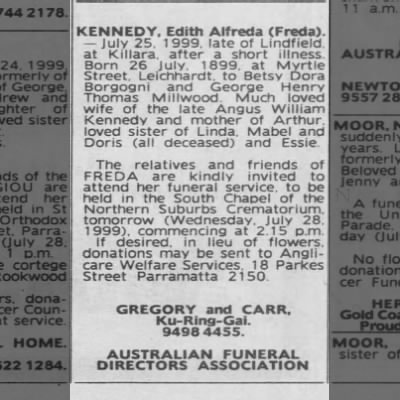
Obituary Notice. Edith Alfreda Kennedy (1899-1999)
Military Records
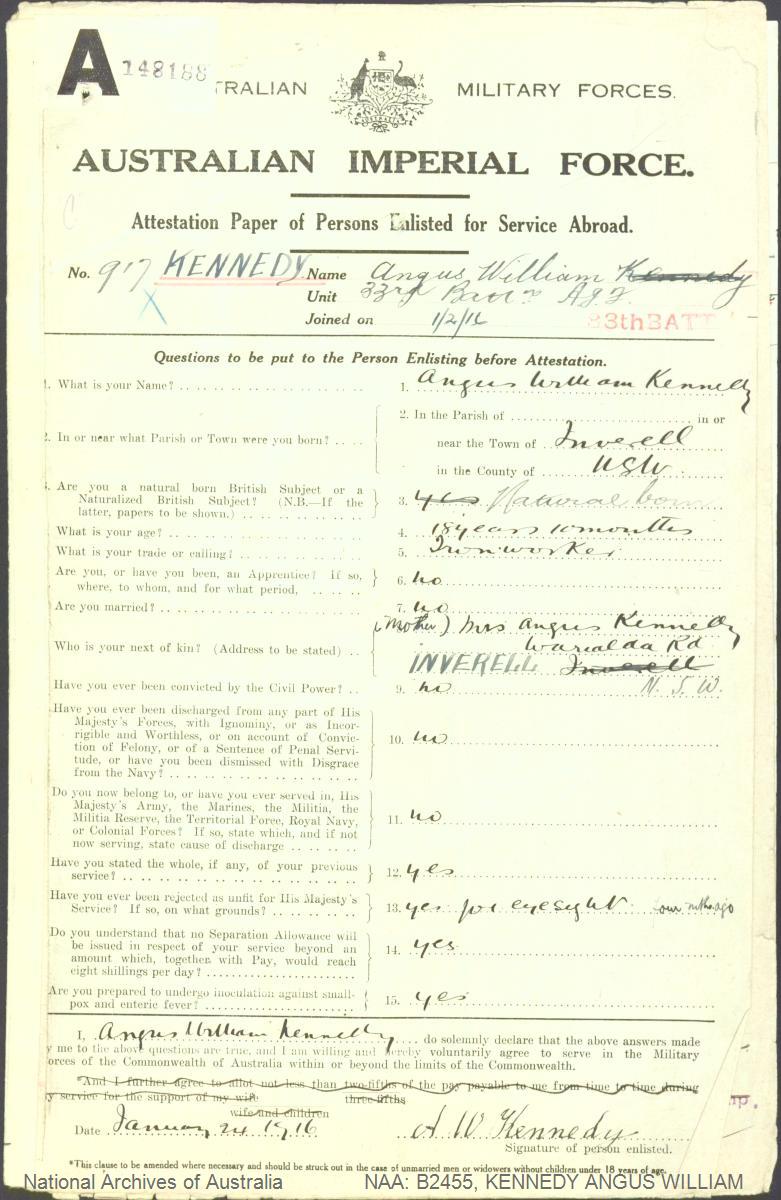

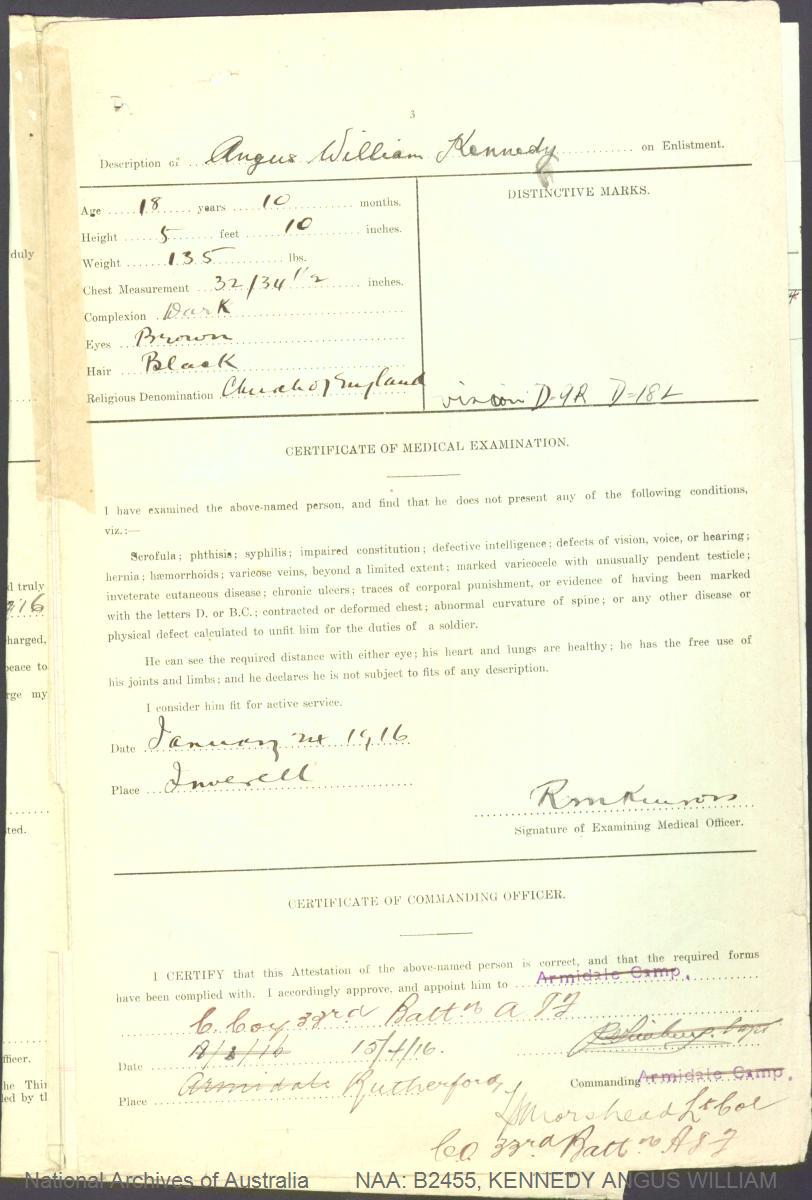


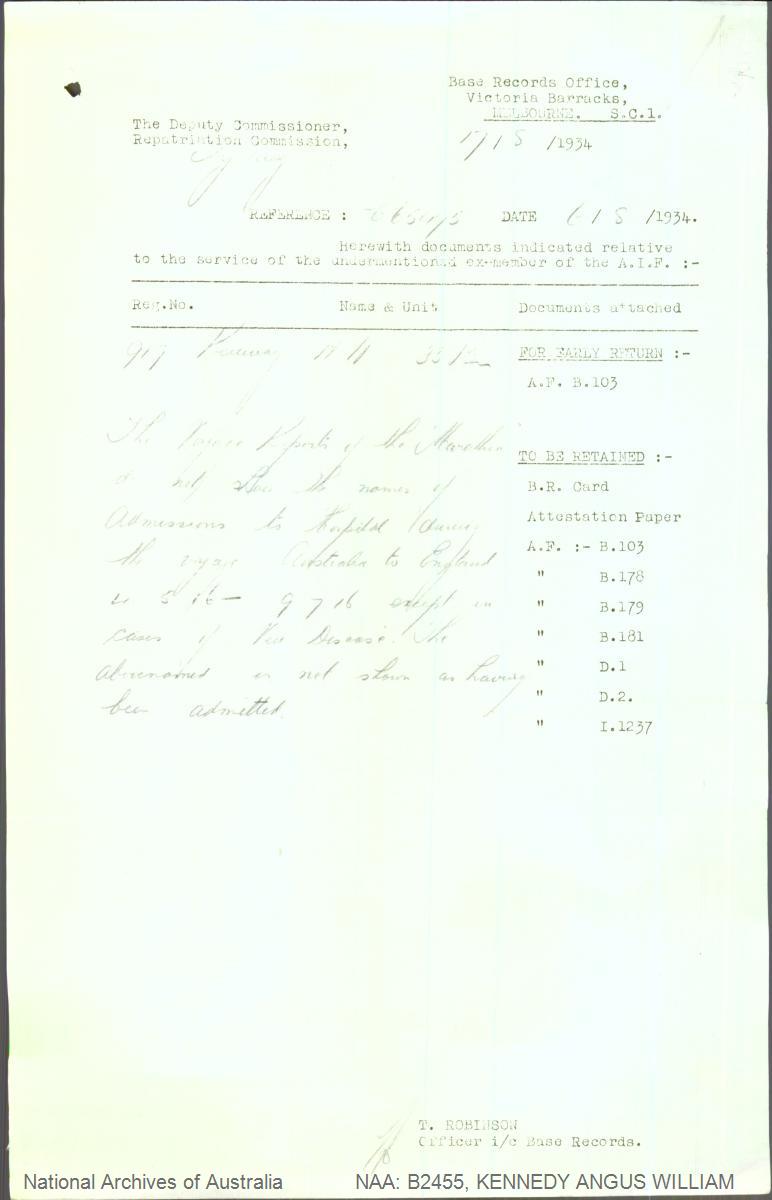
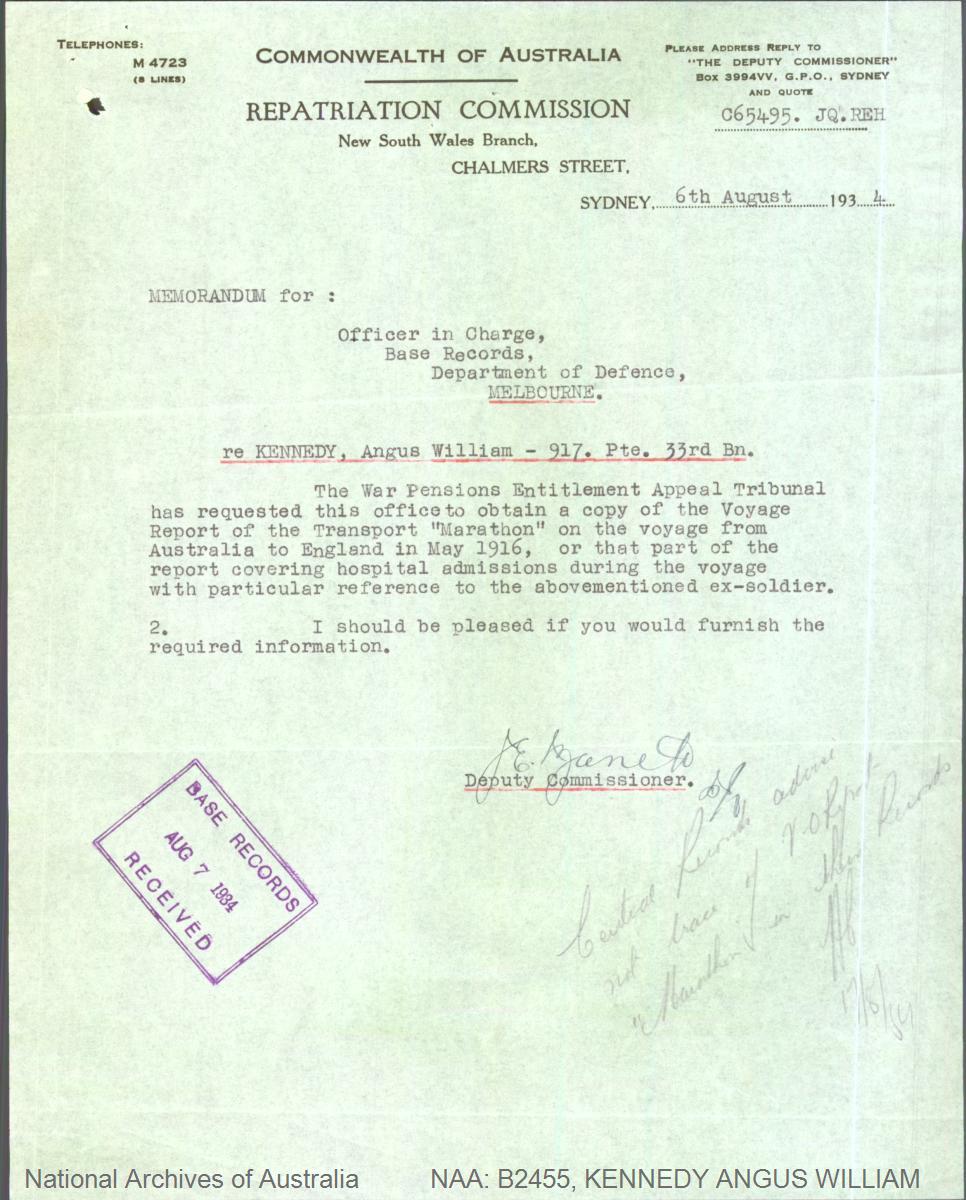
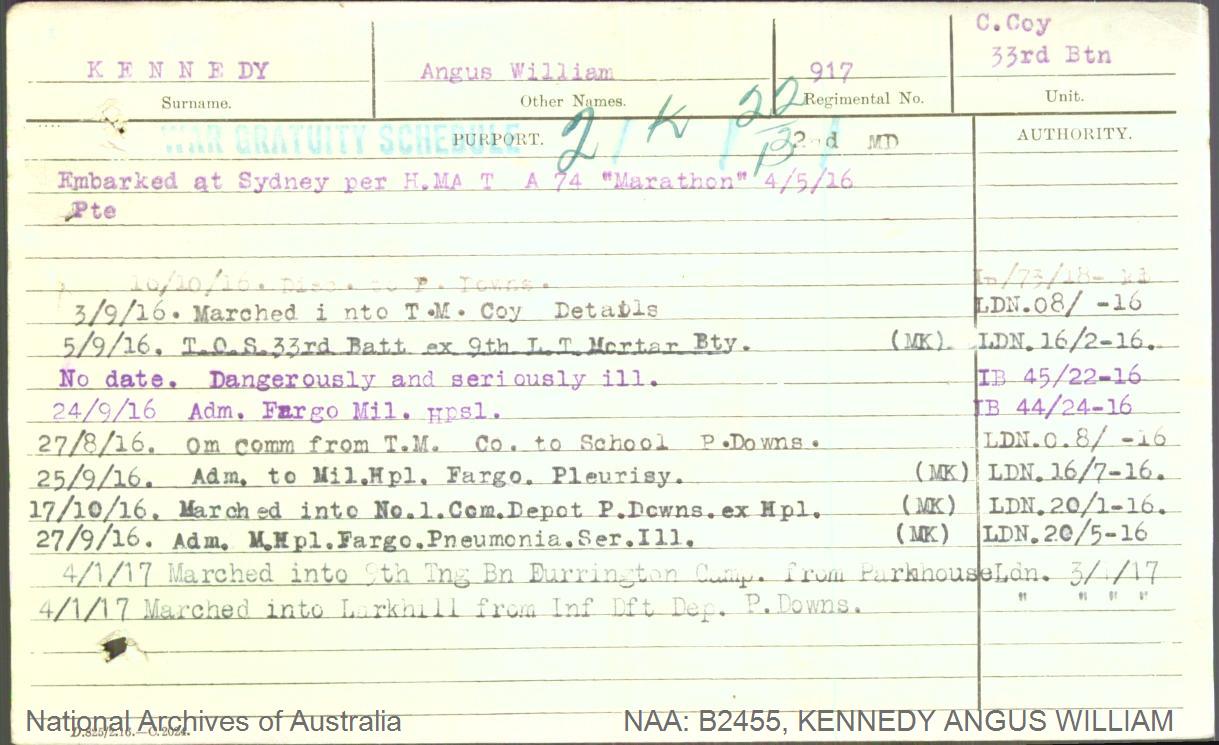

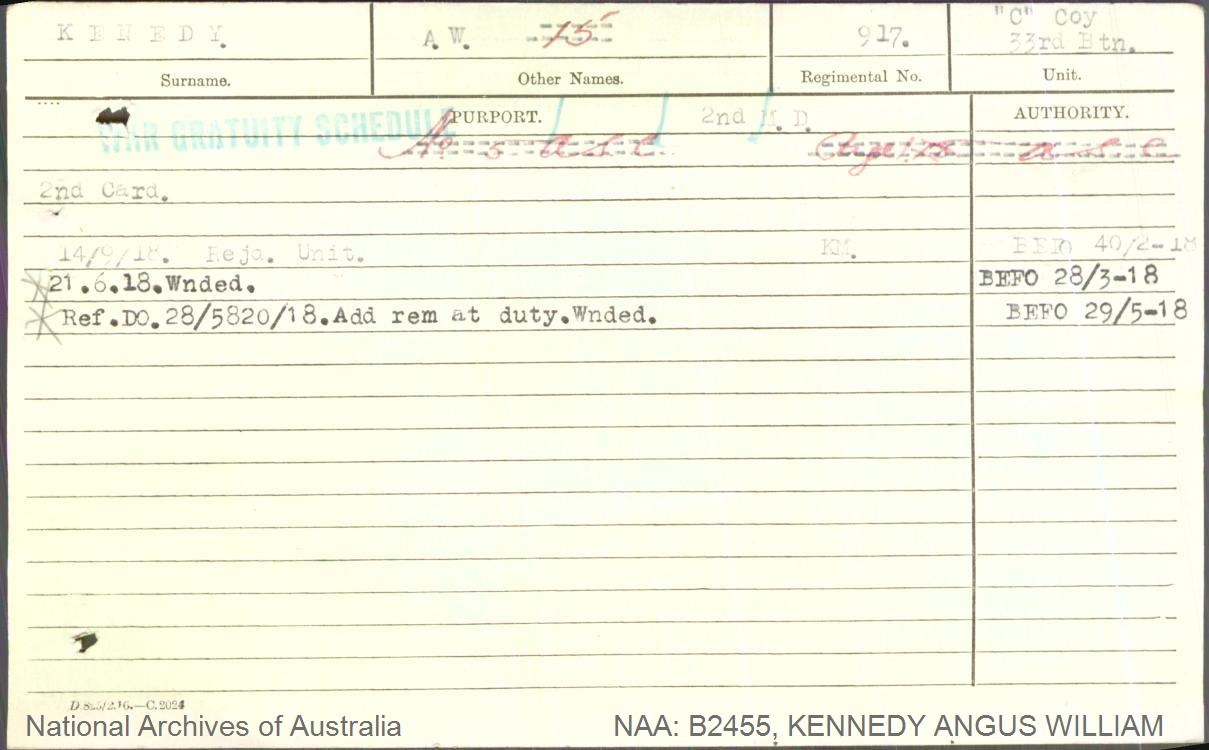
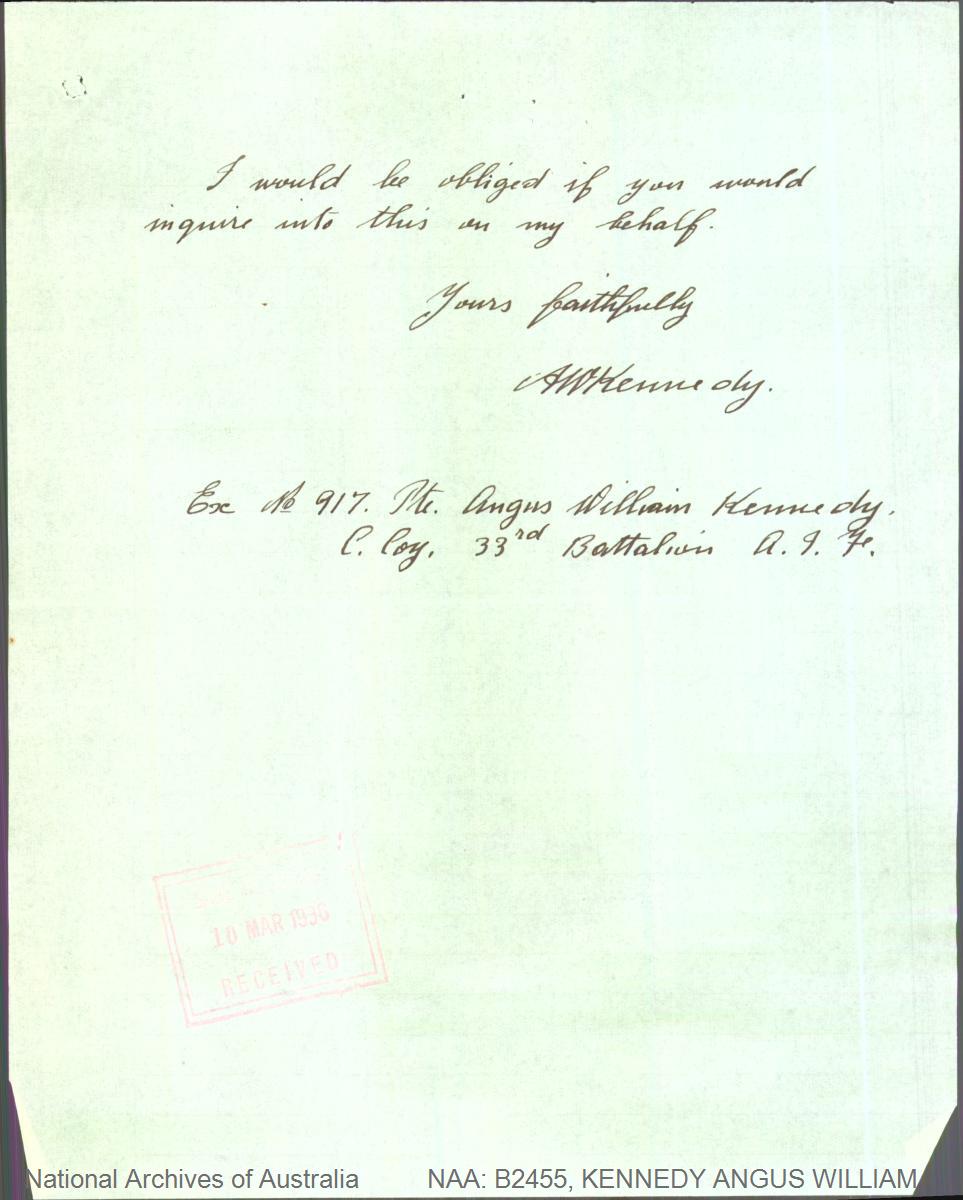
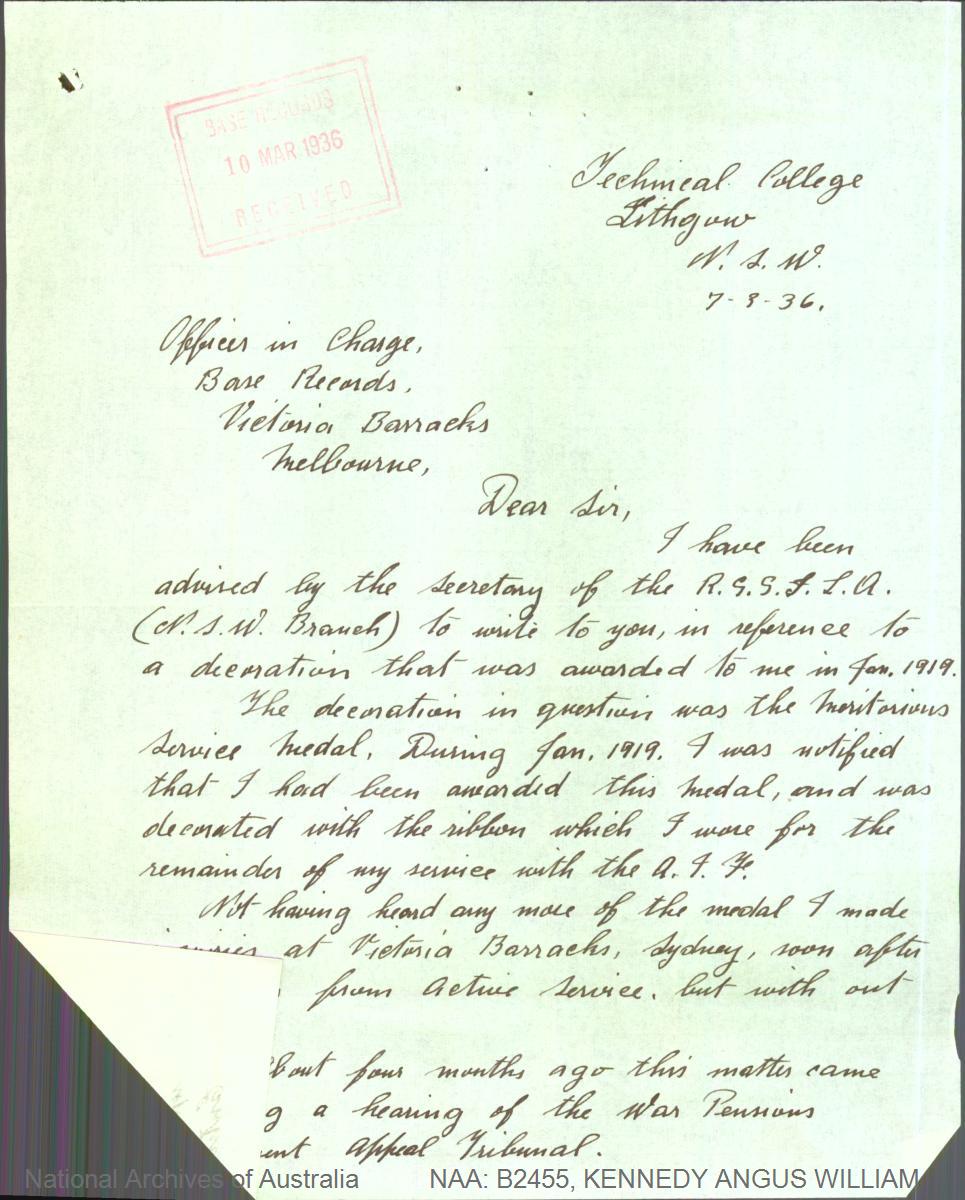
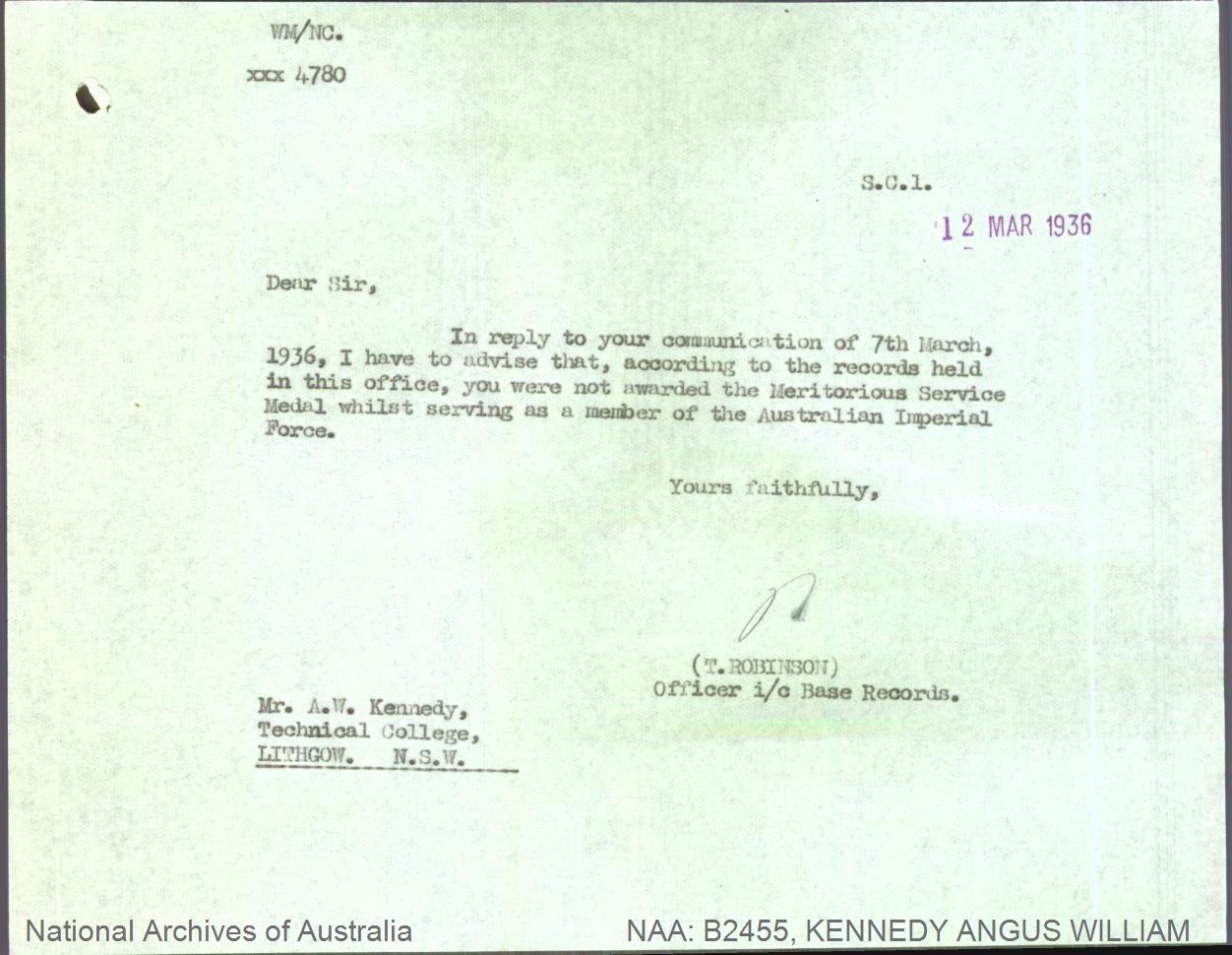
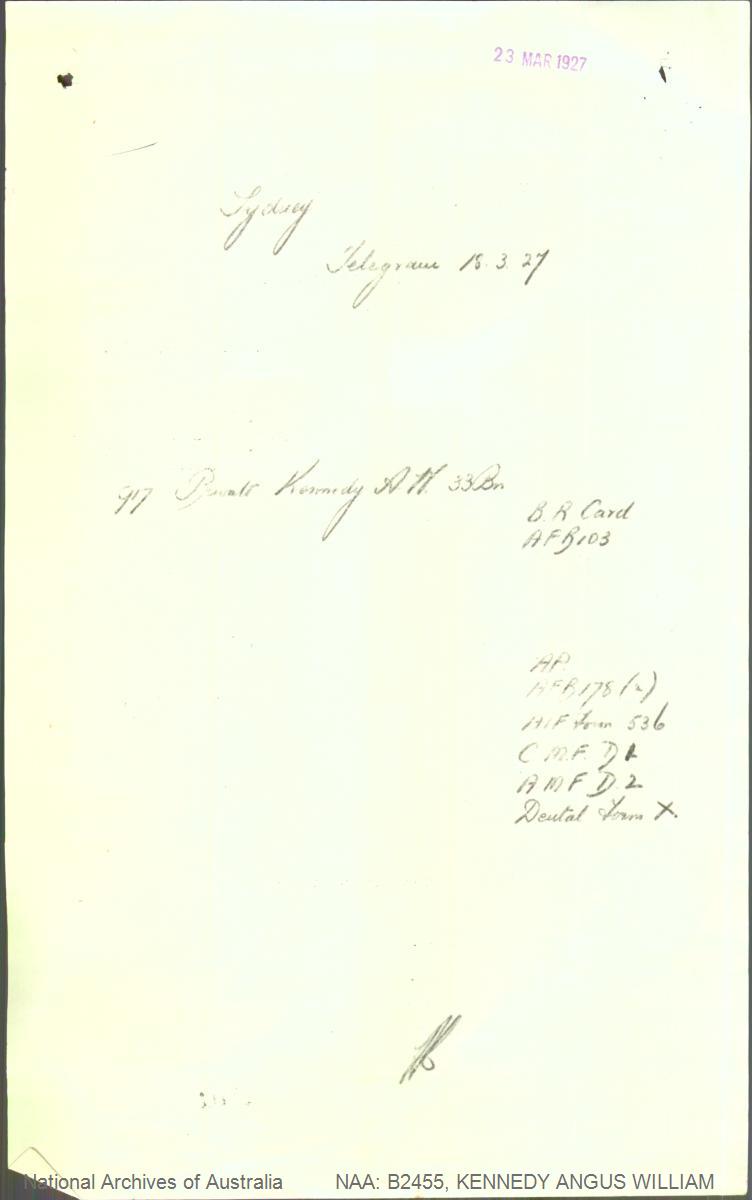
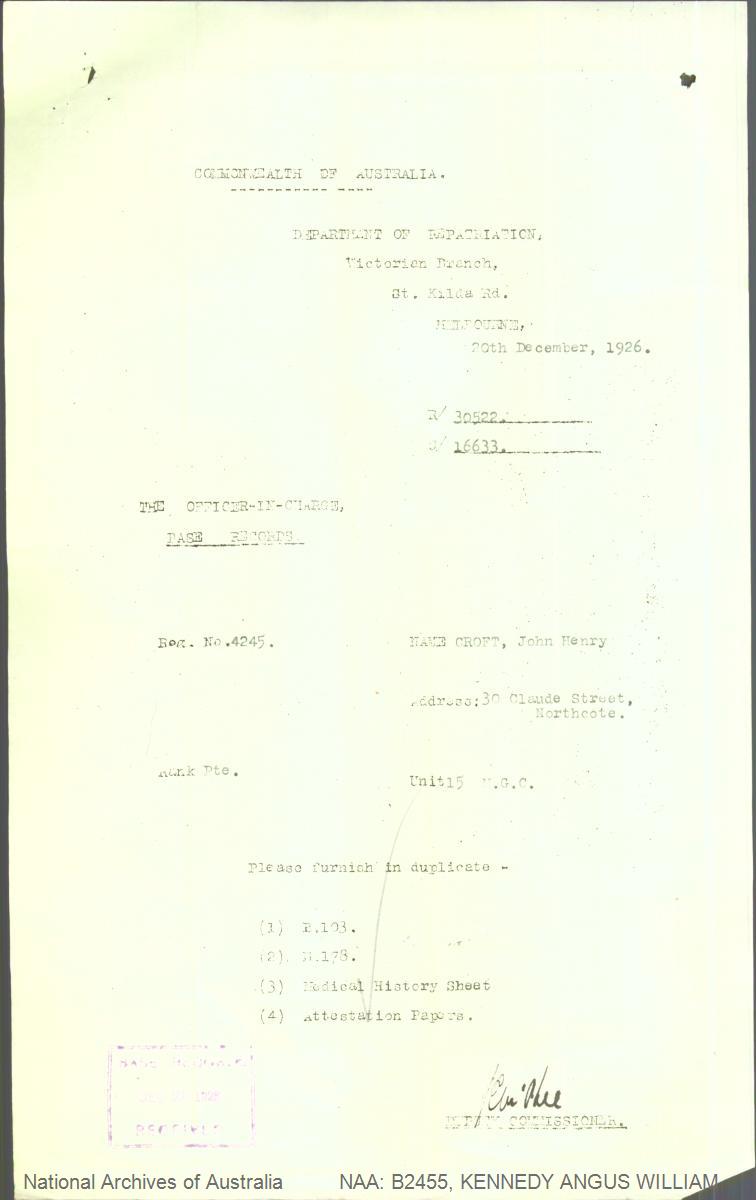

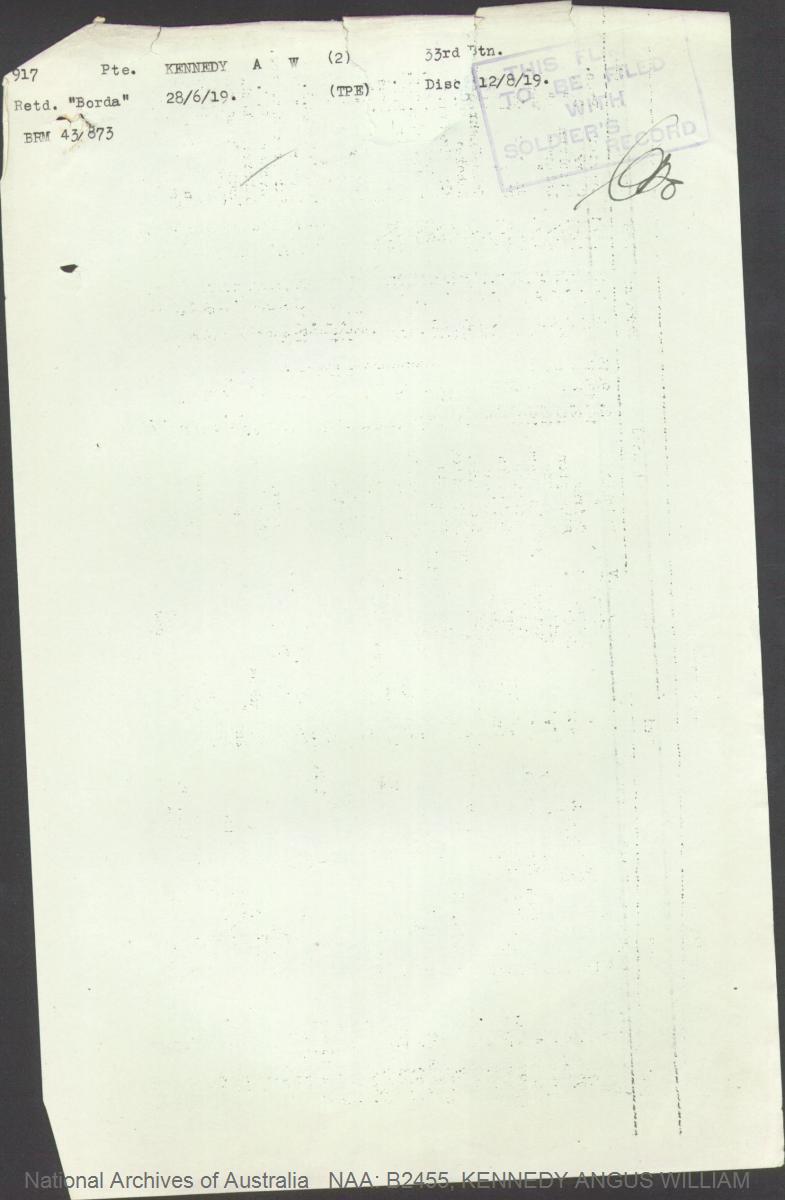
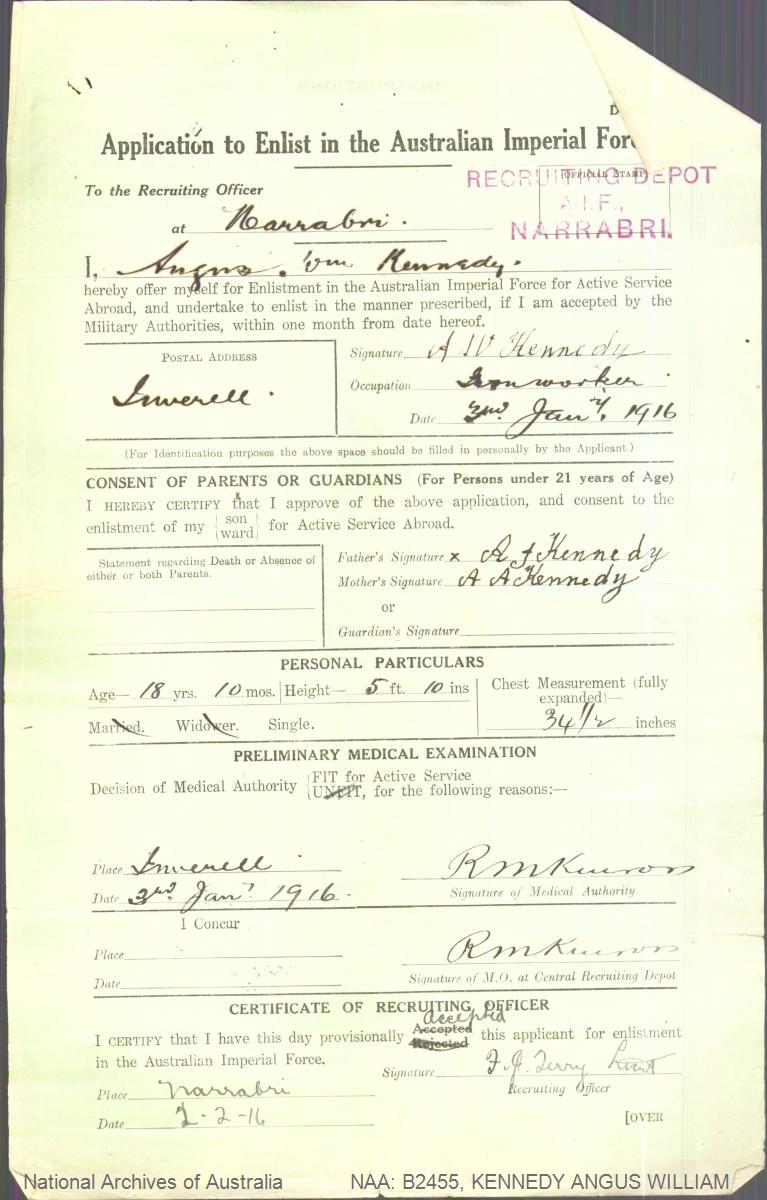

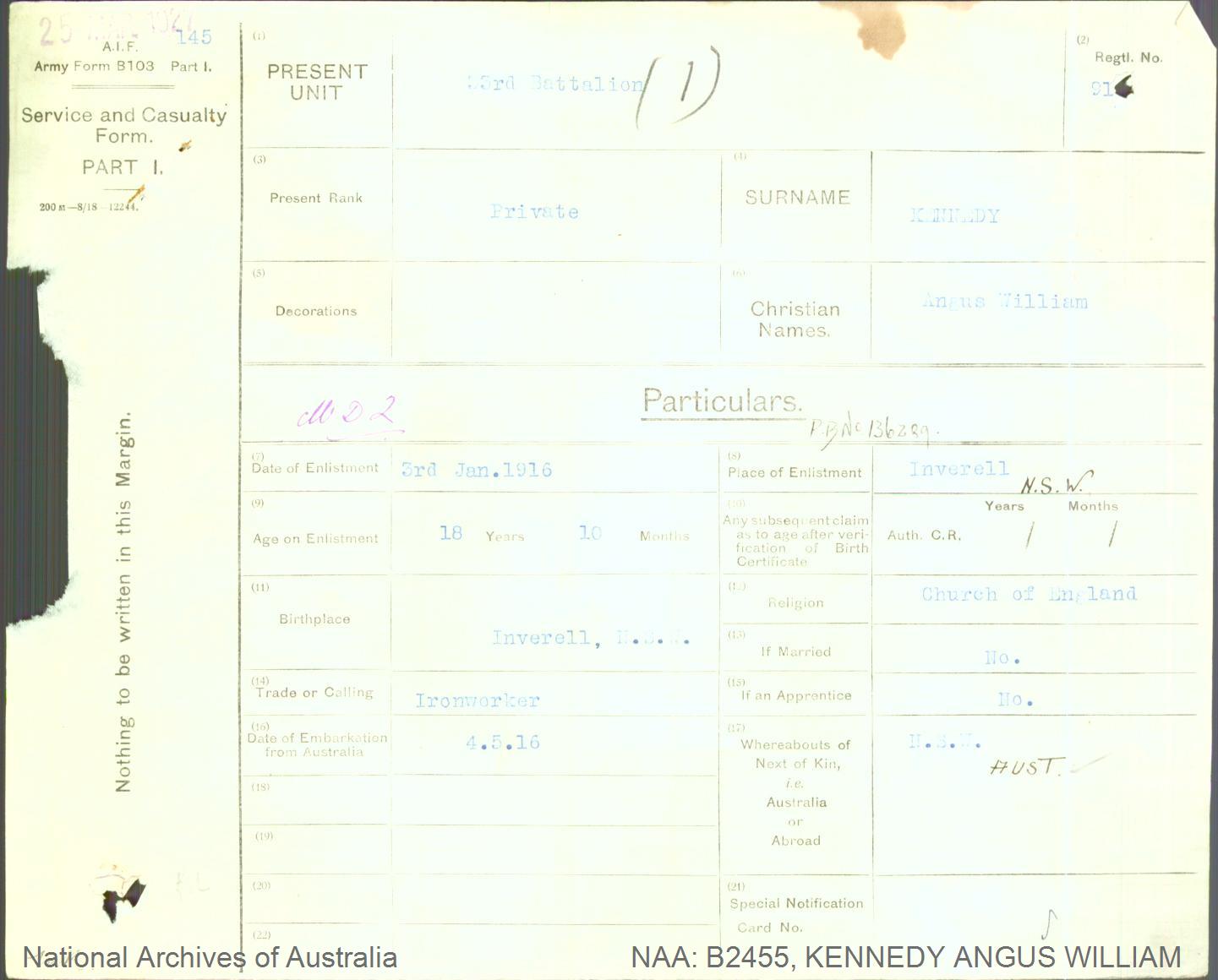
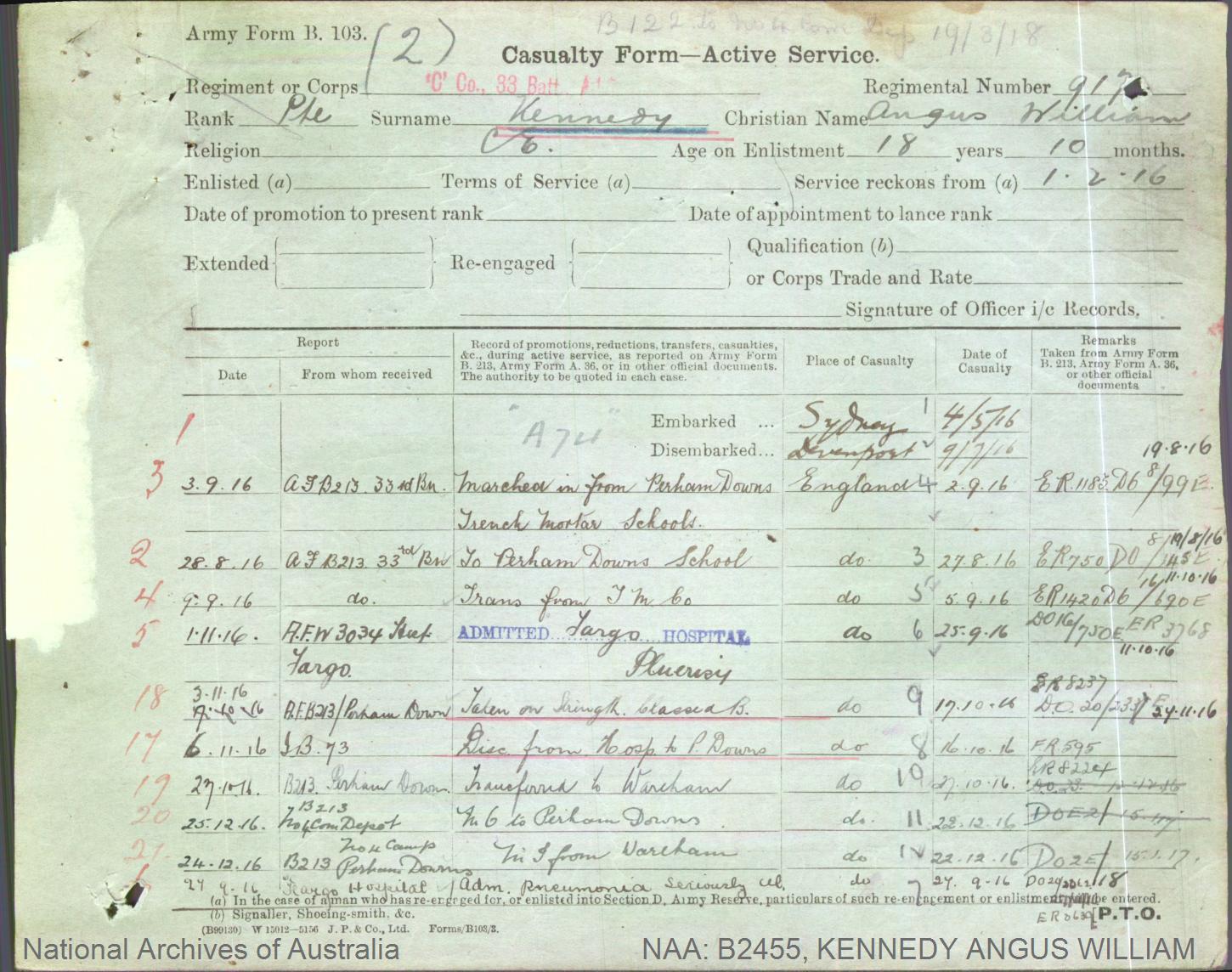
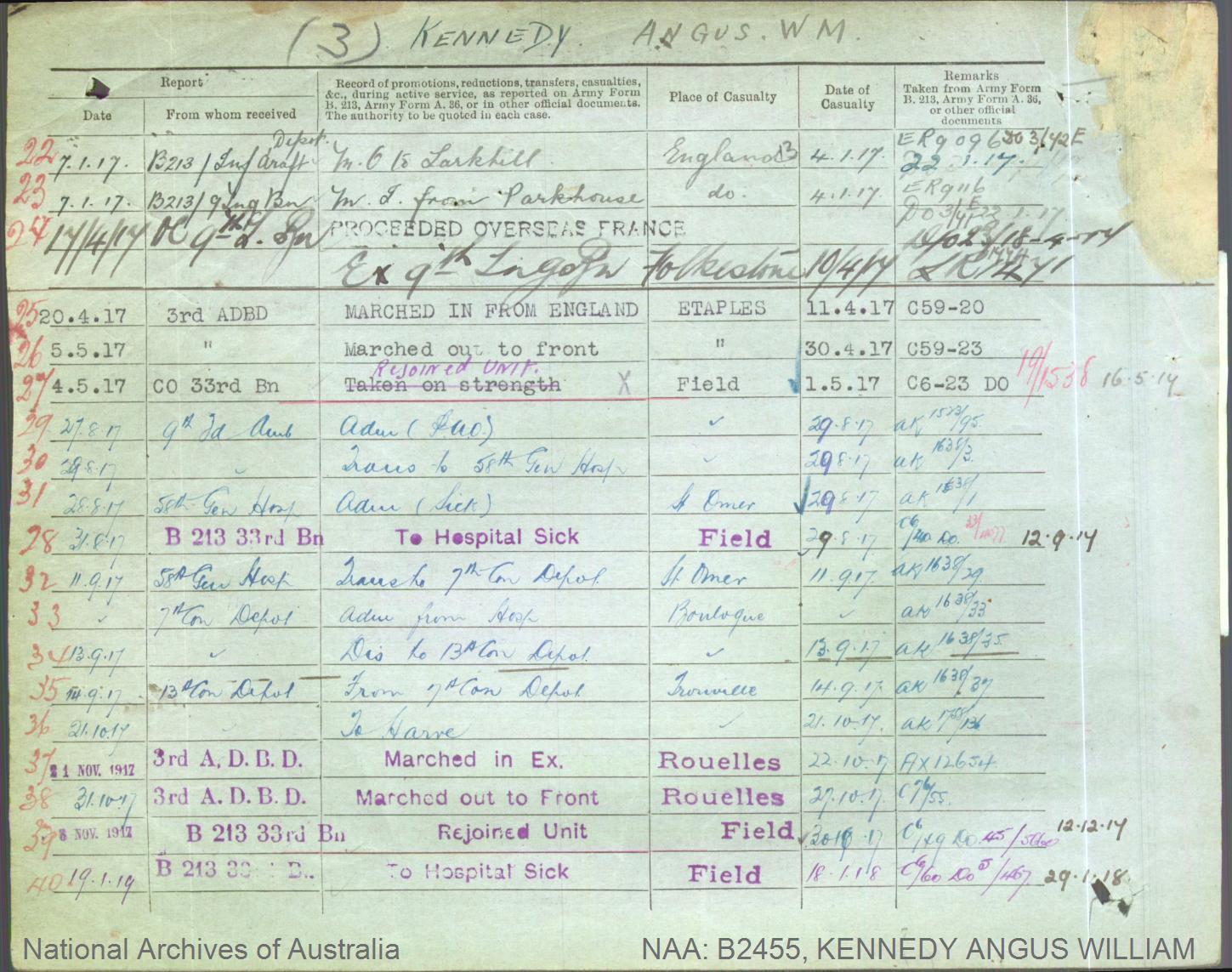
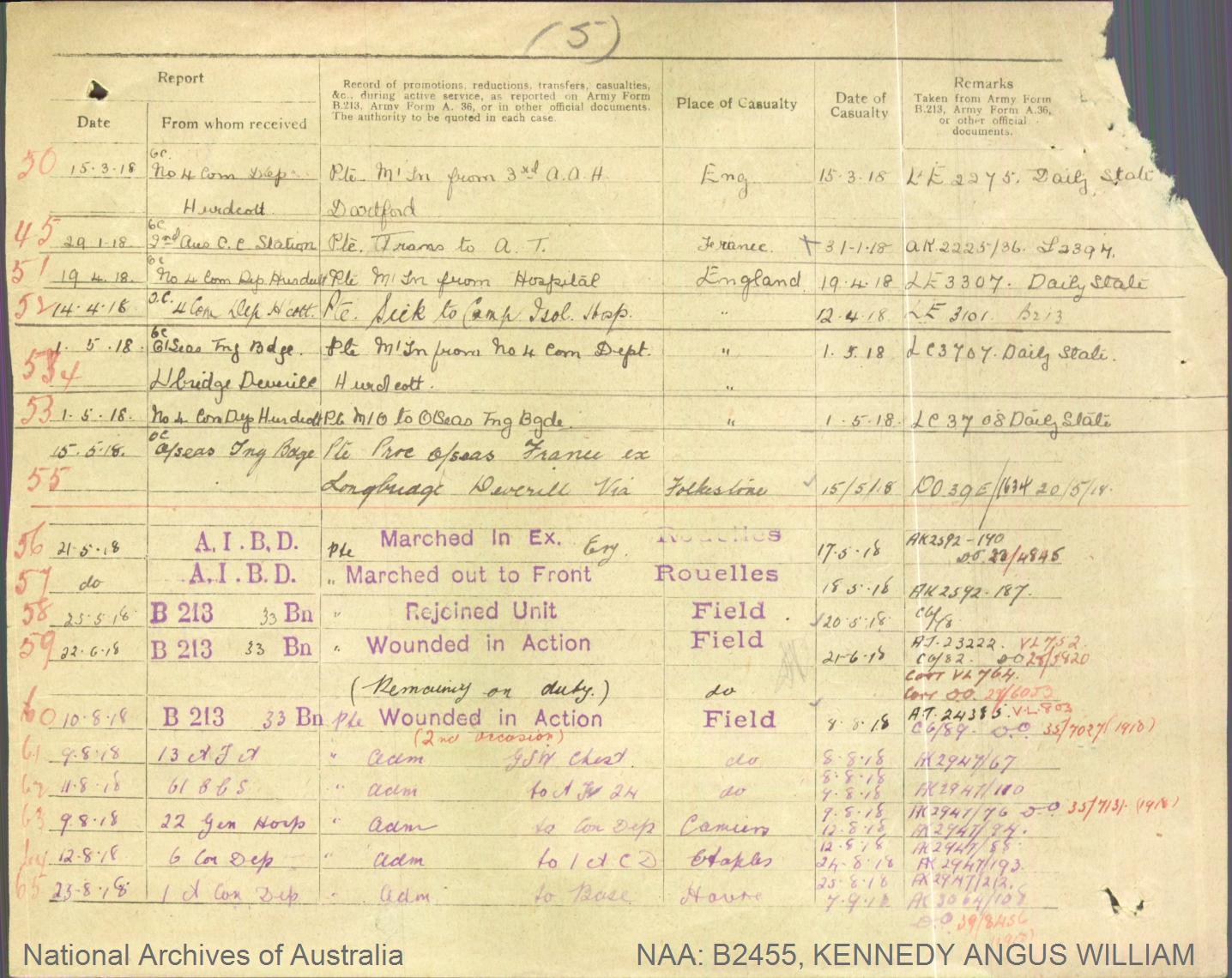
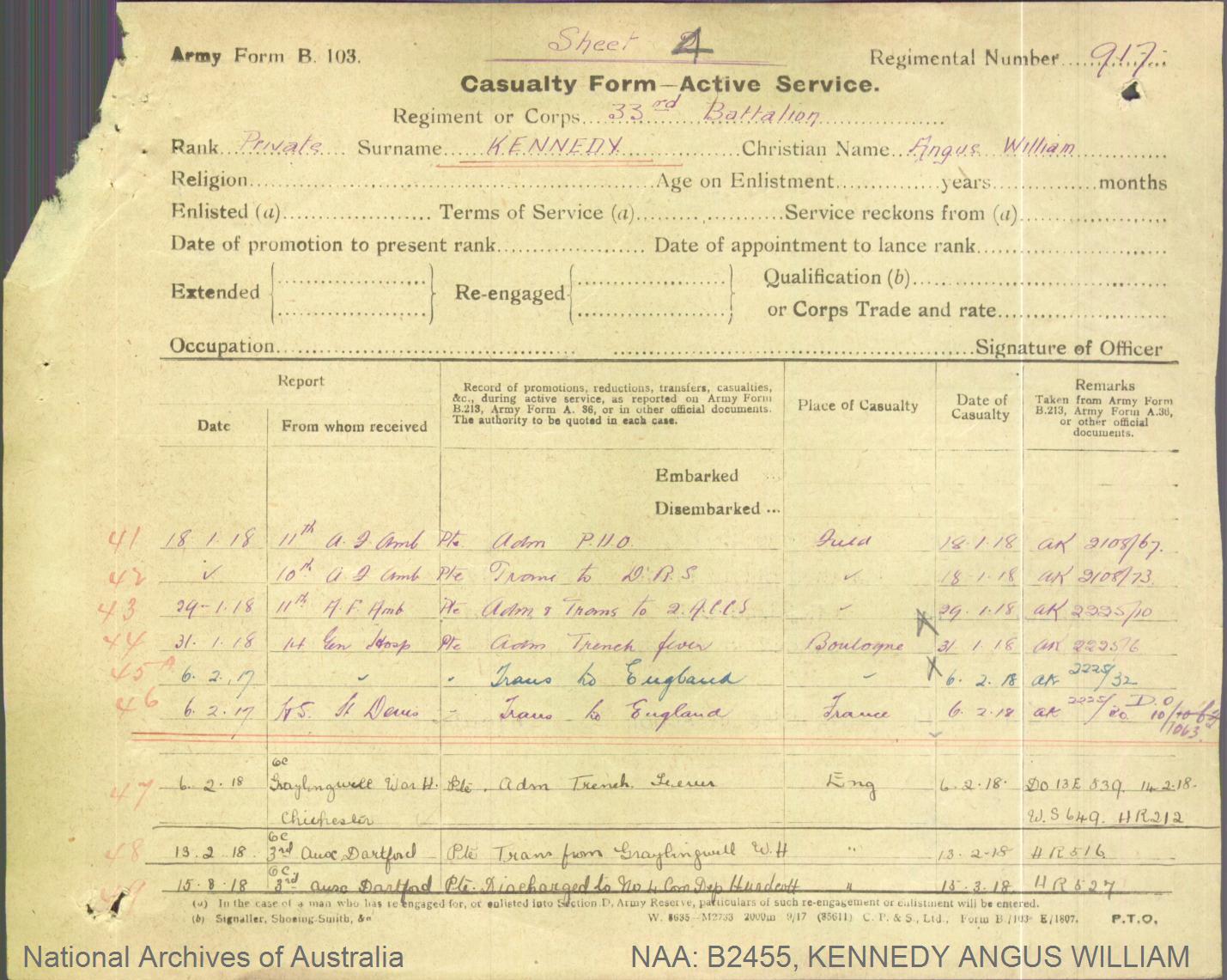




World War 2 Records
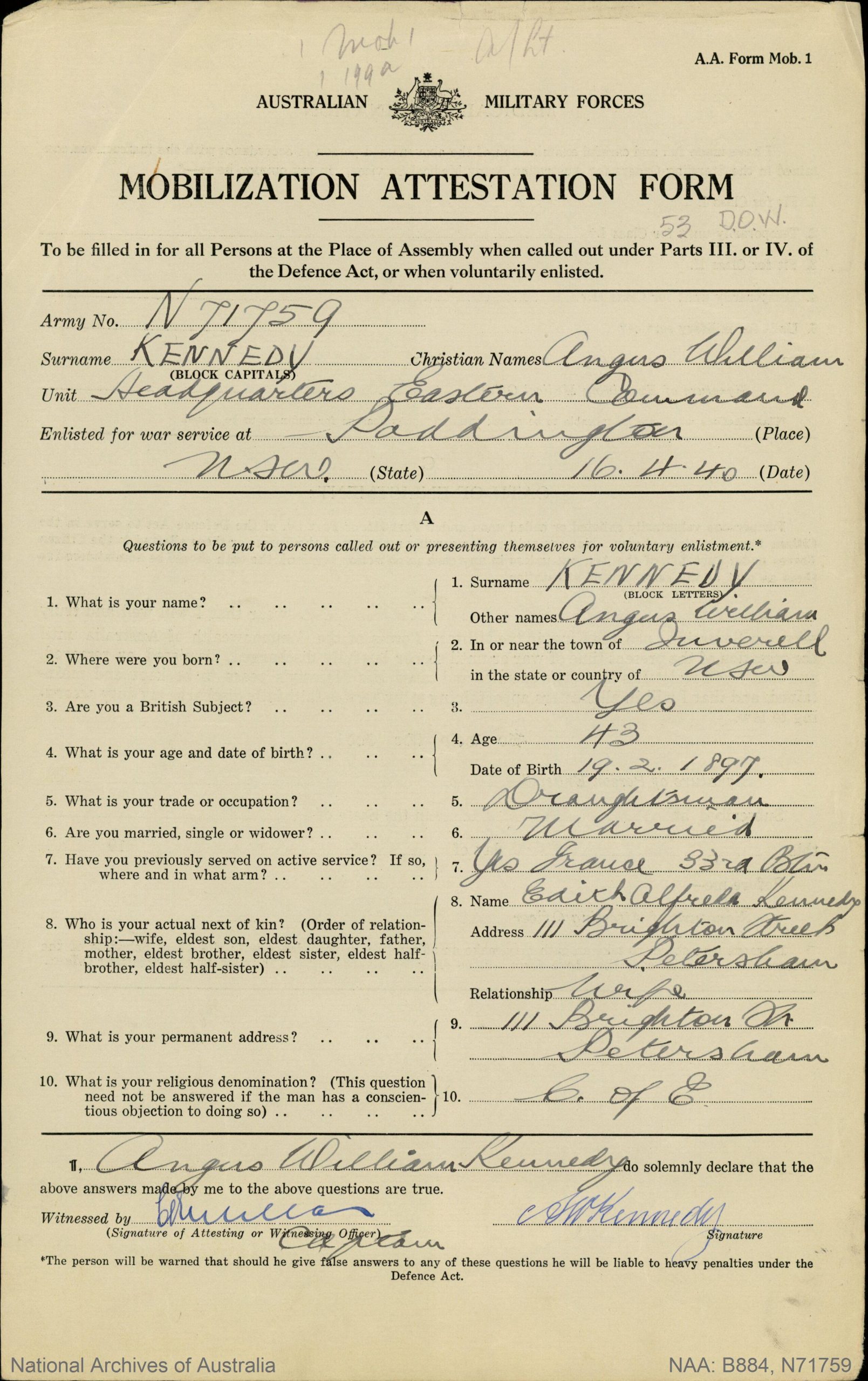
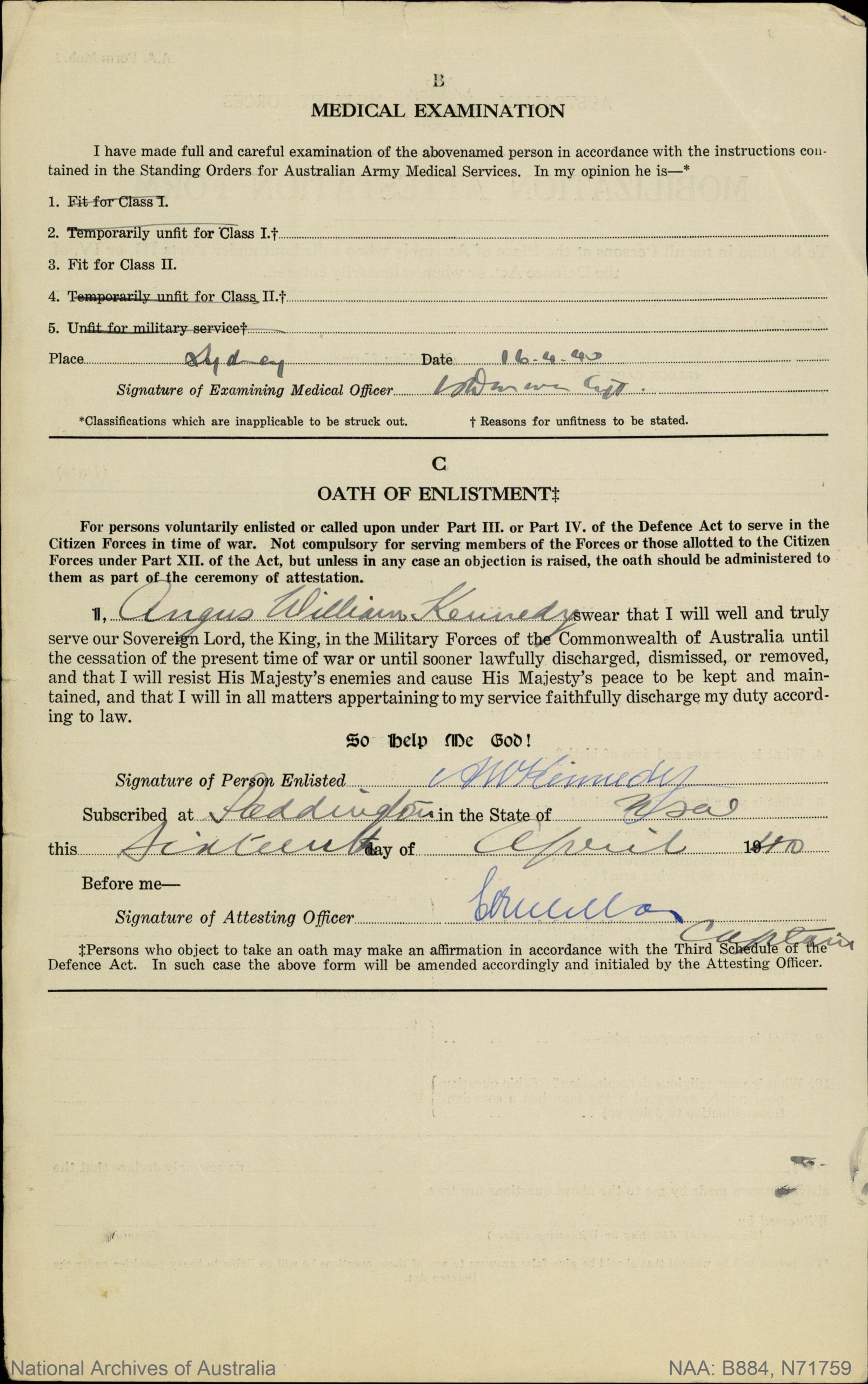
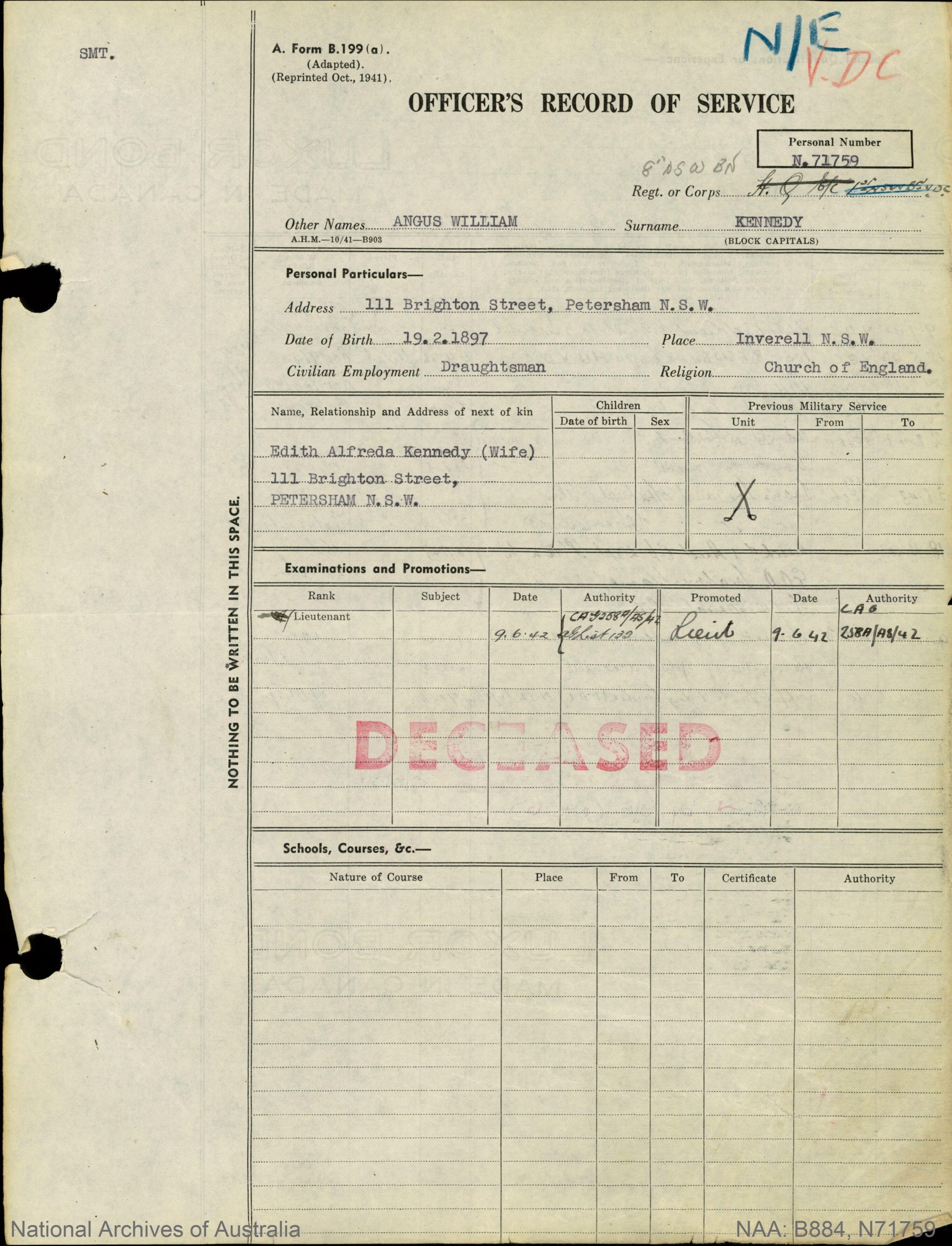
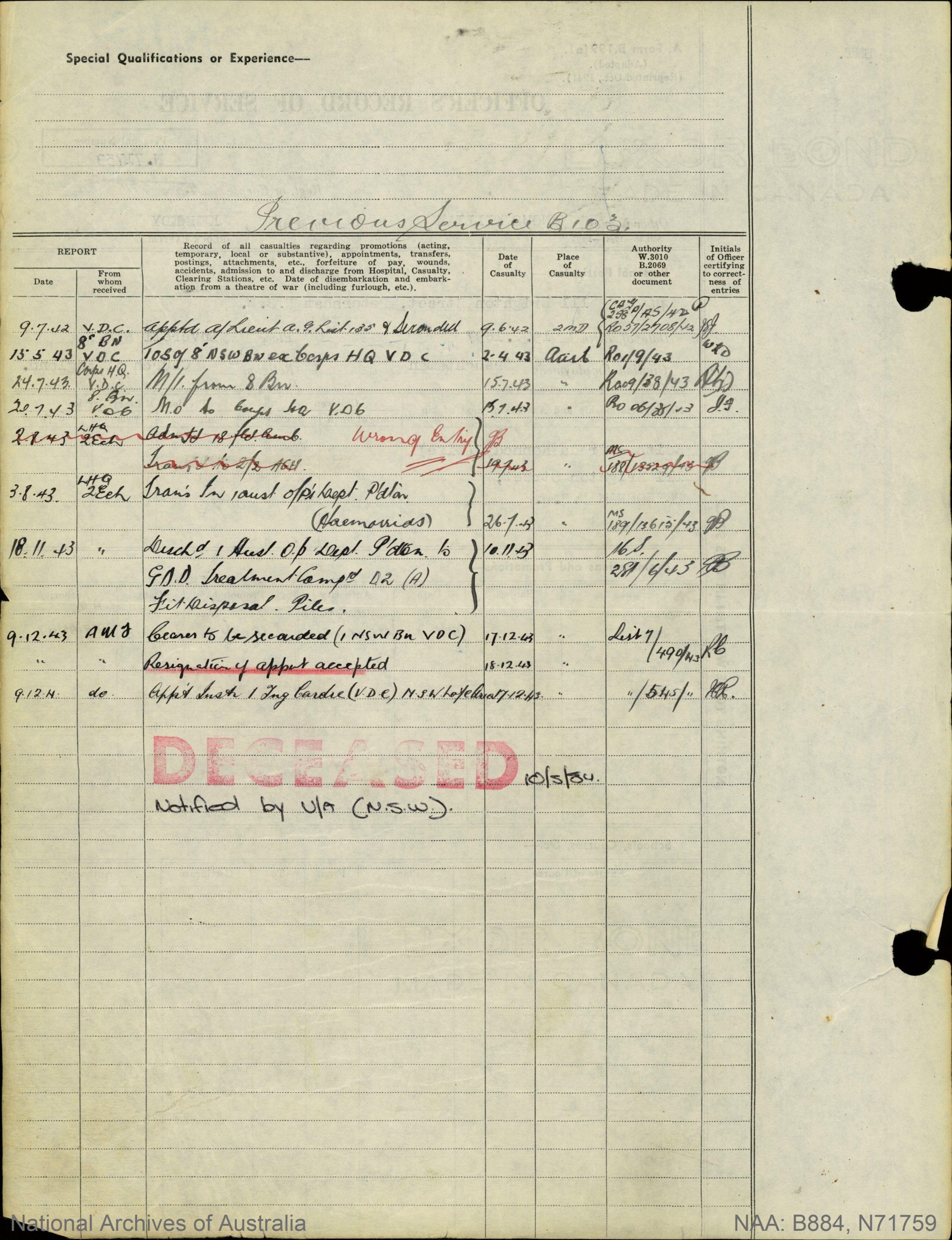
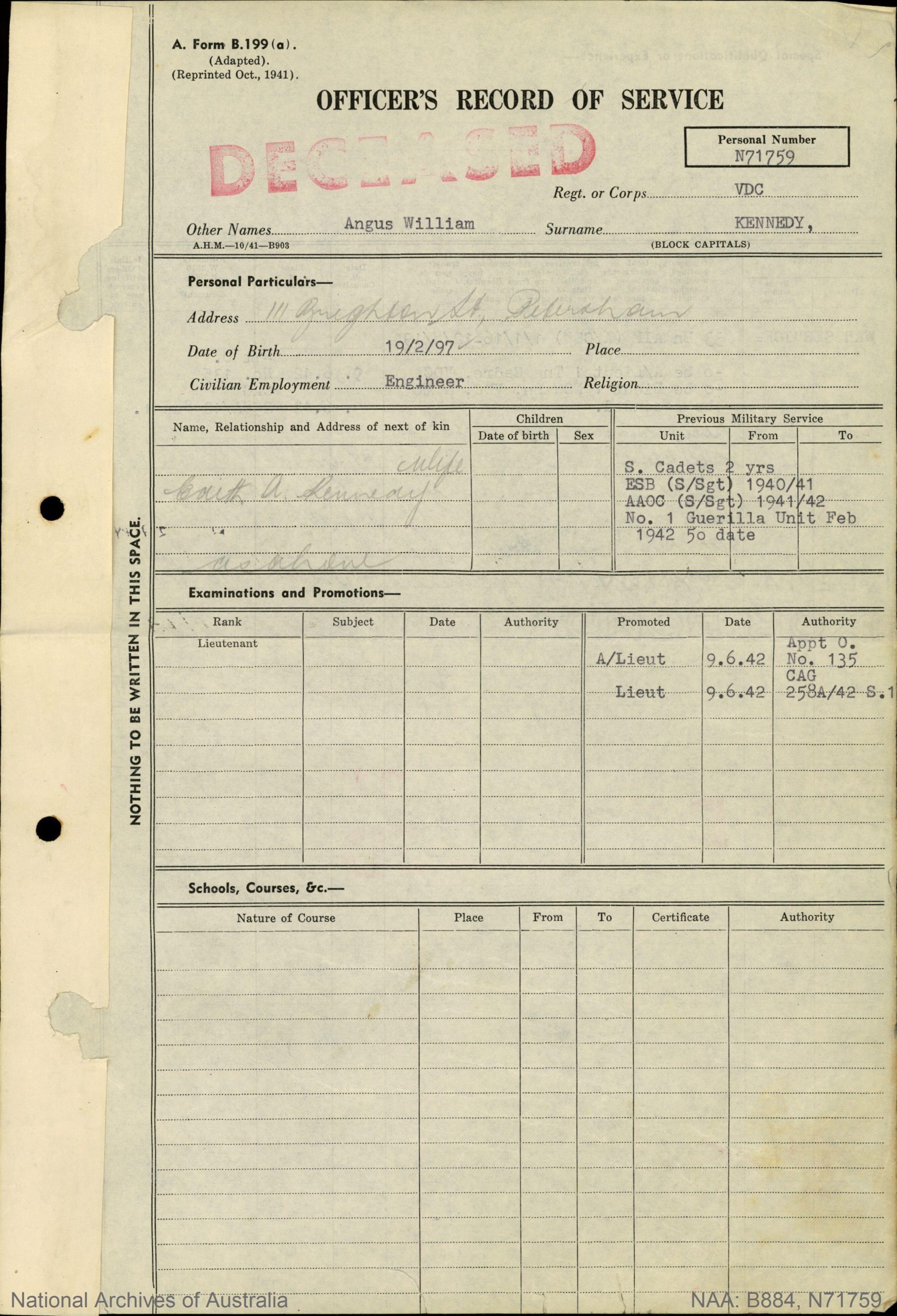

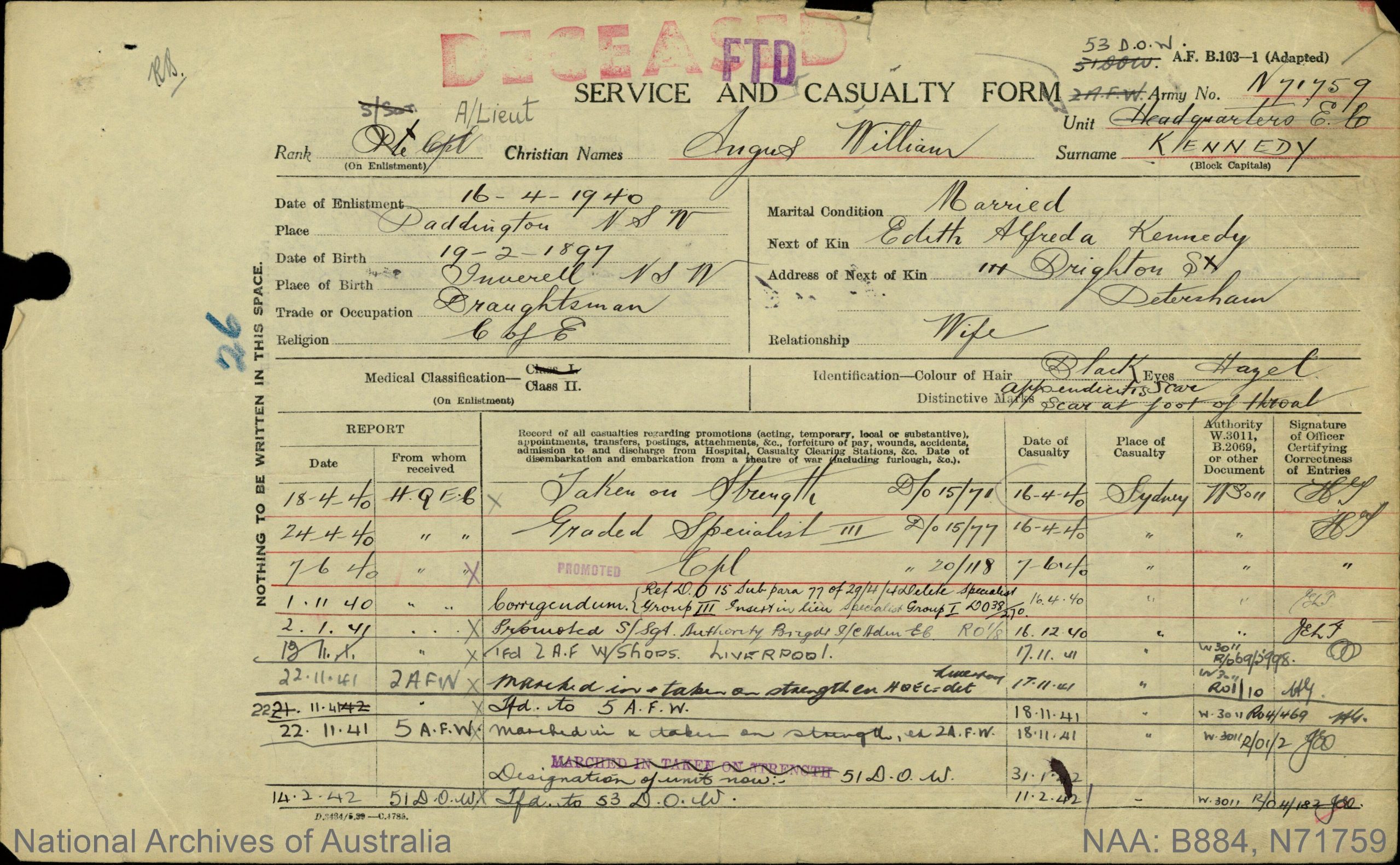
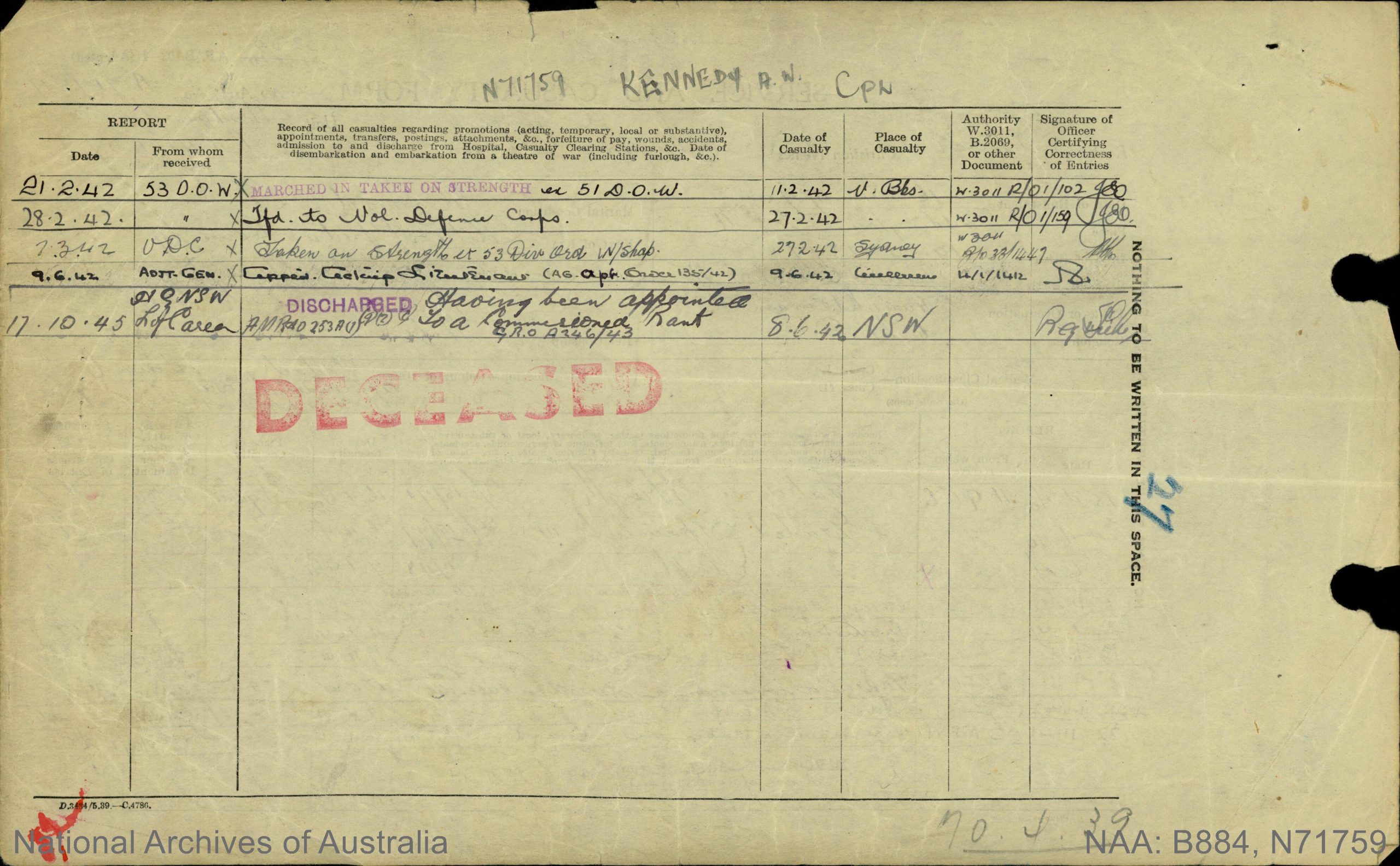
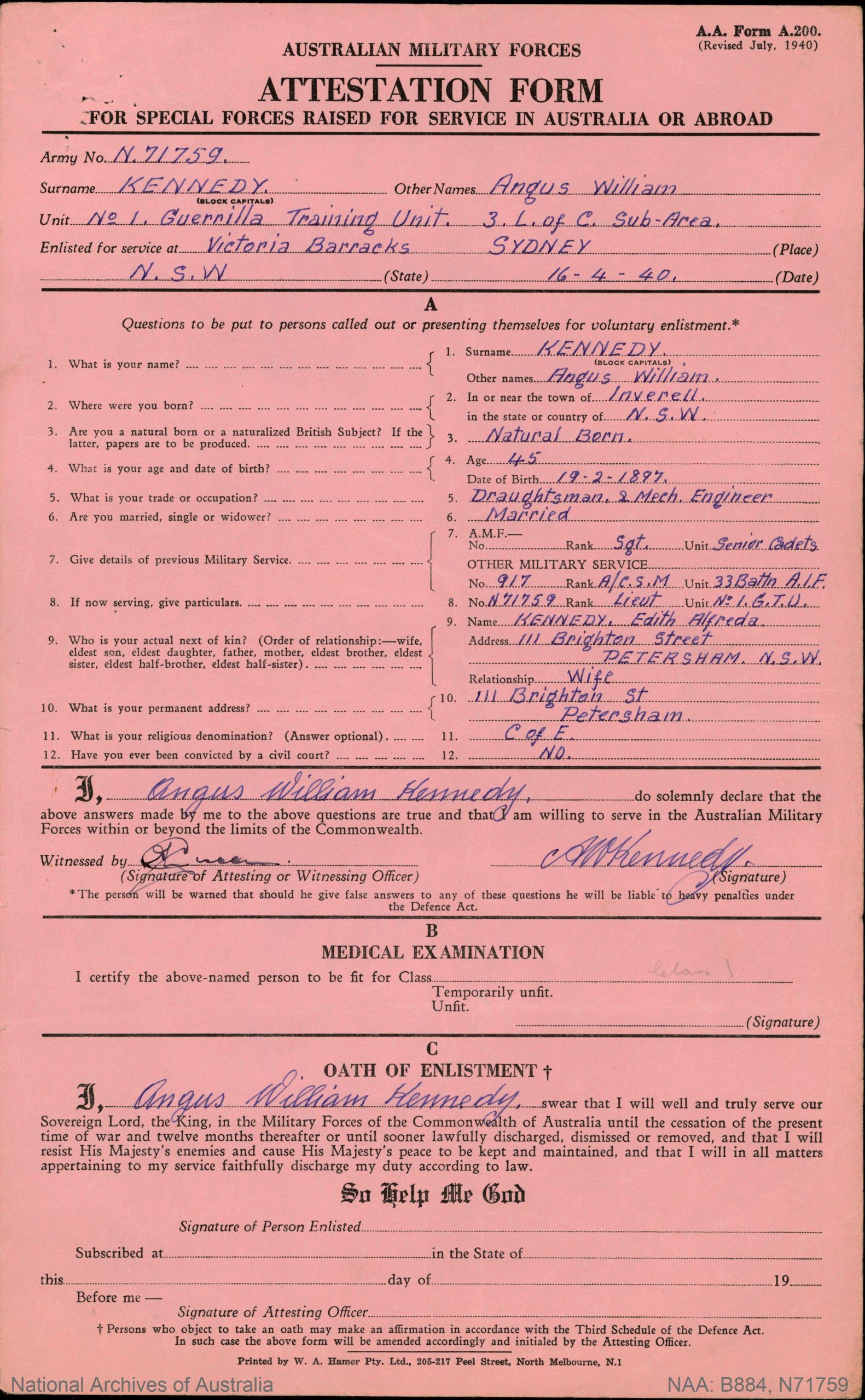
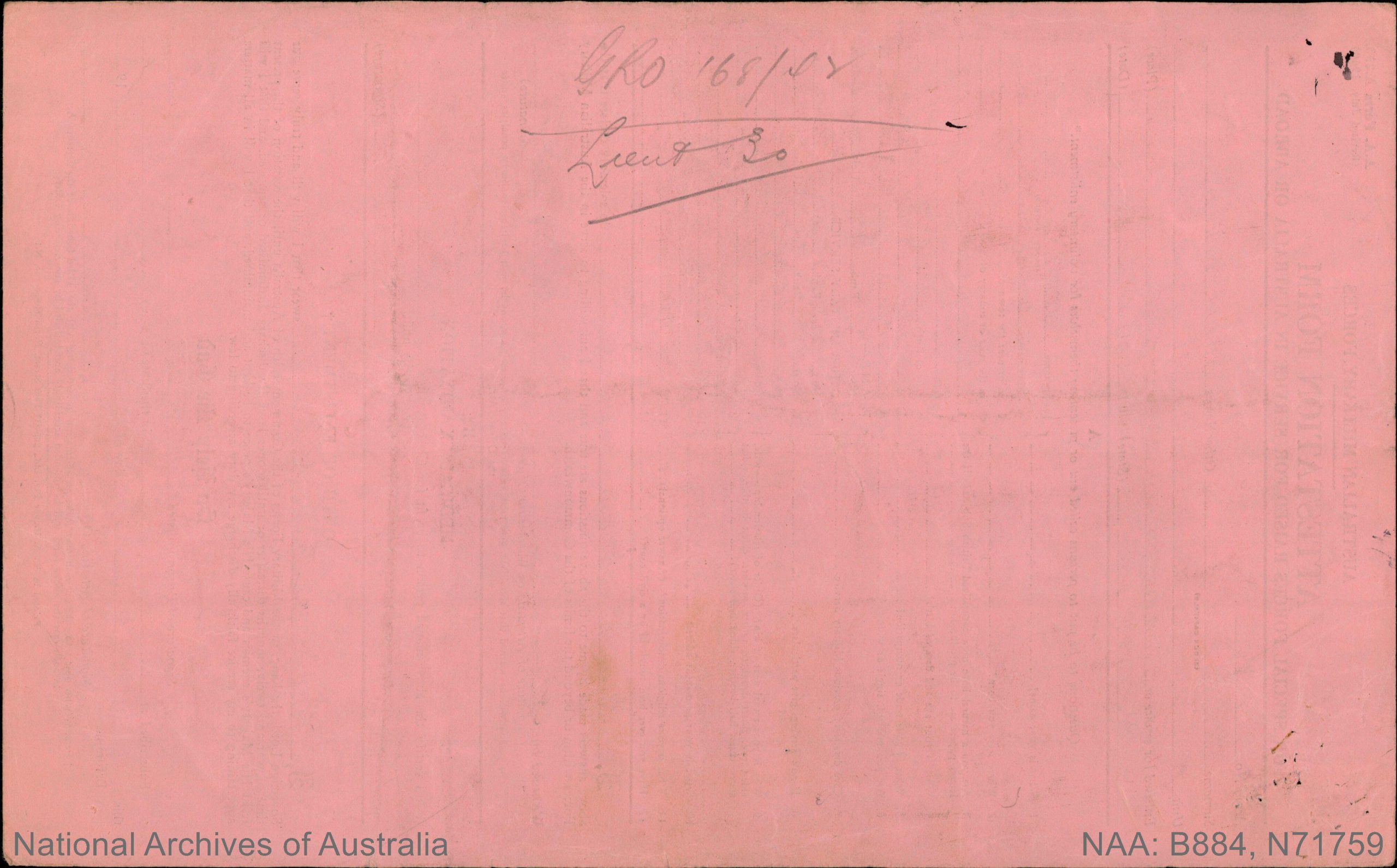
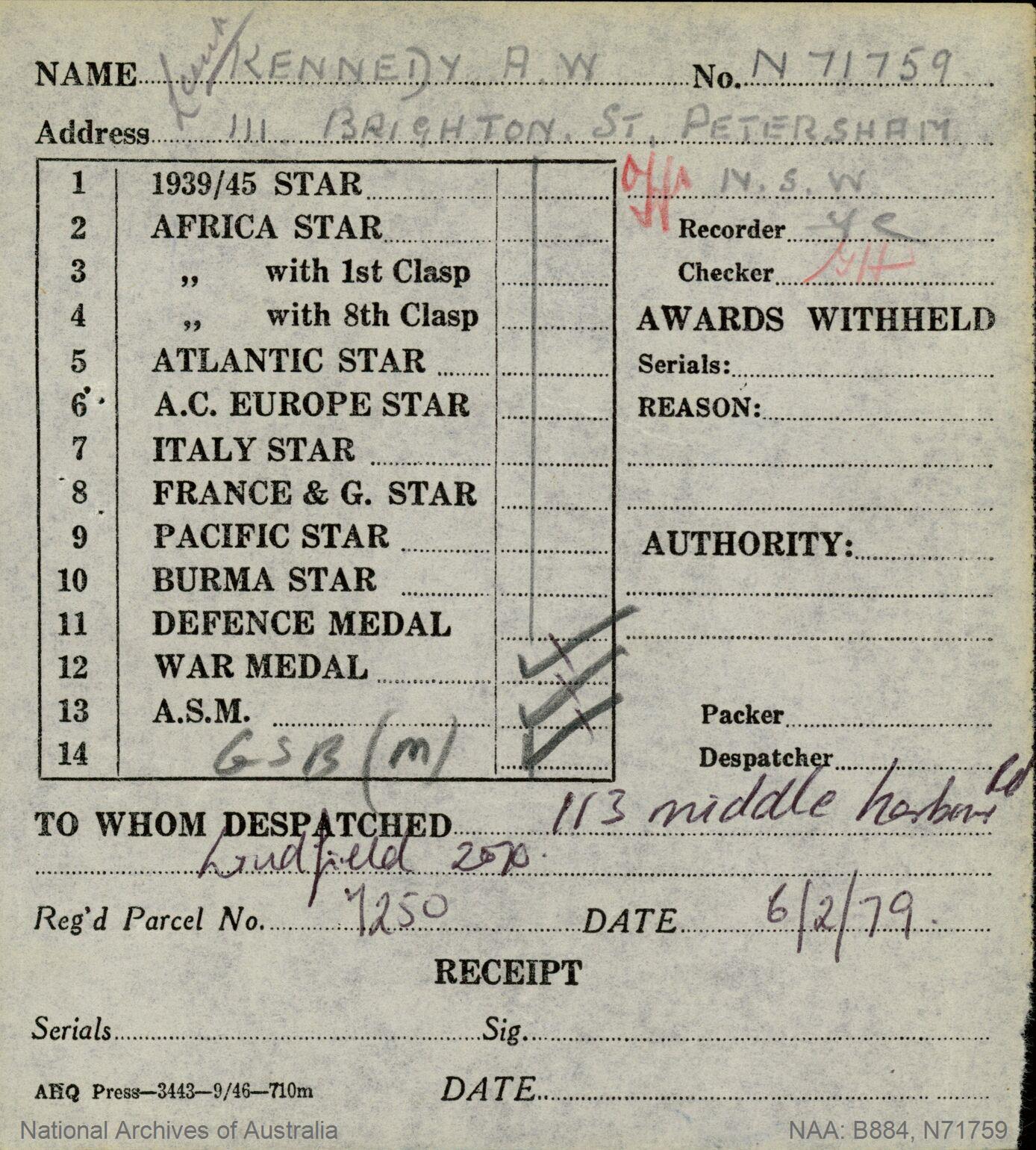
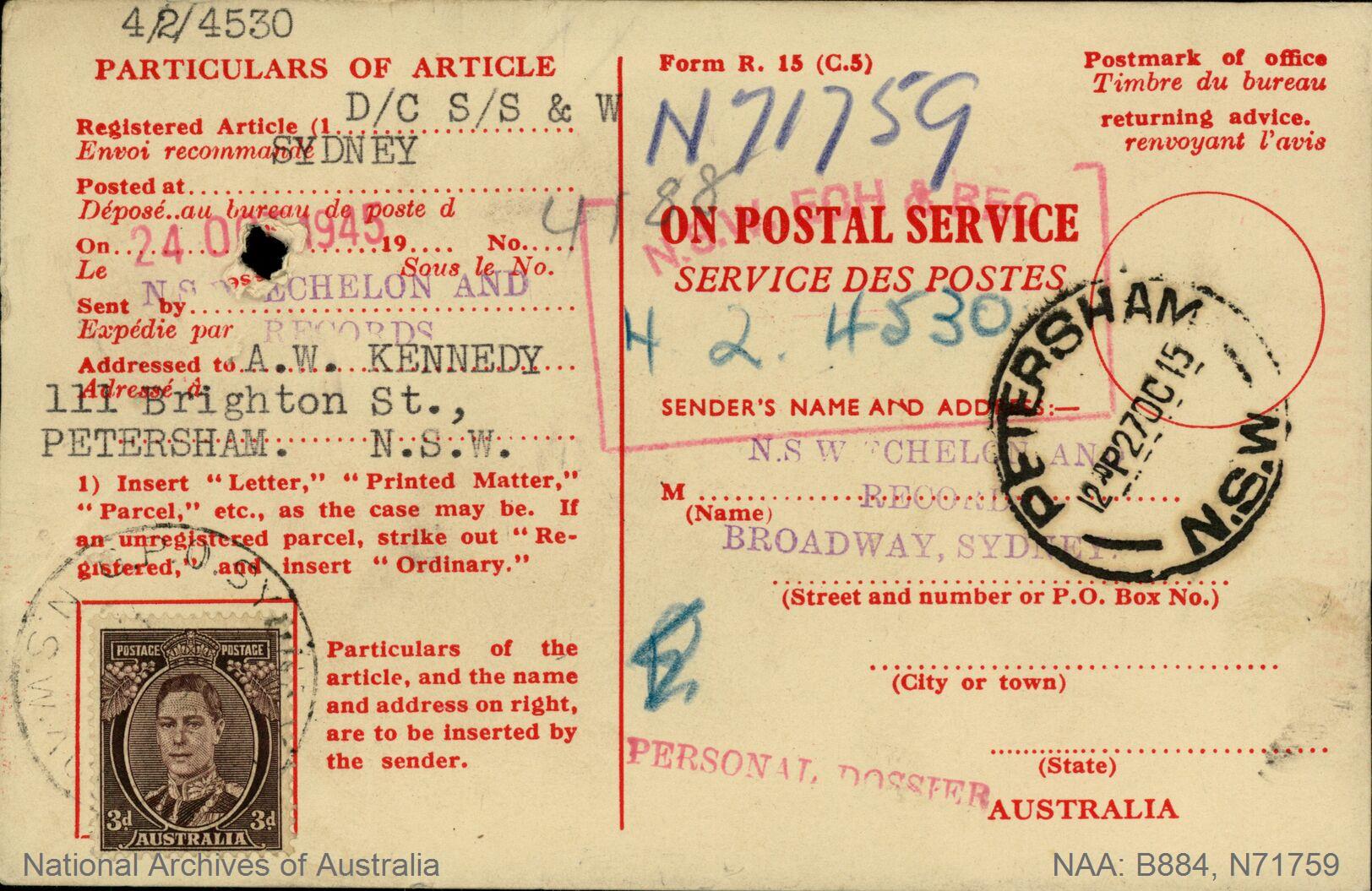




© Commonwealth of Australia (National Archives of Australia)
Under Construction: 28/11/20210-06/12/2021.
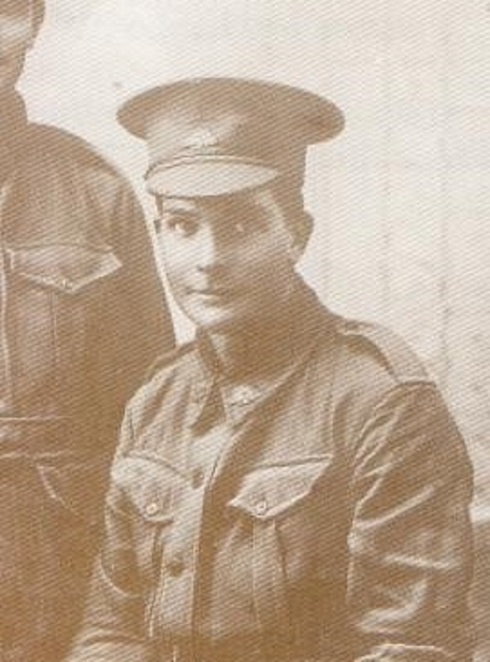

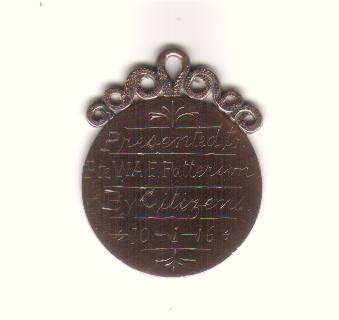
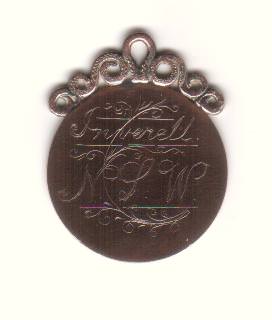
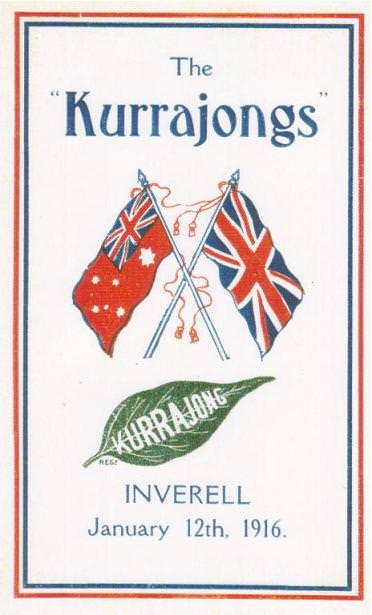
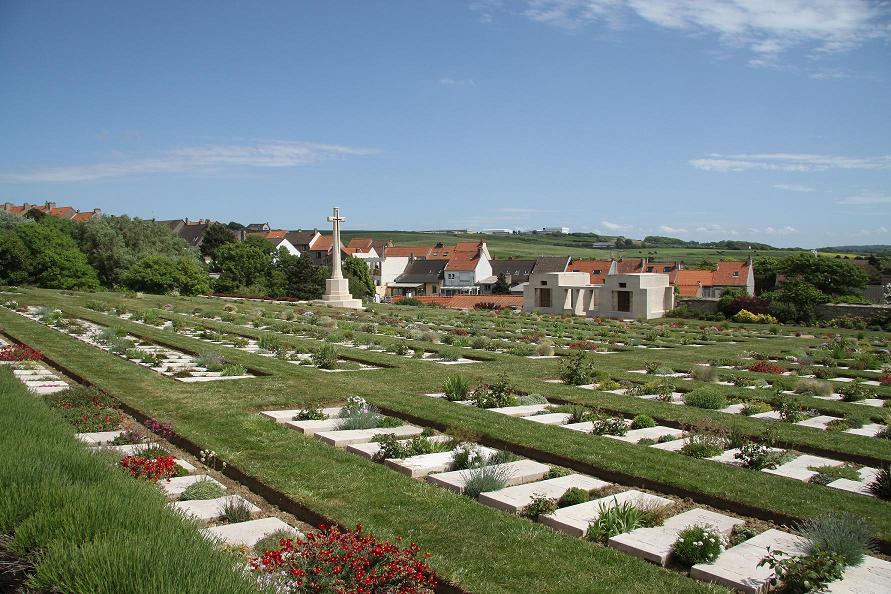

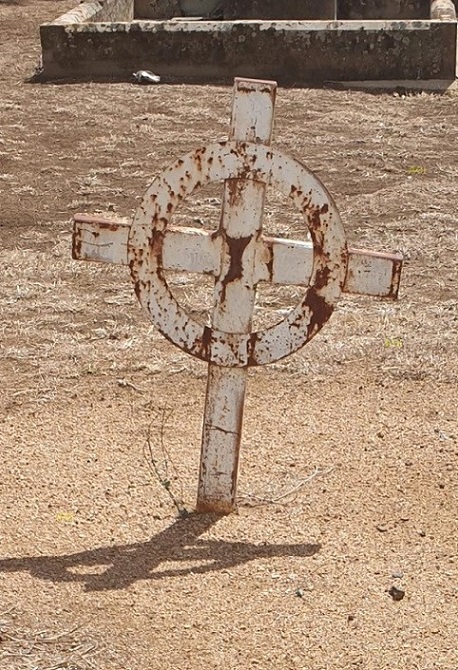


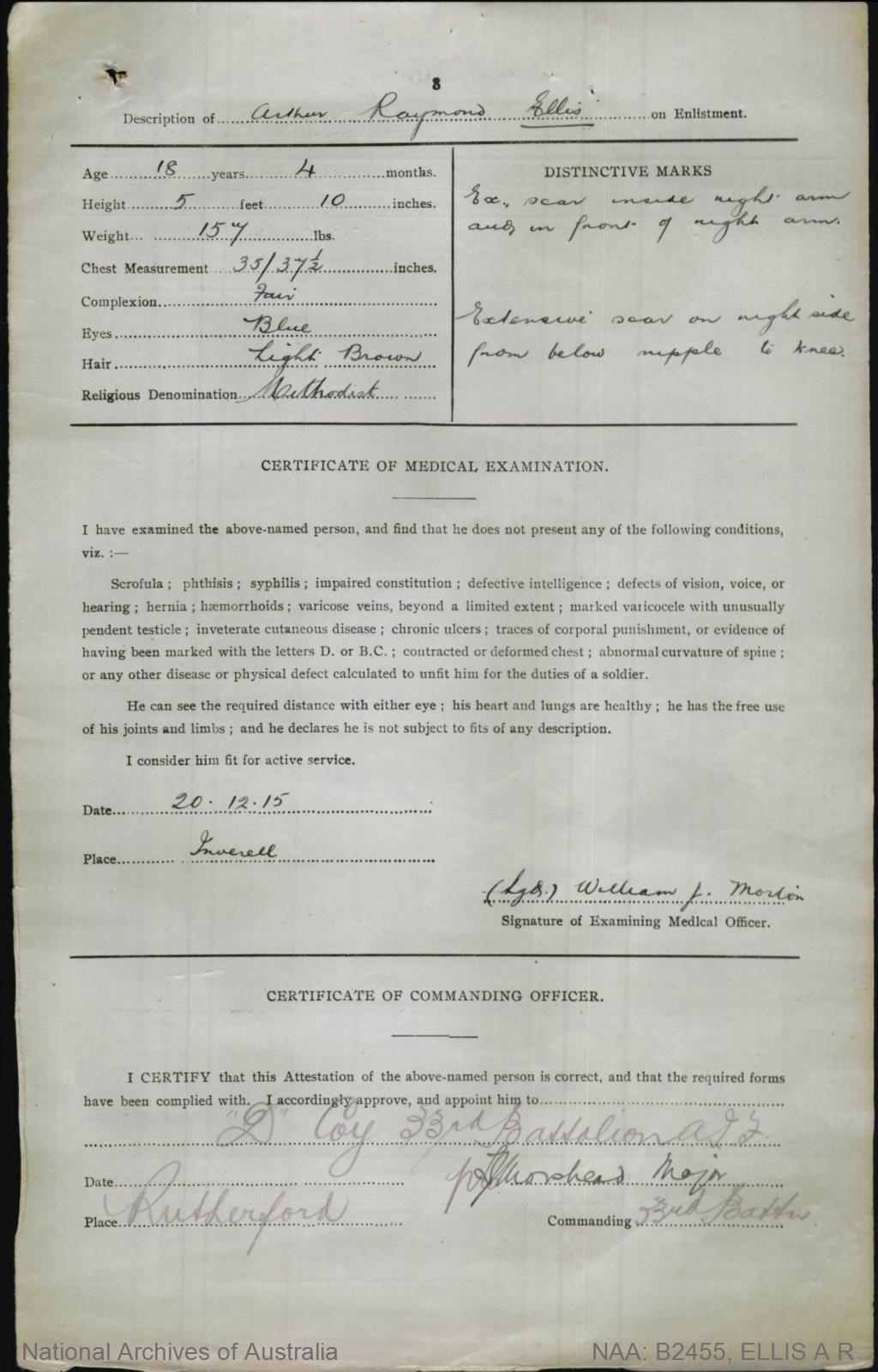
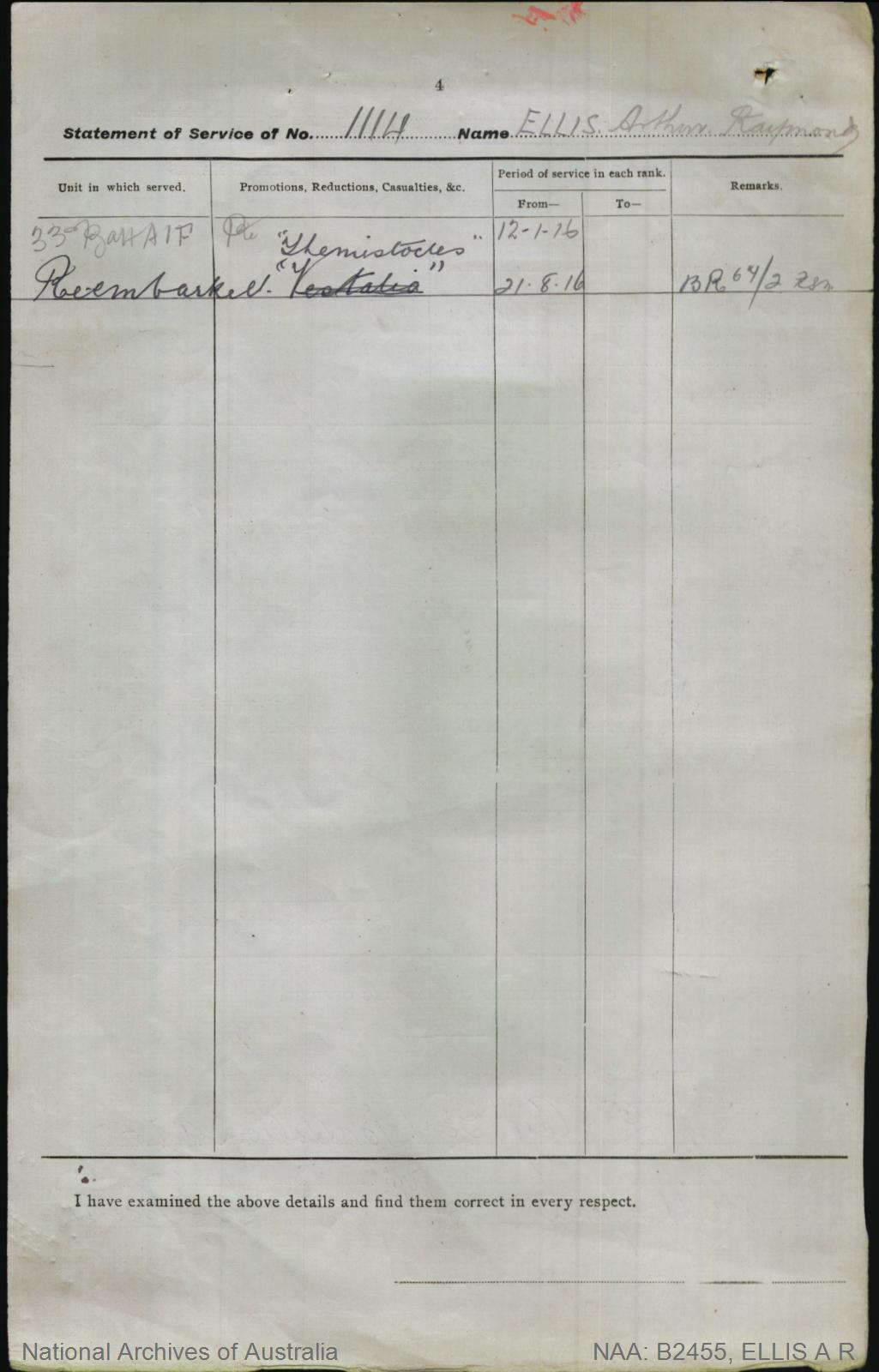
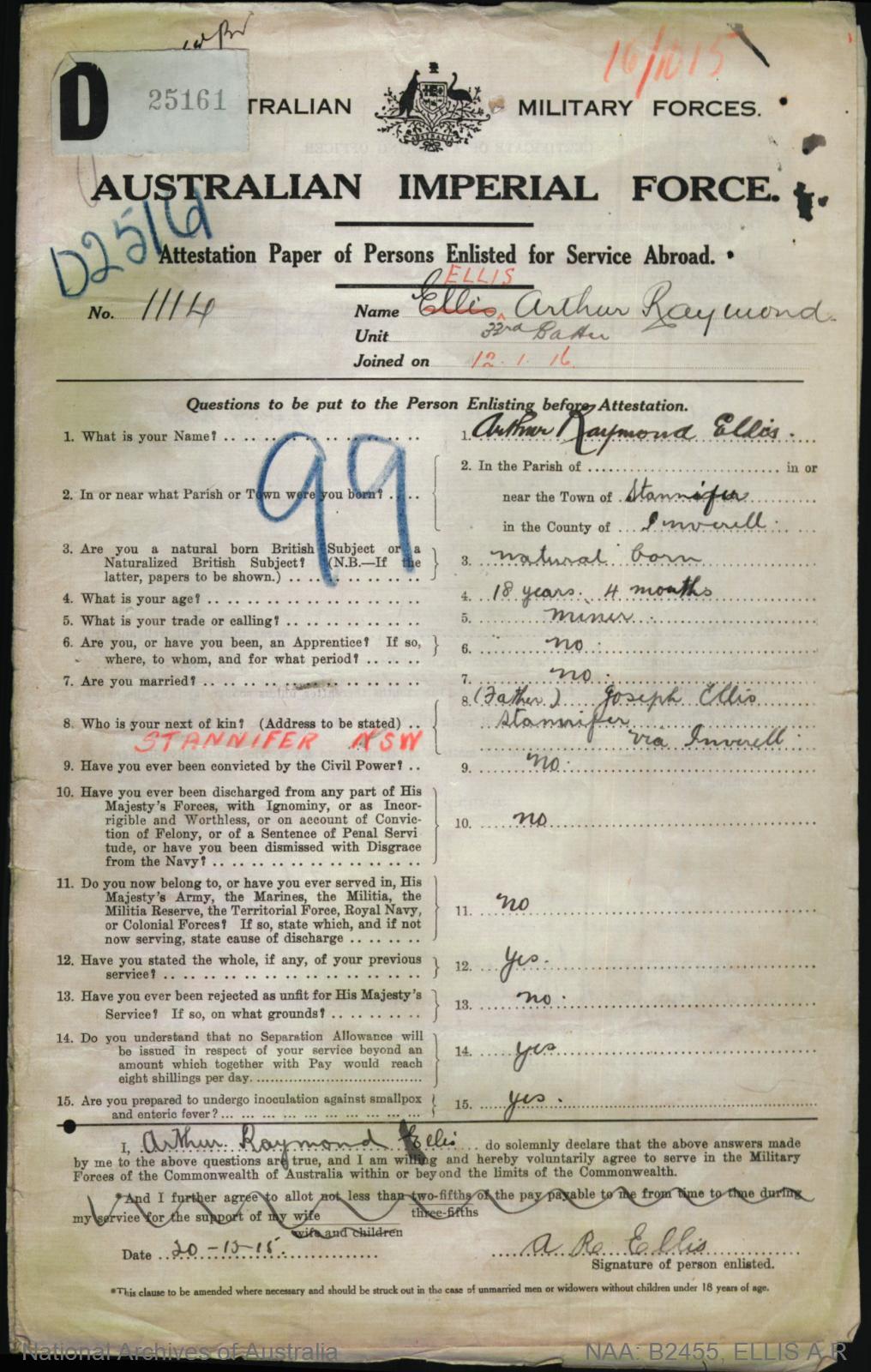

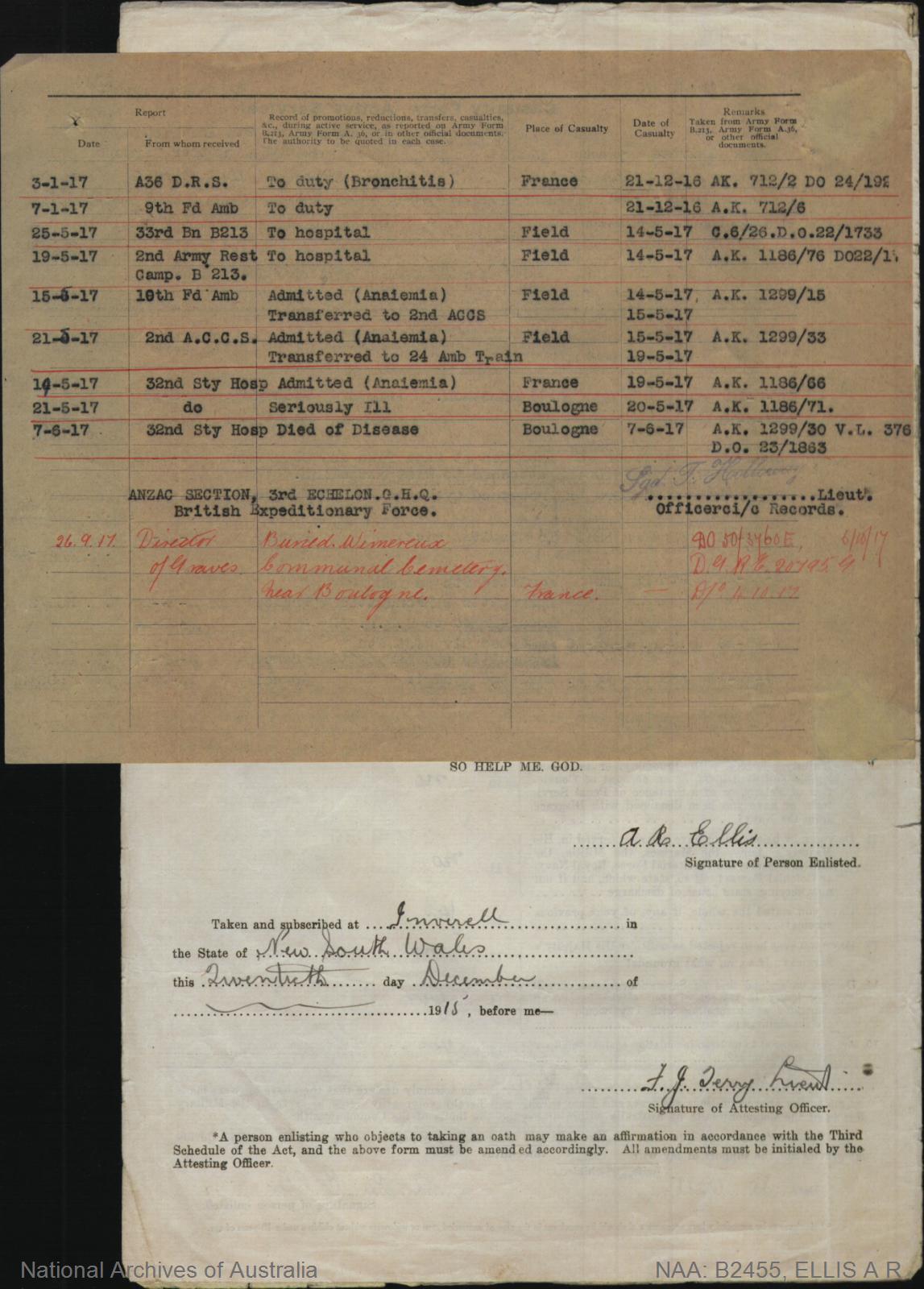
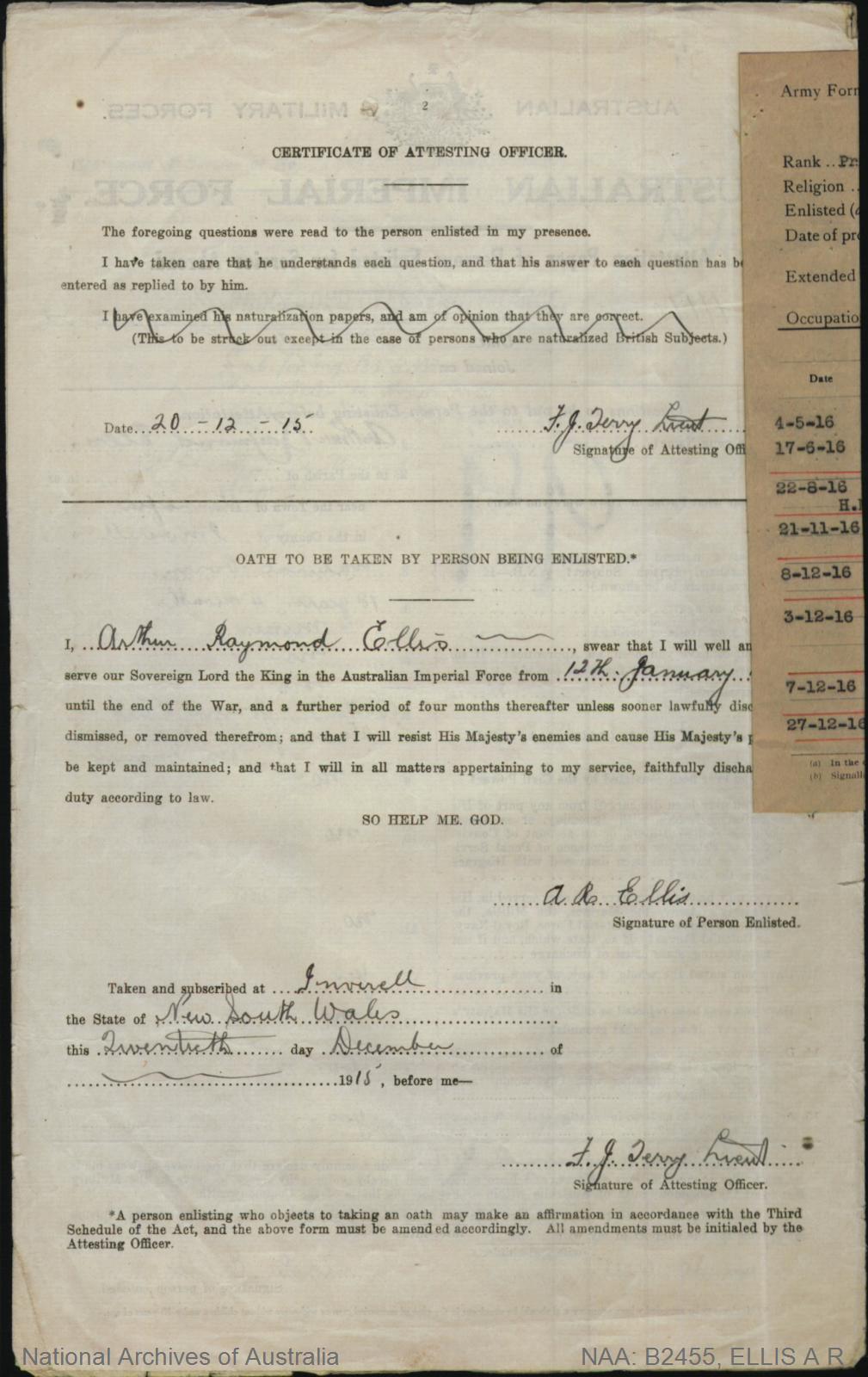
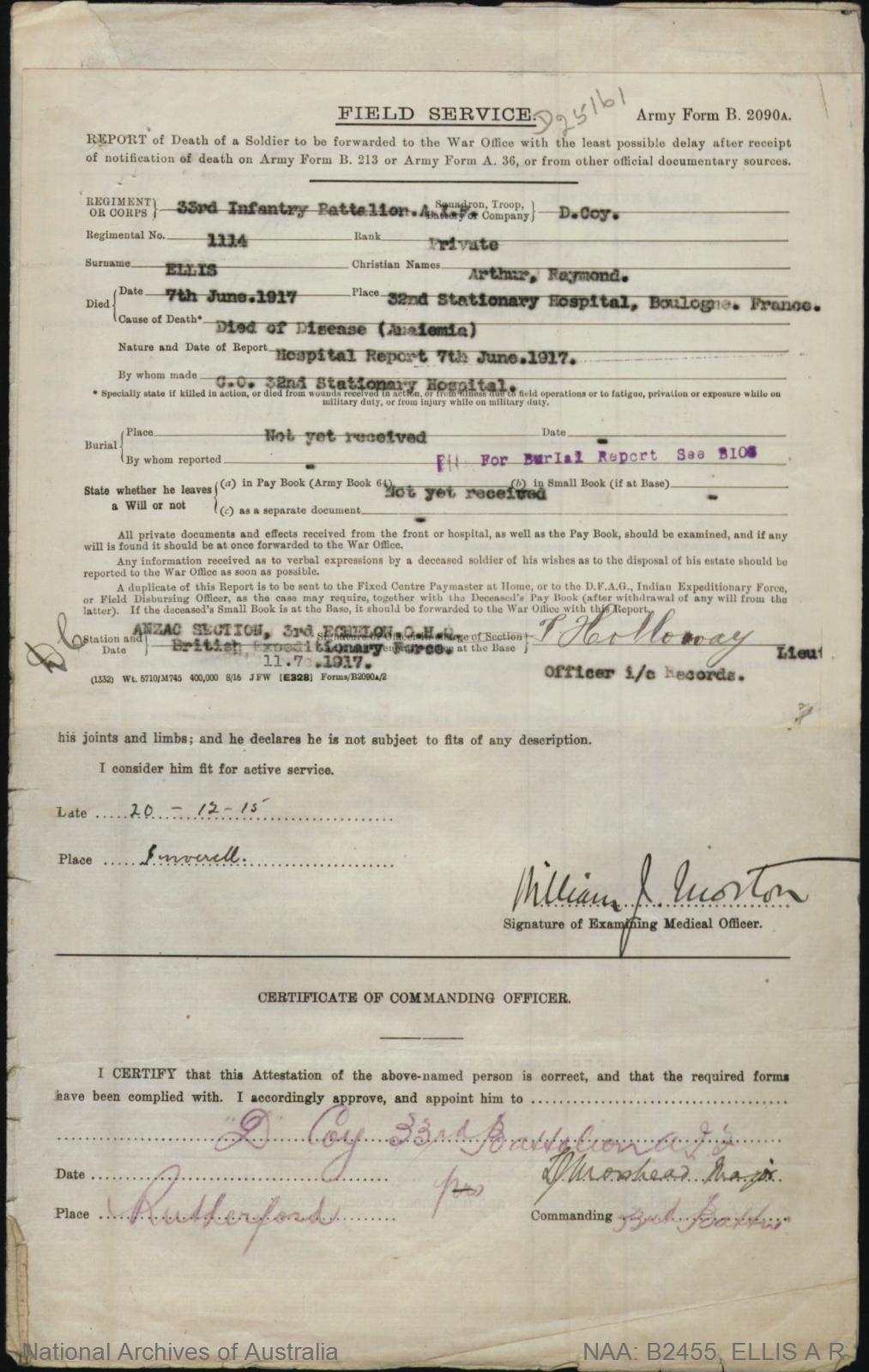

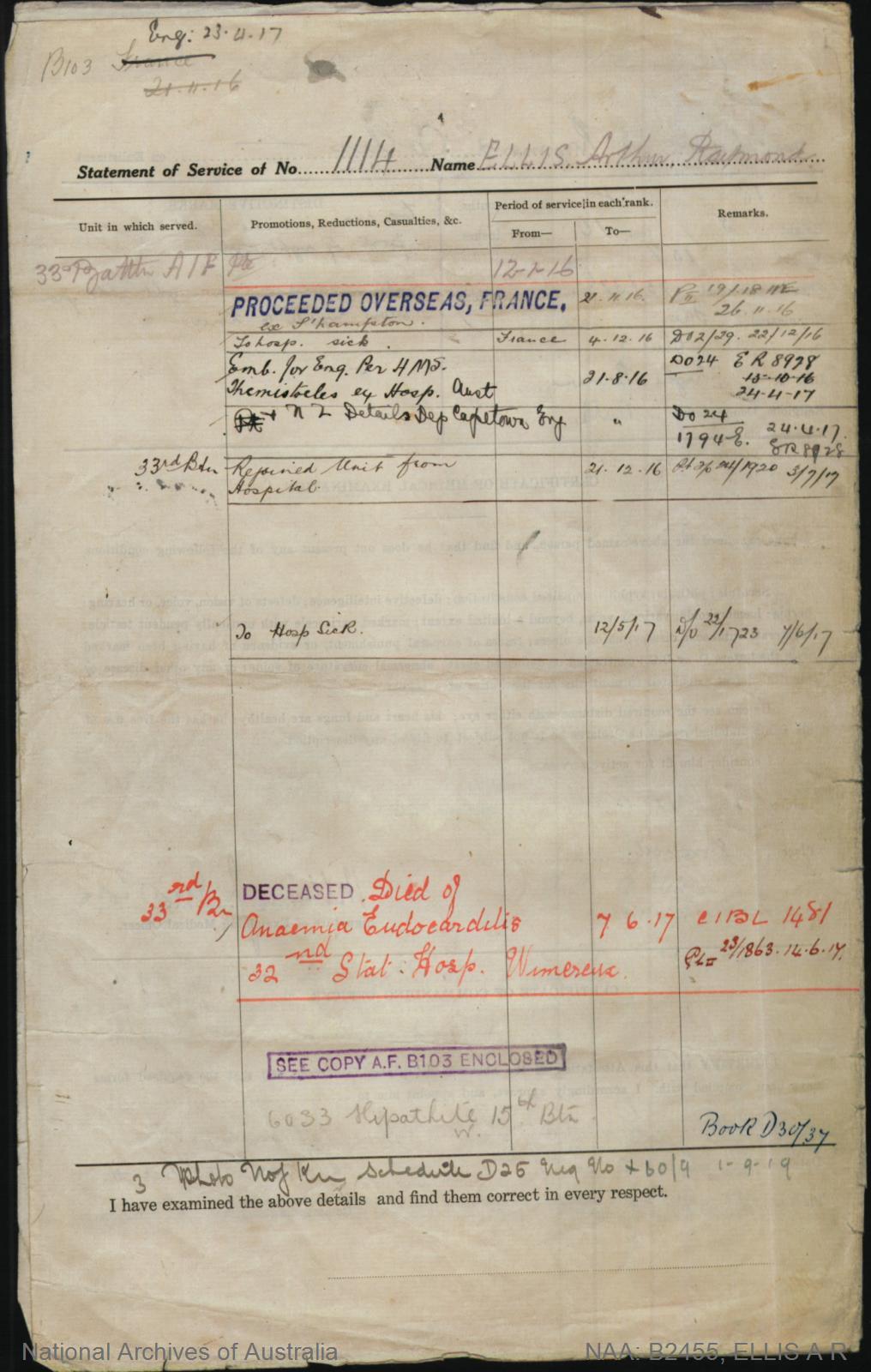
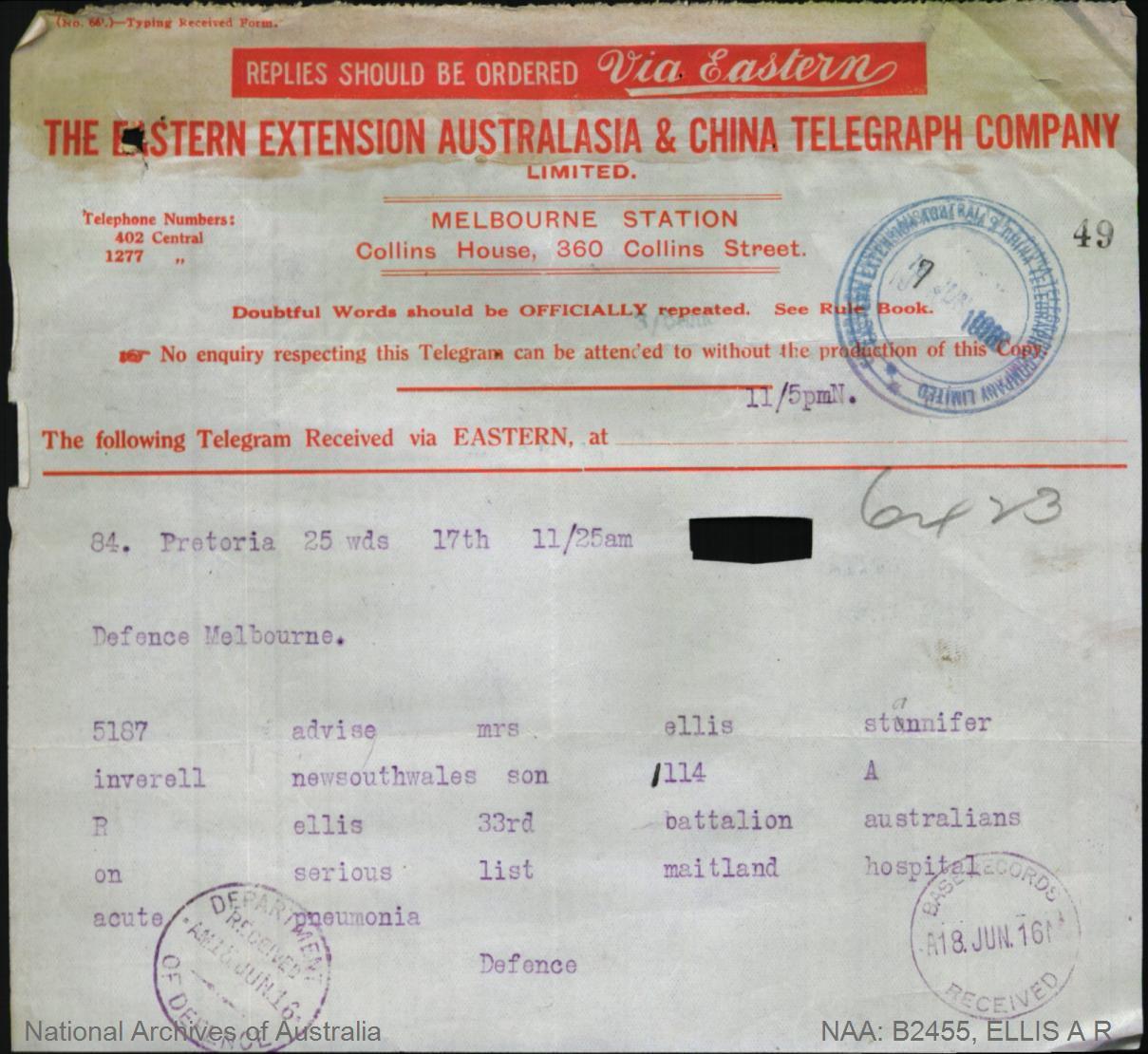









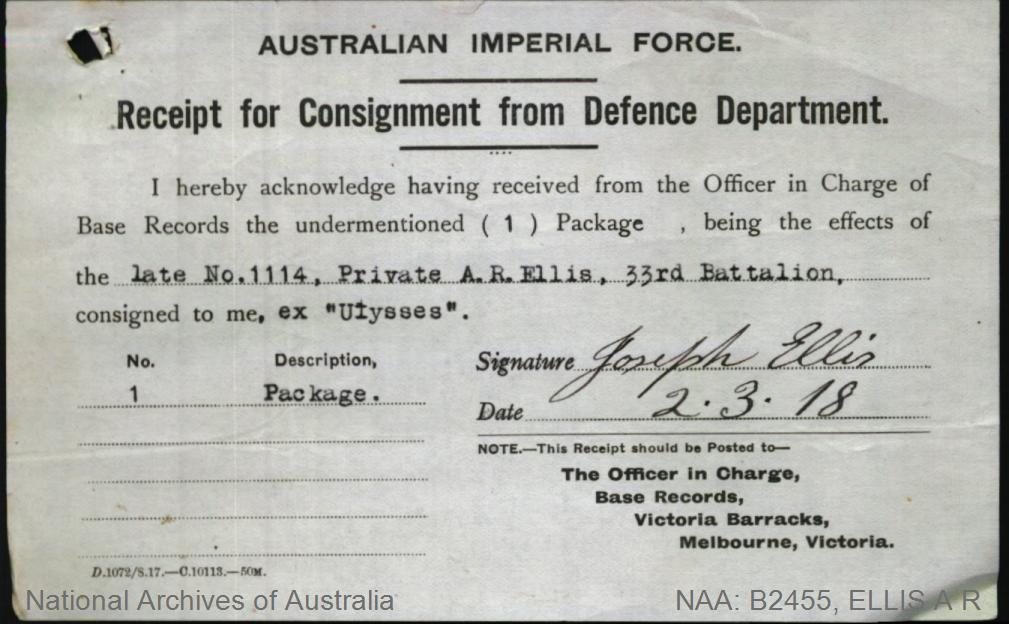

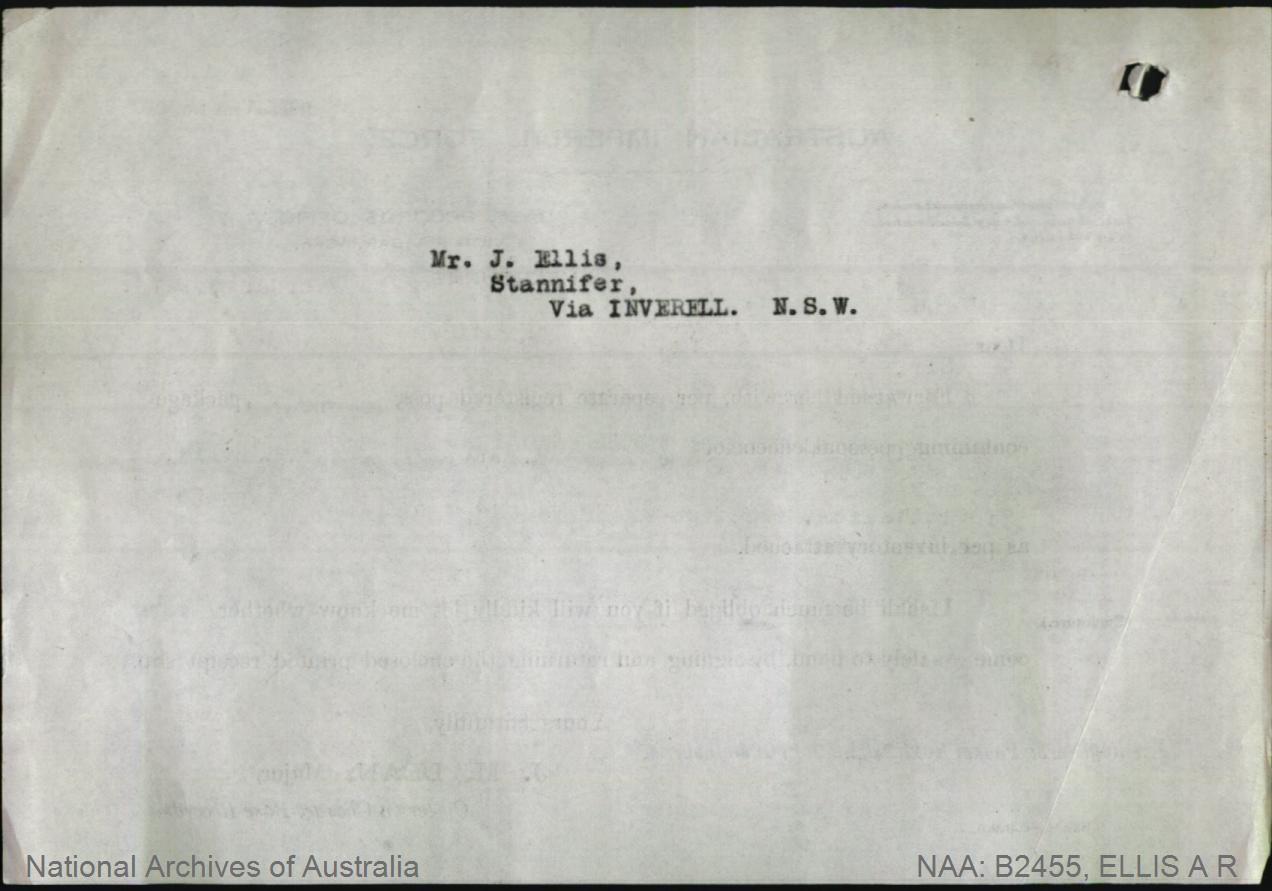
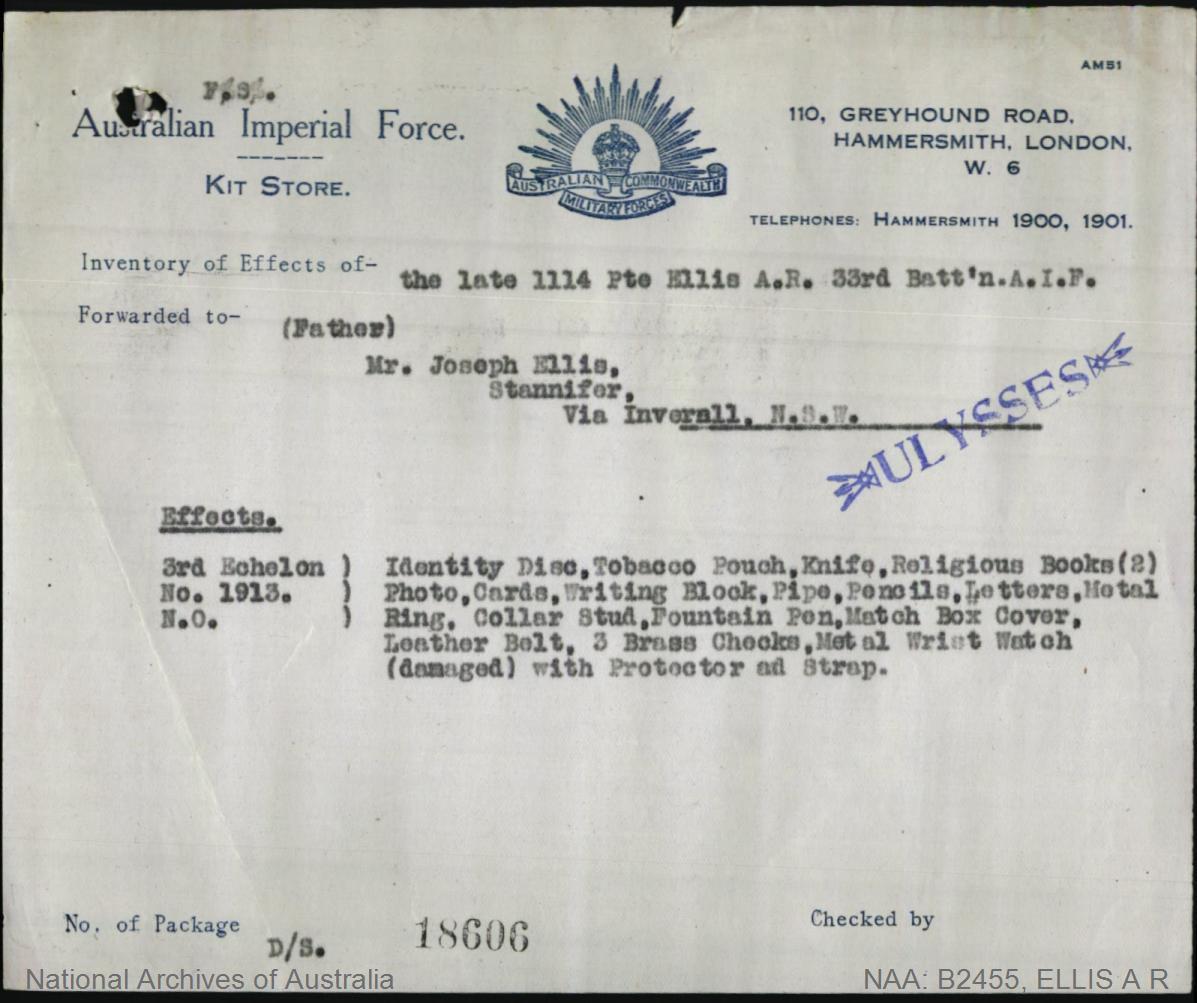

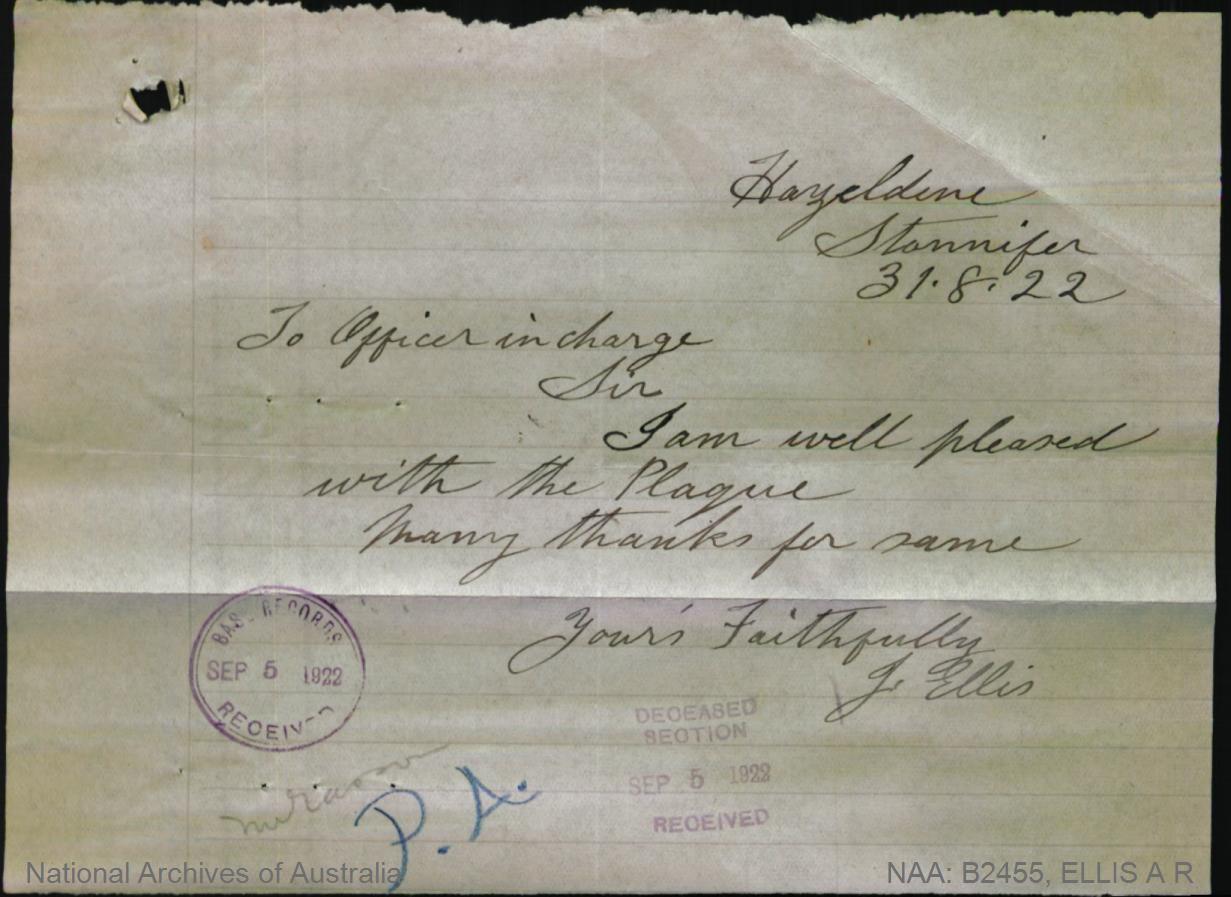

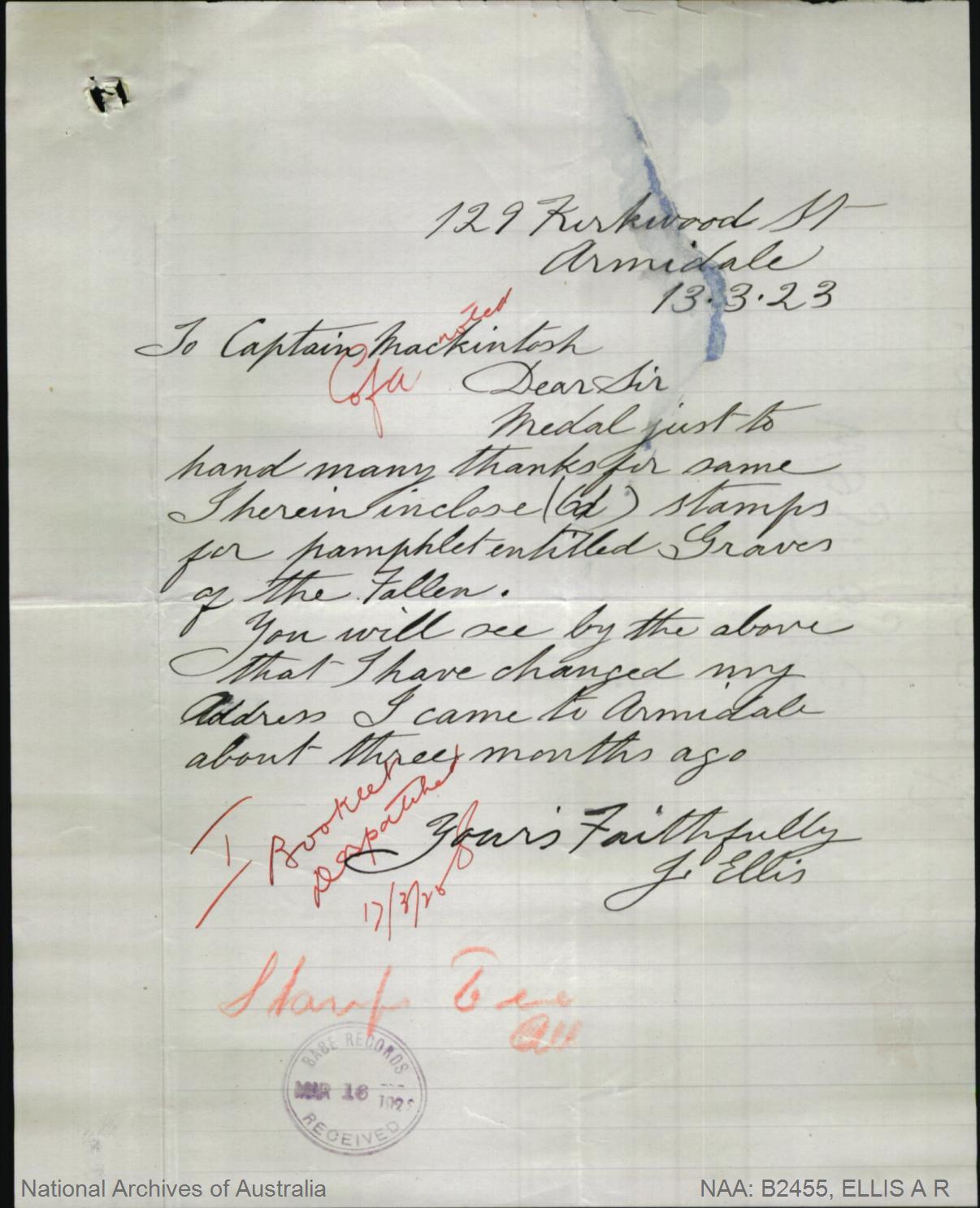

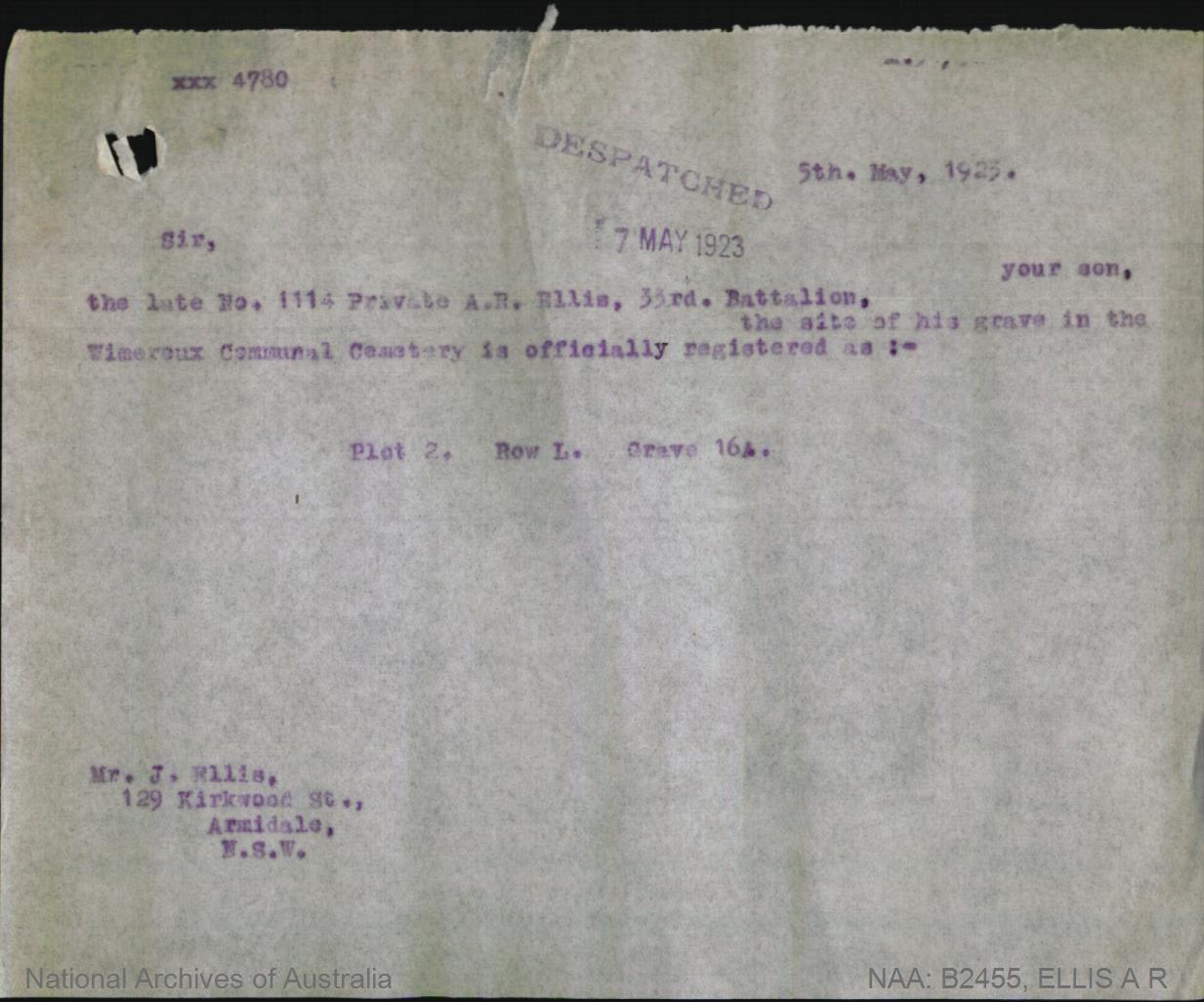

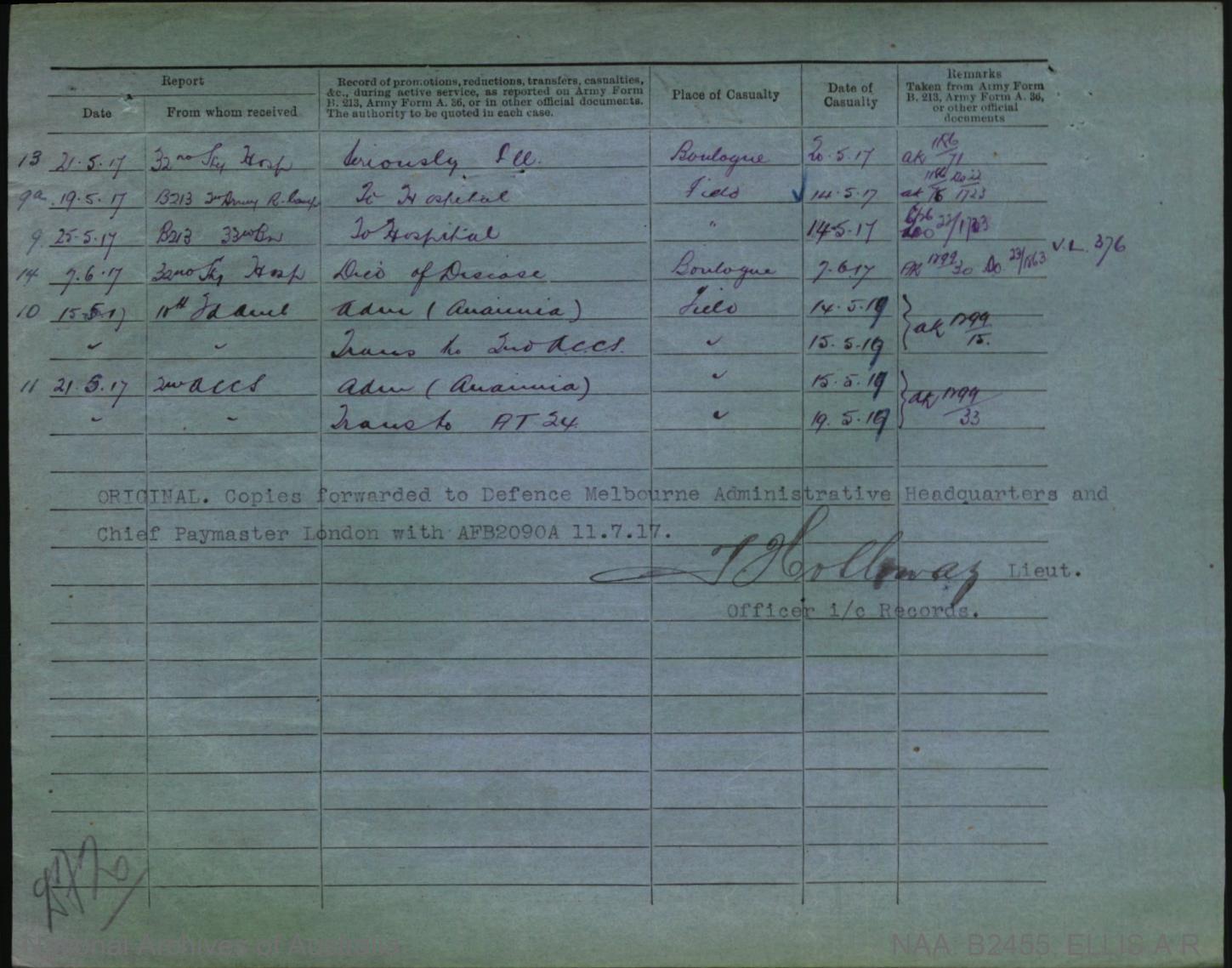

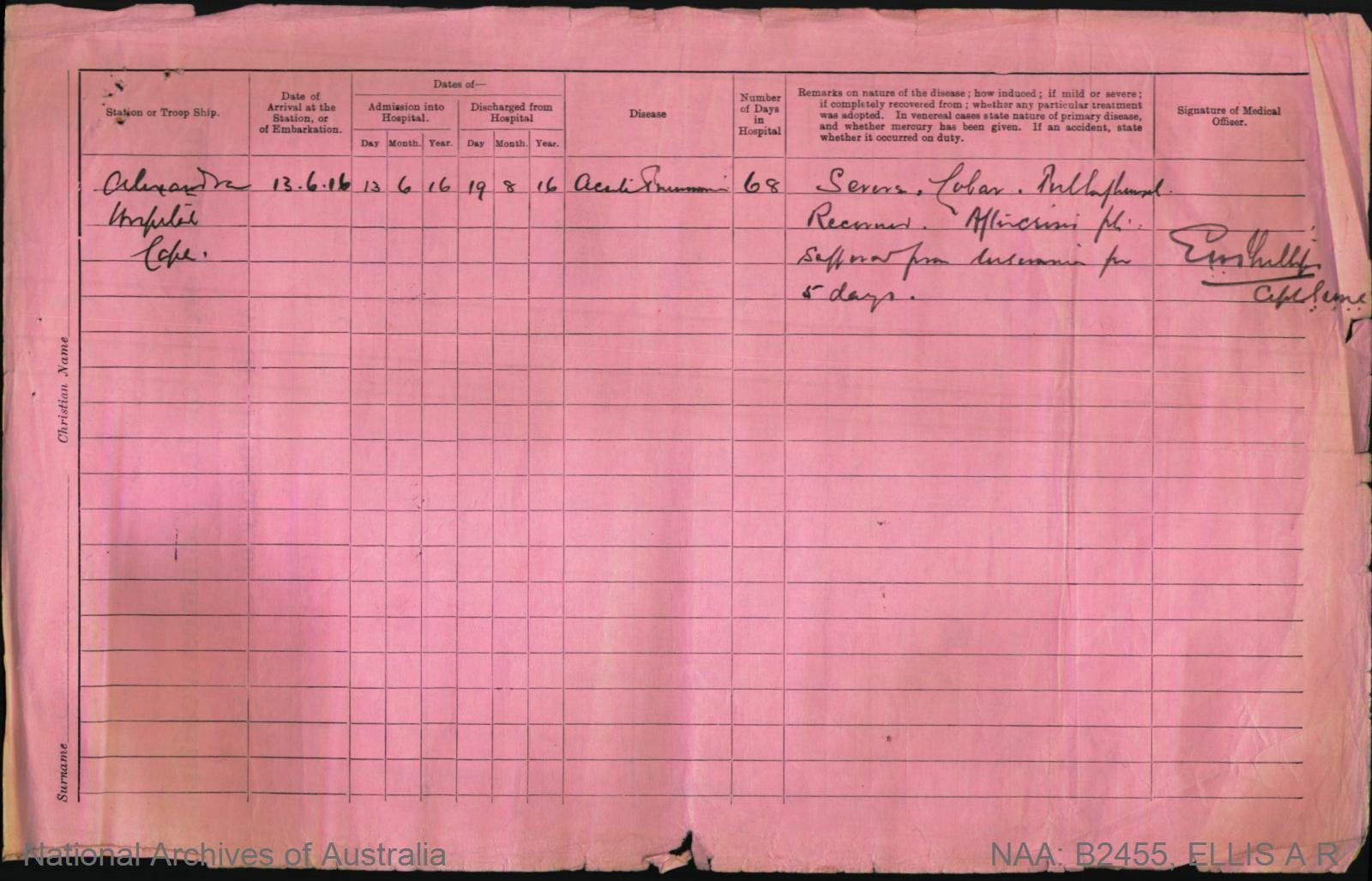
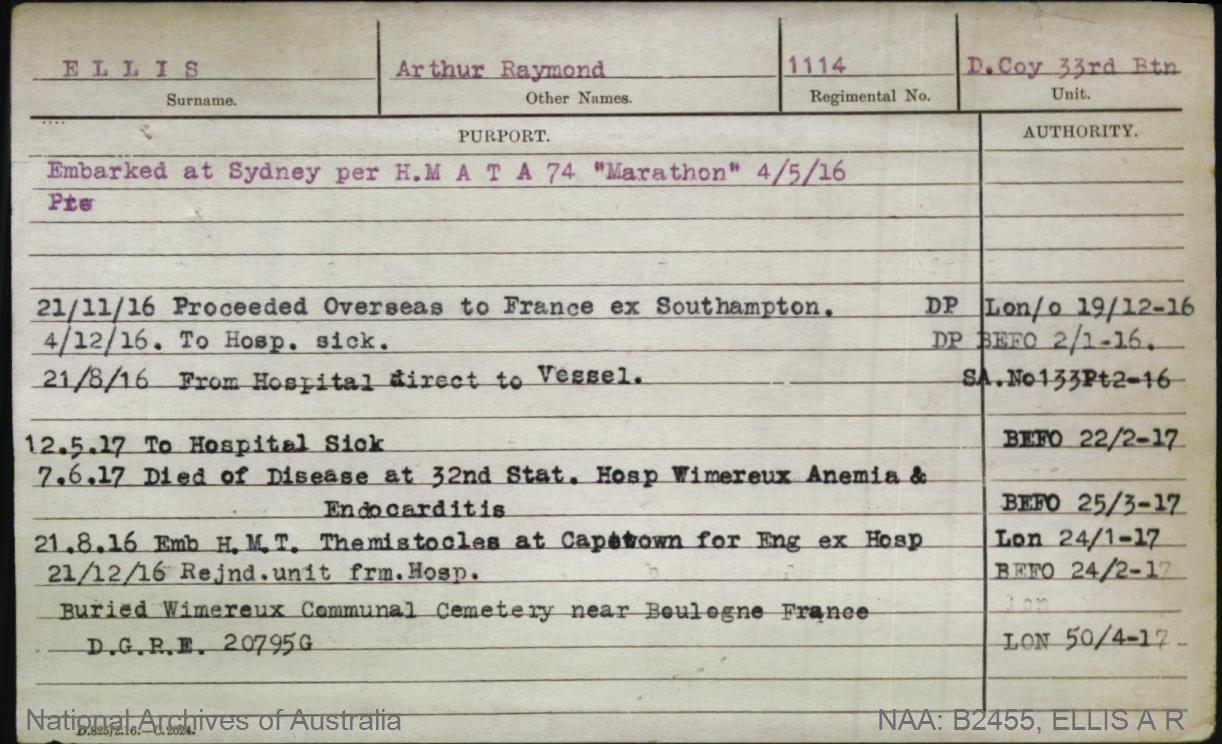

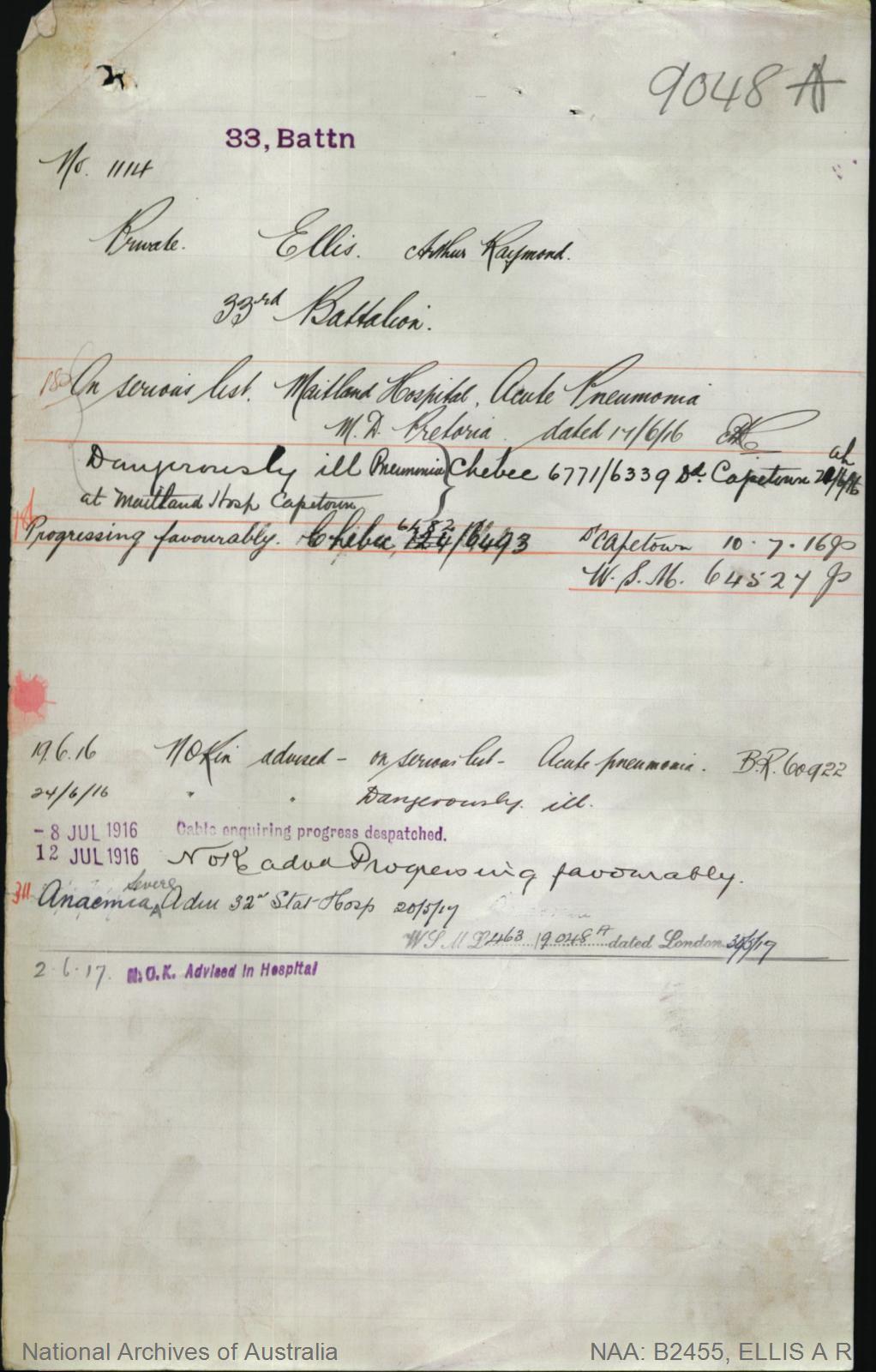


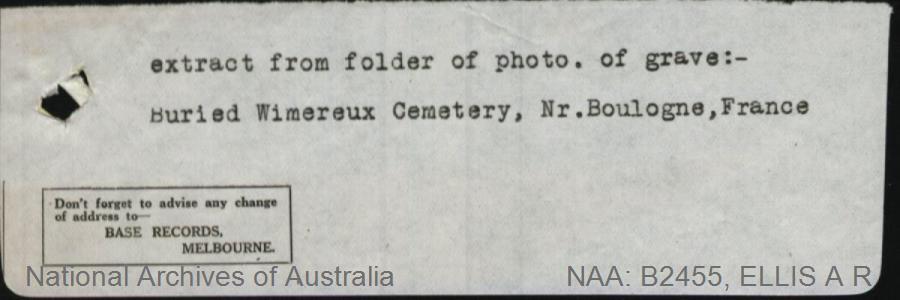


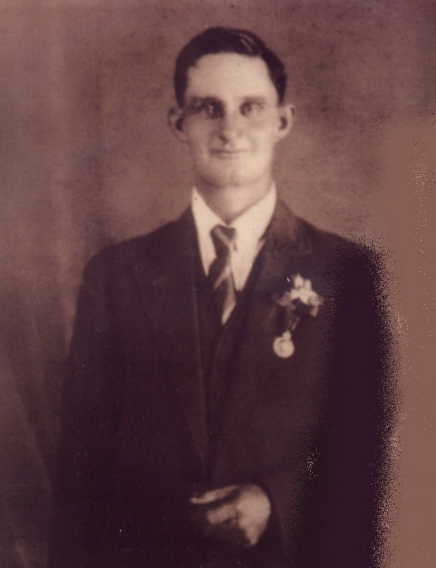
 S.S. "MONA QUEEN"
S.S. "MONA QUEEN"

